- Czech Republic
- Budapest, Hungary
- Amsterdam, Netherlands
- Switzerland
- Complete Japan Travel Guide
- Kanto Region (Tokyo, Hakone)
- Kansai Region (Osaka, Kyoto)
- Kansai Wide (Wakayama)
- Chugoku Region (Hiroshima)
- Chubu Japan
- Hokkaido Japan
- Kyushu Japan
- Jeju Island, South Korea
- KLOOK Promo Code & Voucher (2024 April)
- Agoda Promo Code
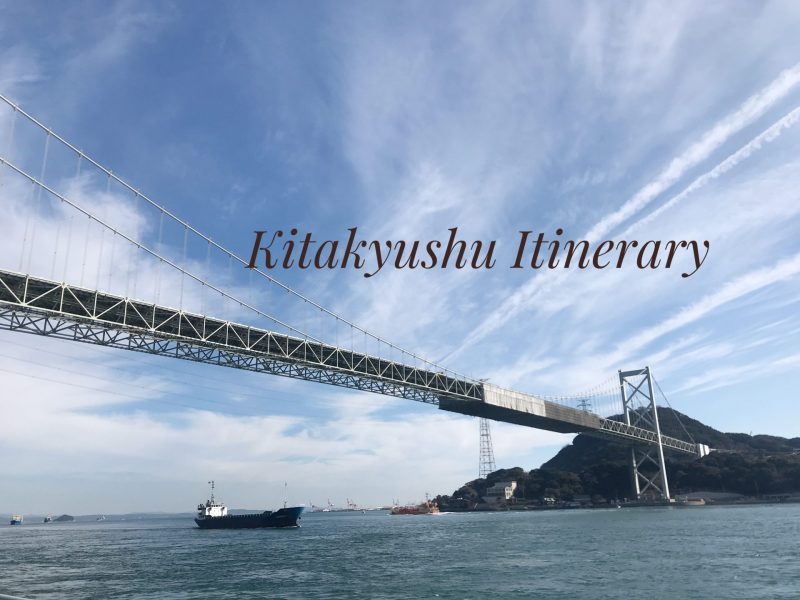

Kitakyushu Itinerary: Travel Guide To Shimonoseki, Mojiko, Kokura
Last updated on April 27th, 2024
Read on how we planned on Kitakyushu itinerary to Mojiko, Kokura, and Shimonoseki within one day. A day trip from Fukuoka that full of mouthwatering food, historical monuments, and fun experience.
Kitakyushu (北九州) is located in the northernmost city in Kyushu. It was formed by the merging of five independent cities, namely, Kokura, Moji, Yahata, Tobata, and Wakamatsu. Kitakyushu is an important hub for international trade since the Meiji period and connected between Honshu and Kyushu. Thanks to the well-connected rail system in Japan, it is very ideal to plan for the Kitakyushu itinerary from Fukuoka to Mojiko and Kokura by using the JR train. You can even further your visit to Shimonoseki at Honshu Island with a short journey of ferry or bus.
In below Kitakyushu travel guide blog, let us explore the Kyushu’s hidden gem to Mojiko, Kokura, and Shimonoseki with an easy day trip from Fukuoka.
Table of Contents
Planning On Kitakyushu Itinerary
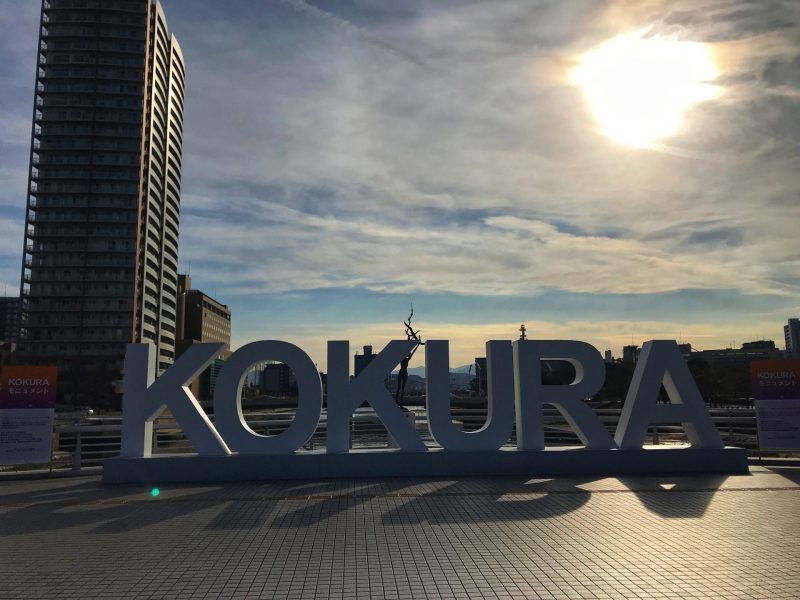
During our visit to Fukuoka, we headed Kitakyushu to Mojiko, Kokura, and Shimonoseki for a day trip . It was a fun Kitakyushu itinerary full of interesting places and mouthwatering food to eat within one day. Although we took various transport within one day, it is superbly easy to plan for one day Kitakyushu itinerary.
Kitakyushu itinerary (What To Do and Eat in Kitakyushu) :
- Seafood Feast in Karato Market, Shimonoseki.
- Walk across the Kanmon Underwater Pedestrian Tunnel
Wandering at Mojiko Retro
Taste the yaki curry in mojiko, visit kokura castle.
- Food hunting in Tanga Ichiba Market
- Flower Tunnel at Kawachi Wisteria Garden (Seasonal Trip)
Make sure to follow us to tour around in this Kitakyushu travel guide blog that full of scrumptious local delicacies, historical monuments building, and exciting activities.
From Fukuoka To Karato Market
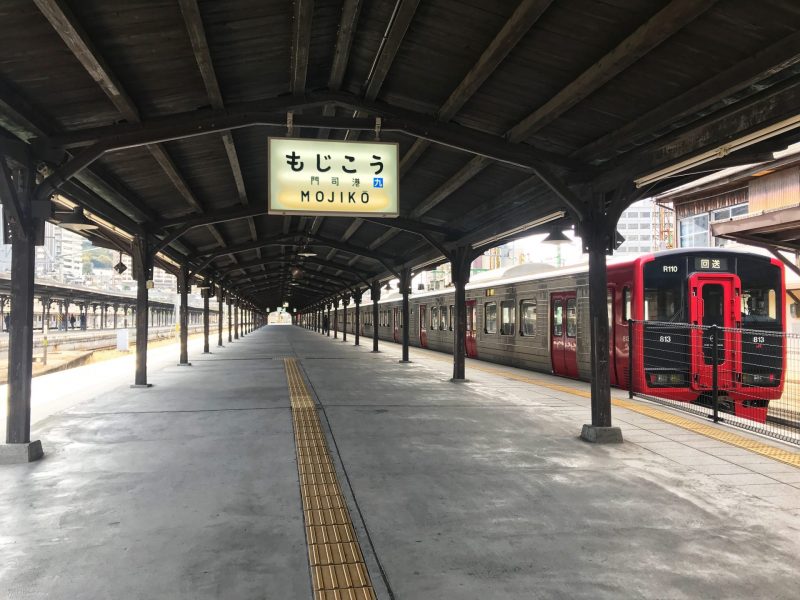
From Hakata Station (Fukuoka), we boarded the express train to Mojiko Station with one transfer at Kokura Station. The train ride took about 50 minutes and covered under JR Kyushu Pass .
Do note that shinkansen rides between Hakata station and Kokura are not covered by the JR Kyushu Pass.
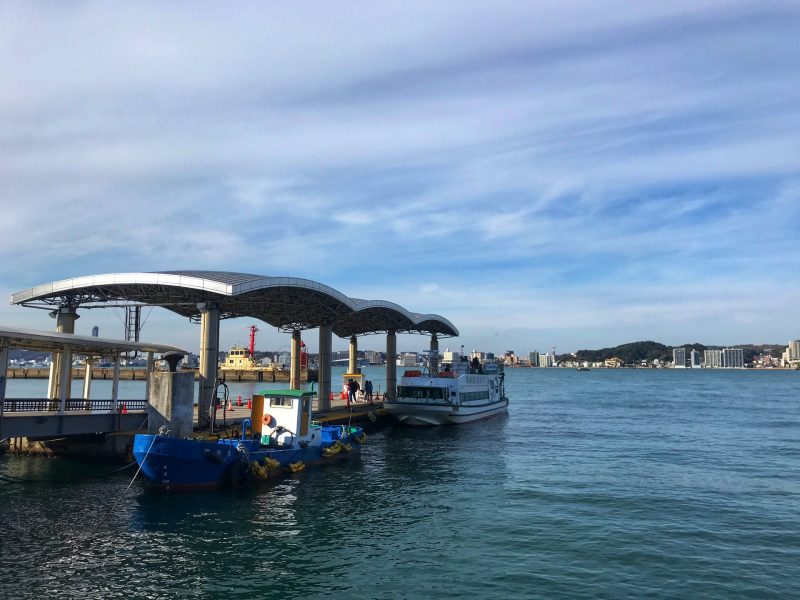
Next, from Mojiko Station, we then continued by taking a ferry to across to Shimonoseki from Moji Ferry Terminal. The Kanmon Kisen Ferry Terminal (関門汽船 門司港乗り場) is located just opposite the Mojiko Station within 3 minutes walk. You can easily spot it when getting out of the Mojiko Station.
The ferry ride cost ¥400 per person for the short 5 minutes ride. It was a short journey of ferry ride with a beautiful view on Japan sea across the Kanmon Straits.
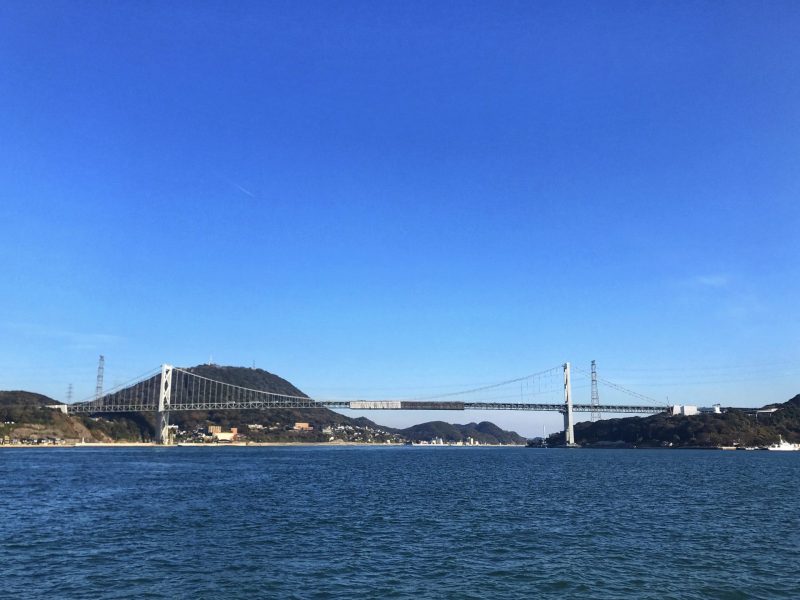
The ferry ride cost ¥400 per person for the short 5 minutes ride. It was a short journey of ferry ride with beautiful view on Japan sea across the Kanmon Straits.
Seafood Feast in Karato Market
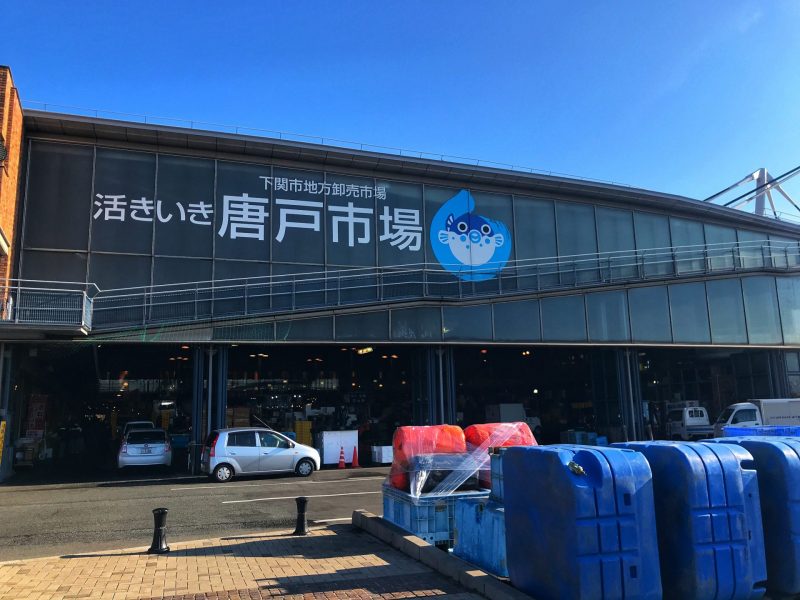
Our first destination was Karato Market (唐戸市場) . Located in Shimonoseki of Yamaguchi Prefecture, Karato Market is a lively fresh market and popular among locals. It is well known for freshly caught seafood especially the extraordinary Japan blowfish (fugu). The best place to try the fresh blowfish/pufferfish.
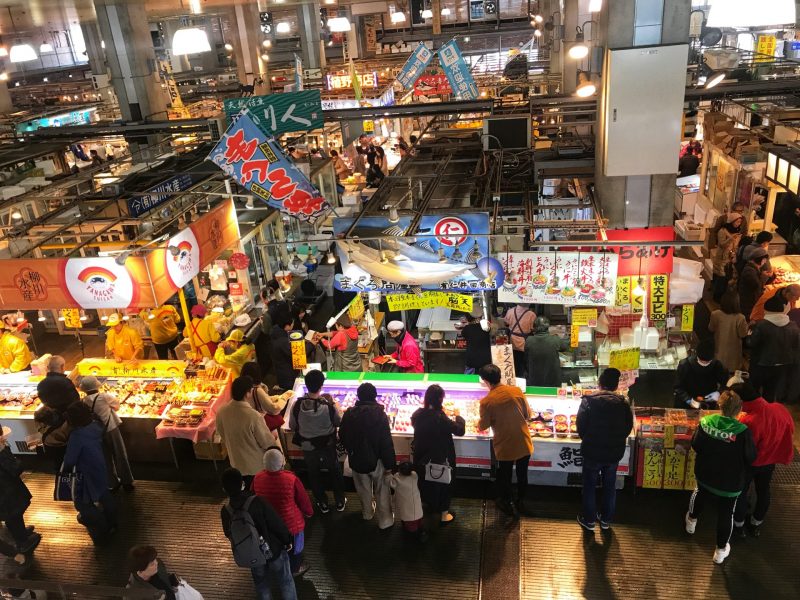
Moreover, Karato Market will host a sushi battle event during Friday, Saturday, Sunday and Japan public holidays. During that time, many fish stalls will participate in the event by selling various raw and cooked seafood dishes.
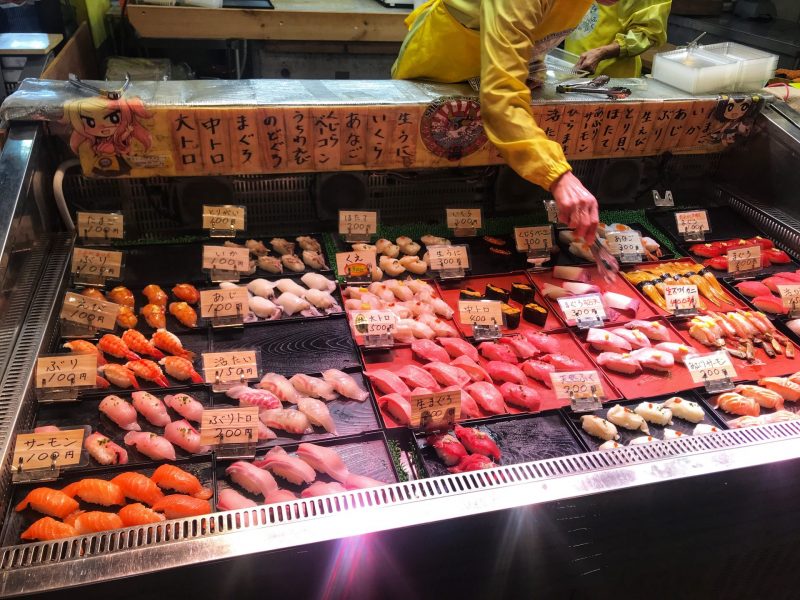
Mouthwatering sushi, raw sashimi, seafood don, fried food at an unbeatable price. The nigiri sushi was started from as low as ¥100 with a generous portion of sashimi on top. It is also the best place to try the expensive fugu fish in the Karato market. A fugu fish meal in Tokyo and Osaka can easily cost more than ¥3,000 and above. Can’t believe we manage to try on it with ¥800 at the Karato market. What a good bargain!
Generous Portion of Seafood in Cheap Price
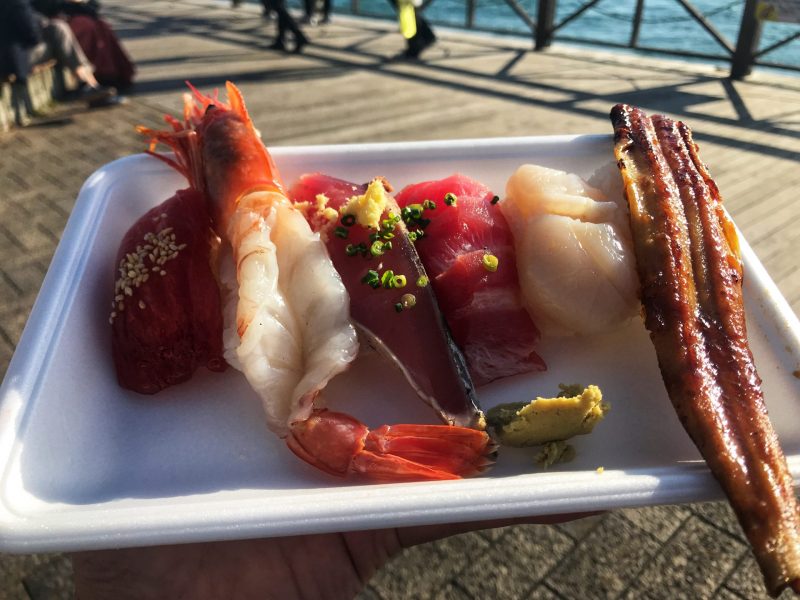
We enjoyed our time wandering around in Karato Market and choosing on our breakfast. All the sushi were so fresh and big portion. We also tried the fugu sashimi and soup here. It was truly a seafood feast in Karato Market. Highly recommended seafood lover heading to Karato Market during the weekend to join the sushi battle event. It can be crowded with locals and tourists. Come early to grab your seafood meal at Karato Market.
Further Read More : Karato Market: Sushi Battle Event in Shimonoseki
Besides, if you are unable to make it during the weekend, there are restaurants located on the second floor serving the seafood meal.
Getting to Karato Market :
- Take the JR Express train from Hakata Station (Fukuoka) to Mojiko with a one-time transfer in Kokura Station. Free with JR Kyushu Pass. Next, board the 5 minutes ferry ride from Moji to Shimonoseki Ferry Terminal.
Walk Across The Kanmon Underwater Pedestrian Tunnel
After the wonderful seafood feast, we proceeded with our Kitakyushu itinerary at Shimonoseki. You can choose to board the ferry back to Mojiko retro and spend your time there. But we decided to walk across the Kanmon Underwater Pedestrian Tunnel which connected between Mojiko at Kyushu and Shimonoseki at Honshu island.
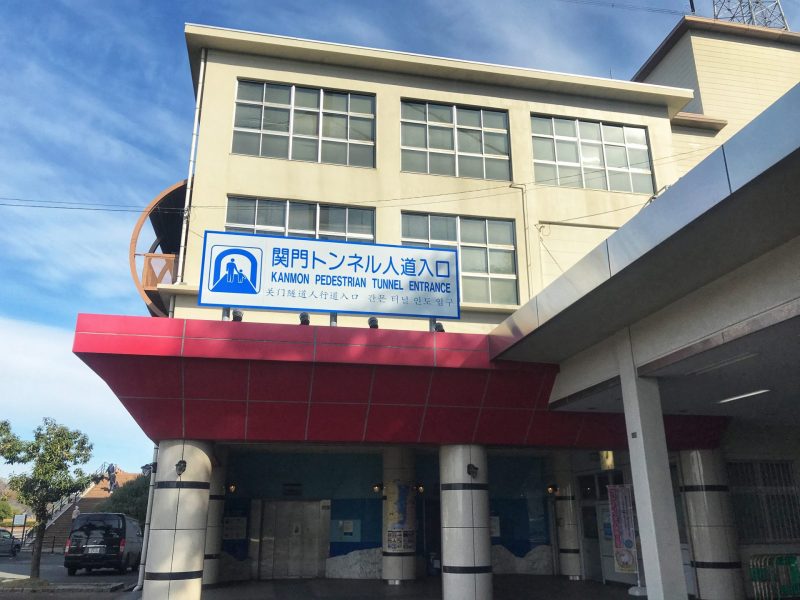
Kanmon Pedestrian Tunnel is the first Japan undersea tunnel that goes underneath the Kanmon Straits with a length of 780 meters. The upper level is used for cars but the lower level is used for bikes, bicycles, and pedestrians.
There are clear instructions on how to walk across the Kanmon Underwater Pedestrian Tunnel at the entrance.
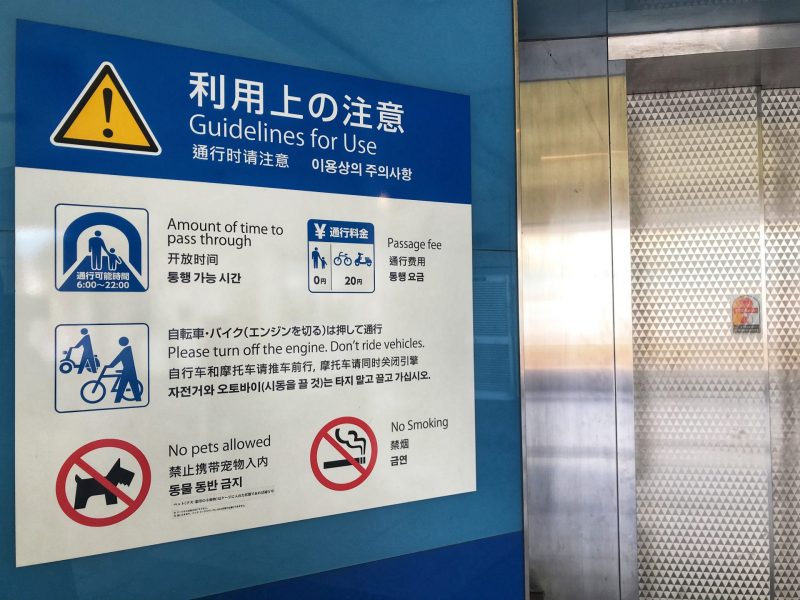
Took the elevator down to 60 meters underground of the pedestrian tunnel walkway. Passing through the Kanmon Tunnel by foot is free of charge but you need to pay for ¥20 for bike and bicycles. Take note that you can’t ride the bike or bicycles, and need to push it along the walkway.
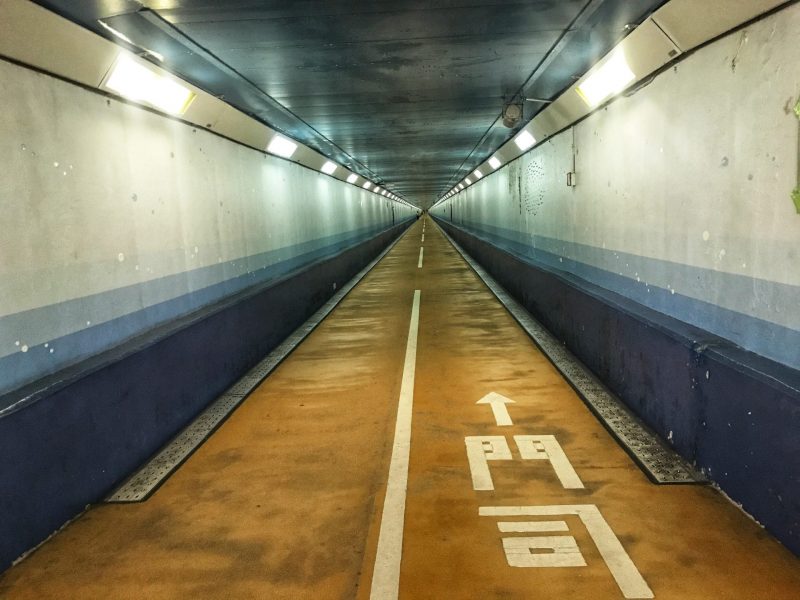
There was no much people during our visit with locals were jogging along the Kanmon tunnel. Think it is fun experience jogging in the underwater walkway every day.
The Border Point Between Kyushu and Honshu
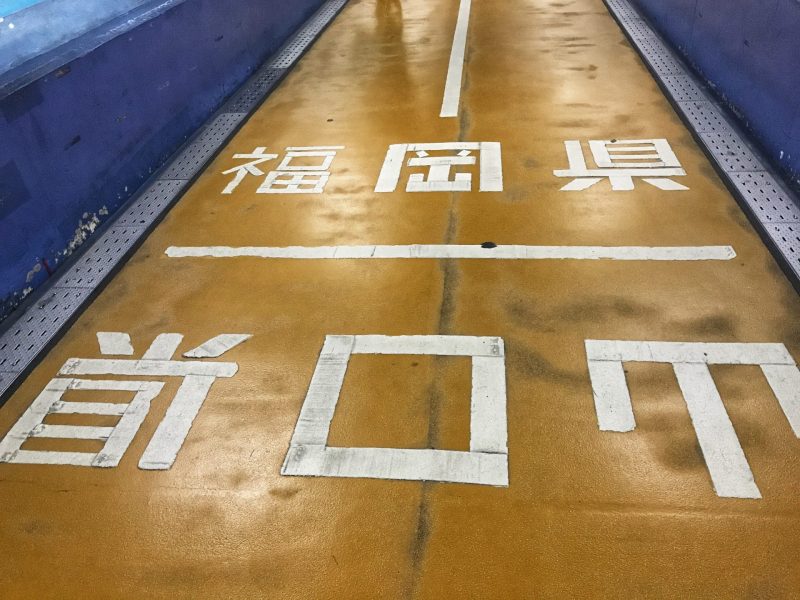
The border point between Fukuoka Prefecture, Kyushu and Yamaguchi Prefecture, Honshu. People standing on the border to take some photos.
The whole journey took us less than 30 minutes to walk across the Kanmon Underwater Pedestrian walkway. Not a bad idea walking across the two Japan’s islands with an underwater tunnel.
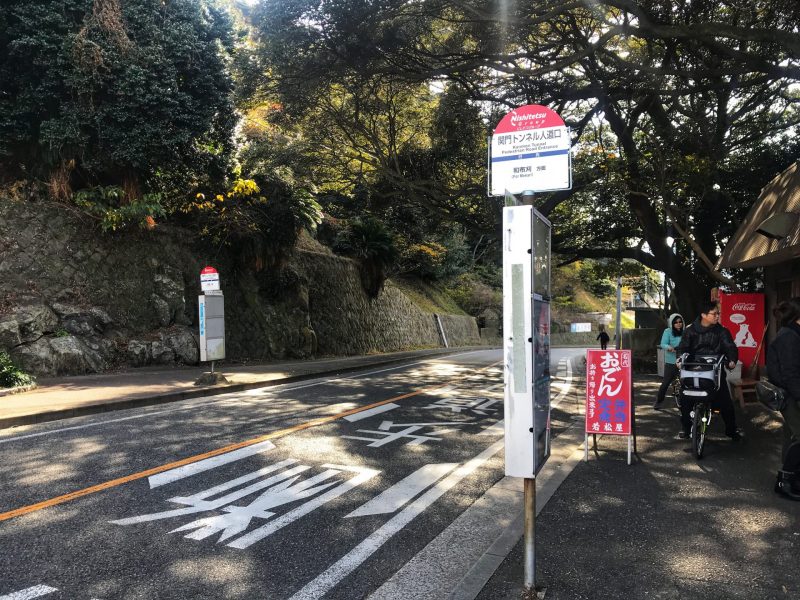
Getting there : Both sides of Kanmon Pedestrian can be accessed by bus from JR Mojiko and Shimonoseki station. Just get off at Jindō-guchi (関門トンネル人道口) at Mojiko side entrance or Mimosusogawa (御裳川) at Shimonoseki entrance.
Alternatively, both entrance is walkable with about 20 to 30 minutes on foot.
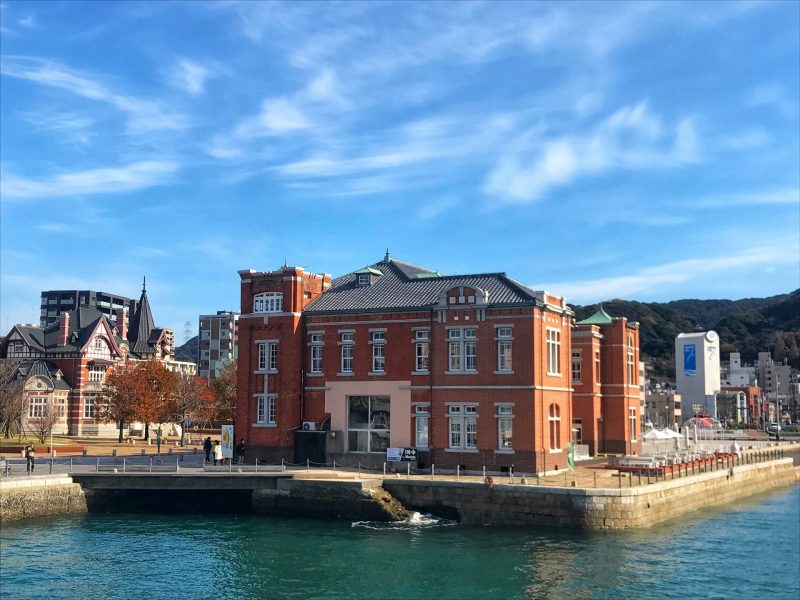
We next back to Moji in Kitakyushu, a port city that facing the Kanmon strait in Fukuoka prefecture. Mojiko or Moji Port has been prominent as an international trading port since the late 19th date. So there are several number of well-preserved old Western-style building near the port area. It is very ideal to spend some time in Mojiko Retro to experience the nostalgic atmosphere of old Japan.
Mojiko Station
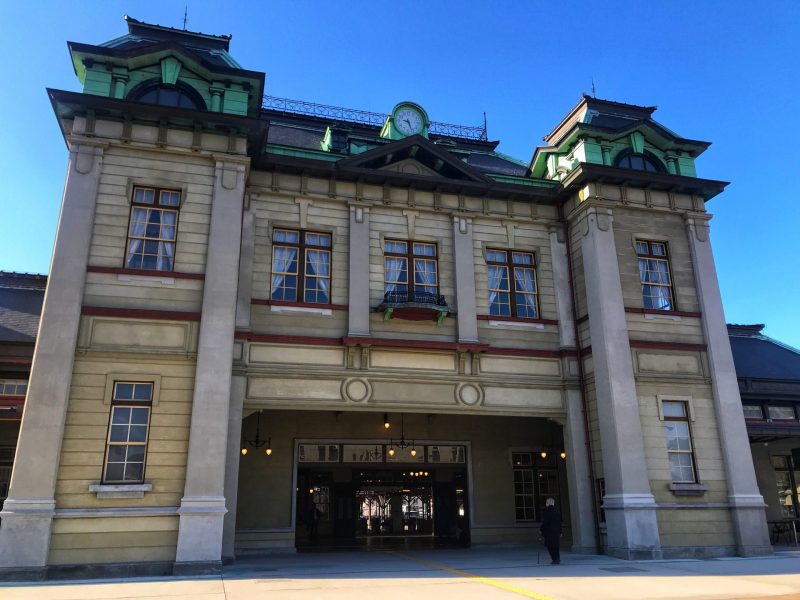
Build-in 1891, Mojiko Station is one of the few remaining wooden stations in Japan. The building is the perfect example of Western influence in Japan with Neo-Renaissance style appearance. Some of the historical facilities are still well kept at its original appearance.
Kitakyushu International Friendship Memorial Library
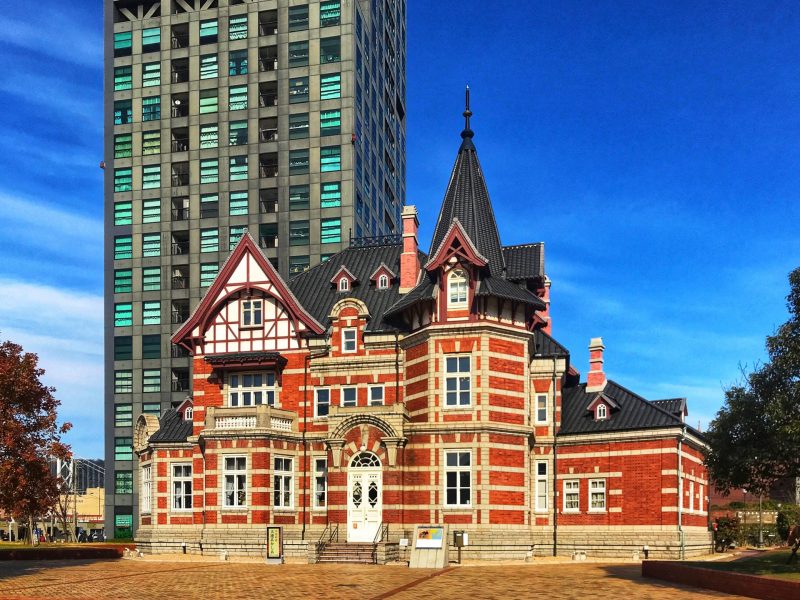
The Kitakyushu International Friendship Memorial Library is probably the prettiest and most photogenic building in Mojiko Retro Town. It is the memorial building between Moji and Dalian, China. Standing alone in the Mojiko Retro Central Square, the building can be viewed and admired from many directions and it is a building that looks equally good when viewed on any facade.
Former Moji Customs Building
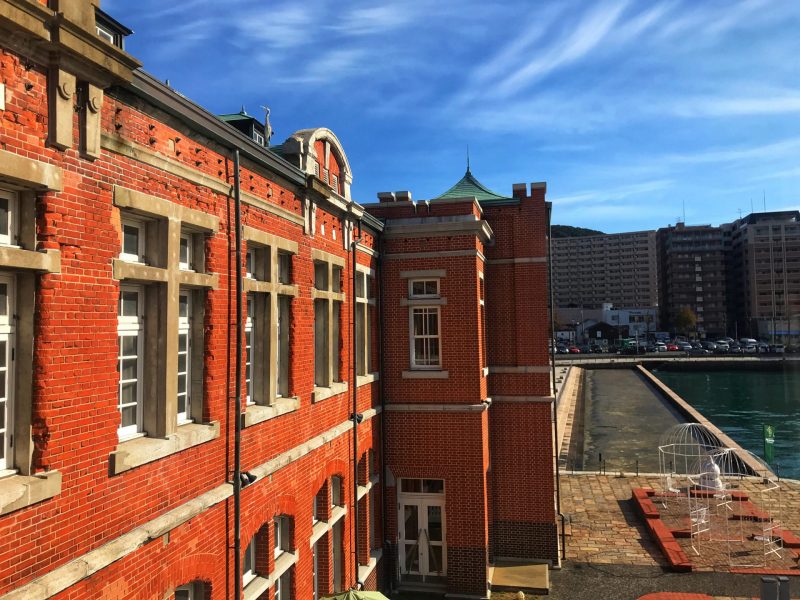
Another worth recommended building is the eye-catching red brick building. It is the former Moji Customs Building up until 1920. Now it is the house of art gallery and rest area for visitors with free to enter.
Blue Wing Moji Bridge
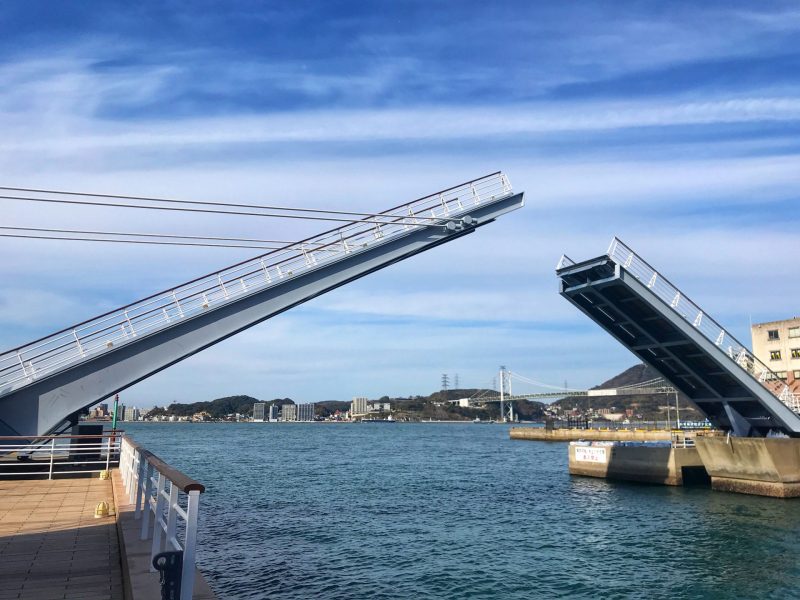
Walked along the promenade by the sea and you will see the Blue Wing Moji Bridge. This pedestrian-only bridge will be raised several times per day from 10:00 to 16:00 for about 20 minutes to let the boats passing it.
Bridges raised: 10:00, 11:00, 13:00, 14:00, 15:00 and 16:00 Bridges lowered: 10:20, 11:20, 13:20, 14:20, 15:20 and 16:20
Getting to Mojiko Retro : 2 minutes walk from JR Mojiko Station.
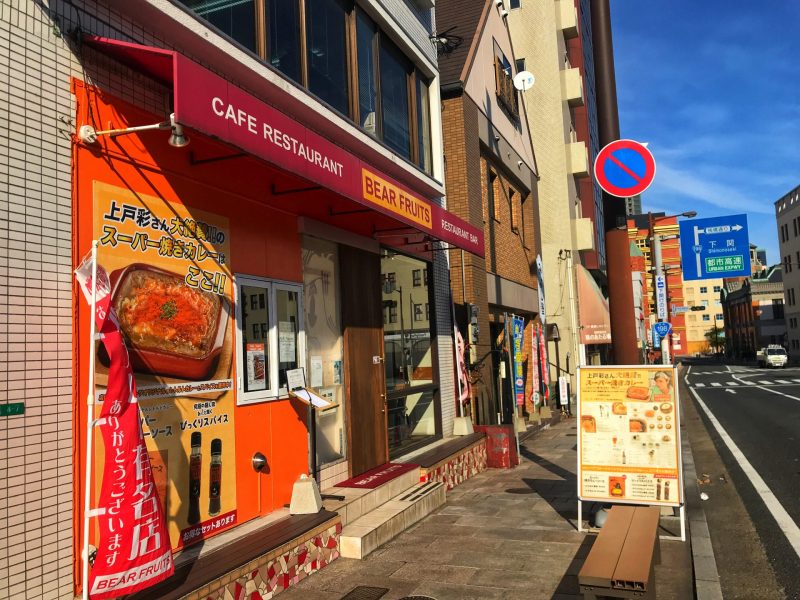
What To Eat in Mojiko : If the seafood feast in Karato Market does not satisfy your stomach, please don’t hesitate to try the yaki curry in Mojiko. It is the popular local delicacy and must-try food in Mojiko. The yaki curry is baked curry topped with cheese and eggs on rice.
Bear Fruit is the most well-known yaki curry restaurant, located nearby the JR Mojiko Station. The aroma of curry together with yummy cheese and eggs truly heaven. Very popular among locals and queues can be long during lunch hours.
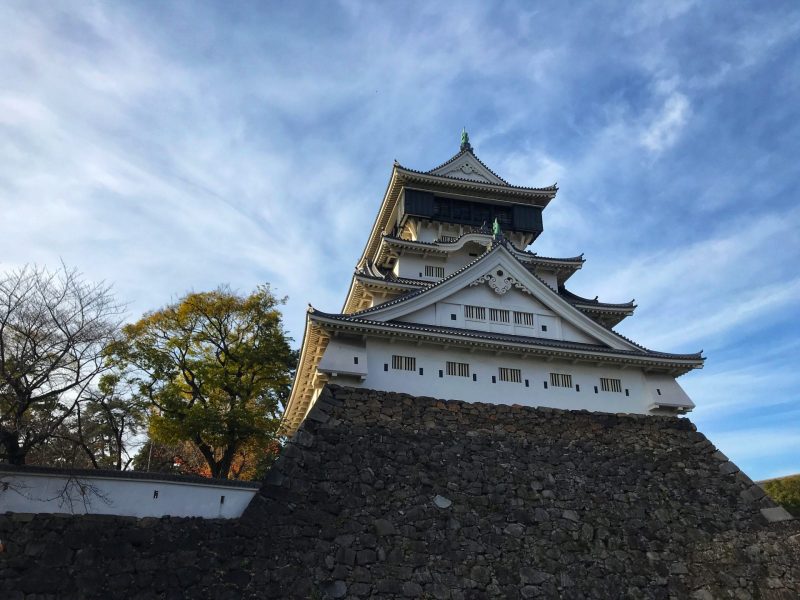
After spending time Mojiko Retro, we proceed to Kokura with a short journey of the train ride. The Kokura Castle (小倉城) is one of the well-known castles and landmarks in Kitakyushu. Build-in year 1602, the construction of Kokura Castle took about 7 years to complete. Kokura Castle is the only castle in Fukuoka prefecture.
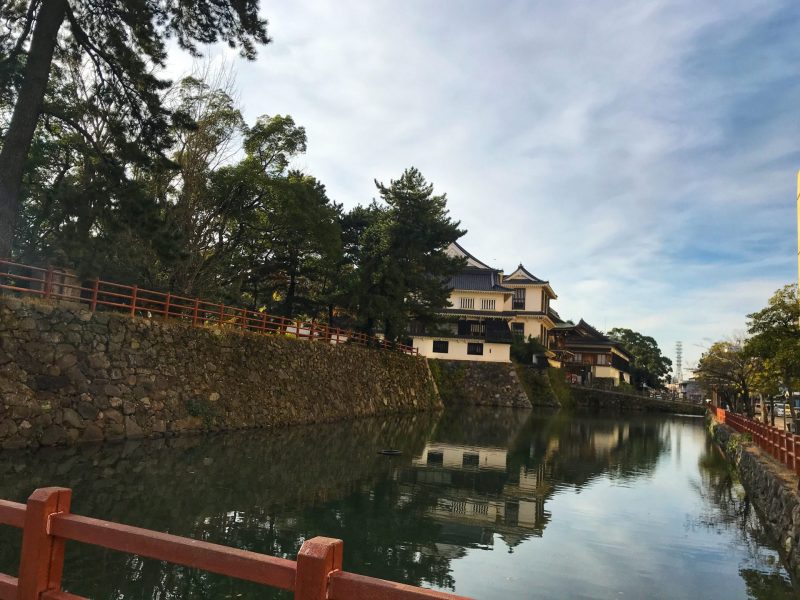
Although it is not the Premier Castle and might not as grand as Kumamoto castle, it is still worth to spend some time to view on the traditional architecture. This area is also one of the popular sakura viewing spots in Kyushu.
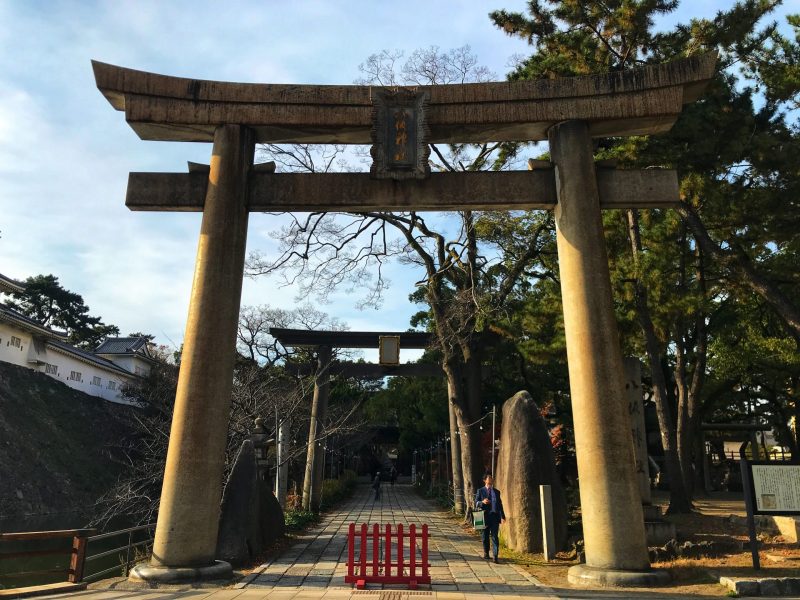
The entrance fee cost ¥350. But we choose not to went up to Kokura Castle and took a short visit to the castle ground with free.
Kokura Castle
- Opening Hours: 9:00-18:00 (April to October) and 9:00-17:00 (November to March)
- Entrance Fee: ¥350 for adult and ¥250 for junior and high school student
- Address: 2-1 Jōnai, Kokurakita-ku, Kitakyūshū-shi, Fukuoka-ken 803-0813, Japan
Getting There : 15 to 20 minutes walk from JR Kokura Station.
Food Hunting in Tanga Ichiba Market
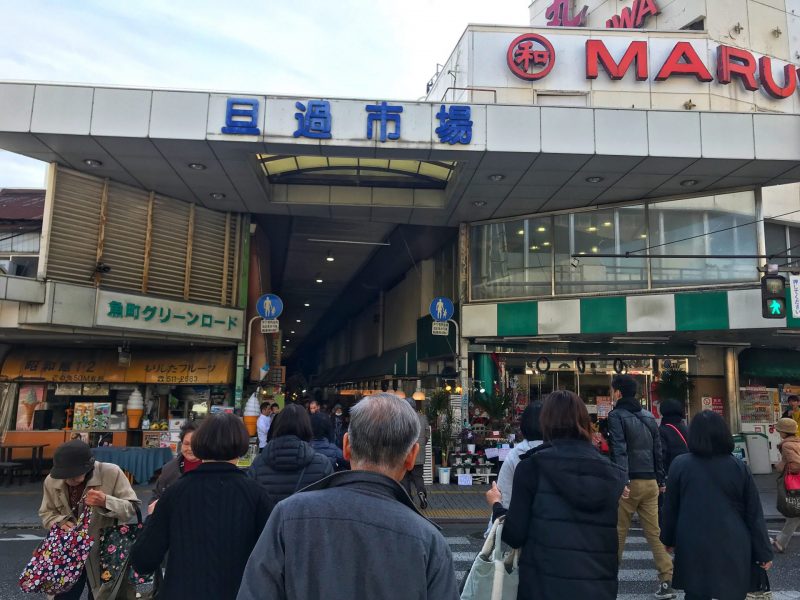
Lastly, we walked to the nearby Tanga Ichiba Market (旦過市場) , the kitchen of Kitakyushu. There are about 120 stalls lined in the narrow little street in Kokura. Locals come to Tanga Ichiban market to get their daily fresh local produce such as seafood, vegetables, fruits and also food.
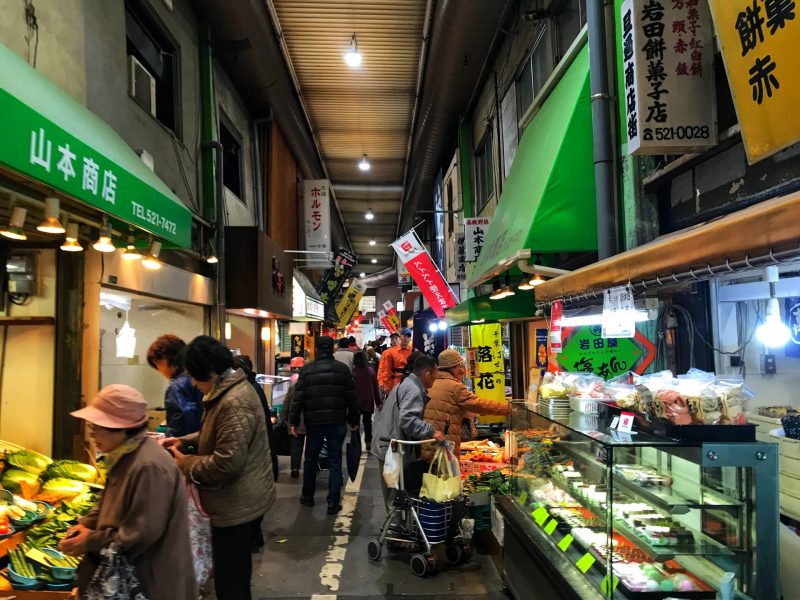
In recent years, the Tanga Ichiba market caught people’s attractions by its Daigaku don, a type of rice bowl that unique in Kitakyushu. Visitors can buy a bowl of rice at ¥200, Daigaku don from Daigakudo (大學堂) which located in the middle street of the market.
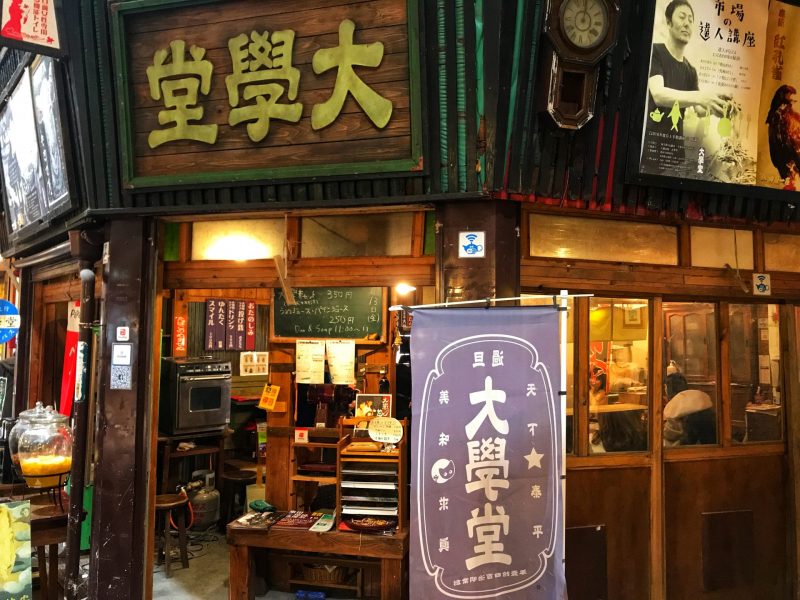
Next, you can stroll along the Tanga Ichiba market, buy the food you want to top on your rice, return to Daigakudo and enjoy it.
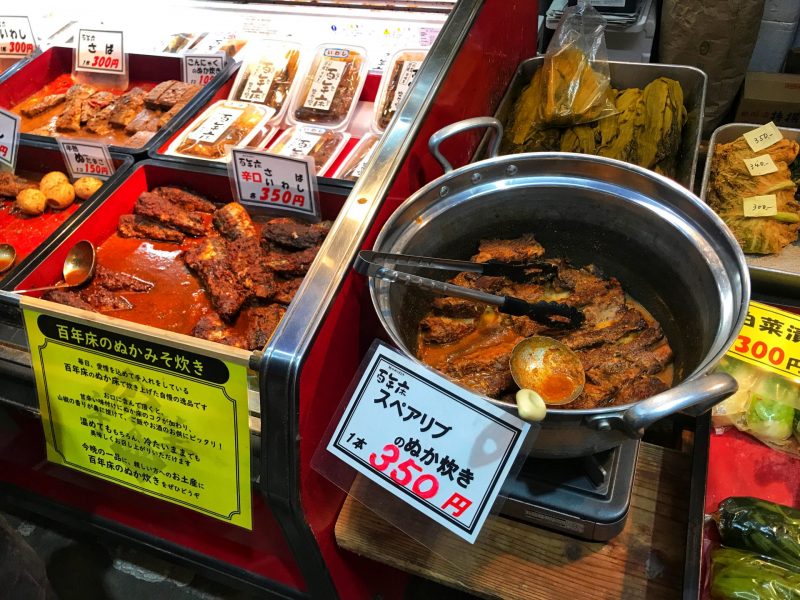
There are a wide variety of local specialties and food to top into your Daigaku don. For example, karashi mentaiko (spicy salted roe), nukadaki (fish simmered in miso), sashimi, yakitori and many more. Create your version of Daigaku don is a fun experience in your Kitakyushu itinerary.
Kokura Tanga Ichiba Market
- Opening Hours: Daily 10:00-18:00
- Address: 4 Chome-2-18 Uomachi, Kokurakita Ward, Kitakyushu, Fukuoka 802-0006, Japan
Getting there : 10 minutes walk from JR Kokura Station. You can choose to visit Tango Ichiba Market before or after the Kokura Castle.
Flower Tunnel at Kawachi Wisteria Garden
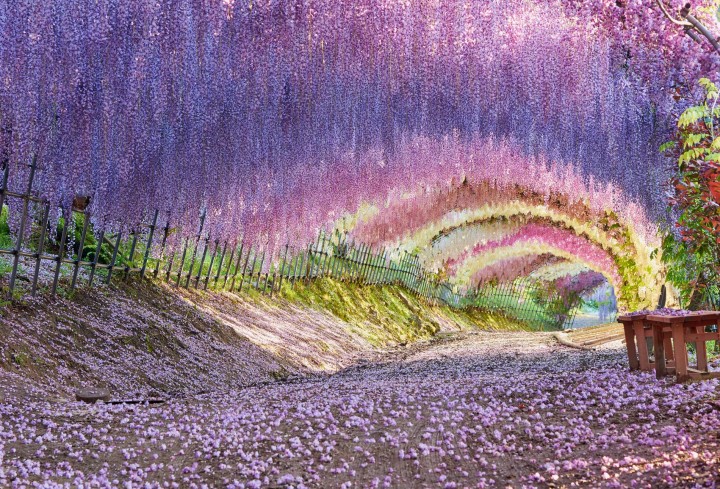
Another worth recommended when planning on Kitakyushu itinerary is the flower tunnel at Kawachi Wisteria Garden. It is rated as 10 Beautiful Places in the World That Exist and on the list of Japan’s 31 Most Beautiful Places broadcasted by American CNN in the year 2015.
The Kawachi Wisteria Garden is extremely amazing with beautiful wisteria trellis welcoming visitors started from mid-April to mid-May. However, due to the overwhelming of visitors, advanced reservation is required to visit Kawachi Wisteria Garden in peak season.
Take note that there are no public transport and shuttle to get to the Kawachi Wisteria Garden. The only option to get there is by taxi with one way of taxi ride cost about ¥3,000. Alternatively, consider getting the rental car from RentalCars.com to visit the Kawachi Wisteria Garden leisurely.
For more detail please check on the official website: https://kawachi-fujien.com/ .
Overview: 1-Day Kitakyushu Itinerary
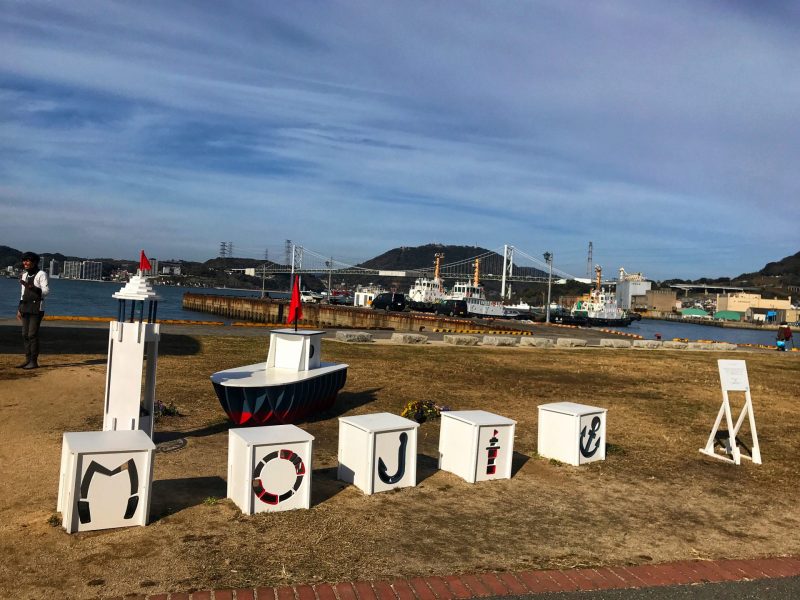
All in all, we spend about 5 to 6 hours in this one day Kitakyushu itinerary. The Kitakyushu is truly a unique cultural and historical places in Japan. It might not full of WOW attractions and must-visit on your Kitakyushu trip. But we enjoyed our visit to Kitakyushu and spend time wandering in the old Japanese cities. An easy day trip from Fukuoka to Shimonoseki, Mojiko, Kokura.
Here is the quick summary of various of transportation on above Kitakyushu itinerary:
- From Hakata Station (Fukuoka) to Mojiko Station with JR express train with a one-time transfer required at Kokura. Free with JR Kyushu Pass .
- From Moji Ferry Terminal, board the ferry to across Kanmon strait to Karato Market in Shimonoseki. One ride of ferry cost ¥400 per adult.
- Take a bus or walk to Kanmon Underwater Pedestrian Tunnel.
- From Mojiko Station to Kokura Station by JR express train.
Lastly, hopefully, our Kitakyushu travel blog is helpful. Free feel to contact us if you need further help with planning on your Kitakyushu itinerary. Happy travel to Kitakyushu, Mojiko, Kokura, and Shimonoseki.
Planning on a trip to Fukuoka? The following posts provide more in-depth information about Fukuoka travel. Including transportation, foodie guide, travel tips and tours in Fukuoka. Be sure to check out our travel guide below if you are looking for little inspiration.
- Fukuoka Itinerary: Ultimate Travel Guide
- Where To Stay in Fukuoka: Hakata or Tenjin
- Fukuoka Food Guide: Best Must Eat Food in Fukuoka
- From Fukuoka Airport To City, Explained
You Might Interested:
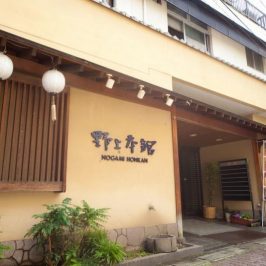
Nogami Honkan Ryokan: Beppu Best Budget Stay
We stayed in Nogami Honkan Ryokan during my trip to Beppu and really enjoy it. Read...
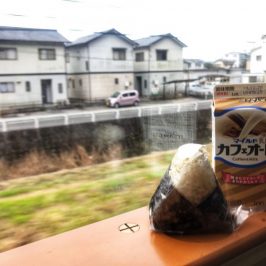
Best Fukuoka Breakfast: Where To Eat Breakfast in Fukuoka
Here are the top recommendations best Fukuoka breakfast places to let you try on to...
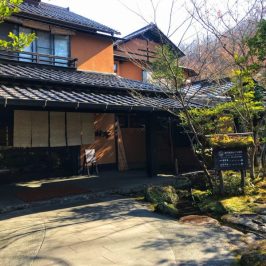
Yamamizuki Ryokan Onsen Hopping: Access and Review
Enjoy the tranquil outdoor bath is must try in Kurokawa onsen. We had onsen hopping...
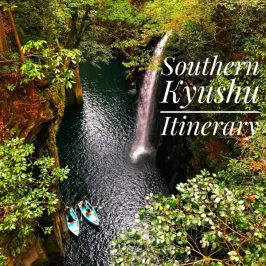
Kyushu SunQ Pass Itinerary: From North to South By Bus
Having spend an amazing time to Kumamoto, Aso, Kurokawa onsen, Takachiho gorge and more. My...
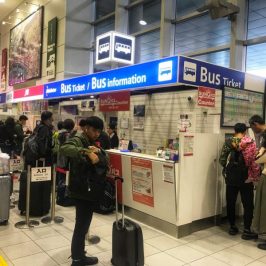
From Fukuoka Airport To Kumamoto by Bus, Explained
Read on to find out how to get to Kumamoto from Fukuoka Airport by highway...
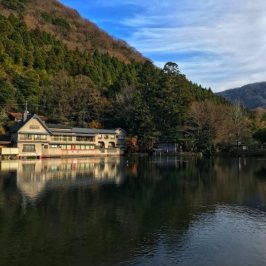
Yufuin Itinerary: What To Do in Yufuin in One Day
Heading to Yufuin but wondering what should do and eat? Join us on the Yufuin...

3-Day Kitakyushu Itinerary
Navigate forward to interact with the calendar and select a date. Press the question mark key to get the keyboard shortcuts for changing dates.
Navigate backward to interact with the calendar and select a date. Press the question mark key to get the keyboard shortcuts for changing dates.
- Kitakyushu in 3 days
- 1-Day Kitakyushu Itinerary
- 2-Day Kitakyushu Itinerary
- 4-Day Kitakyushu Itinerary
- 5-Day Kitakyushu Itinerary

Table of contents
Day 1: most popular attractions, day 2: north side of town, day 3: proximity is everything, mojiko retro.
Kaikyo Plaza

Kyushu Railway History Museum
Kanmonkaikyo museum, amu plaza kokura, kokura station, saintcity shopping mall, izutsuya kokura, riverwalk kitakyushu, where to eat, doutor coffee shop amu plaza kokura, kihachi cafe, curry&sweets dolce(ドルチェ), heishiro kokura amu plaza store.

Track your travel spending and split costs with friends
Plan your trip. Keep your budget organized. Split the cost between tripmates. Wanderlog does it all.

Kokura Castle
Katsuyama park, itôzu no mori park, sandwich factory ocm, chinese cuisine koji uomachi head office, 魁龍 小倉本店(創業店).

Don’t forget to pack anything
Stay organized with a to-do list, packing list, shopping list, any kind of list.

Kitakyushu Museum of Natural History & Human History
Kawachi wisteria garden, takatôyama park, yasaka shrine, shiroya bakery fujita, sukesan udon.
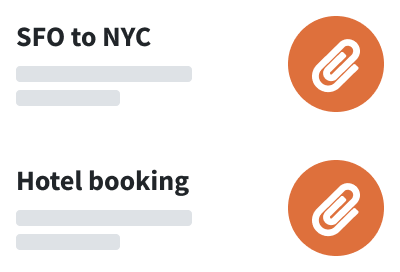
All travel reservations in 1 place
Never dig through your emails again — access all your flights, lodging, and any reservations in 1 place.

Popular road trips from Kitakyushu
What's the weather like in kitakyushu.
It depends on when you visit! We've compiled data from NASA on what the weather is like in Kitakyushu for each month of the year: see the links below for more information.
- Weather in Kitakyushu in January
- Weather in Kitakyushu in February
- Weather in Kitakyushu in March
- Weather in Kitakyushu in April
- Weather in Kitakyushu in May
- Weather in Kitakyushu in June
- Weather in Kitakyushu in July
- Weather in Kitakyushu in August
- Weather in Kitakyushu in September
- Weather in Kitakyushu in October
- Weather in Kitakyushu in November
- Weather in Kitakyushu in December
All road trips from Kitakyushu
- Kitakyushu to Kyoto drive
- Kitakyushu to Tokyo drive
- Kitakyushu to Seoul drive
- Kitakyushu to Osaka drive
- Kitakyushu to Hiroshima drive
- Kitakyushu to Nagasaki drive
- Kitakyushu to Busan drive
- Kitakyushu to Beijing drive
- Kitakyushu to Kumamoto drive
- Kitakyushu to Nagoya drive
- Kitakyushu to Kagoshima drive
- Kitakyushu to Kanazawa drive
- Kitakyushu to Beppu drive
- Kitakyushu to Hakone-machi drive
- Kitakyushu to Sasebo drive
- Kitakyushu to Sapporo drive
- Kitakyushu to Matsuyama drive
- Kitakyushu to Hatsukaichi drive
- Kitakyushu to Himeji drive
- Kitakyushu to Jeju drive
- Kitakyushu to Izumo drive
- Kitakyushu to Okayama drive
- Kitakyushu to Gyeongju drive
- Kitakyushu to Takachiho-cho drive
- Kitakyushu to Kamakura drive
- Kitakyushu to Takamatsu drive
- Kitakyushu to Kochi drive
- Kitakyushu to Miyazaki drive
- Kitakyushu to Nikko drive
- Kitakyushu to Kobe drive
Explore nearby places
- Shimonoseki
- Kanda-machi
- Mizumaki-machi
- Ashiya-machi
- Fukuchi-machi
- Kurate-machi
- Kawara-machi
- Okagaki-machi
- Kotake-machi
- Itoda-machi
- Miyako-machi
- Sanyo Onoda
- Chikujo-machi
- Kawasaki-machi
- Soeda-machi
- Keisen-machi
All related maps of Kitakyushu
- Map of Kitakyushu
- Map of Shimonoseki
- Map of Kanda-machi
- Map of Mizumaki-machi
- Map of Nakama
- Map of Yukuhashi
- Map of Ashiya-machi
- Map of Onga-cho
- Map of Nogata
- Map of Fukuchi-machi
- Map of Kurate-machi
- Map of Kawara-machi
- Map of Okagaki-machi
- Map of Kotake-machi
- Map of Itoda-machi
- Map of Miyawaka
- Map of Miyako-machi
- Map of Tagawa
- Map of Munakata
- Map of Oto-machi
- Map of Aka-mura
- Map of Sanyo Onoda
- Map of Iizuka
- Map of Chikujo-machi
- Map of Kawasaki-machi
- Map of Soeda-machi
- Map of Fukutsu
- Map of Buzen
- Map of Keisen-machi
- Map of Kama
Kitakyushu throughout the year
- Kitakyushu in January
- Kitakyushu in February
- Kitakyushu in March
- Kitakyushu in April
- Kitakyushu in May
- Kitakyushu in June
- Kitakyushu in July
- Kitakyushu in August
- Kitakyushu in September
- Kitakyushu in October
- Kitakyushu in November
- Kitakyushu in December
Looking for other day-by-day itineraries in Kitakyushu?
Check out our other curated itineraries that are also filled with jam-packed days:
Day itineraries for nearby cities
- 3-Day Shimonoseki Itinerary
- 3-Day Munakata Itinerary

- Itinerary + map in one view
- Live collaboration
- Auto-import hotels and reservations
- Optimize your route
- Offline access on mobile
- See time and distance between all your places

An Epic Four-Day Itinerary for a Taste of Extraordinary Kyushu
Adventure is calling your name, and it’s called Kyushu. Japan’s westernmost island is a natural paradise of geothermic hot springs, rugged mountains, and azure seascapes beckoning to your spirit of adventure. Kyushu is an area full of uncrowded, open spaces, and the people of Japan are highly conscientious about hygiene and personal space, making it an excellent choice for those worried about coronavirus exposure. In this four-day itinerary, sample the incredible sights and experiences of the cities of Kitakyushu, Beppu , and Kumamoto , and you’ll be hooked into returning to Kyushu again and again.
The Stunning Views of Kitakyushu
Depart from Hiroshima on the San-yo Shinkansen bullet train and arrive at Kokura Station in the city of Kitakyushu in less than an hour. The fare cost is covered by a Japan Rail Pass on one of the world’s most pleasant and reliable forms of transportation . After arriving in Kokura, use the local JR train to get to Mojiko Station, close to historic Mojiko (Moji Port) .
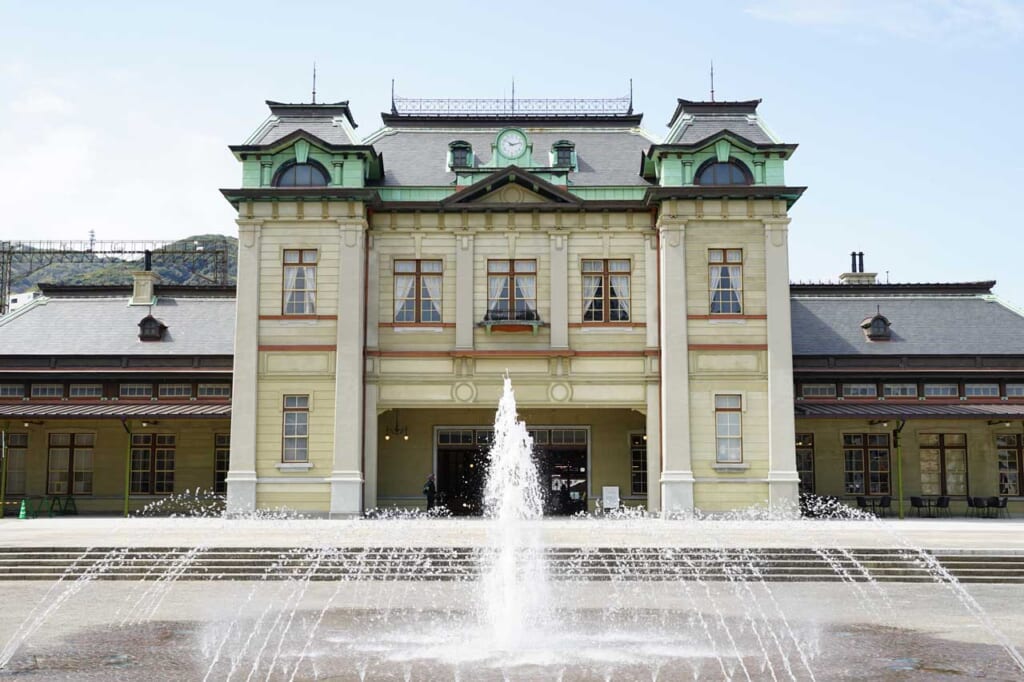
Kitakyushu’s location made it a convenient point of trade with the Asian mainland, so the city has a long history of international relations with countries like Korea and China. The area was critical to Japan’s industrial advancements of the early 20th century, home to companies producing steel and coal. Mojiko (Moji Port) became an international trading port in the latter 19th century with the Imperial Steel Works, Japan starting operations here in Kitakyushu in 1901.
Here at the port, the Mojiko Retro Highmart offers a 31st-storey observatory to survey the panoramic view of this northern part of Kyushu and the Kanmon Bridge connecting it to Honshu Island. Then, take a five-minute ride on a liaison ship from Mojiko (Moji Port) to the other side of the strait at Shimonoseki’s Karato Market , where a bounty of fresh and inexpensive seafood awaits you and your appetite.
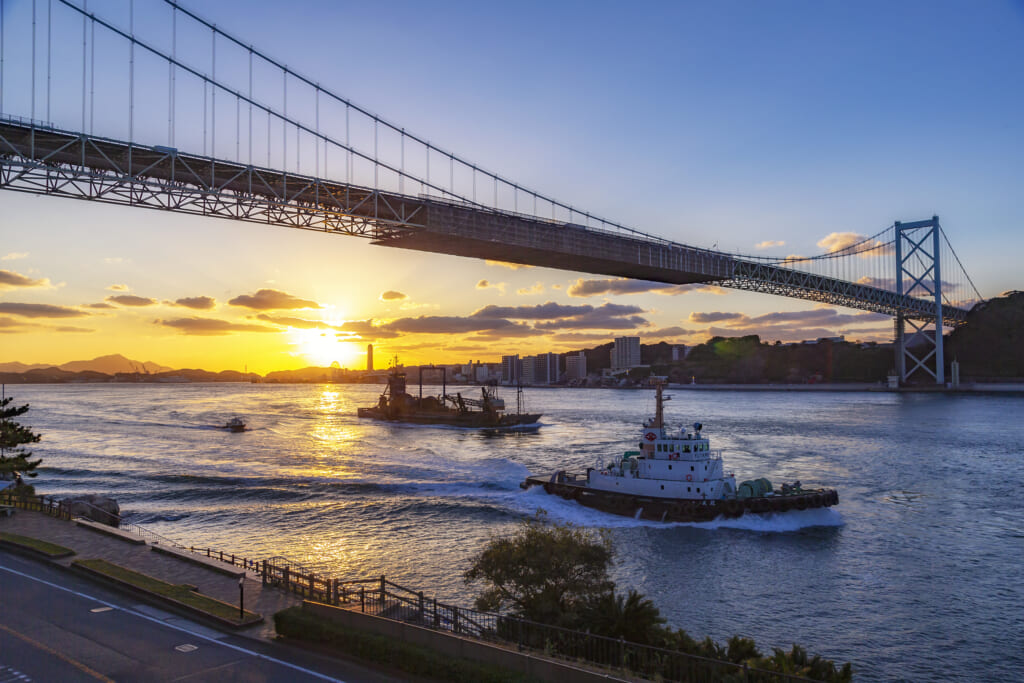
The Most Beautiful Wisteria Tunnel at Kawachi Wisteria Garden
Savor the various catches of the day before departing for one of the highlights of your day back on the other side of the strait: Kawachi Wisteria Garden (河内藤園). This garden was selected by CNN as one of Japan’s 31 most beautiful places and is best known for its stunning displays of wisteria from April to May . However, it is also spectacular in autumn for its brilliant red foliage. Twenty-two types of wisteria have been cultivated to create 80 and 110-meter-long dreamlike tunnels of delicate purple and white flowers , while 700 maple trees form a tunnel of fiery leaves every autumn. Kawachi Wisteria Garden attracts visitors from around Japan and internationally and has become an icon of beauty for Kitakyushu.
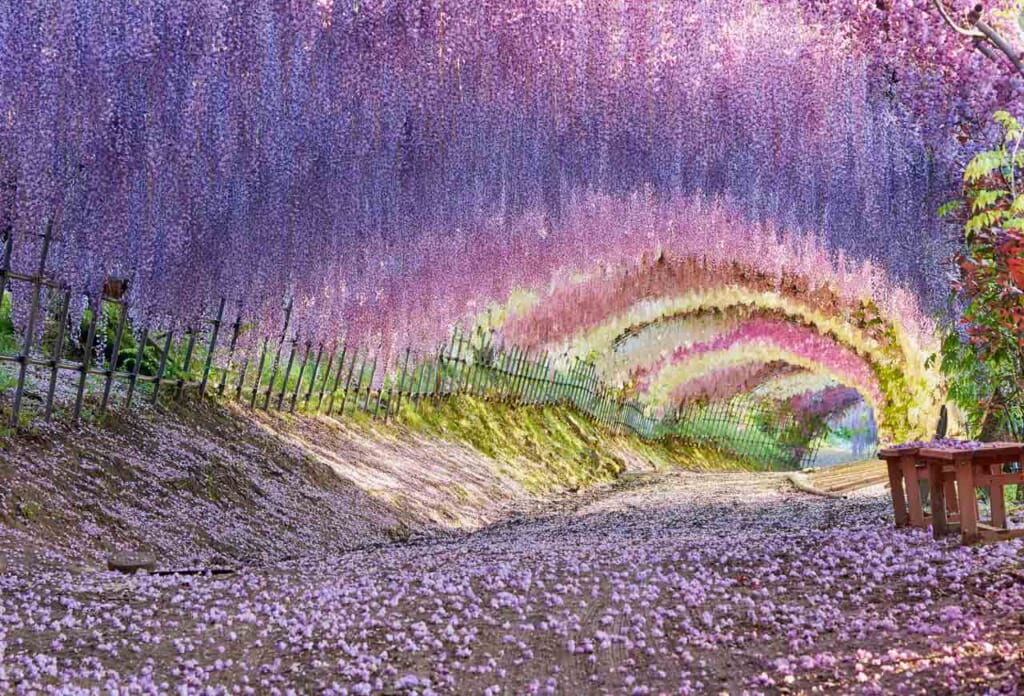
One of Japan’s Best Night Views on the Sarakurayama Cable Car
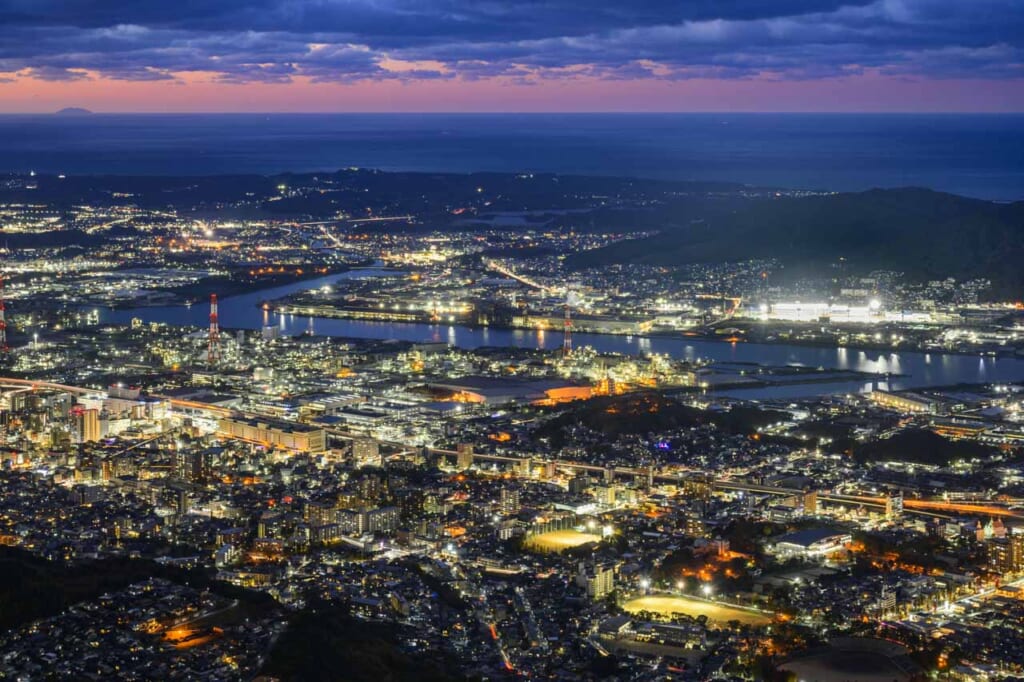
From the lovely natural beauty of the garden, take a short drive to the parking lot of the Sarakurayama Cable Car . From here, board the cable car for a 1.1-kilometer 6-minute journey up Mount Sarakura, ascending 440 vertical meters. Along the way, you might enjoy incredible views of fall foliage through the large cable car windows as well as the scenery of Kitakyushu falling away below you. Finally, at the 622-meter high summit, you might catch the sunset over the mountains, sea, and city lights, and witness why it is known as one of Japan’s three major night views .
Fusion Cuisine and Local Fare in Kitakyushu
Descend from the mountain and head back to the city center for a dining experience sure to satiate your appetite. Beef Kitchen Saikogyu overlooks the Murasaki River and features cuisine made with a fusion of local and international ingredients for a one-of-a-kind dining experience. Many meals feature Japanese ingredients such as black wagyu beef and fresh seafood like scallops and sea urchin, served alongside European ingredients such as French truffles and Italian porcini cream sauce. Vegetarian dishes are also available for those who would rather not eat meat.
After a sumptuous meal, turn in for the night at the Rihga Royal Hotel Kokura , an upscale and convenient hotel near Kokura Station.
Kokura Castle and the History of Japan’s Master Swordsman
The following morning, visit Kokura Castle , a popular attraction for those familiar with samurai history. The famous master swordsman Miyamoto Musashi fought one of his best-known duels here at the Kokura domain . There is an exhibition about Miyamoto’s time in Kokura and a monument of his duel. There is even a dojo here that teaches students his two-sword style.
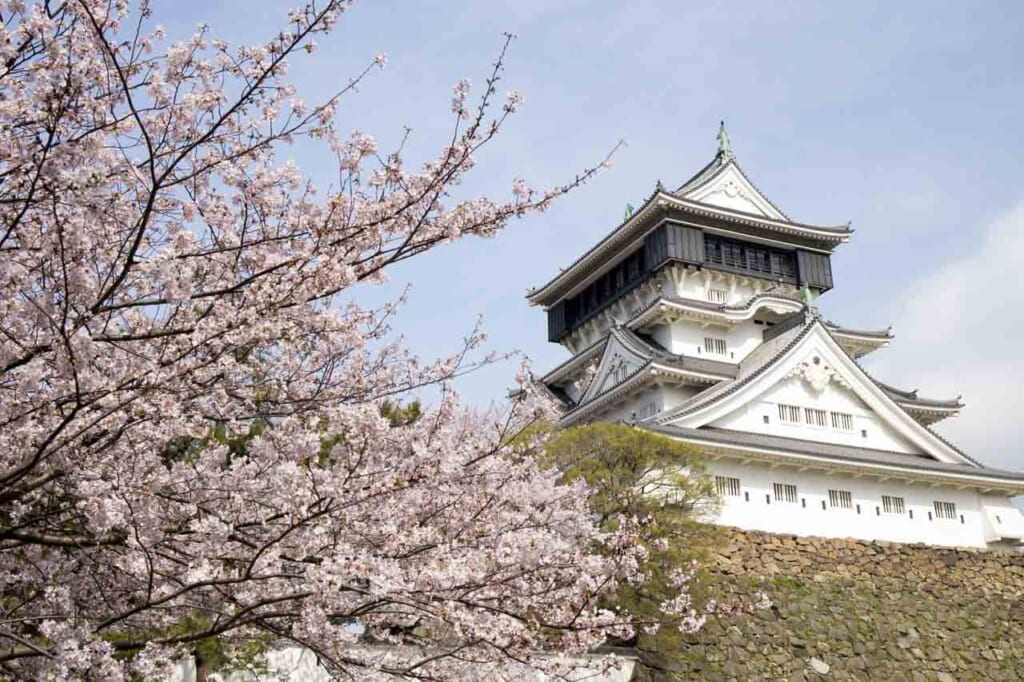
The view from the castle keep provides an overview of the city’s mixture of historic and modern, with the castle and lovely Katsuyama Park on the castle grounds and the recently built Riverwalk Kitakyushu just beyond. After touring the castle grounds, enjoy views of the river as you stroll through the complex’s shops, restaurants, and entertainment venues.
Not far from the castle and Riverwalk, take a lunch break at Mojiko Retro Beer Restaurant , a microbrewery serving that has won first place in a craft beer contest in Japan. Their menu also features international favorites like sausage, pasta, fish and chips, and Kitakyushu’s famous grilled curry.
TOTO Museum
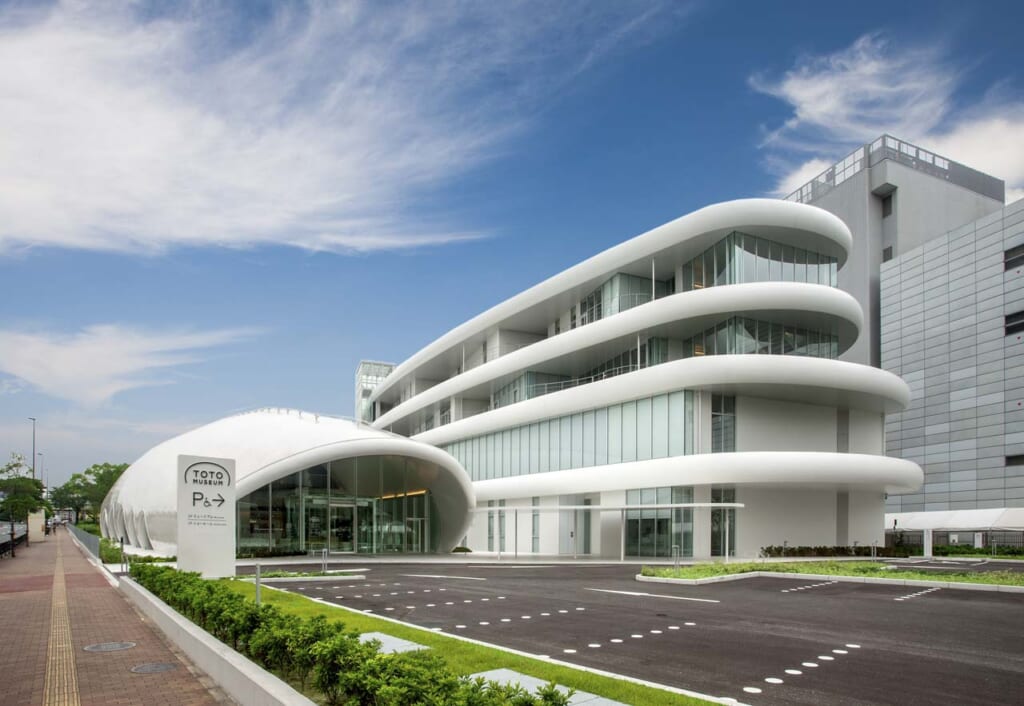
It might sound strange to include a museum of plumbing equipment on your “must-see” list, but with Japanese toilet technology all the rage globally, the TOTO Museum is a fascinating look at the history and evolution of Japanese sanitation. The museum was built to commemorate the 100th anniversary of the company and to help visitors understand the ways TOTO is innovating products and manufacturing processes toward greater environmental sustainability. Housed in a state-of-the-art, environmentally green building, this unique museum is sure to be a highlight of your visit to Kitakyushu city.
Beppu City: A Hot Springs Heaven
After enjoying the museum, head to Kokura Station to transfer to your next destination, Beppu city in neighboring Oita Prefecture, a little over an hour away on the Limited Express Sonic train. Beppu is home to over 2,000 natural onsen hot springs used in Japan for relaxation, physical healing, and socializing. Beppu contains the largest variety of onsen water types in one location , justifying its reputation as “onsen heaven.” For those with tattoos, there are many tattoo-friendly establishments in Beppu , making it easy to enjoy the onsen culture without worry.
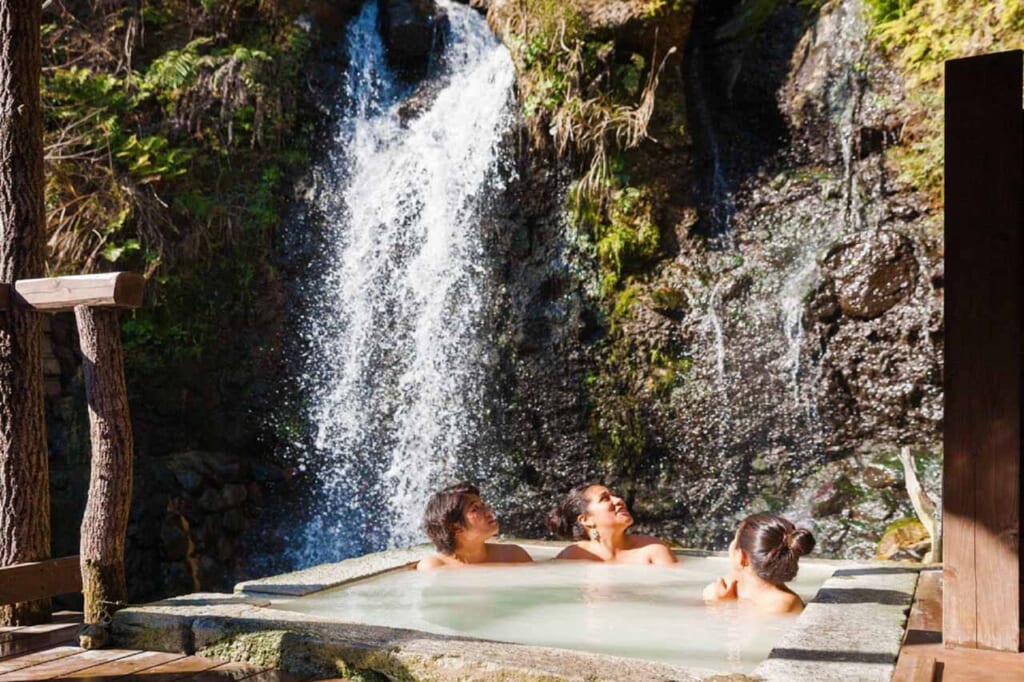
Meet your English-speaking guide at the station , who will take you on an exclusive tour of Beppu highlights. First, your guide will teach you the basic etiquette for using an onsen, often a major hurdle for those trying this unique experience for the first time. Your guide will accompany you into an onsen facility to ensure you are comfortable with the process.
After a thoroughly relaxing soak in a hot bath, you’ll be ready for a good meal, so your guide will take you to an izakaya, the Japanese form of a local pub. These cozy establishments serve simple plates of local food that pair well with alcoholic beverages and give you a chance to mingle with friendly local people. It can be an intimidating experience for those unfamiliar with the Japanese language and culture, but with a local guide, you’ll be able to relax and enjoy the warm atmosphere.
After an enjoyable evening accompanied by your guide, retire to your room at Amanek Yula-Re , a hotel near Beppu Station built in 2021. Amanek Yula-Re features modern Japanese decor and a rooftop pool with a panoramic view of the city and bay.
Traditional Bamboo Craft in Beppu
Bamboo products have been a traditional craft of Beppu for over a century. Pay a visit to the Nagai Seichiku bamboo factory , where you can watch bamboo artisans up close as they create products from this environmentally sustainable material . Then, purchase bamboo goods as souvenirs at the small shop on site.
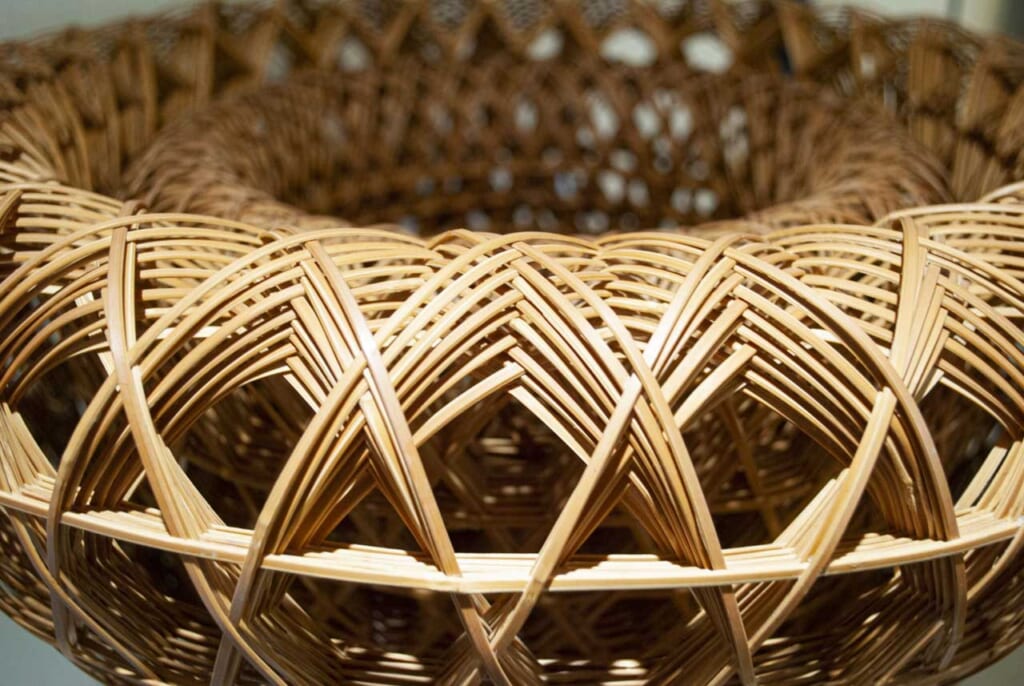
For an experience making your own bamboo crafts, Synergiez bamboo workshop offers you a chance to make your own bamboo chopsticks guided by a professional craftsman. After this 2-hour workshop, you’ll leave with a unique handmade set of chopsticks that you can use for meals or give as a gift to a favorite person back home.
Jigoku Mushi: Beppu’s Unique Hot Spring Cuisine
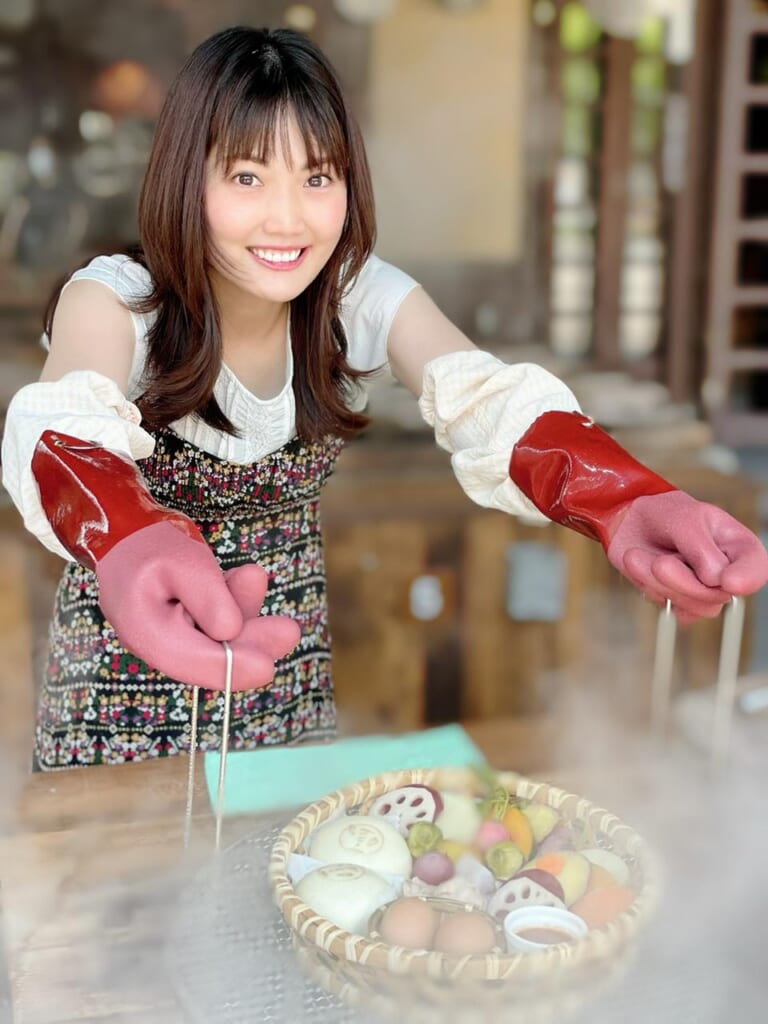
Experiencing Beppu’s unique cooking method is a must for visitors to the area, so head to Beppu Market , where you’ll first pick out your ingredients for “ Jigokumushi ,” literally “hell steaming.” This cooking method uses the underground geothermic steam that heats Beppu’s onsens to cook various meats, seafood, and vegetables using the power of nature alone. So choose from items like chicken, shrimp, fish, steamed buns, and the abundant variety of local vegetables and place them in a basket. This basket is placed in a steamer until all the ingredients are cooked. With no cooking oil or additional energy required, Jigokumushi is one of the most healthy and ecologically sustainable cooking methods on the planet, not to mention delicious.
Hot Spring Experiences in Beppu
The huge number of onsen facilities in Beppu can overwhelm visitors, so take a guided tour in English of the Beppu Onsen area . The guide will explain the onsen culture of Beppu and escort you to one of several facilities where you can try various forms of hot springs bathing, both public and private. More than just a relaxing tour, your guide will help you understand the importance of onsen in Japanese culture and society.
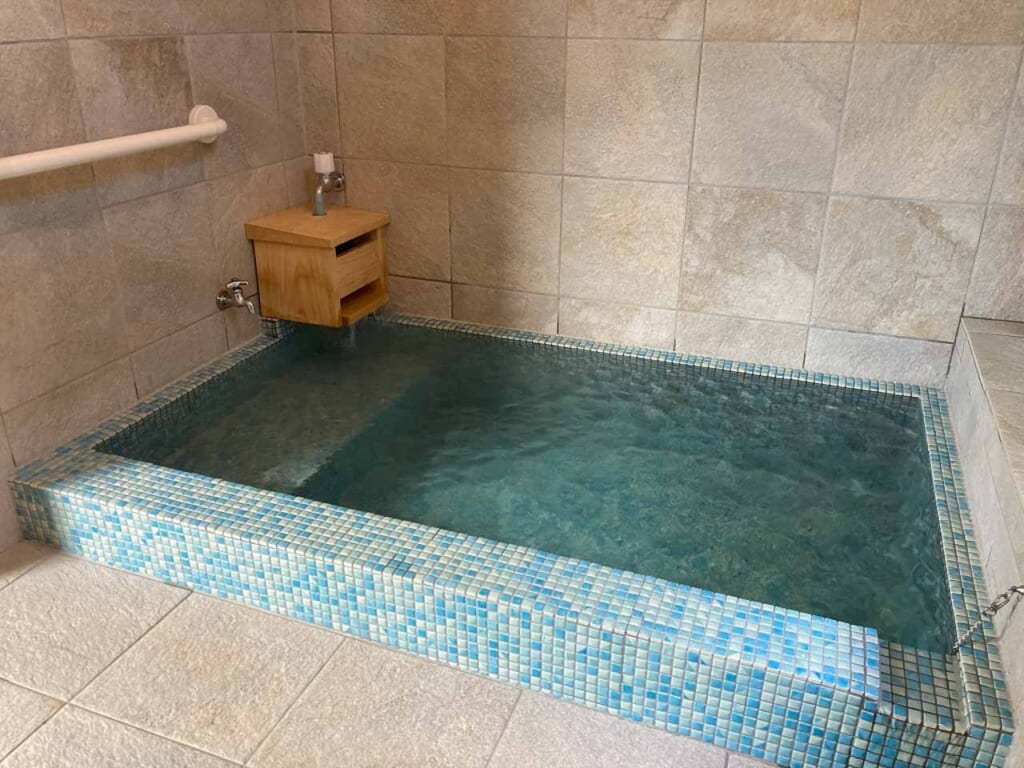
One of the onsen options for your guided tour is Yume Hinoki no Yu Daibutsu Onsen , where you can enjoy a private onsen bath in a hinoki cypress tub. The water’s natural mineral content leaves your skin feeling silky smooth, while the subtle aroma of the cypress tub adds to the relaxing experience.
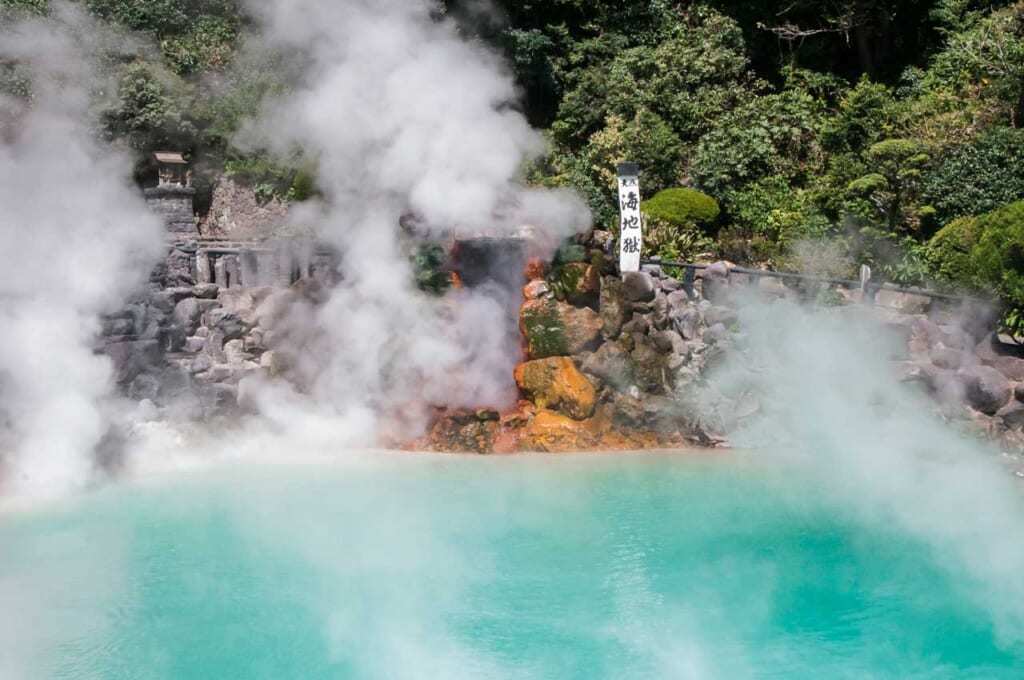
After your tour and before departing Beppu for your next destination, visit Umi Jigoku , literally “Sea Hell, ” one of Beppu’s most famous tourist attractions . This is one of the seven hot springs that make up Beppu’s Jigoku Meguri (Hell Tour) . These hot springs reach temperatures of over 100 degrees Celsius, hence their “hellish” name. A tour of the seven Hells gives a good overview of the types of onsen water in the Beppu area. Since we don’t have time to see them all, Umi Jigoku provides a stunning display of superheated cloudy blue water set in a picturesque location.
Samurai History in Historic Kumamoto
With our time in Beppu at an end, head to Beppu Station to board the Asoboy train to Kumamoto . This unique train runs on weekends and holidays and features dog-themed decor, an exclusive food menu, and, most importantly, panoramic views of the breathtaking Kyushu scenery between Beppu and Kumamoto through its oversized windows.
Kumamoto city grew around Kumamoto Castle , which represented the supreme military power of the domain throughout the Edo Period history of Japan. The security provided by the castle enabled the city to grow large and prosperous, and Kumamoto remains the third-largest city in Kyushu even today.
Tonight’s accommodation is at Tsuzura , a 130-year-old former Ryotei inn renovated in 2021. Modern blends seamlessly with traditional in this space where you can not only enjoy a comfortable place to sleep and relax but also enjoy an unforgettable dinner experience at the inn’s neighboring restaurant, Furumachi Sen . Here, patrons sit at the restaurant’s counter around a sunken hearth, where meats are grilled and served on skewers while the delicious local sake flows freely.
Stroll Through the Gorgeous Suizenji Jojuen Garden
The following morning, take a stroll around the gorgeous Suizenji Jojuen Garden (水前寺成趣園), which celebrated its 350th anniversary in 2021. This unusual garden is said to recreate the views from the post towns along the old Tokaido Road between Kyoto and Edo (modern-day Tokyo) in miniature . Iconic locations such as Mt. Fuji and Lake Biwa are easy to recognize even by those unfamiliar with this part of Japanese history. Seasonal foliage and the clear spring waters that feed the garden’s pond add to the picturesque beauty of the park; stop and admire the view while enjoying a warm bowl of matcha tea along your stroll.
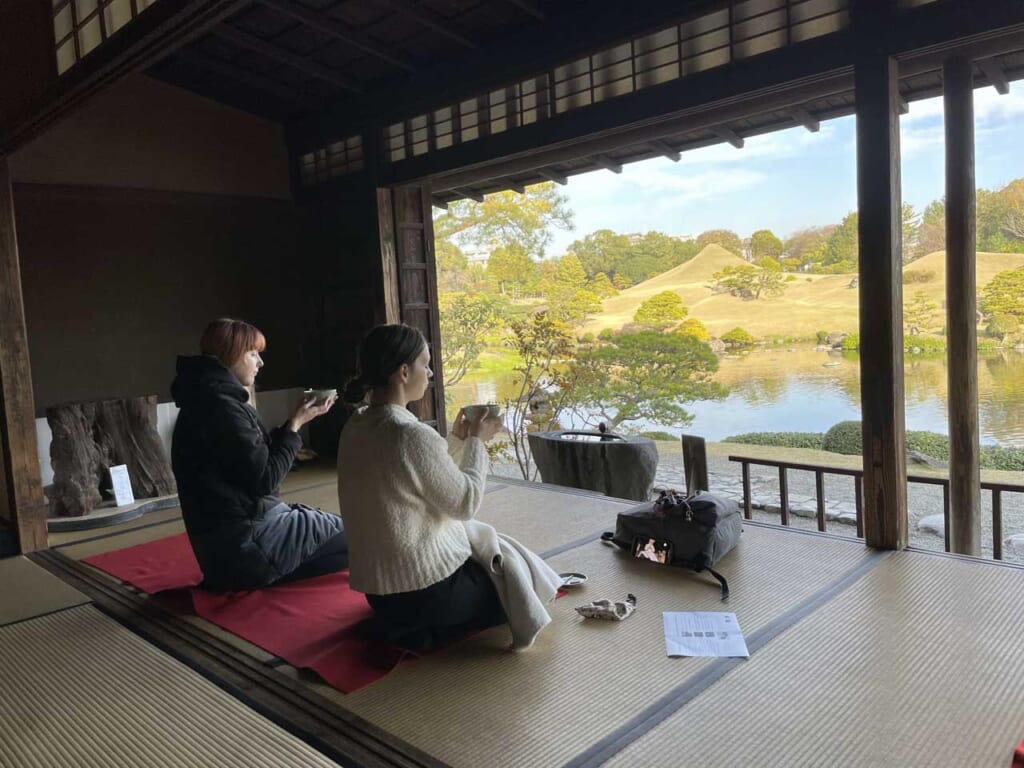
Reigando Cave, the Famed Swordsman Miyamoto Musashi, and the Book of Five Rings
Enjoy the sunny weather because next, you will head for the mountains and into Reigando cave . Here, legendary swordsman, Miyamoto Musashi, wrote “The Book of Five Rings ” just before he died. On your climb to the cave, you’ll pass a hillside covered in hundreds of rakan stone statues of Buddhist disciples often carved with comical expressions. The cave is on the grounds of the ancient Unganzen-ji temple, which still exists today and maintains several artifacts related to Miyamoto Musashi, who remains as popular as ever centuries after his death.
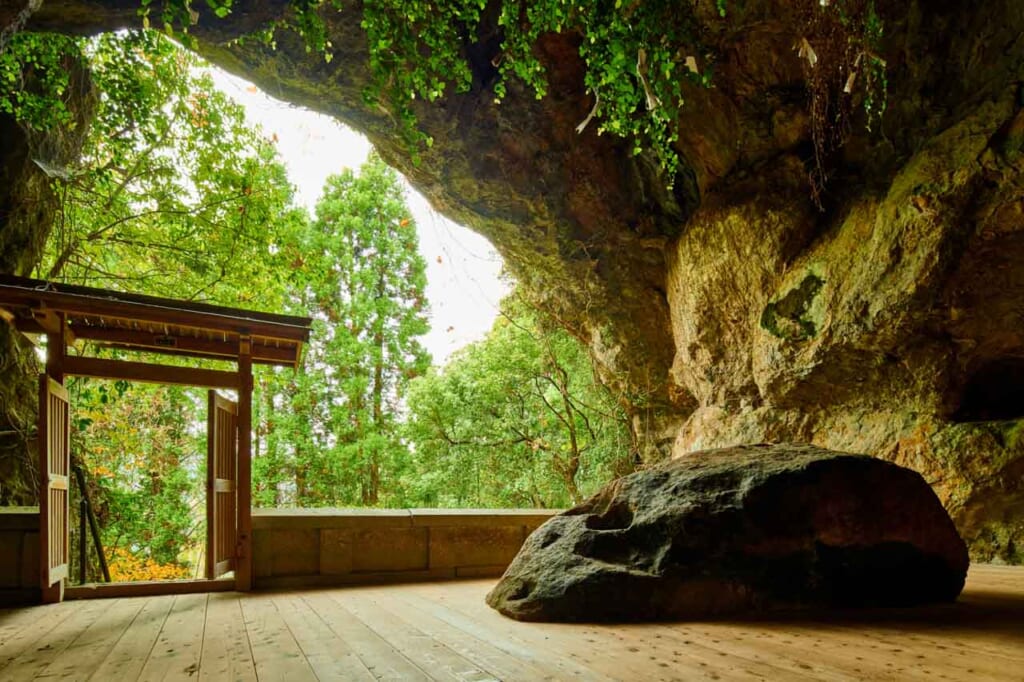
Lunch today is at Kokopelli , an unusually named cafe-cum-antique shop near the entrance to the temple. This stylish cafe features main dishes made with local organic ingredients and delicious desserts. This renovated old house decorated with lovely antique furniture is a perfect example of what makes Kyushu such a unique place to visit.
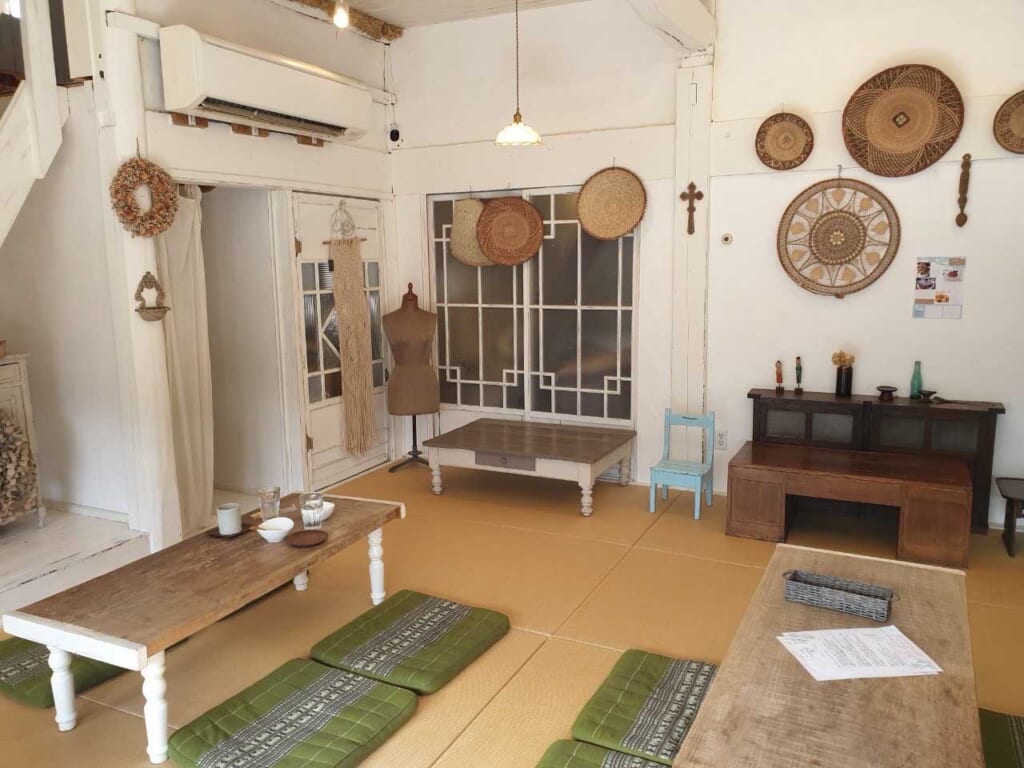
Learn About the History and Resilience of Kumamoto Castle
Nothing represents the strength and resiliency of the people of Kumamoto than its iconic Kumamoto Castle . This historic castle’s two keeps opened in 2021 and has much to tell us about Kumamoto and its people. The castle’s strength was fully realized in 1877 during the Satsuma Rebellion when a garrison of 3,500 men inside the castle successfully repelled an assault by the 13,000-man-strong Satsuma army. As part of the most recent renovations of the castle, exhibits have also been updated with modern technology, including projection mapping and multilingual apps to make the castle’s history more accessible.
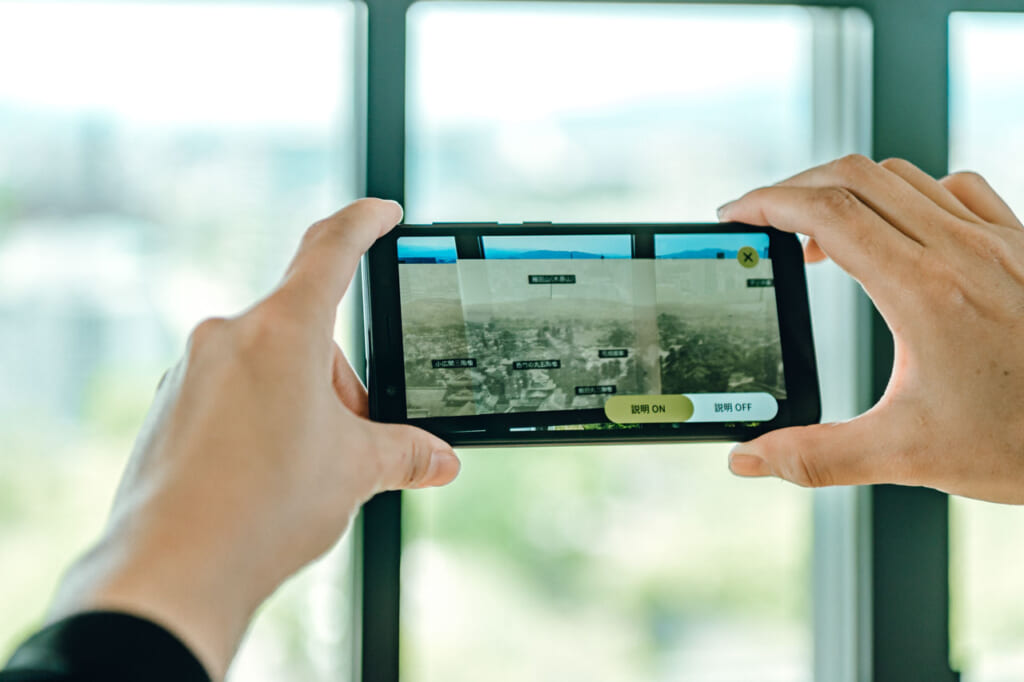
Test Your Japanese Sword-Wielding Skills
After being teased with samurai history and following the footsteps of Miyamoto Musashi over the past few days, many visitors might be itching to try a bit of swordplay for themselves. Just a few minutes from the castle at the Musashi Building, an authentic Iaido (swordsmanship) teacher is ready to instruct you in the Way of the Sword. This 90-minute course is designed to give you an overview of the teachings of Musashi, allow you to wield a real Japanese katana sword, and give you a unique souvenir to take home: a personalized certificate of training (and a special hand towel). After completing your training, relax and enjoy a cup of matcha served with Japanese sweets, just like the samurai of old used to enjoy.
Make Your Own Traditional Japanese Confectionary
If you can’t get enough of those Japanese sweets, why not learn how to make them yourself? Japanese sweets, known as wagashi, are made to be beautiful in appearance and delicious to taste. Local confectionery Tenmeido (北川天明堂) conducts small-scale workshops on making sweets with various local ingredients and colorful shapes. This fun experience is perfect for foodies who want a special memory, or perhaps a technique or two, to take home with them.
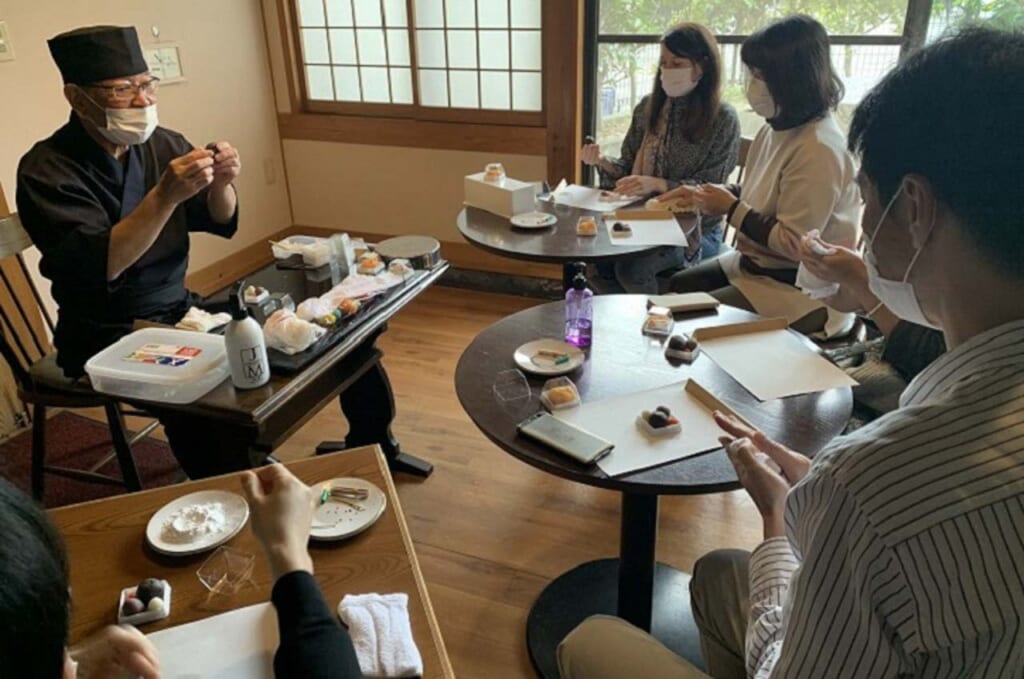
How to Access Kyushu
Kyushu is served by local and express trains connecting all major cities, including Kitakyushu, Kumamoto, and Beppu, with Kokura Station being the main train hub transit point between Kyushu and the main island of Honshu. The Limited Express Sonic train will take you to all major stations and is covered by the Japan Rail Pass.
Four days in Kyushu is not nearly enough to discover the charm and beauty of this region of Japan, but we hope this trip whets your appetite for more. With its proximity to well-traveled destinations like Hiroshima, Kyushu represents a great addition to your Japan itinerary, if not an entire itinerary in itself.
Sponsored by the Kyushu District Transport Bureau
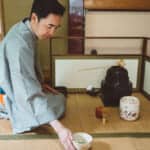
Freelance writer, photographer, and mentor. Japan-based, Oaktown (Oakland, California) born. Freelance writing and photography work includes Lonely Planet, Voyapon, Metropolis Japan, and many regional tourism websites around Japan.
https://www.toddfong.com
Most Popular Articles

Experience Kyoto at Night with JINS

Discover Akita in 6 Gourmet Cities and a Smiling Train Ride
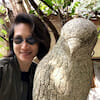
Leave a Reply Cancel Reply
Save my name, email, and website in this browser for the next time I comment.
I have read and accepted the Privacy Policy *

About Voyapon
- Privacy Policy
Affiliate Links
Some of our articles contain affiliate links. Whenever you use these links to buy something, we earn a commission to help support our work at Voyapon. Please read our disclosure for more info .
- Sightseeing
- Accommodation
- Things to Know
Destinations
Japan travel guide.
- Transportation
- Money in Japan
- Connectivity
- Getting Help
© 2024 VOYAPON. The images and contents of this site may not be used, reprinted or reproduced without permission.
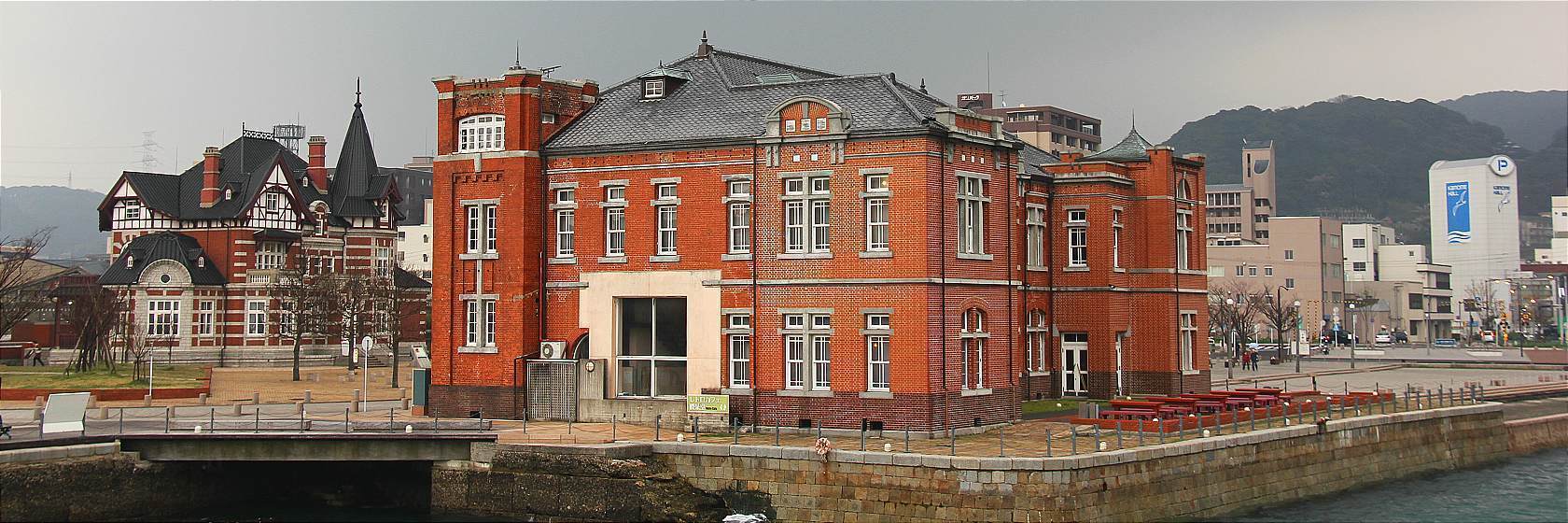
Kitakyushu (�k��B, Kitakyūshū, lit. "North Kyushu") is the northernmost city of Kyushu and has been an important hub for both land and marine traffic since olden times. It is the gateway between Honshu and Kyushu, as well as an important port for international trade. The city was formed in 1963 with the merger of five independent cities, namely, Kokura, Moji, Yahata, Tobata and Wakamatsu. It is very much an industrial city, contributing to the manufacturing capabilities of Japan.
During the Meiji Period (1868-1912), the government recognized the geographical advantages of the Kitakyushu area, and had port facilities and railroad infrastructure rapidly built here, leading to further development of commerce and industry. Thanks to the preservation of multiple old buildings from that era, a certain flair of past decades can still be experienced around Moji Port .
Top attractions in Kitakyushu
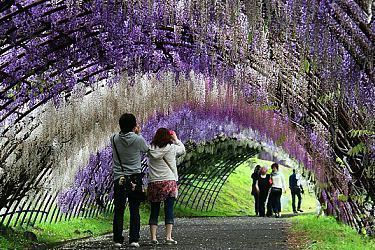
Kawachi Wisteria Garden •
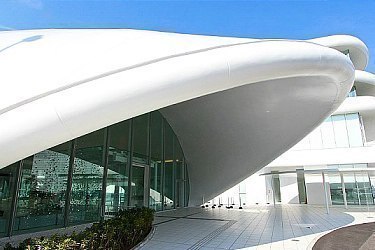
TOTO Museum
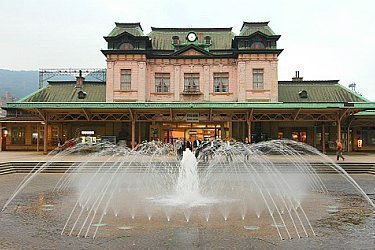
Kokura Castle
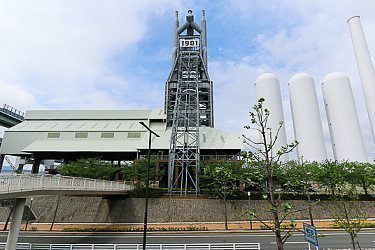
Yawata Steel Works
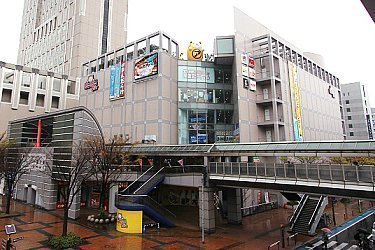
Kitakyushu Manga Museum
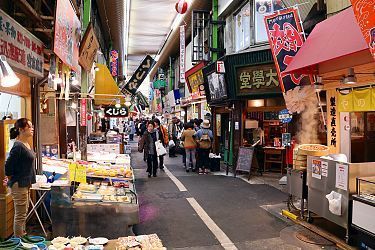
Tanga Market
Getting there and around.
Questions? Ask in our forum .
Links and Resources
Kitakyushu city.


5 Days in Kyushu: A Guide to Exploring Kitakyushu, Fukuoka, Kumamoto, Kagoshima
August 15, 2019 Updated On April 10, 2023
Day 1: Kitakyushu
The gateway to Kyushu, Kitakyushu lies on the northernmost coast and has long been a hub for international and domestic trade. Hit this city for beautiful coastal views, historic buildings and exceedingly fresh seafood.
9:20 am – Arrival in Kyushu
Get an early start by taking a 7:40am flight from Tokyo’s Haneda Airport to Kitakyushu Airport. Take the airport bus directly to Kokura – a short 30-minute journey – on one of several departures to this old castle town within Kitakyushu city.
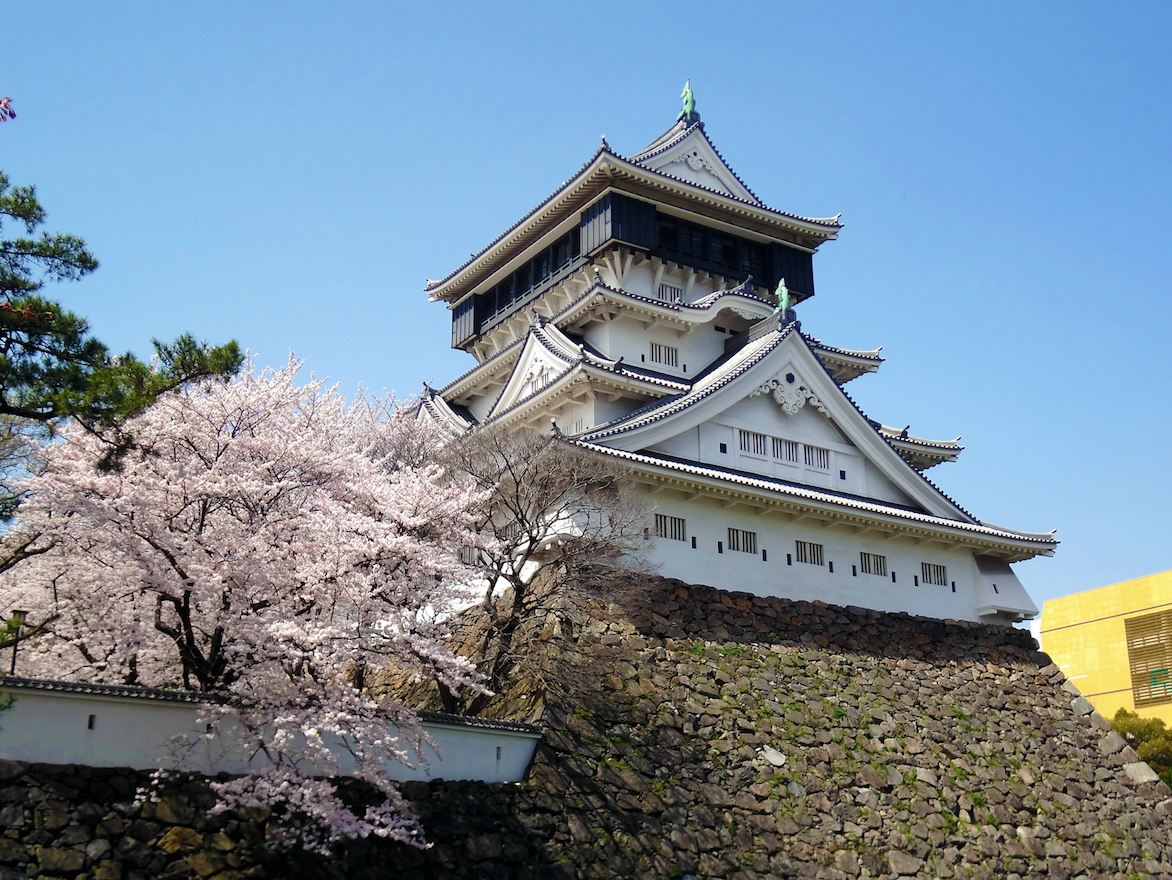
11am – True Japanese Tradition
Dive into the region’s history at Kokura Castle, which gives insight into the region’s illustrious past as well as a panoramic view of the area’s present. Make the most of your visit by booking a tea ceremony experience at the Kokura Castle Japanese Garden. (Note that group reservations must be made in advance by telephone at 093-582-2747.)
1pm – Lunch at a Local Market
Wander over to charming Tanga Ichiba, a bustling local market that’s nicknamed the Kitchen of Kitakyushu. It retains a nostalgic postwar feel and is known for its fresh and pickled fish. Its colorful atmosphere and tantalizing aromas make it a great pitstop on your trip. Rub shoulders with locals as they shop for groceries and their favorite foods such as nukadaki (sardines boiled in rice-bran paste), then stop by one of the many eateries along the arcade for lunch. Here you’ll find a selection of local specialties, including sushi, udon and soba noodles, tempura, daigakudon and more.
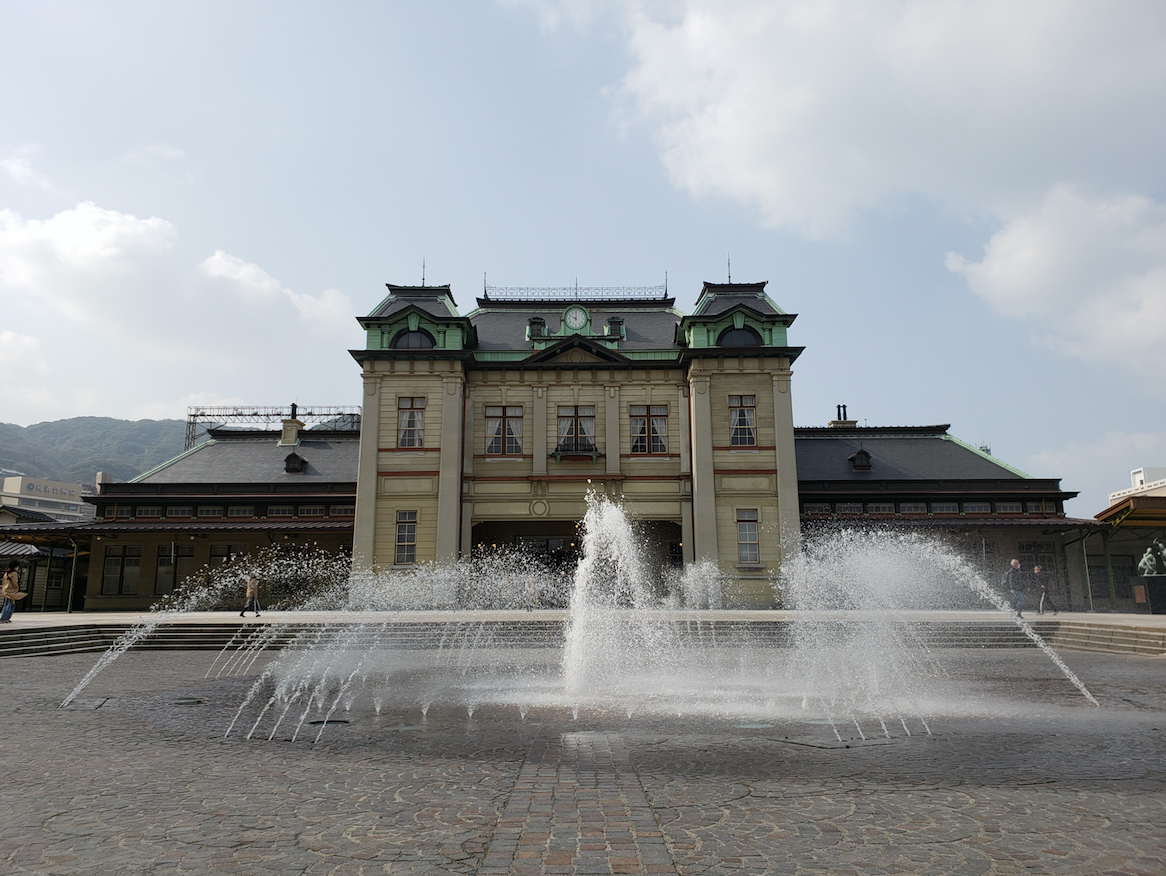
2pm – A Historic Harbor
After lunch, head to Moji Port, which opened its doors to international trade in 1889. Beautiful brick buildings that were then the epitome of modernity remain well-preserved and give the area a comfortable retro feel. Grab a map of historic buildings at the newly refurbished Mojiko Station, then head out on a historic city walk. Highlights include the former Moji Mitsui Club, where Albert Einstein and his wife stayed on a visit in 1922, the stunning Sankiro restaurant, and the Dalian Friendship Memorial. For the full nostalgic experience, book a rickshaw ride.
4pm – On a Border Under Water
For an underwater thrill, visit the Kanmon Pedestrian Tunnel next to Moji Port. It connects Kyushu to the main island of Honshu underneath the Kanmon Strait. Straddle the border – marked clearly in the tunnel – to stand in two prefectures at once. The tunnel is 780 meters long and takes about 15 minutes to cross over to Shimonoseki in Yamaguchi. Best of all, it’s completely free.
5:30pm – Bolt Down Some Baked Curry
Tuck into an early dinner of one of Moji Port’s most famous dishes: baked curry. There are more than 20 eateries to choose from, many of which offer a broad selection of curries that you can pair with award-winning local craft beers.
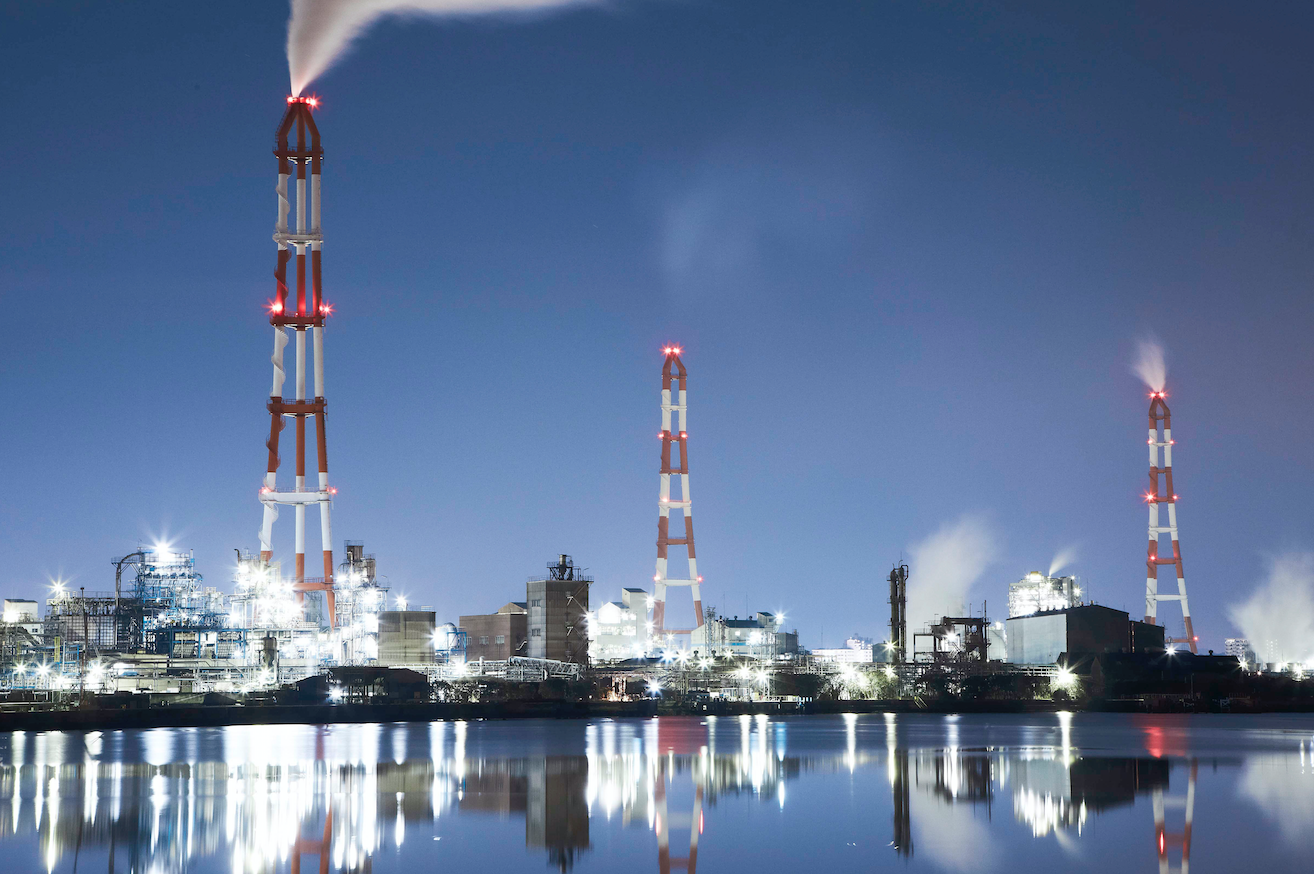
7pm – All Aboard!
It wouldn’t be a visit to a port city without a trip out on the water. We recommend a short cruise to enjoy views of Kitakyushu’s illuminated factories from the ocean. Kitakyushu is one of Japan’s four main industrial areas and has contributed greatly to the development of the country’s modern industry. Look out for the beautifully lit steel mill and chemical plant, located on the stretch of coastline between Kanmon Strait and Dokai Bay.
9pm – Moji Port By Night
End your first day in Kyushu at Bar Tempo, with its deep red interior and view over the sparkling waters of the port. Enjoy a selection of Japanese and international whiskies, local brews and original cocktails before turning in for the night.
Kyushu is the third largest island of Japan’s four main islands and though it’s one of the least explored, it has a lot to offer the intrepid traveler. Visit four of Kyushu’s most fascinating cities in five days to get a taste of this southwestern island paradise.
Day 2: Kitakyushu and Fukuoka
10am – toilet tour.
Start your morning by going down the drain at Japan’s most famous toilet maker TOTO’s own museum, TOTO Museum. The company has been at the forefront of Japan’s famously high-tech toilets since its foundation in 1917, and this is the place to learn all you could ever need to know about potties and related products.
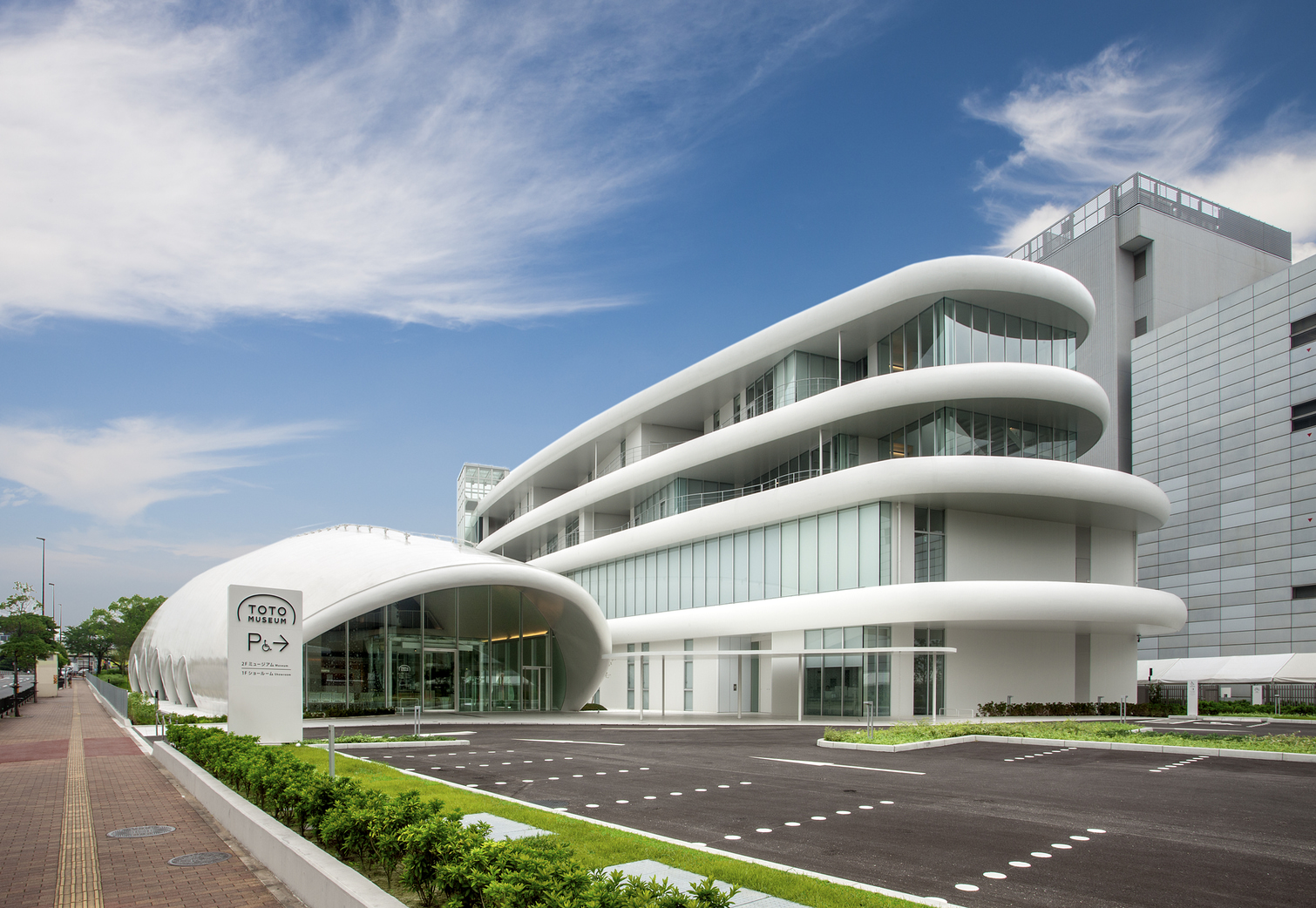
11:30am – Arty Afternoon
Designed by Kyushu-born architect Arata Isozaki, Kitakyushu Municipal Museum of Art is a unique structure located on top of a hill, offering views of the city and the ocean beyond. The museum boasts a collection of more than 7,000 artworks, and the surrounding Bijutsu no Mori Park showcases a number of sculptures scattered across the grounds. Grab a bite at Cafe Musée and shop around for souvenirs before heading south to your next destination: Fukuoka city.
As Kyushu’s largest city and Fukuoka Prefecture’s capital, Fukuoka has a burgeoning startup culture and a vibrant nightlife. Originally two separate cities on opposite sides of the Naka River, Hakata and Fukuoka merged in 1889 and the contrasts between the areas are still clearly visible today.
1:30pm – Historical Hakata
Travel back in time in Hakata Old Town, an area that is littered with temples and retains its traditional charm. Wander the streets and alleyways to get a taste of the past and find a slew of hidden photo spots. Tochoji Temple is one of these. It was founded in 806 and is the head temple of the Buddhist Shingon sect – and it is a treasure trove of new and old points of interest. Its bright vermillion five-storied pagoda almost seems to glow against a blue-sky backdrop. The Fukuoka Daibutsu near the entrance to the main temple building was completed as recently as 1992 after four years of work, and is tucked away in the Great Buddha Hall.
Next, head to Kushida Shrine, a compact shrine complex that is bursting at the seams with fascinating cultural insights. Here you’ll find a yamakasa festival float on display, otherwise seen in action in the summer at the Hakata Gion Yamakasa Festival. Before leaving, test your strength with the lifting stone on display. Several sumo wrestlers, including the record-breaking Hakuho Sho, have proven their power to the gods by carrying one of these rocks here. Drop by the lively Kawabata-dori shopping street adjacent to the shrine for an afternoon coffee and a look at daily life in Fukuoka city.

6pm – Get to Know the Locals
Fukuoka is famous for its night street stalls – especially in the Tenjin area. Here locals and tourists alike gather to eat, talk and drink, many wandering from stall to stall and sampling dishes instead of staying put all evening. Other local haunts include tachinomi (standing bars) and the custom of kakuuchi (drinking nihonshu at a sake store rather than at a restaurant) is becoming an increasingly popular pastime.
Explore the back alleys and narrow streets for charming hole-in-the-wall bars to get a vibe of the city. For creative seafood nibbles, an extensive selection of Kyushu’s distilled spirit, shochu, as well as wine and local craft beers, head to the Daimyou Akasaka area. Here, you’ll find plenty of popular standing bars and even a few venues offering live music.
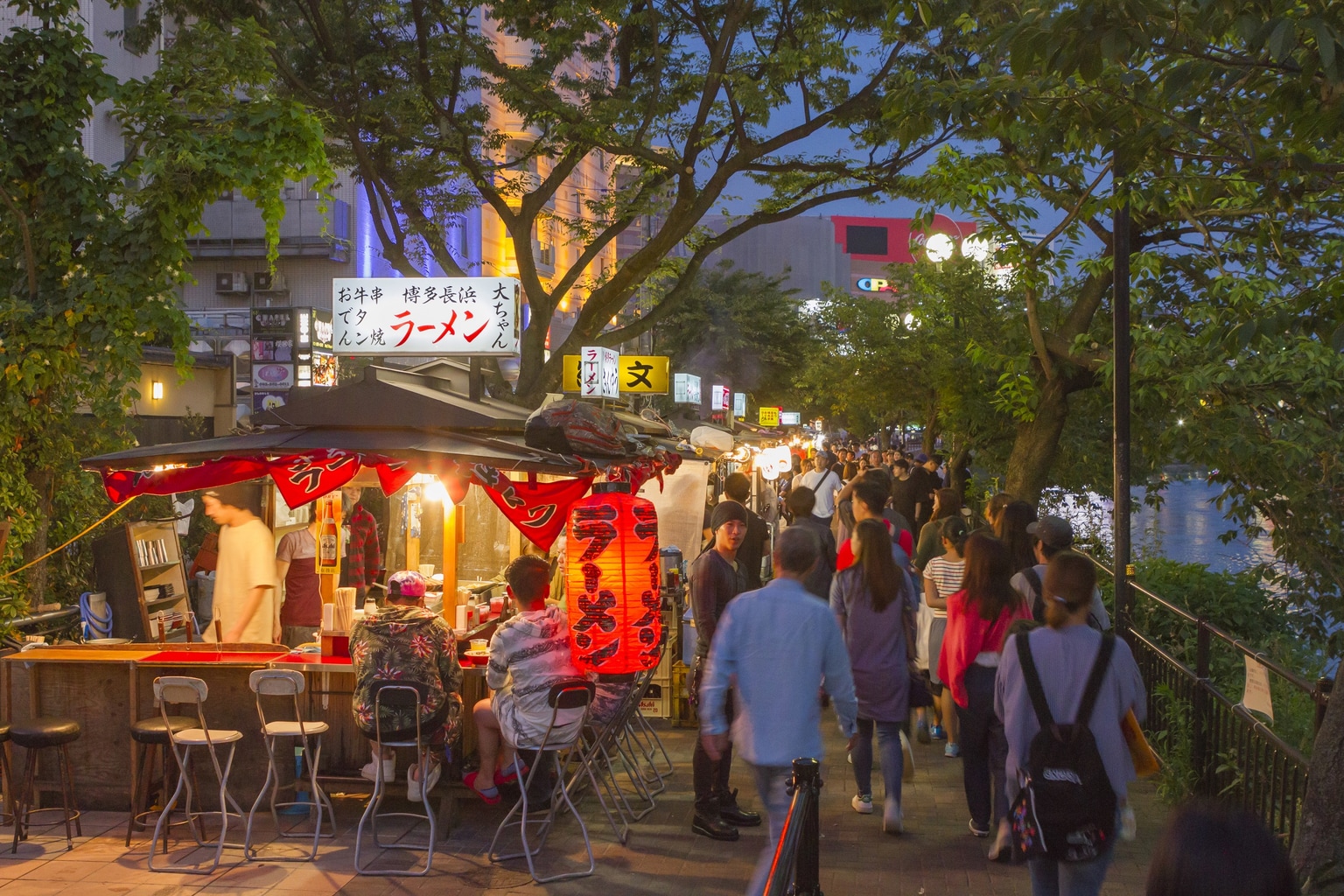
Day 3: Fukula and Kumamoto
10am – a one-stop cultural spot.
No matter what kind of activities you enjoy, you’ll find something to pique your interest at Fukuoka’s biggest green space, Ohori Park, and the adjacent Maizuru Park. The park area was once a part of the moat for Fukuoka Castle and is a popular spot for both tourists and locals. While away a few hours here at one of the cafés, playgrounds or walking courses if you want to take it easy. If you’re a history buff, head to the Fukuoka Castle ruins, where a virtual reality experience brings old stones back to life.
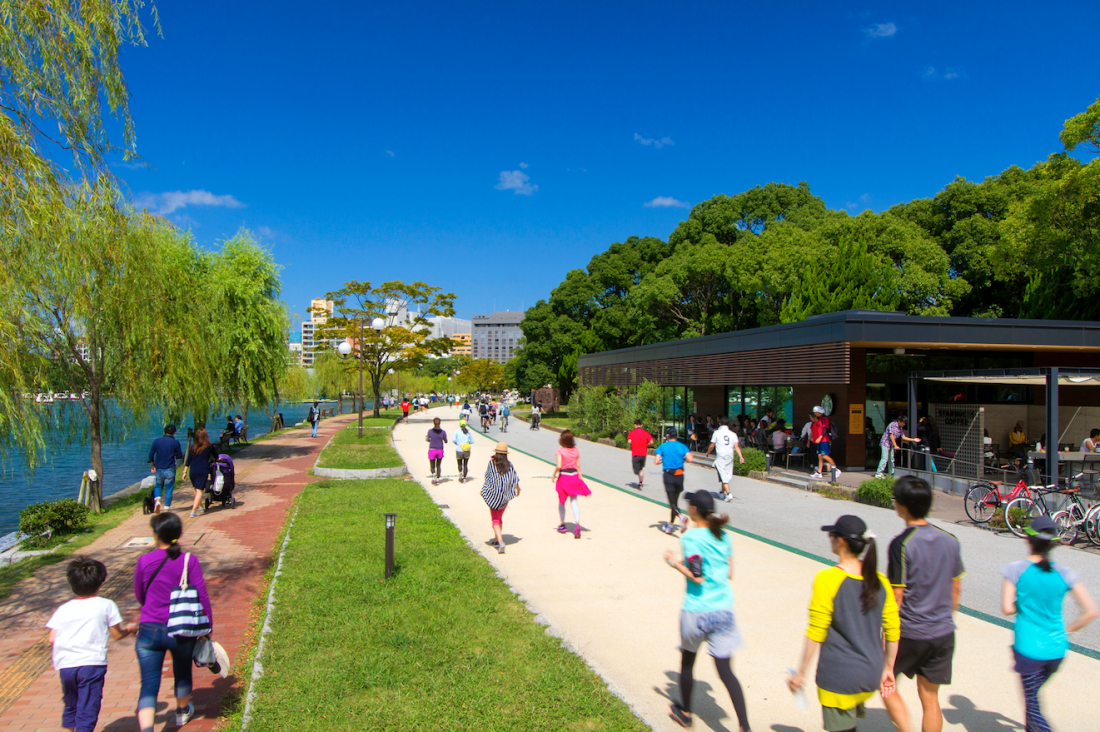
The Fukuoka Art Museum houses contemporary art by Yayoi Kusama, Salvador Dali, Andy Warhol and other acclaimed names. The Ohori Park Japanese Garden is a peaceful oasis in the middle of the city and is stunning year-round. If you’re here on the first or third Tuesday of the month, you can drop by the teahouse (usually available by reservation only) for a reasonably priced mini matcha green tea and confectionary set. For an interactive and intergalactic experience, head to the Fukuoka City Science Museum, which offers a closer look at the universe through the museum’s planetarium dome.
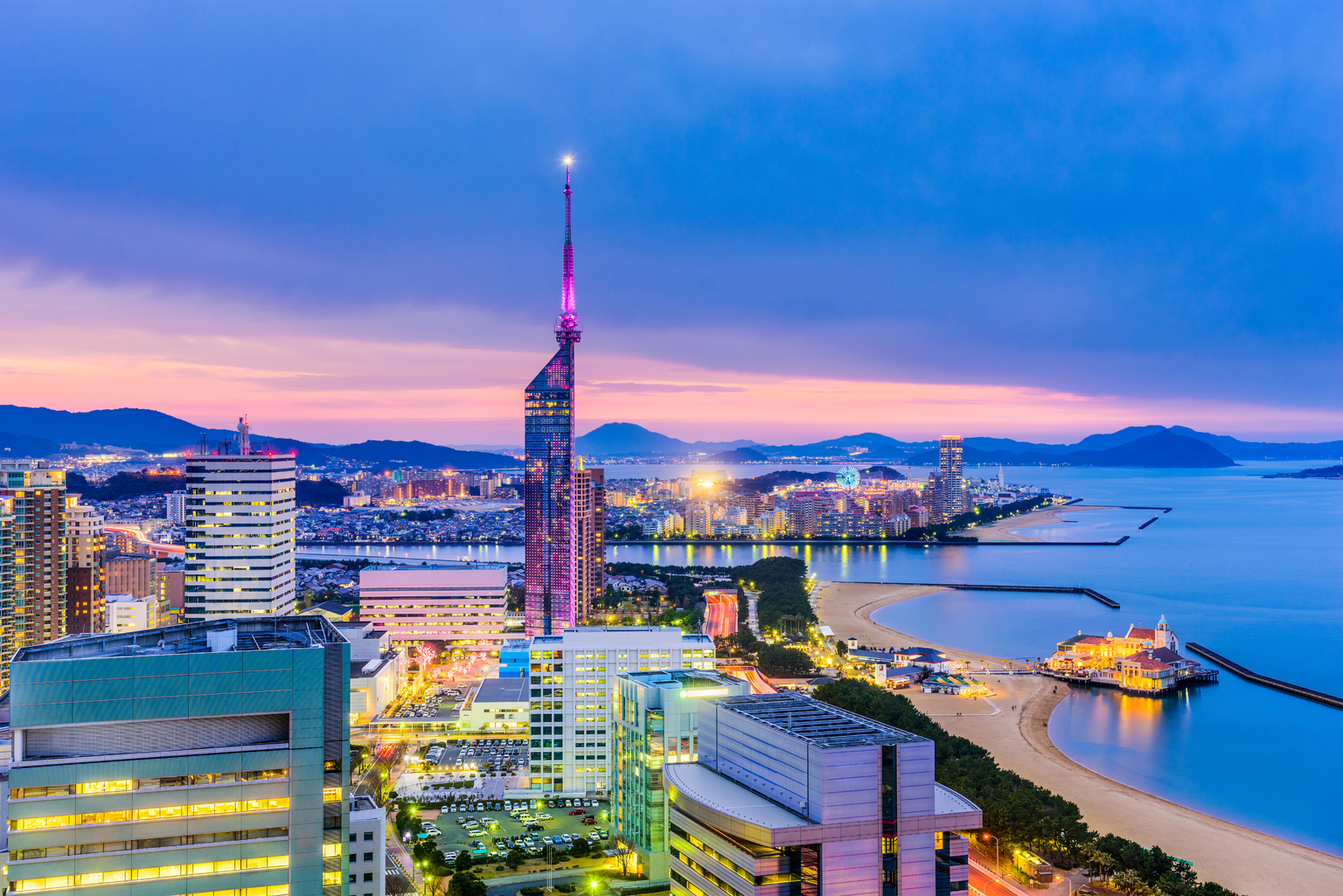
12pm – Ramen Time
Chow down on Kyushu’s famous tonkotsu (pork bone broth) ramen. This specialty dish originates in Fukuoka so you can’t throw a stone without hitting a top-notch ramen joint. Whether it’s a tiny hole-in-the-wall or world-famous chain restaurant, each place has its own special recipe so it’s almost worth hitting two or three different eateries if your stomach can handle it.
Now that you’ve sampled some of Fukuoka’s finest offerings, it’s time to head to a new city and a new prefecture…
Kumamoto city is a sprawling, modern place with one clear central point: Kumamoto Castle. Considered one of Japan’s three premier castles, this structure and its grounds create an awe-inspiring presence, and the samurai spirit here remains strong.
2pm – Tour a Samurai Abode
Though Kumamoto Castle was severely damaged in the 2016 Kumamoto earthquakes, it is undergoing reconstruction and is set to be completed in approximately 20 years’ time. Many inhabitants feel that the city cannot be considered fully recovered from the earthquake until the castle is properly restored. This will take time as workers are using old photos and documents together with modern technology to faithfully restore the castle.
Take a guided tour to learn about the castle, its samurai legacy and the reconstruction work. Book in advance at the Kumamoto Volunteer English Tour Guides website ( www.k-yokatoko.com/english.html ). Note that some areas are still not open to the public but there will be special viewings (9am to 5pm) on Sundays and national holidays from October 5, and on Saturdays only during the Rugby World Cup (October 5 to 12) and the Women’s Handball World Championship (November 30 to December 12). It will open on weekdays (1pm-5pm) from October 5 to 14 as part of the Kumamoto Castle Dai-Tenshu Facade Restoration Commemorative Week but visitors will only be able to enter special viewing areas.
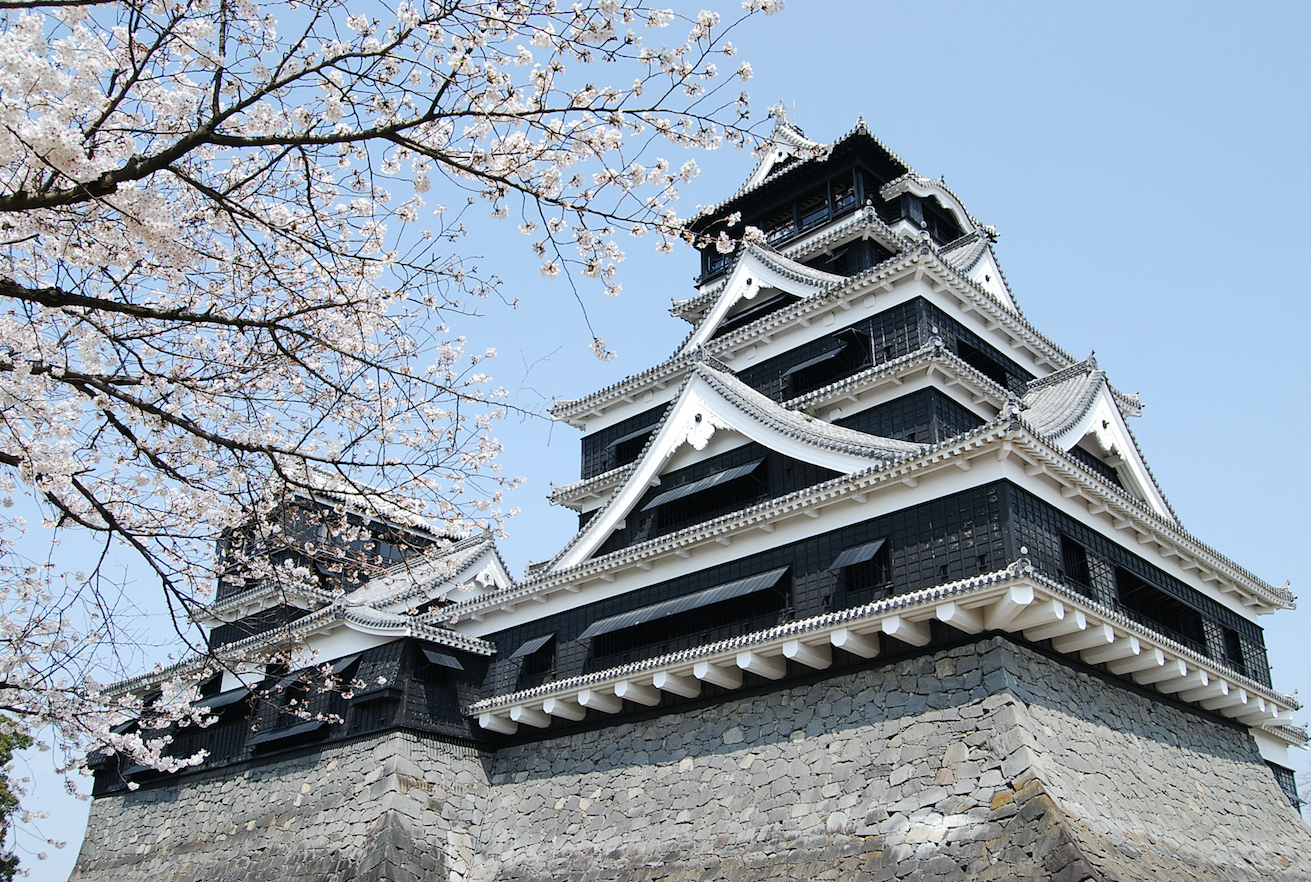
3:30pm – A Taste of History
For one of the best selections of Kumamoto’s specialties, souvenirs and snacks, look no further than Sakuranobaba Johsaien. It is located at the foot of Kumamoto Castle and is easy to access from the castle grounds either on foot or by free shuttle bus. Here you’ll get further insight into Kumamoto’s illustrious samurai history, culture and cuisine in one convenient location. For an in-depth exploration of the past, check out Wakuwakuza’s virtual reality exhibits, plays and live camera feeds of the Kumamoto Castle reconstruction work. You can also dress up in kimono or transform into a ninja or samurai and parade the traditional shopping arcade.

6:30pm – A Soak in Hot Springs
Now that you’re a few days into your trip, it’s time to relax and take it easy. Head to Ueki Onsen, a hot spring resort inside the Kumamoto city limits. Despite its city address, you’ll find rice paddies, a winding river and a sense of serenity in this perfect hot spring getaway. Ueki Onsen has more than 10 traditional inns and hotels to choose from, but you needn’t choose just one. Get a bathing coupon set and make your way around the various hotels, trying a bath at each one. The waters here are low in alkali, which is purported to be good for the skin.
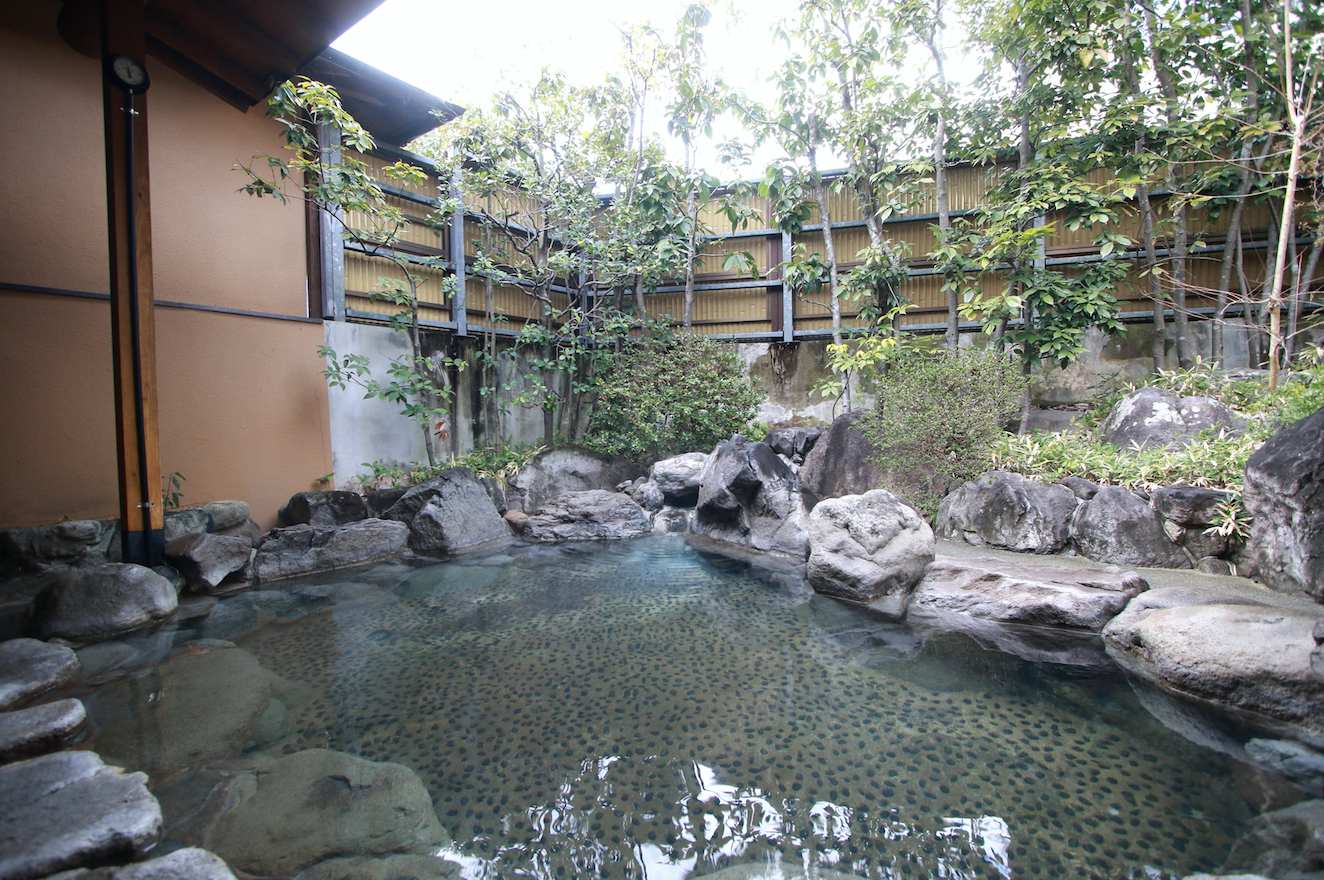
Retire at your chosen inn for the night and enjoy the ultimate Japanese omotenashi (traditional hospitality) with a traditional multicourse kaiseki meal before bed. If you’re feeling particularly adventurous, try a bite of basashi (raw horse meat), a local Kumamoto specialty.
Day 4: Kumamoto and Kagoshima
Start your morning with a soak in a hot spring to make the most of Ueki Onsen’s relaxing vibe before checking out and heading back into Kumamoto’s busy city center.
10am – Shopping Heaven
Now that you’re back in the heart of Kumamoto city, it’s time to explore one of its most famous shopping streets: Shimo-tori Shopping Street. You’ll find anything and everything you may need, and it’s a great place to people watch as locals go about their business.
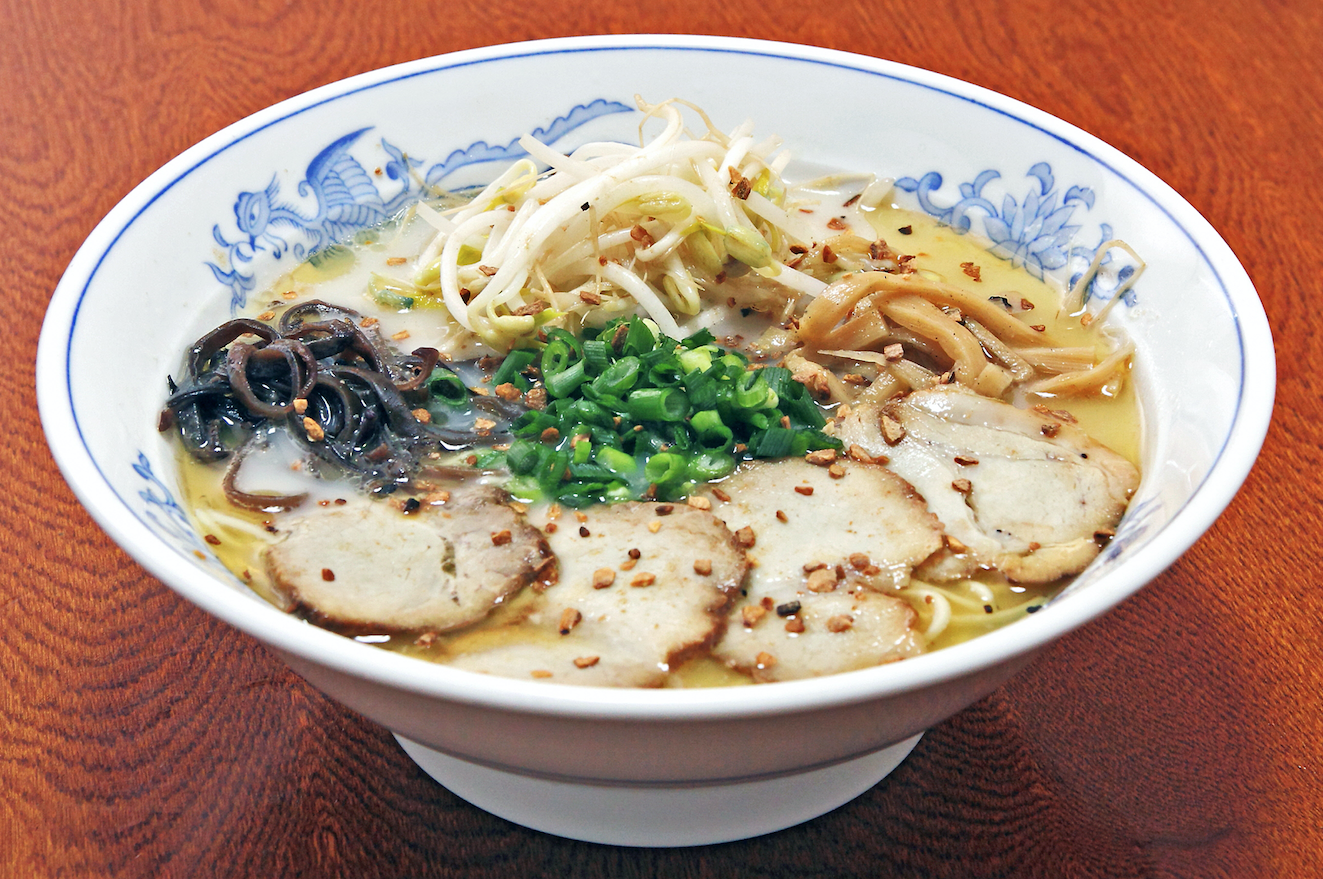
12pm – Kumamoto Magic
Scour the streets around Shimotori Shopping Street and beyond to find a spot for lunch before moving on to the next city. While there are plenty of mouthwatering dishes available, we recommend trying Kumamoto Ramen, a local specialty bursting with fragrant garlic in multiple forms for a pungent but delicious experience. Karashi renkon and hitomoji no guruguru are two excellent side dishes usually found in home kitchens, but often available at restaurants as well. Karashi renkon is a boiled lotus root filled with Japanese mustard and miso, then fried in batter. Hitomoji no guruguru consists of boiled green onions tied into knots and covered with a tart miso and mustard sauce. For something a little milder, try dagojiru, a mild miso soup with flat dumplings and brimming with fresh vegetables.
Hop on the shinkansen to head to the final city and prefecture on your trip. It only takes approximately 45 minutes from Kumamoto to Kagoshima – you’ll be in Kyushu’s southernmost prefecture before you know it.
Another notable region in Japan’s samurai history, Kagoshima city is located in what used to be known as the Satsuma Domain. The area played a vital role in moving Japan towards modernity and was ruled by the Shimadzu family, whose influence is still visible today at the breathtaking Sengan-en garden. On the peninsula across the bay from this well-curated space, you’ll find Sakurajima, an active volcano that towers over the city.
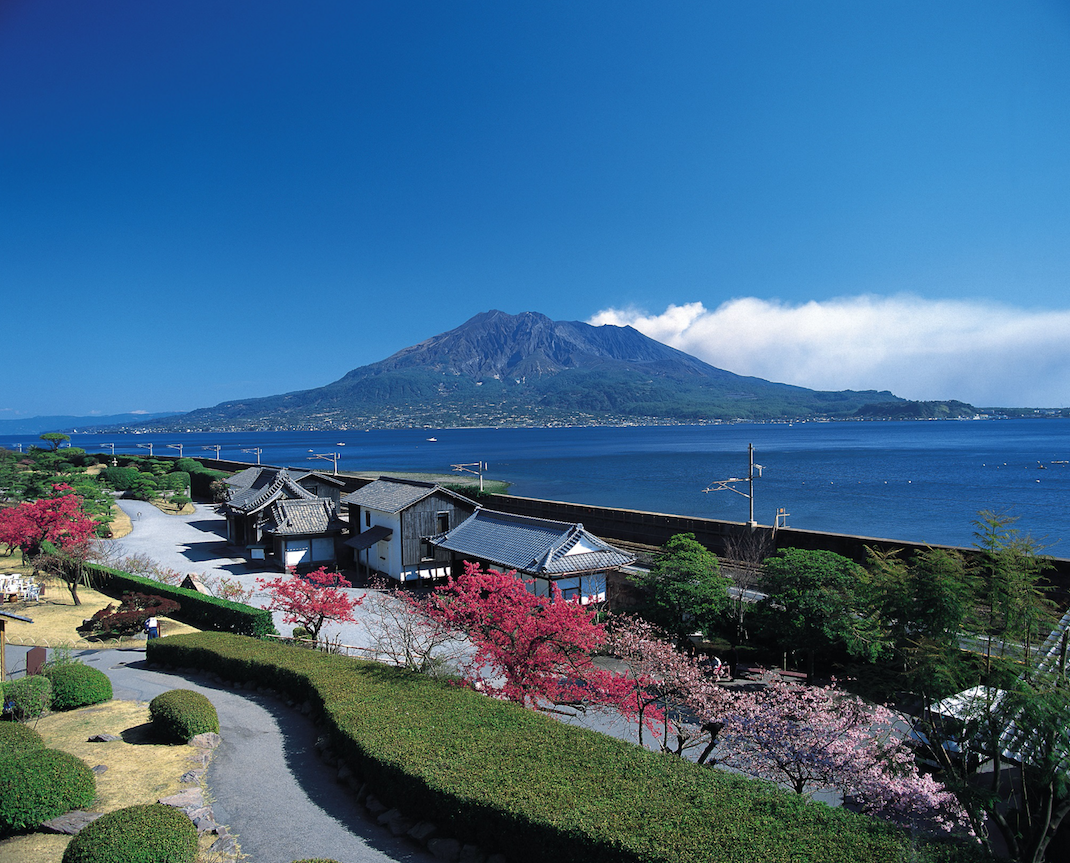
1:30pm – Ascend an Active Volcano
Take a ferry across the bay to explore Sakurajima, one of Kagoshima city’s most notable symbols. This active volcano – which sometimes erupts multiple times a day – stands at 1,117m high and occasionally sends up puffs of ash into the air. There are several observation decks around the Sakurajima peninsula so you can get a closer look at this amazing force of nature. The Sakurajima Visitor Center’s mini museum showcases facts about the volcano then and now, including diagrams of the 1914 eruption that was so powerful it made the former volcanic island of Sakurajima into the peninsula it is today. Whether you prefer to see it up close and personal or you are content to see it from afar, Sakurajima is a must for any visitor to Kagoshima.
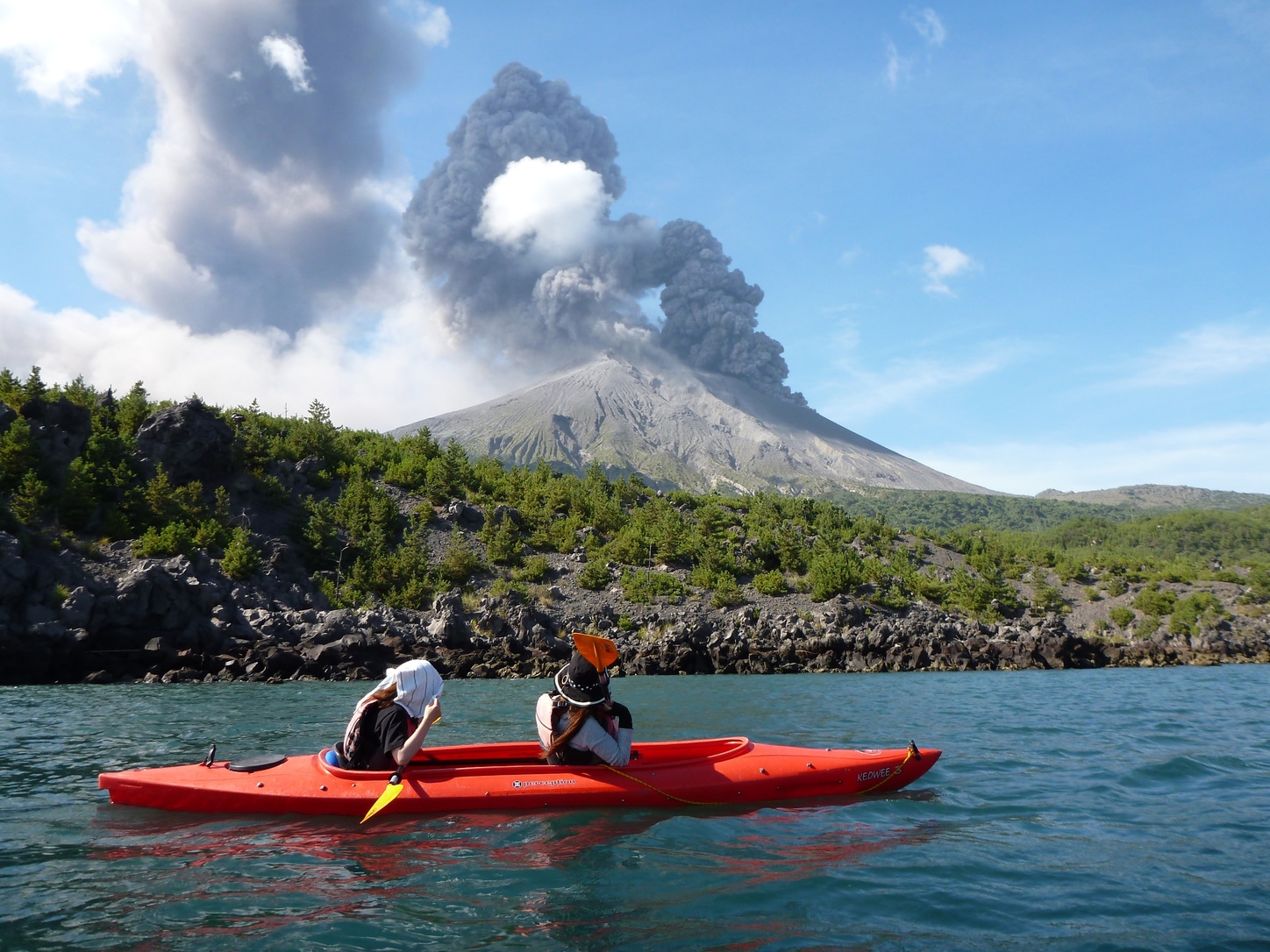
5:30pm – Kyushu Spirits and Soul Food
Head back into Kagoshima’s city center for dinner at Kagomma Furusato Yataimura to sample Kagoshima specialties and meet some locals from the area. Opened in 2012, this village of approximately 25 bars and eateries is a compact location and the perfect starting point to explore the region’s delights. Here you’ll find a thrilling selection of Kyushu’s famous spirit, shochu, rare delicacies such as raw chicken and unagi, as well as standard items such as ramen, tempura and skewered dishes galore.
10pm – Bed and Bath Time
For a peaceful night’s slumber, scale the Shiroyama Hill to reach Shiroyama Hotel Kagoshima. At 108m in height, the hotel looks over the city and across Kinko Bay to Sakurajima, offering panoramic views both day and night. The best view is found from the open-air hot spring baths (note that people with tattoos are not permitted to enter the shared baths).
Day 5: Kagoshima
10am – samurai gardens.
The Shimadzu clan was one of the most powerful samurai families in Japan at one point and has owned Sengan-en, one of the most stunning gardens in Kyushu, for over three centuries. The gardens are vast and a joy to explore and offer multiple views of Sakurajima. Before heading out, take a tour around the house – a central location where state guests and foreign dignitaries were received in the 19th and 20th centuries. Wander up to the hiking trail towards the back of the garden to immerse yourself in its tranquility. You’ll be rewarded with a view over a beautiful waterfall and a commanding view of Kinko Bay and Sakurajima for your efforts.
Back in the main area of the garden you can try on authentic replica samurai armor (make sure to reserve at least three days in advance) for an unforgettable photo opportunity with Sakurajima as a backdrop. The garden also has several eateries and plenty of options for high-quality handcrafted souvenirs. Drop by next door to the Satsuma Kiriko Glassworks to marvel over master craftsmen cutting glass with ultimate precision, and skip into Shoko Shuseikan Museum to learn more about the Shimadzu family’s 800-year history.
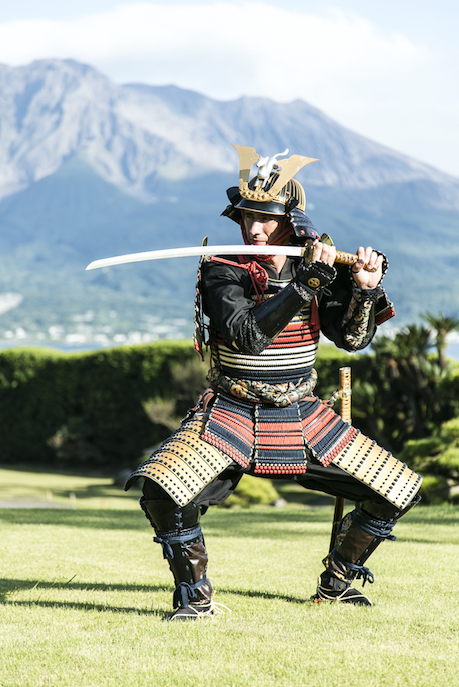
12pm – Perfect Pork
Kagoshima is famous for its black pork, known as kurobuta. It’s tender, rich in protein and vitamin B, and has an unrivaled natural sweetness due to the pigs being raised on sweet potatoes much of the year. It is often served either as tonkatsu (deep-fried pork cutlets) or shabu shabu (sliced into thin strips and dipped into a bubbling broth). Everyone has their favorite way to eat it, but you can’t go wrong with either of these two methods. There are excellent places to enjoy kurobuta across Kagoshima city, but Ichinisan is a guaranteed hit. Sure to satisfy any appetite, Ichinisan has a range of reasonably priced lunch sets ranging from lighter tofu-focused meals to larger portions for those with bigger appetites.

After spending five days and four nights exploring the southern island of Kyushu, it’s time to head back to Tokyo. Though Kyushu may feel like a whole world away, it takes less than two hours to fly there from Tokyo – a very doable distance for those who decide on a return visit.
For more information about each city, go to:
- Fukuoka: yokanavi.com/en/
- Kitakyushu: www.gururich-kitaq.com/en/
- Kukamoto: kumamoto-guide.jp/en/
- Kagoshima: www.kagoshima-yokanavi.jp/english/index.html
Related Posts

Tara: A Mystical Oceanside Town Where You Can Feel the Moon’s Power

An Adventurer's Guide to Kagoshima

The Heart of Aso, Restored: Inside the Rebuilding of Aso Shrine

Discover Yame, Kyushu's Tea Capital

Super Delivery International: Bringing Japan to Your Door

Stay in Style at DoubleTree by Hilton Kyoto Station

A Culinary Wonderland in Hyogo Prefecture

Bringing the Spirit of Fukuoka to Tokyo

Exploring Kitakyushu: A Comprehensive Travel Guide
Introduction.
Welcome to Kitakyushu, a vibrant city located in the Fukuoka Prefecture on the northern tip of Kyushu Island, Japan. With its rich history, stunning natural beauty, and a wide range of cultural attractions, Kitakyushu is a must-visit destination for any traveler. Whether you are interested in exploring historical sites, indulging in delicious cuisine, or simply immersing yourself in the local culture, this comprehensive travel guide will provide you with all the information you need to make the most of your visit to Kitakyushu.
Getting There
Kitakyushu is easily accessible by both domestic and international travelers. If you are arriving from outside Japan, you can fly into Fukuoka International Airport, which is serviced by multiple airlines from various countries. From the airport, you can take a direct train or bus to Kitakyushu. If you are already in Japan, you can reach Kitakyushu by taking a shinkansen (bullet train) from Tokyo or Osaka, which will bring you to the city in just a few hours. Alternatively, you can also take a domestic flight to Kitakyushu Airport, which is located closer to the city center.
Exploring the City
Kitakyushu offers a diverse range of attractions that cater to all kinds of interests. Below are some of the must-visit places:
Akokigaura Beach
Nestled along the coastline, Akokigaura Beach is a picturesque spot known for its stunning panoramic views of the sea and rugged cliffs. It's an ideal place for relaxation, sunbathing, and picnicking. You can also participate in various water sports activities, such as swimming, snorkeling, and kayaking.
Kokura Castle
Kokura Castle is a historic landmark and one of the most iconic symbols of Kitakyushu. Built in the 17th century, this beautifully preserved castle exhibits traditional Japanese architecture and provides a glimpse into the city's feudal past. Inside the castle, visitors can explore the museum and enjoy panoramic views of Kitakyushu from the observation deck.
Mojiko Retro Area
Step back in time and wander through the charming Mojiko Retro Area, a district filled with well-preserved Western-style buildings from the Meiji and Taisho periods. The quaint streets are lined with cafes, boutique shops, and art galleries where you can immerse yourself in the nostalgic ambiance of the past.
Yahata Hill
For nature enthusiasts, a visit to Yahata Hill is a must. This lush green space offers hiking trails, scenic viewpoints, and an abundance of flora and fauna. From the top of the hill, you can enjoy panoramic views of Kitakyushu's skyline and the surrounding mountains.
Kitakyushu is renowned for its delicious cuisine, and food lovers will be delighted by the variety of culinary delights available. Here are some local dishes to try:
Mentaiko, or marinated cod roe, is a popular specialty in Kitakyushu. It is often served as a topping for rice or used as a filling in onigiri (rice balls). The rich and savory flavor of mentaiko is a must-try for seafood lovers.
Kitakyushu boasts a vibrant ramen culture, with numerous ramen shops scattered throughout the city. Each shop has its own unique style and flavor, but one thing they all have in common is the delicious, slurp-worthy noodles soaked in flavorful broth. Don't miss the opportunity to savor a steaming bowl of Kitakyushu's renowned ramen.
Yaki curry, meaning grilled curry, is a local specialty that combines the flavors of curry rice and yakisoba (grilled noodles). The result is a scrumptious dish with a perfect balance of spices, tender meat, and crispy noodles. It's a delightful fusion of two beloved Japanese dishes.
Where to Stay
Kitakyushu offers a wide range of accommodation options to suit every traveler's budget and preferences. From luxurious hotels to cozy guesthouses, you'll find plenty of choices. Some popular areas to consider for accommodation include:
- Kokura: This central district is a convenient base for exploring the city. It is home to a variety of hotels and has excellent transportation links.
- Mojiko: If you prefer a more nostalgic experience, stay in Mojiko Retro Area where you can find charming guesthouses and boutique hotels.
- Wakamatsu: Located near Yahata Hill, this peaceful area offers a tranquil atmosphere and a selection of traditional Japanese ryokans (inns).
Kitakyushu is a city that seamlessly blends modernity with tradition, offering visitors a unique and captivating experience. From its historical landmarks and stunning natural beauty to its delectable cuisine, Kitakyushu has something for everyone. So pack your bags, grab your camera, and get ready to explore all that this enchanting city has to offer!
Sign up for more like this.
- Tours & Experiences
- Tailor-made Trips
- Bahasa Indonesia
We are happy to see you again!
Continue with
Or use email.
No Account? Create one
Create account
Already have an account? Sign in
Quickly Sign up with
I agree to Japan Travel's Terms of Service and Privacy Policy . Terms of--> and acknowledge that Japan Travel's Privacy--> applies to me.-->
Email reset password link
Please check your inbox and click the link we will send to you.

One Day in Kitakyushu
Historic sites and natural beauty combined

Along the Kanmon Strait at the closest point on Kyushu to Japan’s main island of Honshu, Kitakyushu became a major power in the late 19th century as the nation industrialized. It has remained a special attraction in western Japan ever since. Historic sites as well as sculpted and natural beauty prevail, day or night, in this city of around a million people. How much of it can you experience in one day? Take your pick from the top ten attractions.
Downtown Kitakyushu: Kokura Station Area
Most travelers first arrive at Kokura Station, with its Shinkansen, Japan Rail, and city monorail lines, or nearby urban expressway ramp. This area is packed with restaurants, standing bars, bakeries, and shops to explore. Walk just a bit further and find the castle, an old-style market, and an immaculate toilet museum.
Kokura Castle
Before the formation of the city of Kitakyushu, the area’s strategic heart was Kokura, where the Murasaki River flows down from the mountains, through a wide floodplain, and into the waters near the Kanmon Strait.
Kokura Castle adds historic beauty and brings the distant past into the present in this modern metropolis. Next to a large shopping mall, the restored castle holds an eye-catching museum with details on Japan’s most famous swordsman, Miyamoto Musashi, and excellent views of the moat and grounds from the top of the keep. There are beautiful areas for walks and picnics, plus there’s the Kokura Castle Japanese Garden with a samurai-style mansion where you can learn about the art of Japanese tea ceremony and even try some tea yourself.
Tanga Market
Only a ten-minute walk from the castle, take a stroll through the century-old Tanga Market. You’ll see and hear the trade of fresh seafood and produce as well as a wide range of other products. Around the market are a number of restaurants and bars, including one of Kitakyushu’s distinctive kaku-uchi . Inside this particular kind of sake shop is a stand-up bar so you can enjoy your purchase right there. Individual shop times vary, but most of the stores open around 10 am.
TOTO Museum
One of Kitakyushu’s leading companies is TOTO, a manufacturer and seller of water-related products such as toilets, unit bathrooms, and so on. You’ll see the manufacturer’s presence throughout the city, Japan, and around the world, and you can learn about the history and evolution of the water-related products for free in this museum.
Local Gourmet Meals
Like every region of Japan, Kitakyushu boasts gourmet specialties. For lunch, try yaki curry, a curry dish sprinkled with cheese and baked to gooey perfection.
Also famous is Kokura beef. Only a very limited number of Japanese Black wagyu that are raised here have the fine marbling required to pass quality inspection and achieve the coveted label of “Kokura beef.” Grill your own at one of the city’s lively yakiniku restaurants.
Other tasty treats include yaki udon (fried udon noodles), fugu (blowfish), nukadaki (fish cooked in a special nuka-miso sauce), Yahata gyoza (dumplings), Japanese sweets, and more.
Mojiko Retro
Kitakyushu beautifully renovated their historic port district, now called Mojiko Retro. Start at the Neo-Renaissance Mojiko Station, one of the classiest in Japan, dating back over a hundred years and officially classified as one of Japan’s National Important Cultural Properties. From there, stroll through the vibrant streets of the old port, which helped thrust feudal Japan into the modern era by exporting the area’s coal and steel production.
Within walking distance of the station, find several museums and other historic buildings, restaurants, cafés, Kaikyo Plaza Shopping Center, a harbor, ferry rides, an observation deck at the top of Mojiko Retro Highmart, a cool pedestrian drawbridge, a souvenir marketplace, and even a microbrewery.
Kyushu Railway History Museum
While in Mojiko, visit the Kyushu Railway History Museum, a major attraction that appeals to more than railway enthusiasts. Get up close to steam locomotives that are over a century old, peer inside, and take in the smell of oil on steel. Explore a dozen historic engines, cars, and cabs. Even climb in, sit at the controls, and feel what it’d be like to drive one of these powerful machines. Then hop on board a mini-train and drive it around. That’s just outside the museum!
Inside, you can board a Meiji-period train car and see an assortment of historic rails, communication devices, refreshments, and other railway-related items. Hear the sounds of steam engine whistles and operate a small-scale train over bridges, through tunnels, and around a large diorama. There’s also a highly realistic train simulator in an actual cab, where you can drive a modern train yourself down the tracks for two stations. Of course, don’t leave without picking up something stylishly cute from the world of Japanese trains at the specialized gift shop.
Kanmon Strait
Mojiko’s strategic location puts it along a narrow waterway that separates two of Japan’s four main islands, Kyushu and Honshu, and allows ships to pass from the Pacific Ocean and Inland Sea to the Sea of Japan. The Kanmon Bridge spans the strait and ocean liners frequently pass. Watch from Mekari Shrine or Mekari Park’s Observation Deck 2. There are also tunnels below the waterway, including one for pedestrians. The bridge is lit up beautifully at night.
Only half an hour by car or taxi from downtown is a rare karst landscape, one of three in Japan. Upon arrival at this fascinating geological park, rolling mountainsides invite you to hike through the grasses, wildflowers, boulders, and wooded areas. Open your ears and you’ll hear only birdsong, chirping insects, and the wind. The paths will take you past interesting dolines, large depressions characteristic of karst terrains, but some of the most beautiful scenery lies underground.
Limestone caves are another trait of karst landscapes and this area has a few you can explore. The premier example is Senbutsu Cave, with an icy-cold stream cutting through the caves. To go beyond the broad walkway of the entrance, trade your shoes for water slippers and explore upriver and marvel at the gorgeous rock formations.
Kawachi Wisteria Tunnels
If you’re here at the end of April or the beginning of May, the Kawachi Wisteria Garden is a must-see. Two extensive and sublime flower tunnels each approximately 100 meters long are the highlight of the vast gardens, bringing travelers from around Japan and the world.
It’s also worth visiting in November when the distinctively beautiful leaves of the 700 Japanese maple trees change color and create a vivid display of autumn delight.
Mt. Sarakura Sunset
Kitakyushu provides some of the best night views in all of Japan. Reach the top of Mt. Sarakura by cable car and slope car for the best of the best. This mountaintop oasis puts you in natural surroundings but with a view of Greater Kitakyushu. Arrive as the sun begins to set into the sea and the city lights turn on to illuminate the land like a scattering of gems. Wonder at the warm glow of the factories and the tiny lights of squid boats that appear one-by-one beyond the city for the spectacular day-to-night transition.
All ten locations are too much to visit in just one day. So which of these will you put on your list? It’s true that the past industrial boom of northern Kyushu helped build modern Japan and gave Kitakyushu its roots, but intelligent development has pushed the city to become an attractive place to visit with its own distinct feeling and landscape. Whether you are into nature, history, or entertainment, Kitakyushu makes it easy to connect, so live it up for a day here and explore to your heart’s content.
- One-day Trip Itineraries
- Share on Facebook
- Share on Twitter
- Copy link to share
By Tristan Scholze
Sponsored content
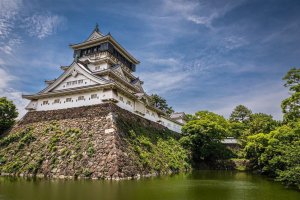

Information
Kokura Castle, Kitakyushu ( Directions )
Book your trip
Find a nearby hotel, explore nearby.

Kokura Castle Complex

Hotel Crown Palais Kokura

Hitchhiking Kyushu
By Adam Hacker

Asano Hotel
By Eitetsu Terakado
Top Articles
- Recommended

Guide to Golden Week

Haneda Airport Ranked World's Cleanest

Tokyo One of the World's Most Walkable Cities

Mount Omuro

Kurobe Unazuki Canyon Route to Link with Tateyama Kurobe Alpine Route

Sapporo Beer Opens New Brewery in Tokyo’s Ebisu

2024 Grand Sumo Tournaments

Tokyo Takes 2nd Place on Top Coffee Cities List

Valley of Witches: a New Ghibli Park Attraction

Guide to Bringing Medicines Into Japan

Your Name: Real-Life Locations in Tokyo

Hachiko Statue in Shibuya

Iwatayama Monkey Park

Shibuya Crossing

Daikoku Car Meet

Kanamara Penis Festival

Guide to Suica Cards

Japanese Urban Legends

Guide to PASMO Cards
More from this category, your name: real-life locations...
By Jianne Soriano
By Ignatius Koh
By Victoria Vlisides
By Julian Kloby
Join the discussion

Let us know how we can help.
Help us improve JapanTravel.com
We welcome any suggestions regarding this content. Your feedback is confidential and will be used to help improve this page.
Suggest an edit
https://en.japantravel.com/fukuoka/one-dayin-kitakyushu/69154
Thank you for your support!
Your feedback has been sent.
You are using an outdated browser. Please upgrade your browser to improve your experience.
Feudalism, festivals and flowers.
A feudal castle town turned manufacturing heartland, Kitakyushu is known for its cutting-edge innovations in eco-friendly technology and its lively, unforgettable festivals within Fukuoka Prefecture.
Kitakyushu, the second-largest city in the southern region of Kyushu , is named after its position at the northernmost point of the region. The city was created in 1963 through a merger of five cities; Kokura, Tobata, Yahata, Wakamatsu and Moji. The unique history, traditions, and natural beauty of each city blend together to give Kitakyushu its unique personality.
Here, the locals truly understand the definition of “work hard, play hard!” which makes it a totally memorable trip while in Japan’s sunny southern region.
Kokura Castle

Kokura Castle at night.
The pride of Kitakyushu is Kokura Castle , a reconstruction of an Edo-era castle first built in 1602. The castle was fully restored in 1990 and overlooks a splendid garden. In late March, the castle grounds become awash in cherry blossoms, making it a picturesque location for hanami (flower viewing).
The castle also serves as a backdrop to two of Kitakyushu’s most spectacular summer festivals, Kokura Gion Daiko and the Wasshoi Hyakuman Summer Festival.
The birthplace of the modern Japanese toilet
Kitakyushu is also home to the headquarters of Toto, which is known for its high-tech Washlet brand toilets. At the Toto Museum , visitors can learn how the company transformed from a humble porcelain maker to the leading name in bathroom innovation through interactive exhibits.
Kitakyushu is also home to the headquarters of Toto.
For the full experience, be sure to try a washlet for yourself in the futuristic public restrooms! The first floor of the museum has a showroom where you can see all of the latest Toto products. The best part? It’s all completely free.
A perfectly preserved port town

Moji Port is charmingly historic and picturesque.
Moji Port is a captivating historic district known for its fascinating museums, seaside promenade, and delicious culinary specialty: baked curry.
Moji became an affluent international port in the late 19th century, and many of the Western-style buildings of the era, including the glorious neo-renaissance style Mojiko Station, are still standing in pristine condition. Besides the train station, one of the most notable buildings is the Former Moji Mitsui Club, where Albert Einstein and his wife Elsa stayed during their trip to Japan in 1922.
Seasonal events
Every summer, Moji Port hosts the massively popular Kanmon Straits Fireworks Festival. Moji and the city of Shimonoseki (across the way in Yamaguchi Prefecture), fire over 15,000 fireworks in a battle to see who can create the biggest spectacle.

Mojiko station is the starting point of Kyushu’s railway in Kyushu.
Don’t miss the beautiful holiday illuminations in December. The holiday illuminations light up the charming brick buildings along the port front. Together with the passing ships, they create a picturesque and oh-so-romantic atmosphere.
Manga, anime and games ga lore
The world of manga (Japanese comics) comes alive at the Kitakyushu Manga Museum . It’s located on the top floor of Aru Aru City shopping mall, an otaku’s paradise full of manga, anime, video game and cosplay shops.
The Kitakyushu Manga Museum not only introduces the history and process of creating manga, but it also pays homage to its home-grown manga artists. One of the most famous of these artists is Leiji Matsumoto, the man behind classic manga such as Space Battleship Yamato. The museum also features rotating exhibits, workshops, and a reading zone with 50,000 books to choose from. Once you’ve finished browsing the museum, you can shop to your heart’s content at Aru Aru City.
A botanical dream world

Possibly the most photogenic flower park ever.
Step into a floral wonderland at Kawachi Wisteria Garden ( Map ), where spectacular tunnels of fragrant purple and white wisterias wind along the lush mountainside of Mount Sarakura. The tunnels, which measure 80 and 110 meters respectively, have over 22 varieties of wisterias to enjoy.
The garden is open from the middle of April through the middle of May, but peak season is typically at the end of April through the beginning of May. Because the flowers are only in bloom for a brief time, it is necessary to reserve your desired date and time by purchasing a ticket for ¥500 at a convenience store. Tickets sell out quickly, so it’s best to purchase them ASAP.
The garden reopens from late November through early December, when visitors can enjoy the autumn foliage of over 700 maple trees.
Things To Know
On foot: From Kokura Station, follow the monorail south until you reach the first four-way intersection. Turn right and walk straight towards the Riverwalk shopping mall. Kokura Castle will become visible as you approach the shopping complex. | By Bus: From Kokura Station Bus Center take the number 36, 45, or 110 bus and get off at the “Kokura jyou matsumoto seicho kinenkan” bus stop.
Toto Museum
By Bus: From Kokura Station Bus Center, take the number. 21, 22 or 43 bus from Platform No. 3, or take the No. 25 bus from Platform No. 4; get off at the Kifunemachi Bus Stop.
From Kokura Station, take Mojiko bound local or rapid train to Mojiko Station.
Kawachi Wisteria Garden
Fees: Adult visitors are also required to pay a ¥500, ¥1,000, or ¥1,500 surcharge at door depending on the condition of the flowers. High school-aged children and younger are exempt from the surcharge. | Directions: From Kokura Station, board an Arao or Tosu-bound local or rapid train and get off at Yahata Station. Board the Ajisai no Yu hot spring shuttle bus from Yahata Station and get off at Ajisai no Yu. Take the left exit from the parking lot and turn left. Follow the road and take your first right. Kawachi Fuji Garden will appear on the left. It is a 5-minute walk. Note: The other option would be to take a taxi from JR Yahata Station, but that would probably run around ¥3,000 oneway.
How To Get There
Kitakyushu, Fukuoka Prefecture, Japan
Kokura Station is Kitakyushu’s main transportation hub. The station serves the Sanyo Shinkansen Line connecting Osaka and Fukuoka. The station also has a bus center for highway bus access.
Note: For specific directions to attractions mentioned in this article, see “Things To Know.”
Where To Stay
- 1-2-1 Bashaku, Kitakyushu-shi Kokurakita-ku, Fukuoka, 802-0077 Japan
- ¥6,900 - ¥22,000
- 4.29/5 (1,636 reviews)
- 1-5-25 Bashaku, Kitakyushu-shi Kokurakita-ku, Fukuoka, 802-0077 Japan
- ¥4,000 - ¥9,000
- 3/5 (51 reviews)
- 1-5-14 Uomachi, Kitakyushu-shi Kokurakita-ku, Fukuoka, 802-0006 Japan
- ¥8,800 - ¥41,600
- 4.38/5 (1,109 reviews)
- 2-3-2 Kyomachi, Kitakyushu-shi Kokurakita-ku, Fukuoka, 802-0002 Japan
- ¥5,100 - ¥50,150
- 3.67/5 (220 reviews)
- 12-3 Otemachi, Kitakyushu-shi Kokurakita-ku, Fukuoka, 803-0814 Japan
- ¥4,760 - ¥38,220
Topics: Castles , Cities , festivals , kyushu , manga and anime , Museums , spring , wisteria
Explore Nearby

- Destination Fukuoka
- Speciality Hiking
With a camping ground, hiking trails, a farm and more, Aburayama has plenty of fun for visitors of all ages.

- Speciality Traditional
Shikaumi Shrine
Visit the shrine said to be founded by the legendary Empress Jingu

- Speciality Neighborhoods
Mojiko Retro
Mojiko was a site of industrial development and a hub for railway travel. Raw materials were shipped to factories in central and eastern Japan via train and ships.
How to Japan
Guide to using the jr pass, 10 foods to try in japan (that aren’t sushi or ramen).
- ©2024 GPlusMedia Inc.
- Terms of Use
- Privacy Policy
Visit Kyushu The Official Kyushu Travel Guide
- Activities & Experiences
- Art & Culture
- Heritage & History
- Wellness & Relaxation
- Food & Drink
- Nature & Outdoors
- Art & Culture
- Heritage & History
- Nature & Outdoors
- Leisure & Entertainment
- About Kyushu
- Adventure Travel
- Book Kyushu Experiences
- Getting to Kyushu
- Getting around Kyushu
- Good to Know
- Staying in Kyushu
- Downloadable Pamphlets
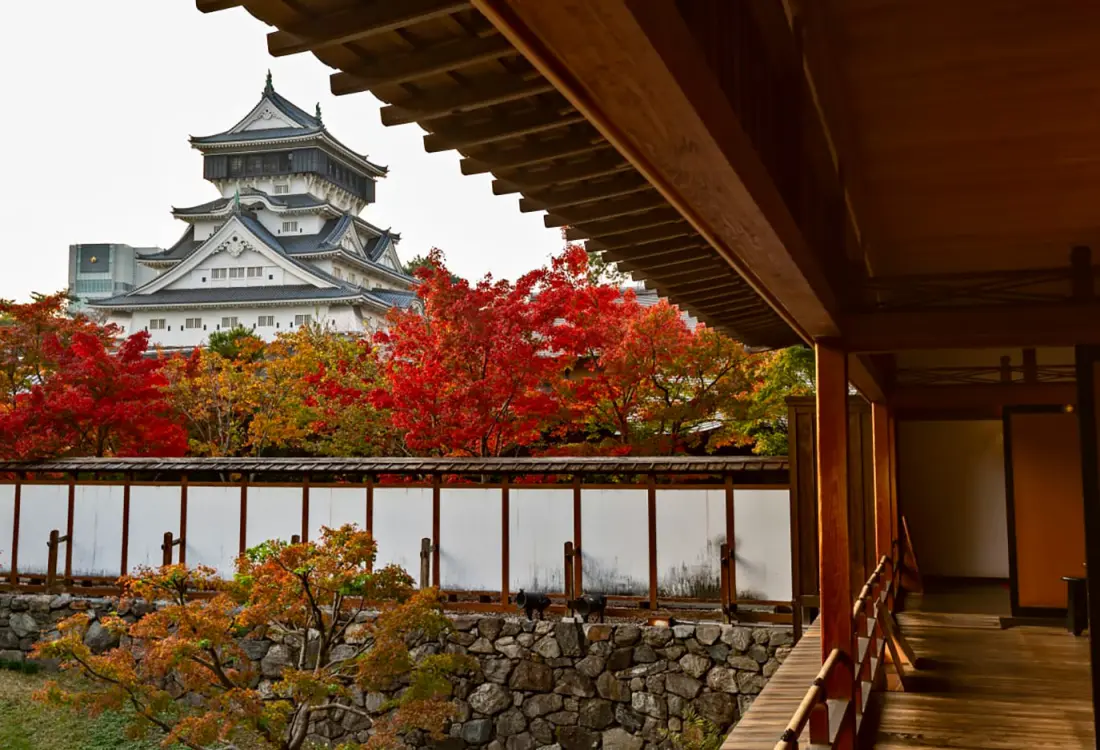
Kitakyushu Highlights
Kokura Castle and Kawachi Wisteria Garden
Fukuoka Prefecture is a treasure trove of Japanese history, natural beauty, and incredible eats. While many visitors to Fukuoka head straight to Hakata station on the Shinkansen bullet train from Tokyo or Kyoto, why not make a stop at Kitakyushu? The adventurous in spirit will be rewarded for their efforts to get off the beaten path.
Kokura Castle
Kitakyushu is Fukuoka Prefecture’s northernmost city, and its Kokura Station is the next stop after Hakata (Fukuoka) on the Shinkansen bullet train line. To the uninitiated, Kitakyushu might look like just another modern urban landscape, with its shopping malls, department stores, and energetic nightlife. But venture into central Kitakyushu and you’ll find its true history is that of an ancient castle town. The visage of historic Kokura Castle stands in vivid contrast to the futuristic look of Riverwalk Kitakyushu, a nearby multi-purpose complex. And while the people of Kitakyushu appreciate the modern conveniences of the area, Kokura Castle will always be the symbol and heart of the city. Tadaoki Hosokawa, a samurai lord who lived in the late Sengoku period and early Edo period (late 16th century to early 17th century) built the castle in 1602, although the current castle tower was rebuilt in 1959.

As I entered Kokura castle, I was prompted to disinfect my hands with sanitizer, and signs posted inside the castle alerted me to follow social distancing guidelines to prevent the spread of the coronavirus.
Inside the castle, I spent a leisurely time browsing the exhibition corner introducing the history of Kokura Castle. While the exhibition corner introducing the history of Kokura Castle has exhibits for all ages and interests, I particularly enjoyed several glass displays where you can see huge dioramas of Kokura Castle and the town as they appeared in their prime. The incredible level of detail found in these dioramas helped me envision what daily life in a castle town might have been like.

A large taiko drum on display was taken from its original location on the top floor of the castle. While taiko drums are commonly used for musical and religious performances, this one was used to sound a warning for the people in the event of a natural disaster or attack. Also on display was a palanquin that feudal lords rode in as they traveled back and forth between Kokura and Edo (modern-day Tokyo) which visitors can actually enter to experience what it was like to ride on one. It was hard to imagine making the weeks-long journey from Kyushu to Tokyo inside such a small contraption, but I suppose it was better than having to carry it!

Another room depicts a group of samurai seated in the throne room discussing military strategy. The history of Kokura Castle came alive as I interacted with these life-like displays and watched historic events in a wide-screen theater.

Little did I know, the best was still to come. From the top floor of the castle, I witnessed an incredible panoramic view of the town below. The most spectacular view is from the east side of the observatory where one can look down at the beautiful Kokura Castle Japanese Garden. Just beyond the garden, you can see the Murasaki River. The side of the river closest to the castle was where the samurai lived and the other side was where the townsmen lived, but you’ll have to use your imagination as both have been modernized beyond recognition.
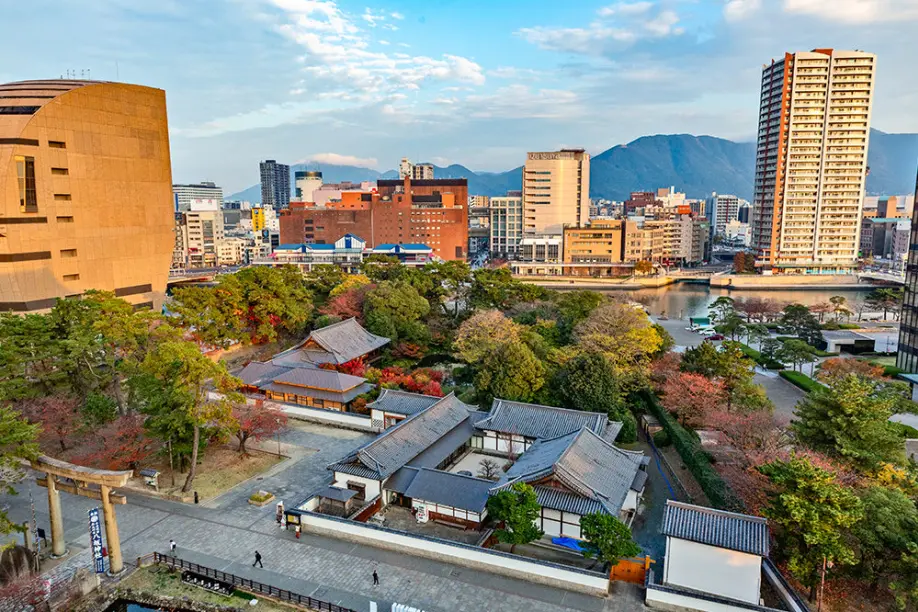
Kokura Castle Japanese Garden
After an aerial view of the garden from the castle tower, I was excited to stroll through the Kokura Castle Garden to see it up close. The garden was built in 1998 on the site of the former guest house of the daimyo (feudal lord). This garden, along with the Shoin House, is a recreation of property owned by a samurai family during the Edo Period. After paying the fee and entering the garden, I was greeted by the spectacular sight of a path lined with sugar maple and red maple trees.
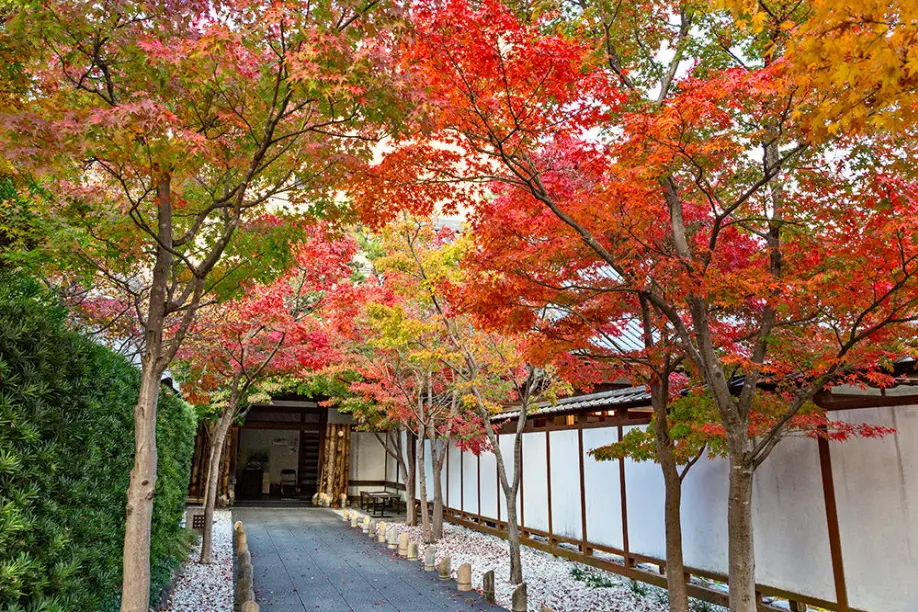
The maple tree path led me to the Shoin House. This is where the samurai lord would have carried out his duties and entertained guests. From inside the rooms, the guests would be treated to a beautiful view of the garden and pond below and the majestic sight of Kokura Castle beyond it while enjoying matcha green tea.
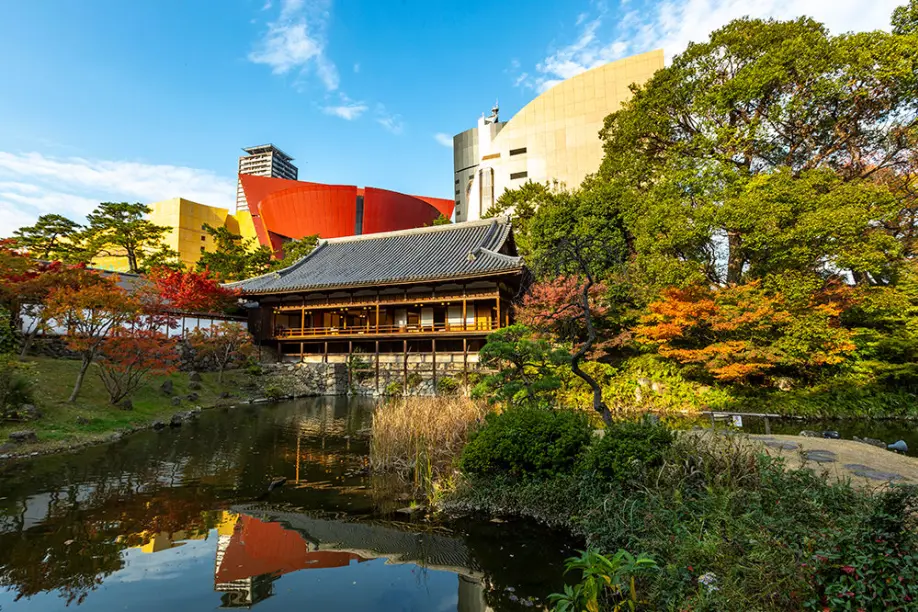
I paused to take a picture of Kokura Castle and the big torii gate next to it, an unusual opportunity to photograph two of Japan’s famous icons together.
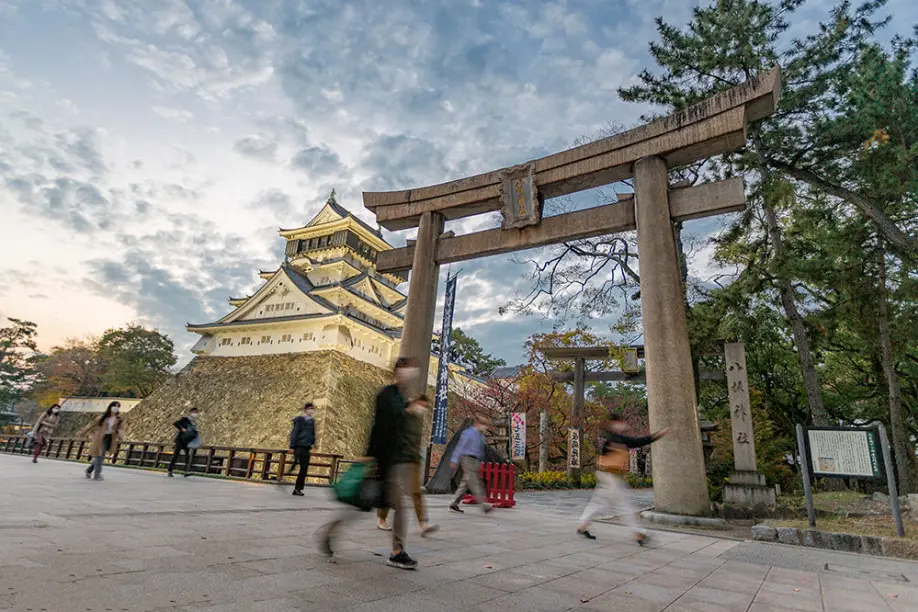
Kitakyushu Kawachi Wisteria Gardens
I would also like to introduce another great place in Kitakyushu. It is a spectacular view that can only be encountered during the latter half of April and the first half of May. The Kawachi Wisteria Garden is a 25-minute drive away, and it offers a wonderful view of wisteria in the spring. Thanks to their feature on CNN International, these gardens have become a destination for many people from around the world. This private Fukuoka garden had its beginning in 1977 and showcases about 100 trees which consist of 22 types of wisteria in a vast array of colors, growing over an incredible 10,000 square meter area. Two wisteria tunnels are especially popular; the first one is 80m long and the second is 220m long. Entering the tunnels, I felt as if I entered some mystical world of color.
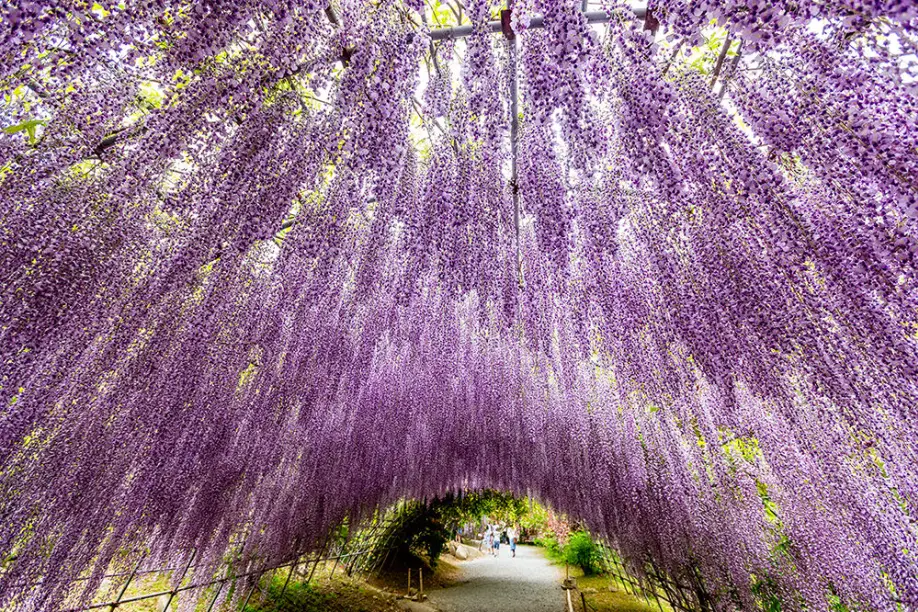
The tunnels may be the most popular attractions in the garden, but just as lovely are the wisteria domes and trellises. Thousands of wisteria flowers hang down from above, backlit from the sunshine overhead. The effect is something difficult to fully capture in a photograph.
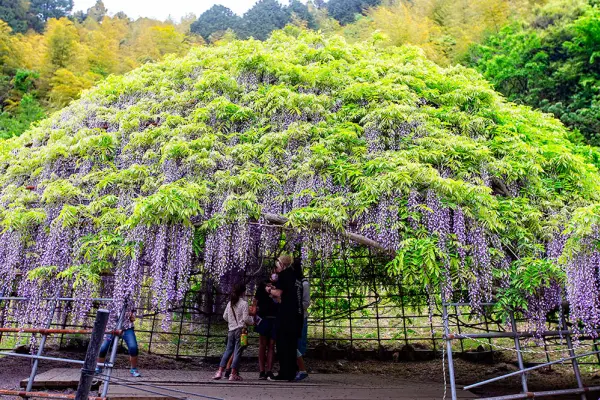
As you stroll the gardens, you feel your stress being lifted off your shoulders as you take in the incredible colors of nature. I also enjoyed watching other families, couples, and friends mesmerized by the magic of its natural beauty.
The Kawachi Wisteria Garden and its wisteria, which blooms from late April to early May, is a popular destination spot so don't forget to buy your tickets in advance at a convenience store.
For both its dramatic samurai history and the beauty of its gardens, Kitakyushu is a worthy place to explore on your visit to Kyushu.
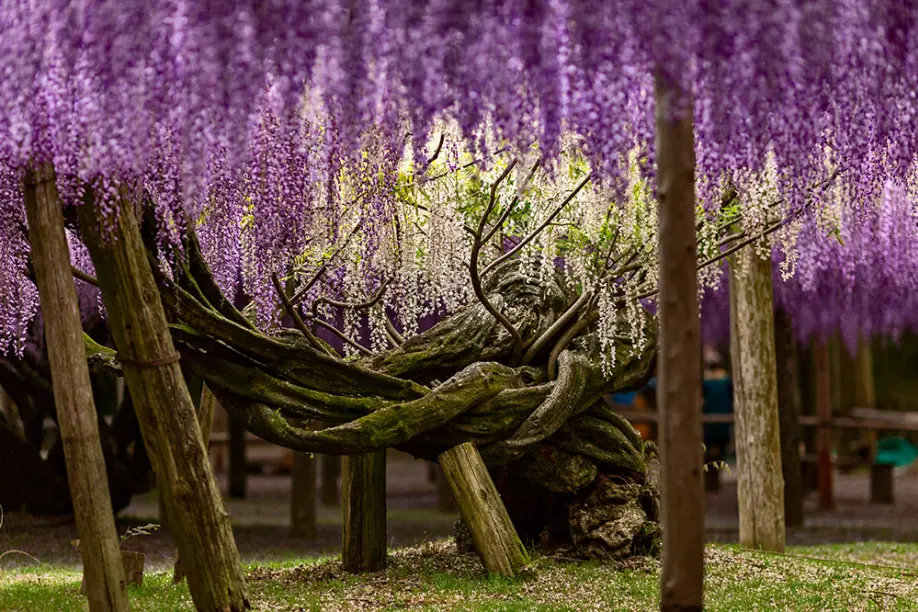
Note: This blog post was written during a time when preventive measures for COVID-19 were being undertaken. These measures are expected to be relaxed going forward.

Riz is a freelance writer, photographer, and adjunct university lecturer. He once mistook wasabi for matcha ice cream. Having lived in Japan for 20 years, Riz no longer makes this mistake. He is happily married, has 3 children, and one skittish cat.
Share this Page

- Travel Blogs

Related See & Do
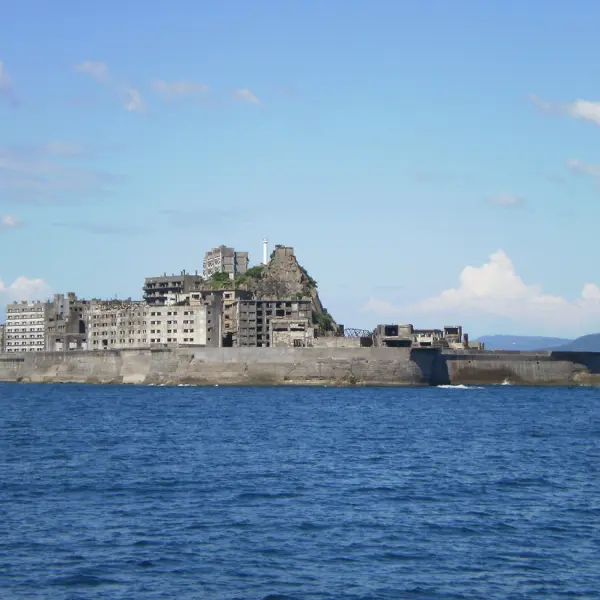
- Kitakyushu Highlights: Kokura Castle and Kawachi Wisteria Garden
- Destinations
- Travel Tips
- Travel With Us
- Paid Travel Internship
- TTIFridays (Community Events)
- SG Travel Insider (Telegram Grp)

6-Day Kyushu Itinerary — Chasing Autumn in a Quieter Side of Japan (Fukuoka, Kagoshima, Beppu)
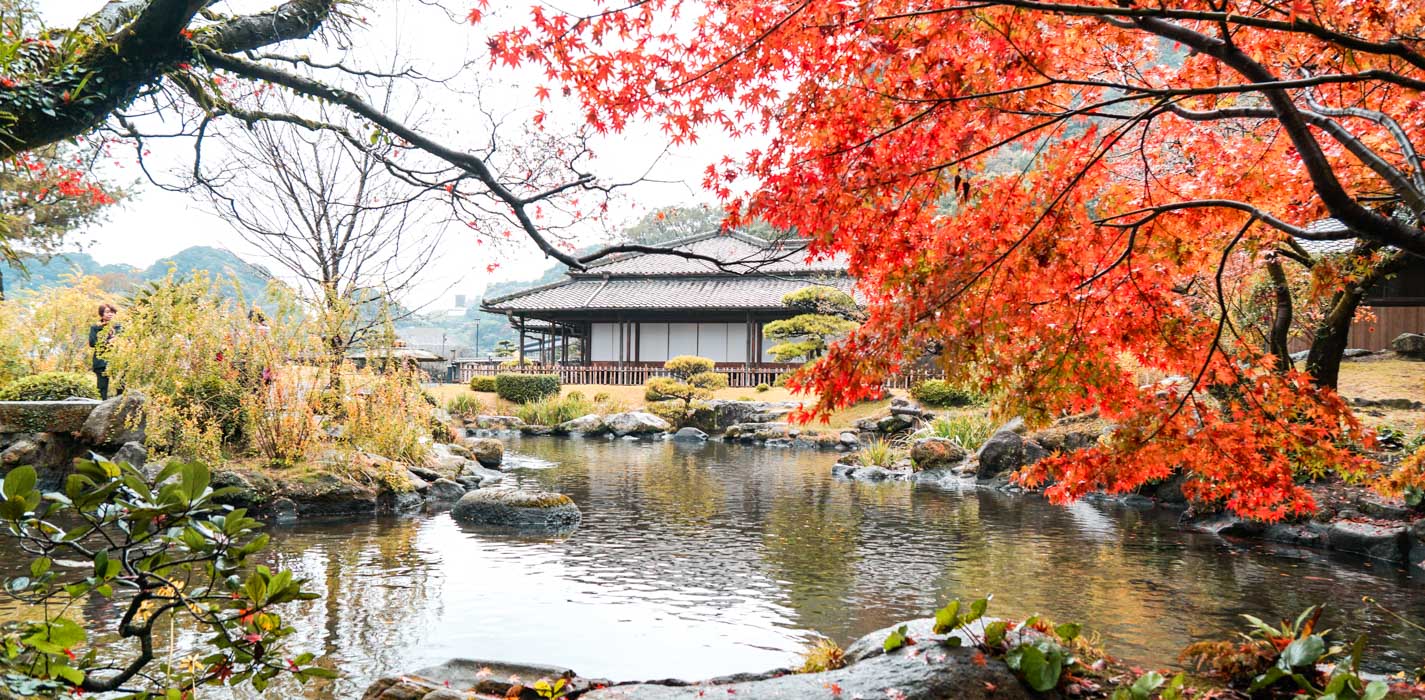
What’s good in this Kyushu itinerary: Chasing autumn colours on Kyushu’s scenic retro trains from Fukuoka to Kagoshima. Eating at traditional roadside yatai stalls. Unique sauna episodes under volcanic sand.
Japan may scream TOKYO but if you’re looking for food and experiences authentically Japanese sans the crowds of Tokyo , Kyushu is a great introductory destination into Japan.
This Kyushu itinerary brings you Southwest of Japan’s main island during the beautiful season of autumn!
Pre-trip Essentials
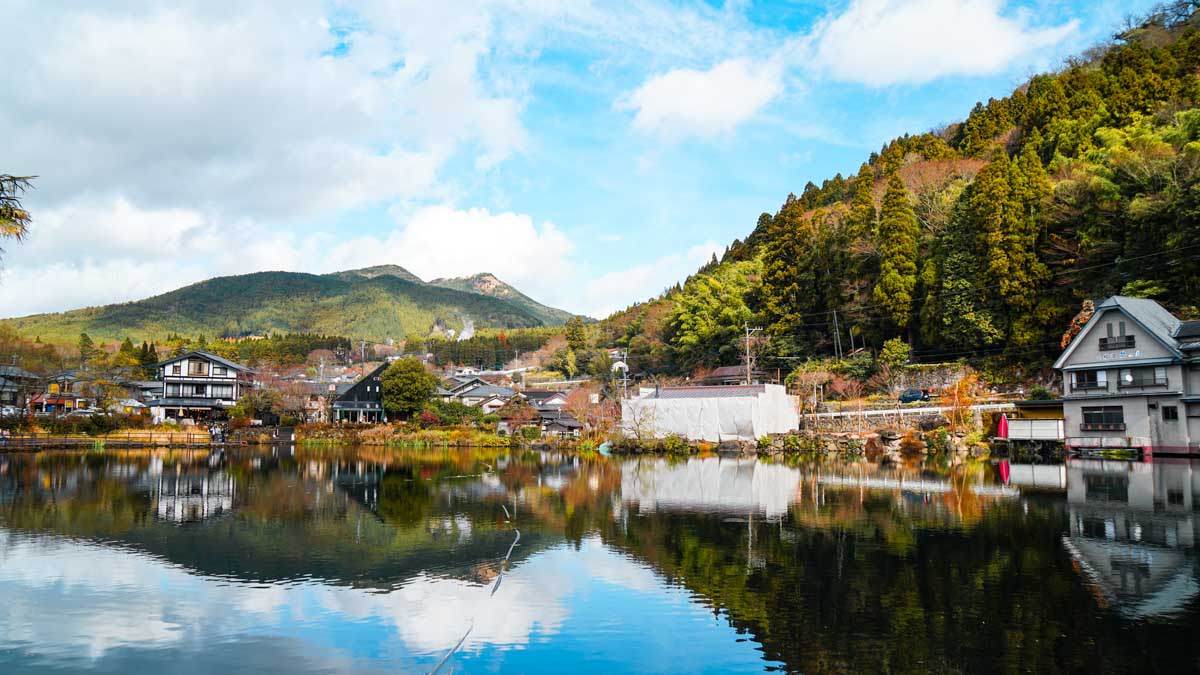
Getting around: IC cards (Suica, Pasmo or Icoca card) for intercity transportation. JR Kyushu Pass for interstate travel all around Kyushu. Download mobile app Japan Travel for updated train schedules and route plans.
Staying connected: Get your SIM card online and delivered to your doorstep before your trip! Alternatively, pre-paid travellers’ SIM cards are available from Fukuoka International Airport.
Flights: Prices for flights from Singapore to Fukuoka (where this itinerary starts at) vary all year round, so check prices for your dates of travel with this nifty tool .
Read also: 7-Day Tokyo & Mt. Fuji Itinerary
Day 1: Fukuoka (Hakata)
Kushida shrine (櫛田神社).
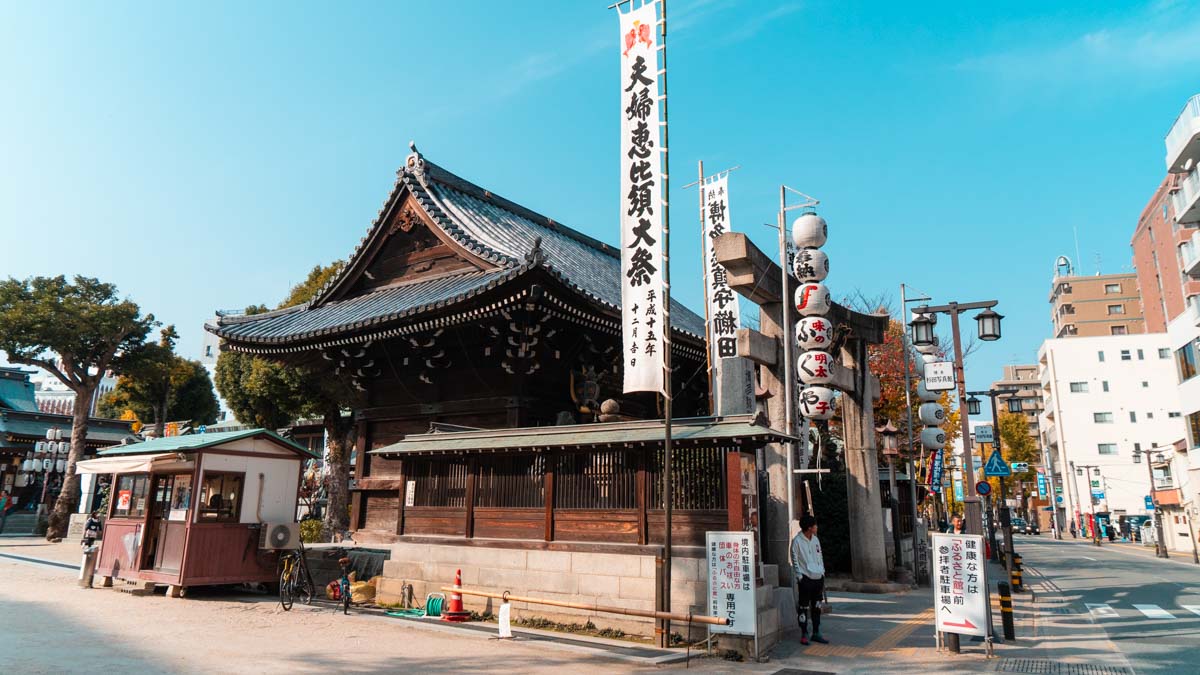
Seen as a guardian temple of Hakata ward, Kushida Shrine is the oldest and most important shrine in the area, 5 minutes from Gion subway station.
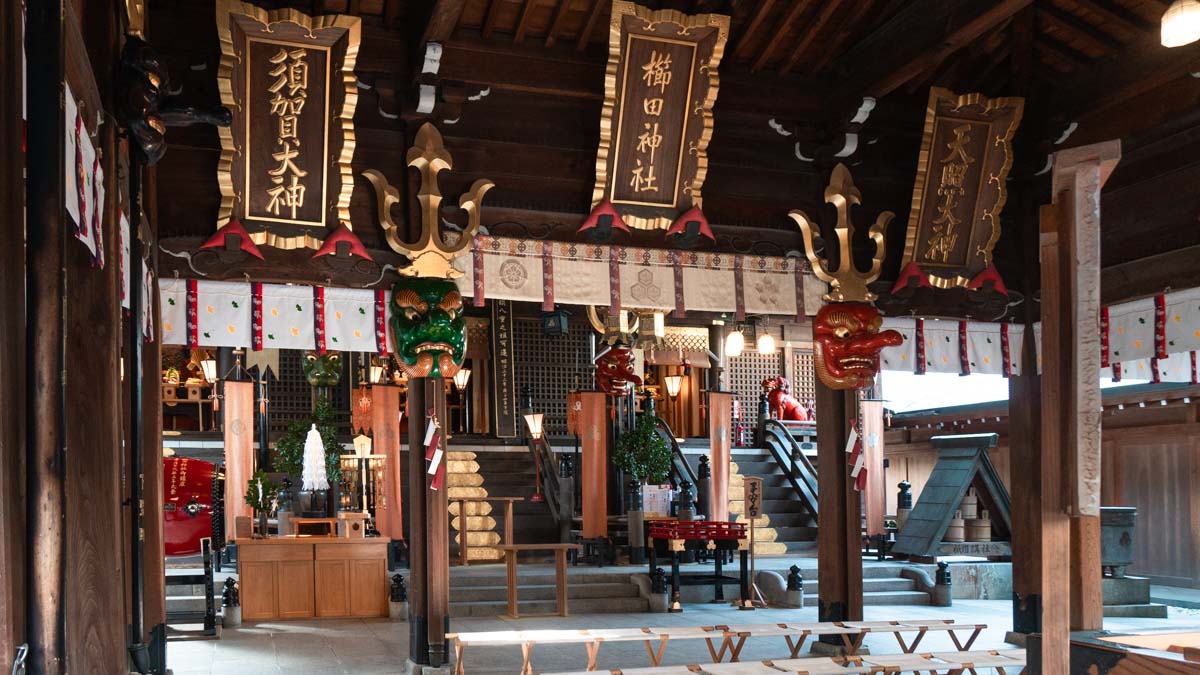
Tengu masks with exaggerated noses in Kushida Shrine.
This shrine comes alive in the summer with the impressive Hakata Gion Yamakasa festival when giant decorative floats make their way across the city starting from the shrine.
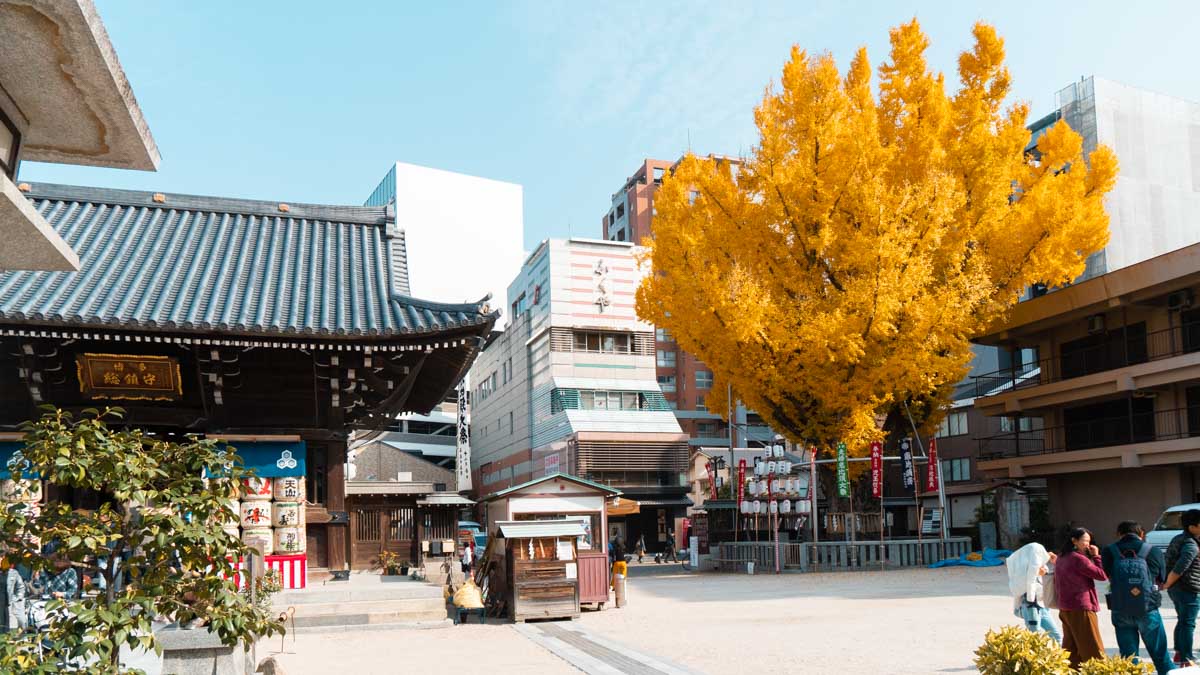
The thousand-year-old Ginkgo tree of Kushida Shrine.
During the autumn months, another impressive giant takes the centre stage: a millennia-old Gingko tree symbolising longevity turning a vibrant yellow.
Entrance fee: Free Opening hours: 4AM – 10PM Address: 1-41 Kamikawabatamachi, Hakata, Fukuoka-shi, Fukuoka-ken
Lunch at Fukuei Kumiai (福榮組合)
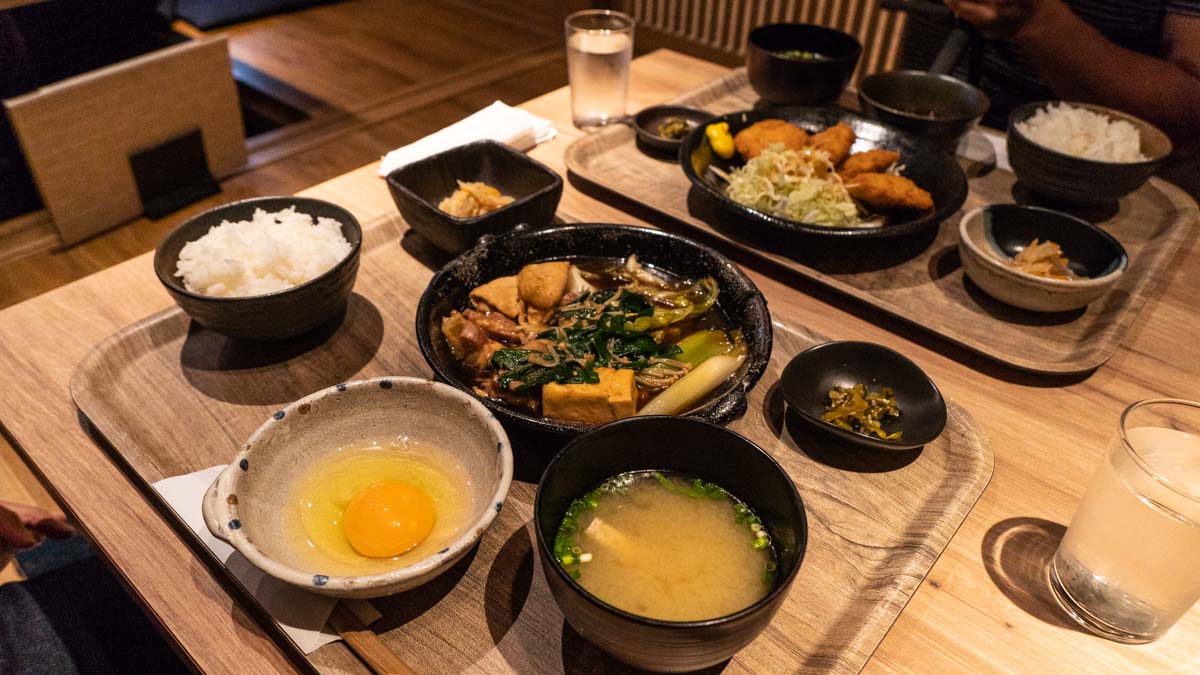
Try the Fukuoka specialty “jidori”, which means local-raised chicken, here at Fukuei Kumiai .
Of Fukuoka’s many unique localised cuisines, one must-try is the “jidori” , a poultry breed exclusive to the prefecture that’s known for its robust flavour. Don’t be surprised if you see “raw chicken” on menus in Fukuoka, because jidori chickens are said to be clean enough to be eaten sashimi-style.
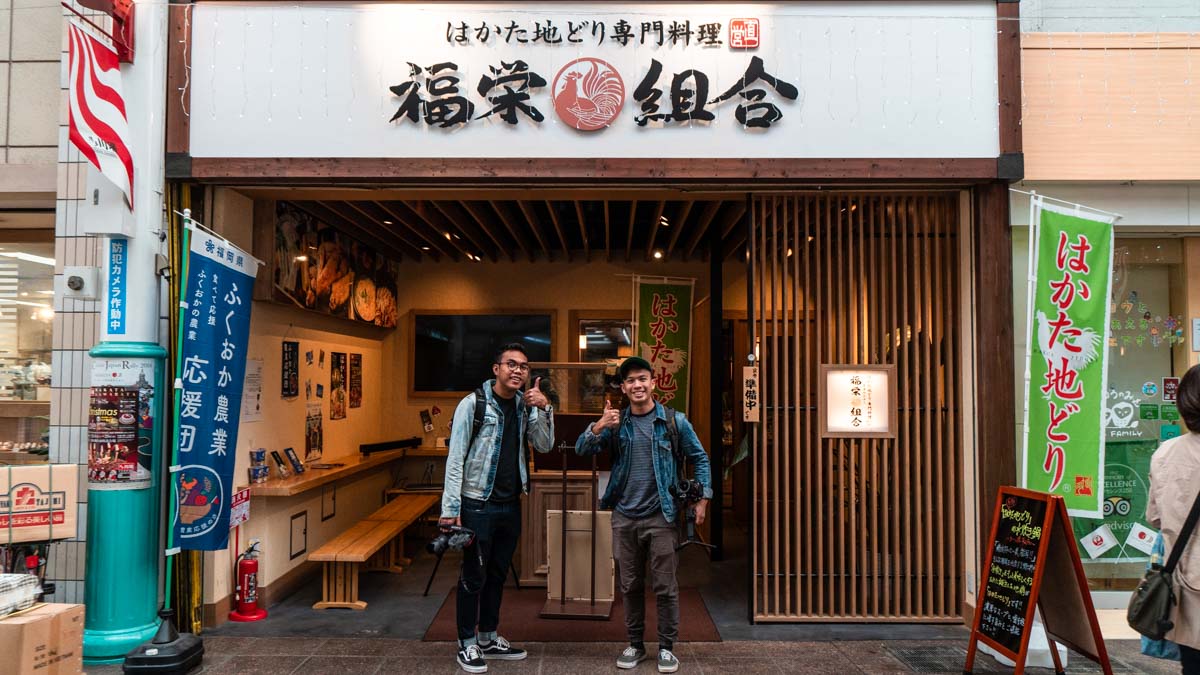
Even if you’re not adventurous enough to try raw chicken, you can get cooked jidori chicken at Fukuei Kumiai either deep-fried, grilled, or braised in vinegar.
Cost: From ¥830 (lunch set) Opening hours: 11:30AM – 3PM, 5PM – 11PM Address: 4-210 Kamikawabatamachi, Hakata Ward, Fukuoka, Fukuoka Prefecture 812-0026, Japan (Within Kawabata Shopping Street).
Canal City Hakata
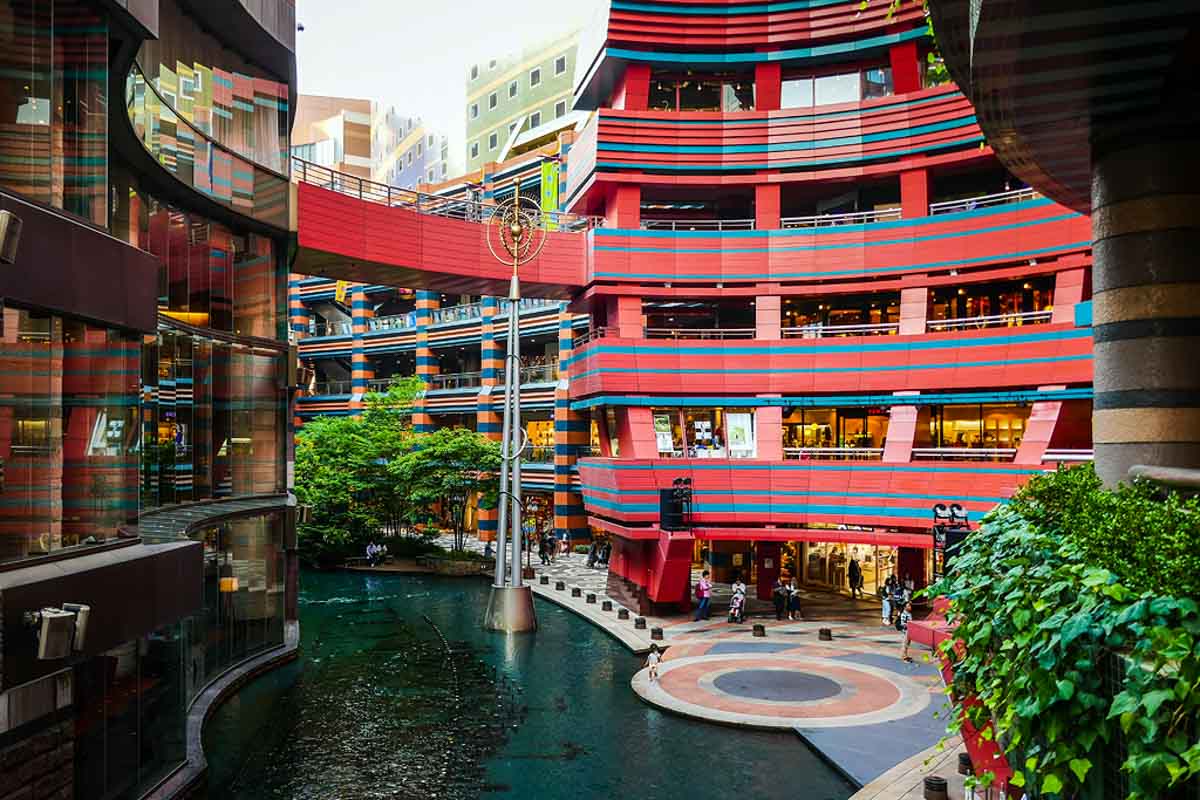
Photo credit: Ann Hung Flickr
Built around an artificial canal, Canal City Hakata is a mall so big that locals call it “a city within a city”. With over 250 shops and dining spaces, Canal City Hakata is every shopaholic’s haven and also the go-to for Fukuoka specialties.
Opening hours: 10AM – 11PM (retail shops close by 9PM) Address: 1-2, Sumiyoshi, Hakata-ku, Fukuoka-shi, Fukuoka Prefecture 812-0018
Fukuoka Zoo & Botanical Garden (福岡市動植物園)
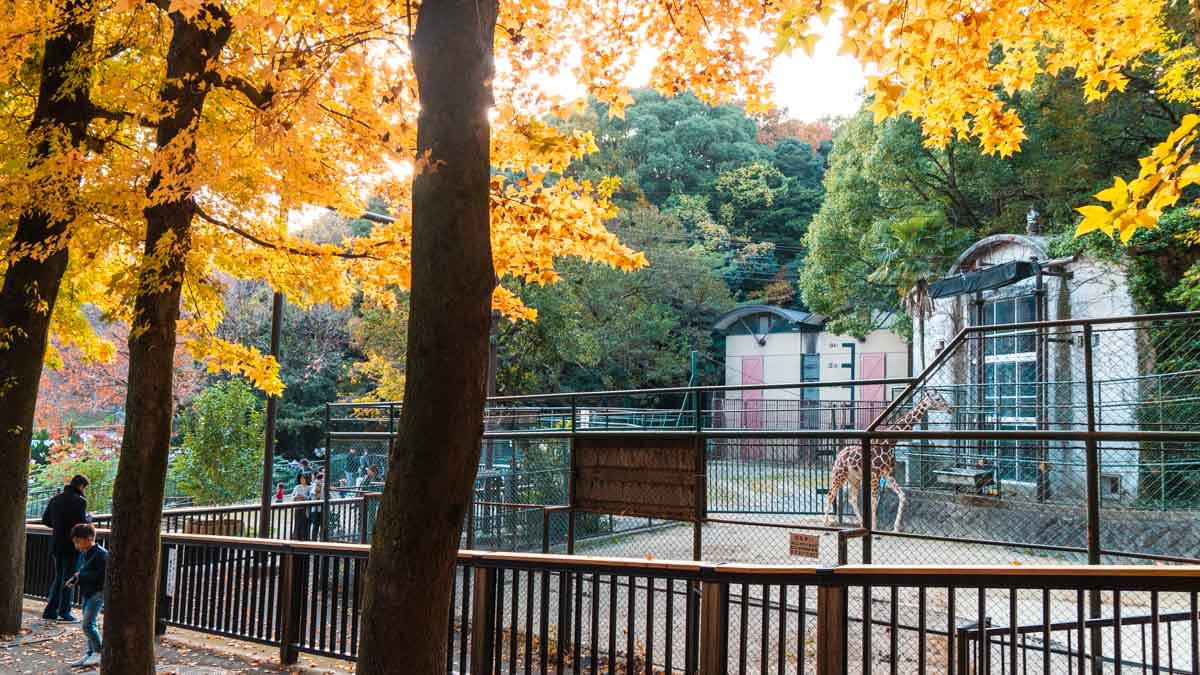
Yes, we get it, zoos are basic. The Fukuoka City Zoo & Botanical Garden is, however, a nice getaway from the bustling city. Established in 1953, the Fukuoka Zoo is not the most impressive animal sanctuary out there, but it houses a modest collection of animals from macaques to giraffes and tigers.
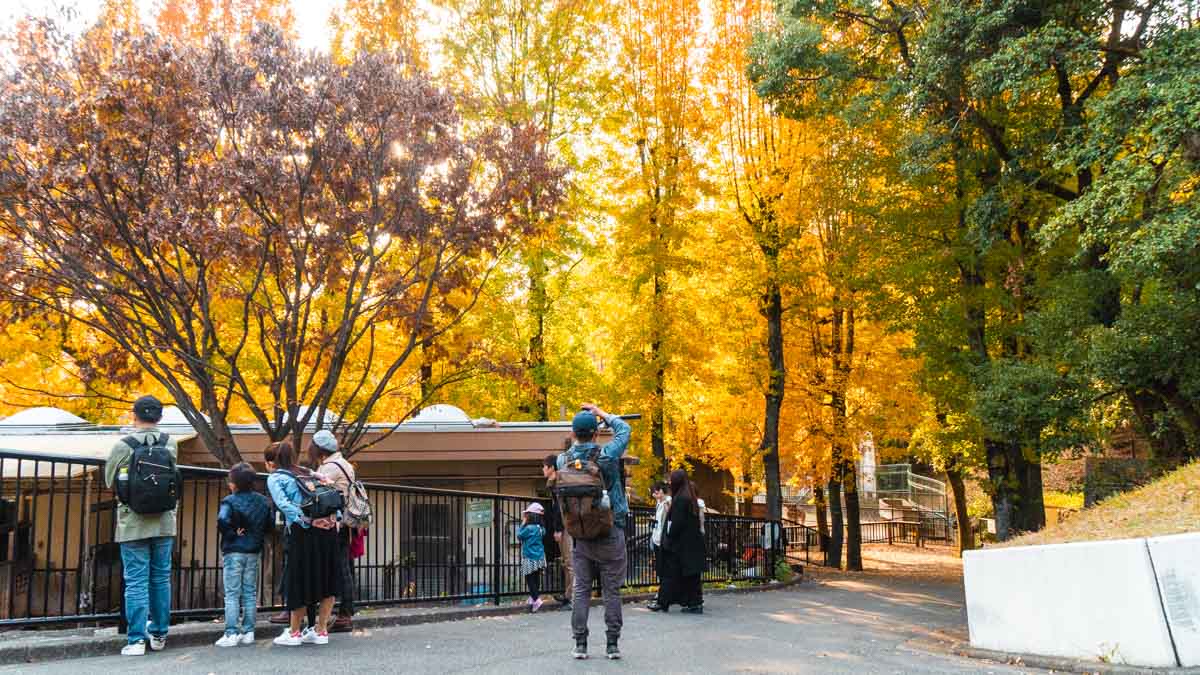
The abundance of trees in Fukuoka City Zoo makes it a great place to admire the autumn colours.
Adjacent to the zoo is the botanical garden that has 2,600 kinds of plants. If you’re like us chasing autumn colours in Kyushu, the Fukuoka Zoo & Botanical Garden is a must-visit! At ¥600 for entry to both the zoo and garden, it’s a great bargain for Japanese standards!
Entrance fee: ¥600 Opening hours: 9AM – 5PM (last entry at 4:30PM), closed on Mon Address: 810-0037 Fukuoka-ken, Fukuoka-shi, Chūō-ku, Minamikōen
Dinner at Ichiran Ramen (一蘭)
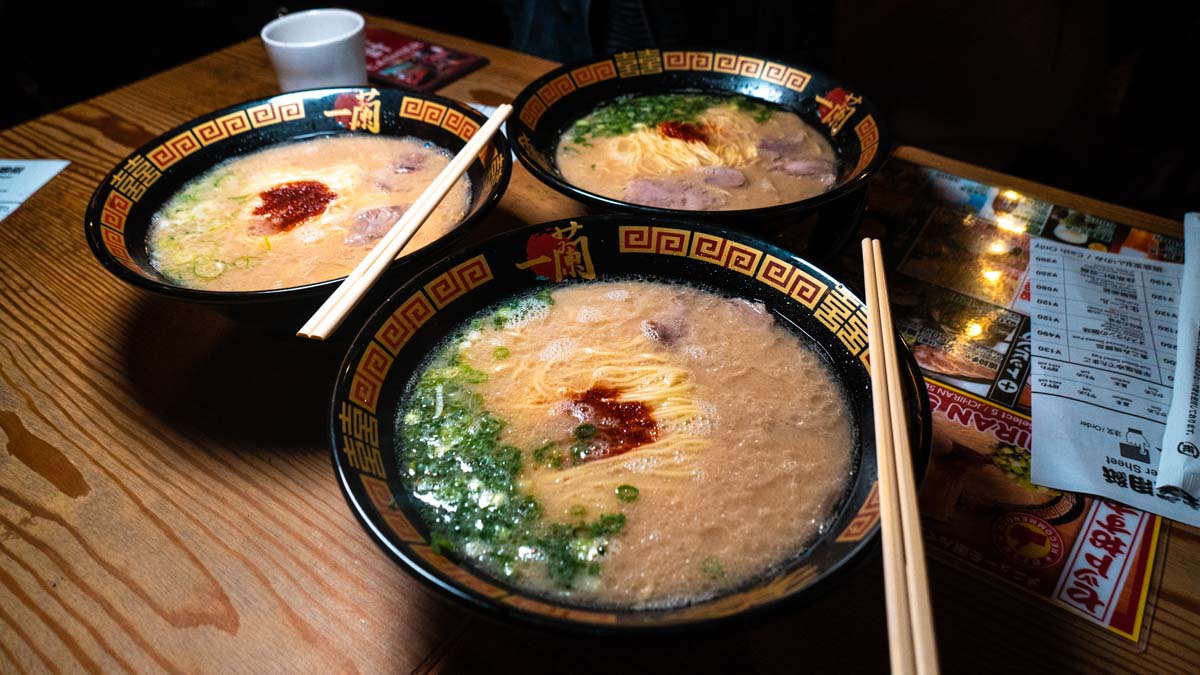
Many may know Ichiran as the popular “anti-social” ramen restaurant thanks to its signature reclusive booths, but back in the 1960s it was more known as a humble ramen stall in Fukuoka.
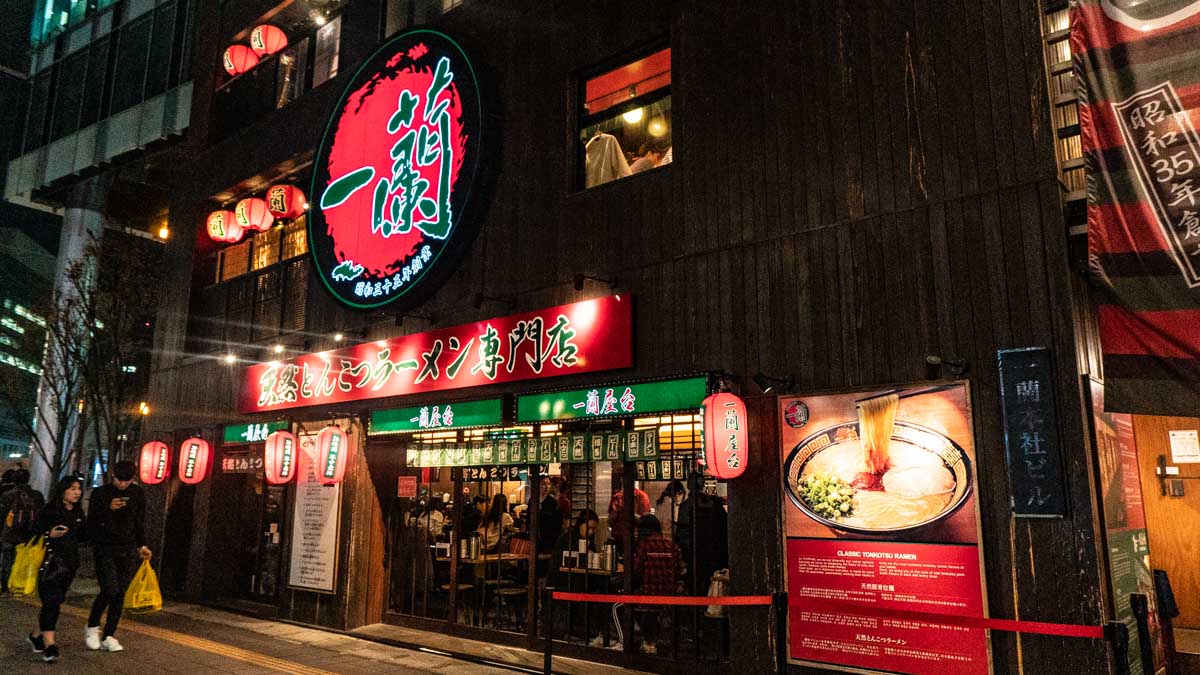
Which is why in its hometown stands the Fukuoka concept store, where besides single dining booths, you can also choose to dine “yatai” style. That means “shop stand (屋台)”, referring to a small, mobile roadside food stand commonplace in Fukuoka.
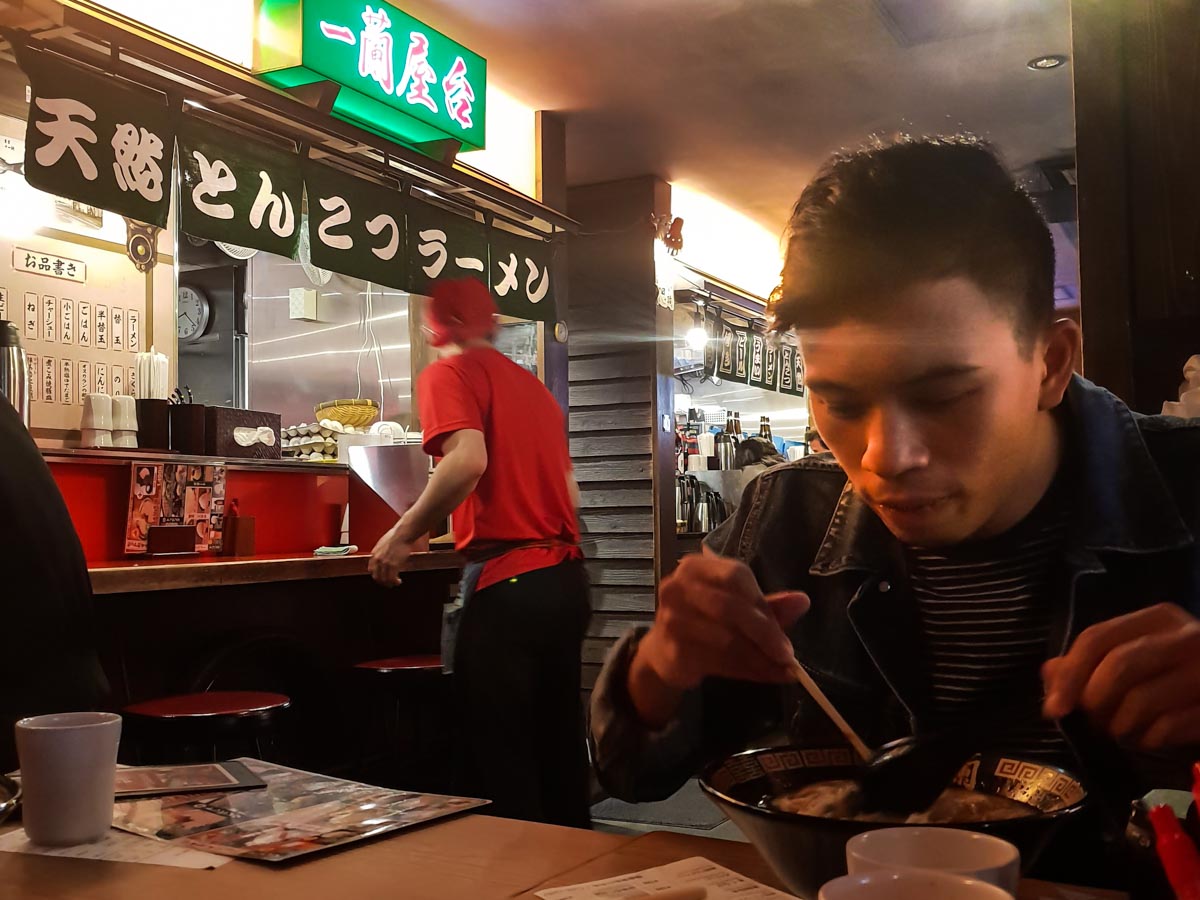
Yatai-style dining in Fukuoka’s Ichiran flagship concept store .
Cost: From ¥980 Opening hours: 24hrs Address: 810-0801, 5-3-2 Nakasu Hakata-ku Fukuoka-shi Fukuoka-ken
Check-in at HOTEL MYSTAYS Fukuoka Tenjin
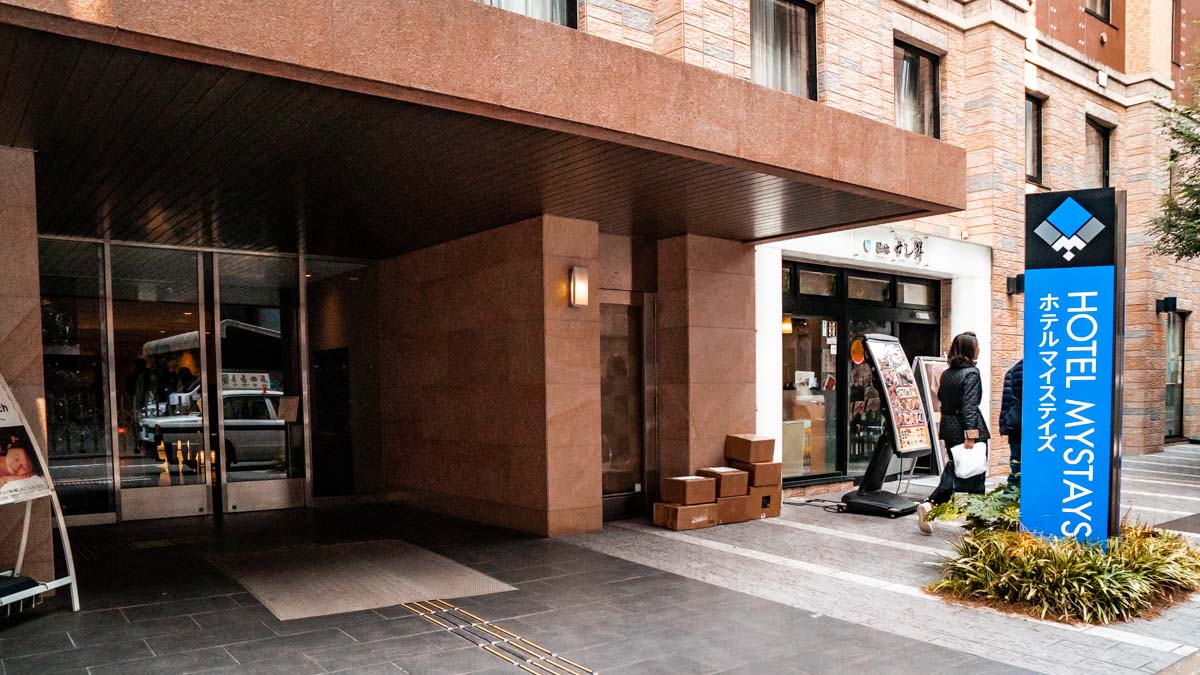
The downtown area of Tenjin (天神) is a good place to base in when travelling around Fukuoka city, and there’s everything within walking distance of HOTELS MYSTAYS Fukuoka Tenjin , be it retail shopping, food or necessities.
Look no further than the hotel’s main entrance for authentic cuisine to start your day too — the in-house restaurant sells breakfast sets at only ¥1,300/guest.
Cost: From ~S$67/night Address: 3 Chome-5-7 Tenjin, Chūō-ku, Fukuoka-shi, Fukuoka-ken 810-0001, Japan
Day 2: Fukuoka (Hakata) to Kitakyushu (Kokura)
After a hearty breakfast at HOTELS MYSTAYS Tenjin, we headed to Kitakyushu (北九州), 16 minutes away via the Shinkansen Nozomi 44. Do note that shinkansen rides between Hakata and Kokura are not covered by the JR Pass, so separate tickets will be needed.
If you don’t mind a longer ride (~40-50mins), there are express trains (slower than shinkansen) that run between Hakata and Kokura that’s covered by the All Kyushu JR Pass .
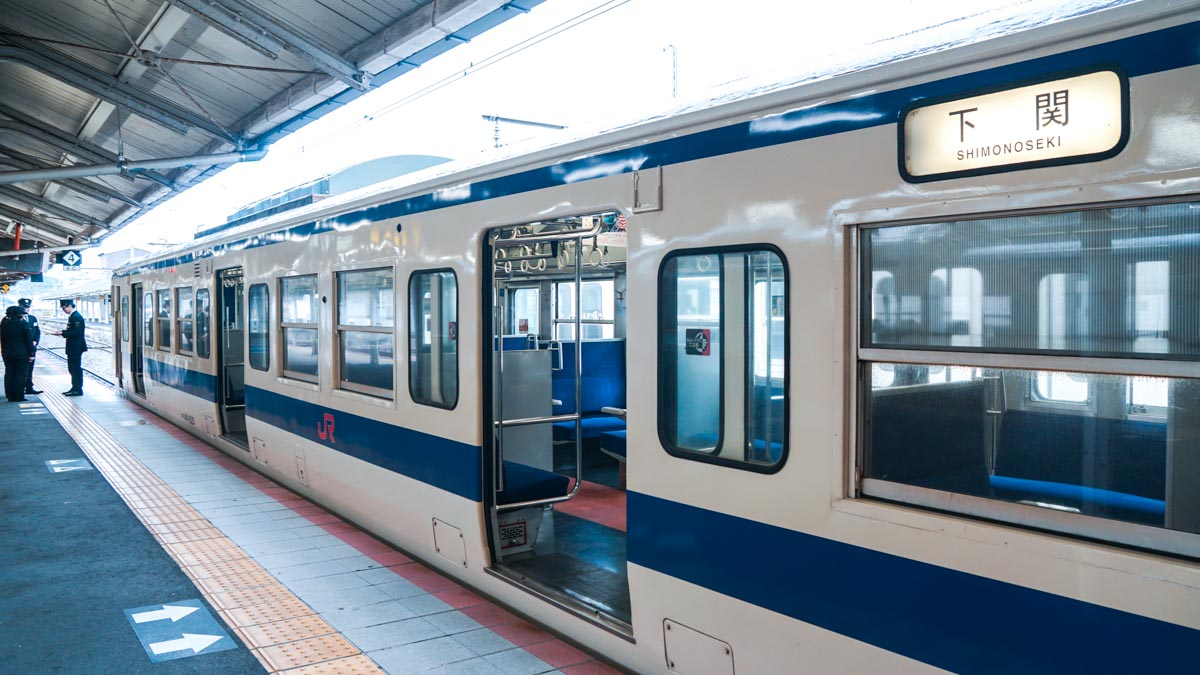
Shimonoseki (下関市)
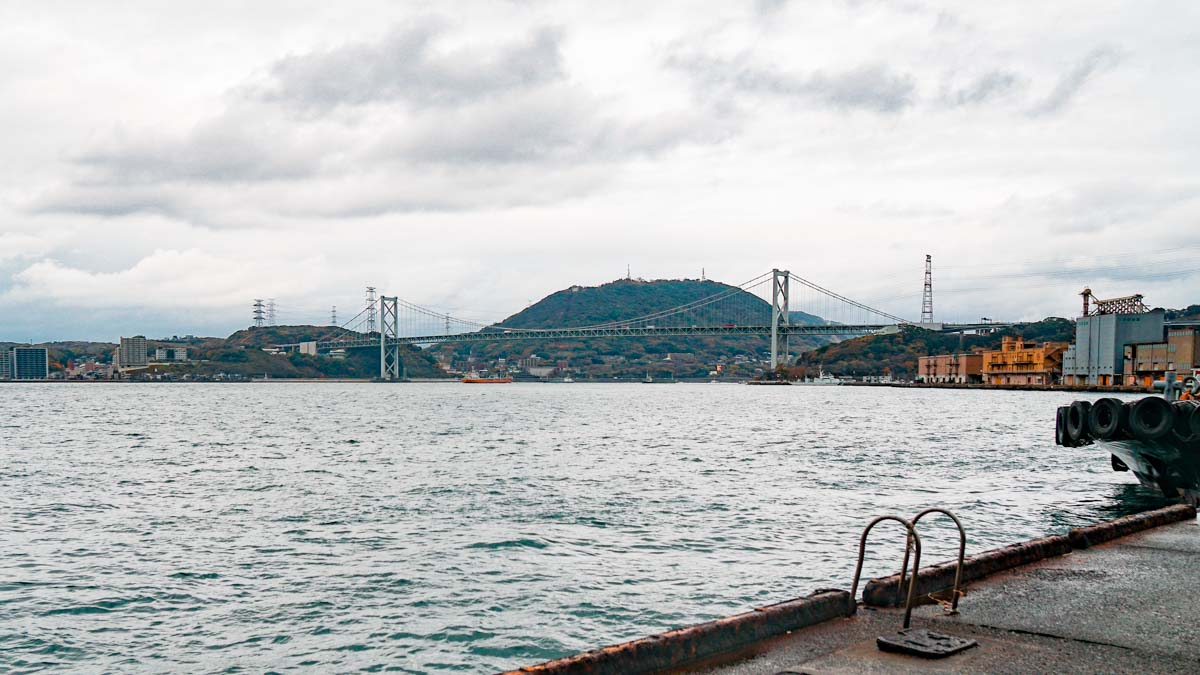
Kanmon Bridge connecting Kagoshima and Shimonoseki .
At Kitakyushu, we hopped onto another train to Shimonoseki, the port city best known for its export of the notoriously poisonous pufferfish delicacy, fugu . Overlooking the Kanmon Bridge (関門橋) is the Karato Market (唐戸市場).
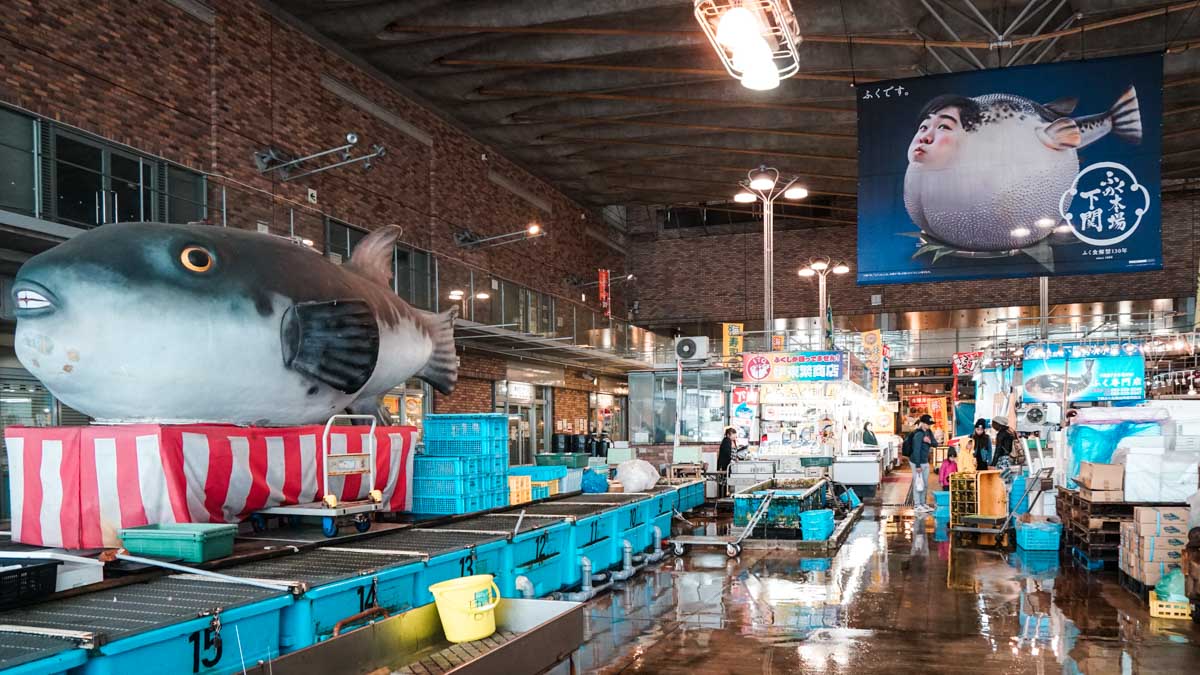
You can get fresh fugu from Karato Market in Shimonoseki.
We had lunch in Fukunoseki (ふくの関) that’s within the Kamon Wharf. The fugu supply is fresh there, so there’s no better place to try it!
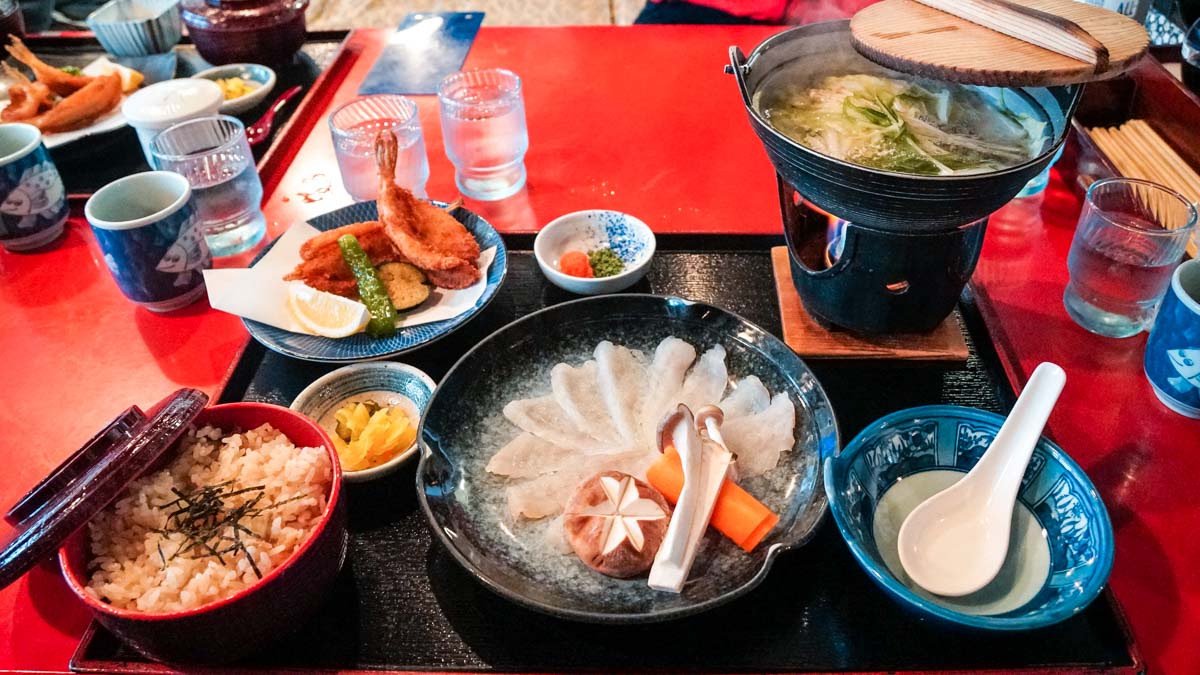
Shimonoseki is famous for fugu (pufferfish).
There are several ways one can get to Shimonoseki from Kitakyushu — by car, train, or ferry.
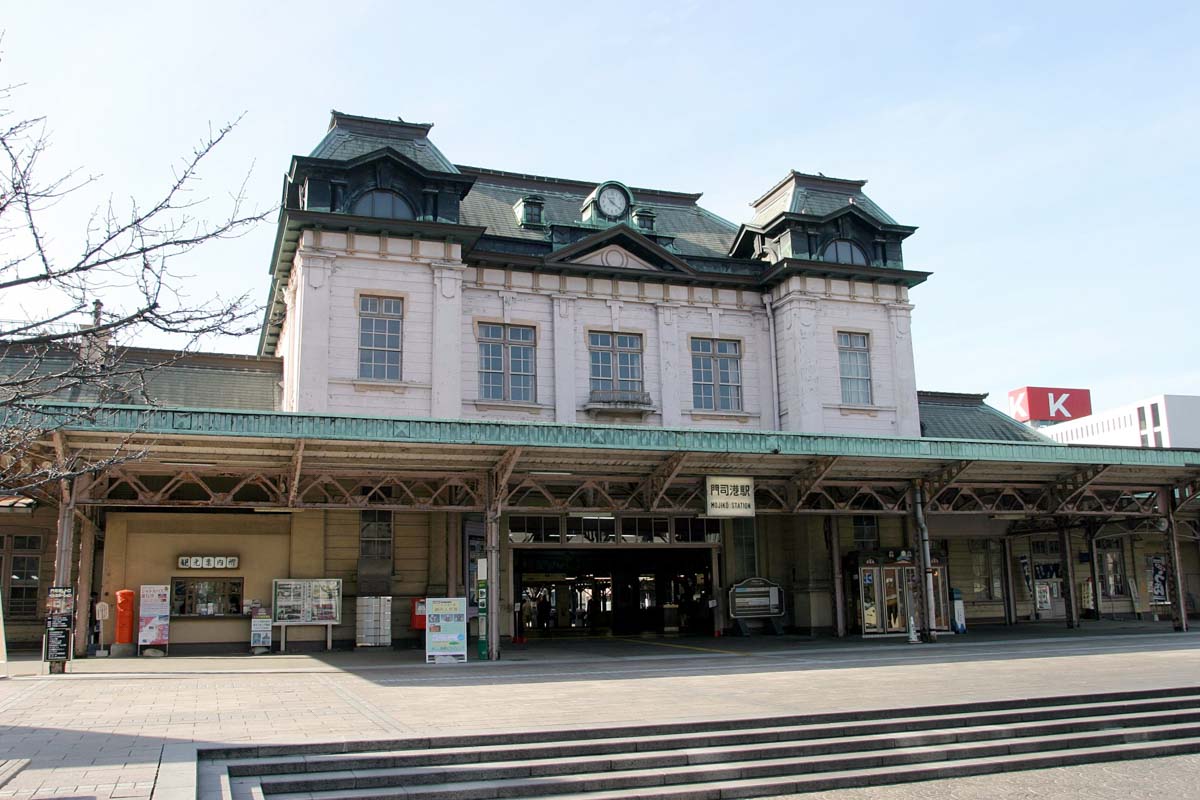
Photo credit: Kitakyushu City
A short walk away from the ferry terminal is the Mojikō Station (門司港駅) , the oldest station on the Kagoshima Line built in 1914. Today, the vintage Neo-Renaissance building is an attraction itself. From there, we took a train back to Kitakyushu (Kokura).
Kokura Castle (小倉城)
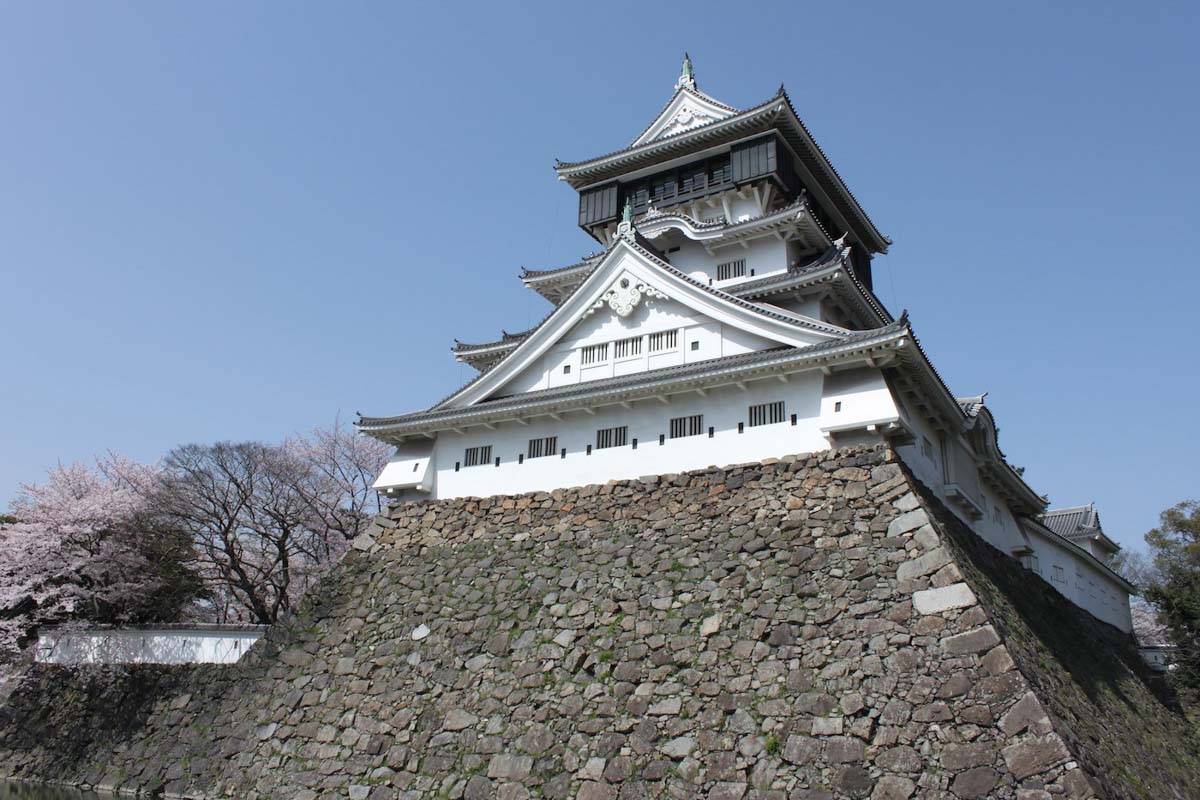
Photo credit: Fukuoka Now
The only castle left standing in Fukuoka Prefecture is the Kokura Castle , so if you’re not venturing beyond north Kyushu, the only chance of seeing an ancient Japanese castle is in Kitakyushu.
Entrance fee: ¥350 Opening hours: 9AM – 8PM (Apr – Oct), 9AM – 7PM (Nov – Mar) Address: 2-1 Jōnai, Kokurakita-ku, Kitakyūshū-shi, Fukuoka-ken 803-0813, Japan
Dinner at Otokomeshi Onnameshi (男飯 女飯)
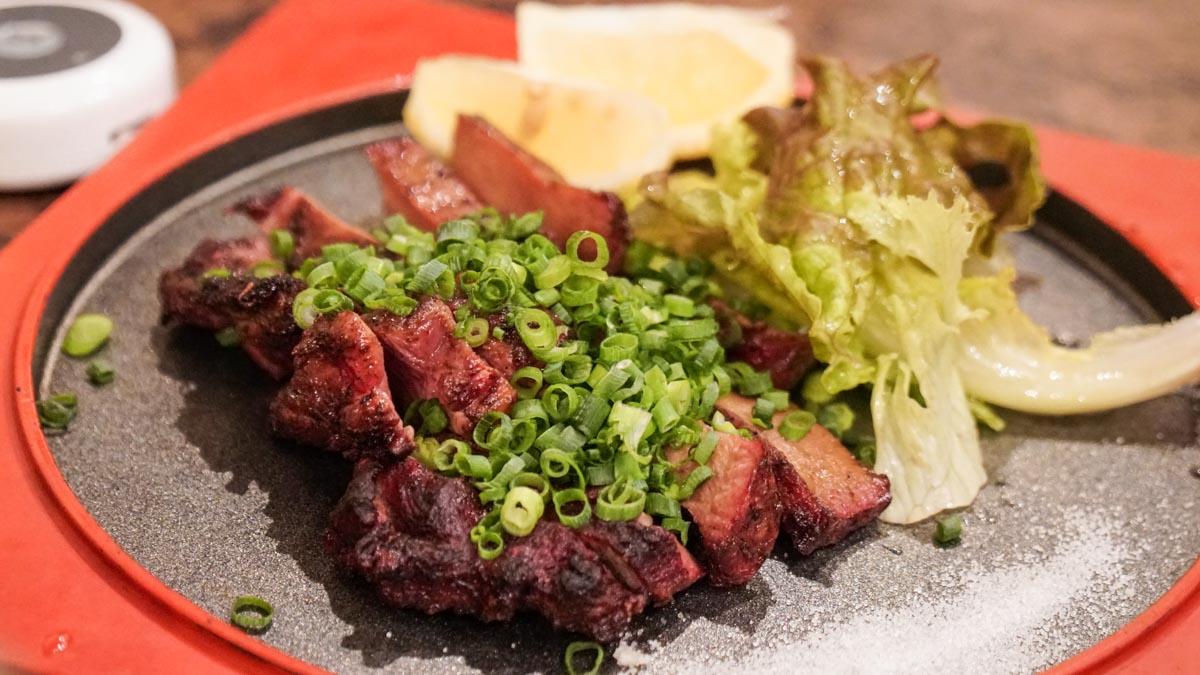
Beef tongue from Otokomeshi Onnameshi .
The Uomachi area around Kokura station is lined with eateries but we recommend Otokomeshi Onnameshi (男飯 女飯) if you’re looking for an authentic yet affordable option. Almost every dish costs only ¥390, and this restaurant prides itself on providing affordable meals for the masses even if it means getting a negative profit at the end of the day.
*Note: This shop is permanently closed.
Check-in to ART HOTEL Kokura New Tagawa
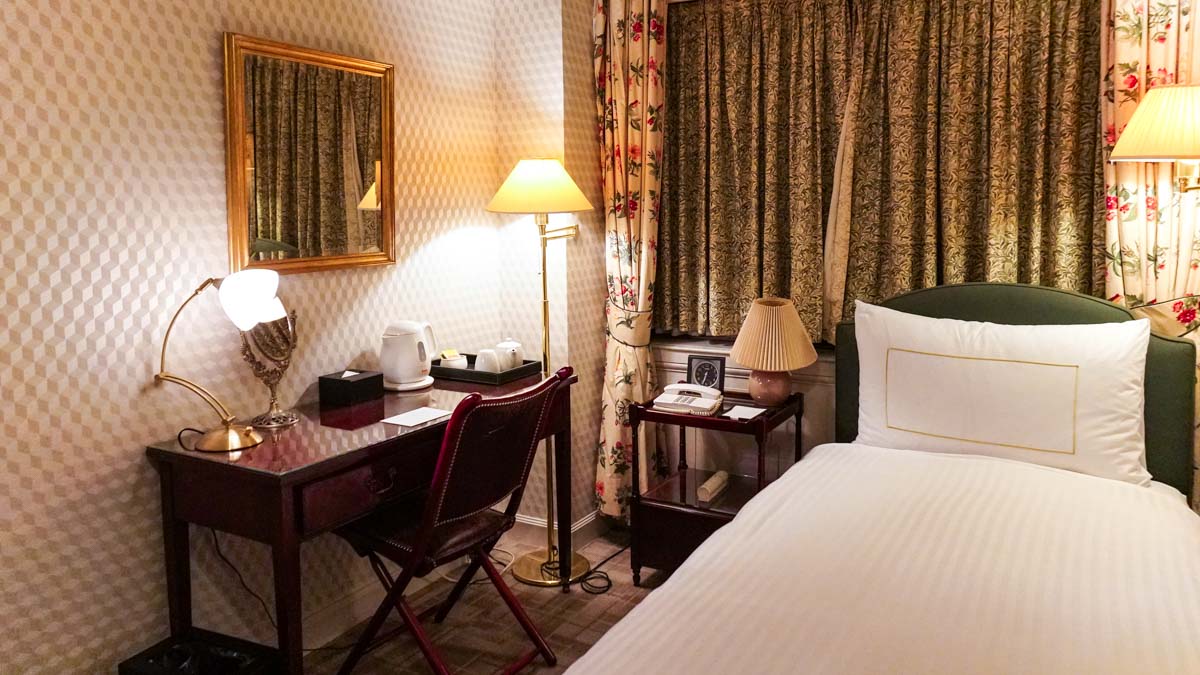
A cosy western style room of ART HOTEL Kokura New Tagawa.
We checked in to ART HOTEL Kokura New Tagawa in Kitakyushu, which has rooms in both Western and oriental Japanese styles.
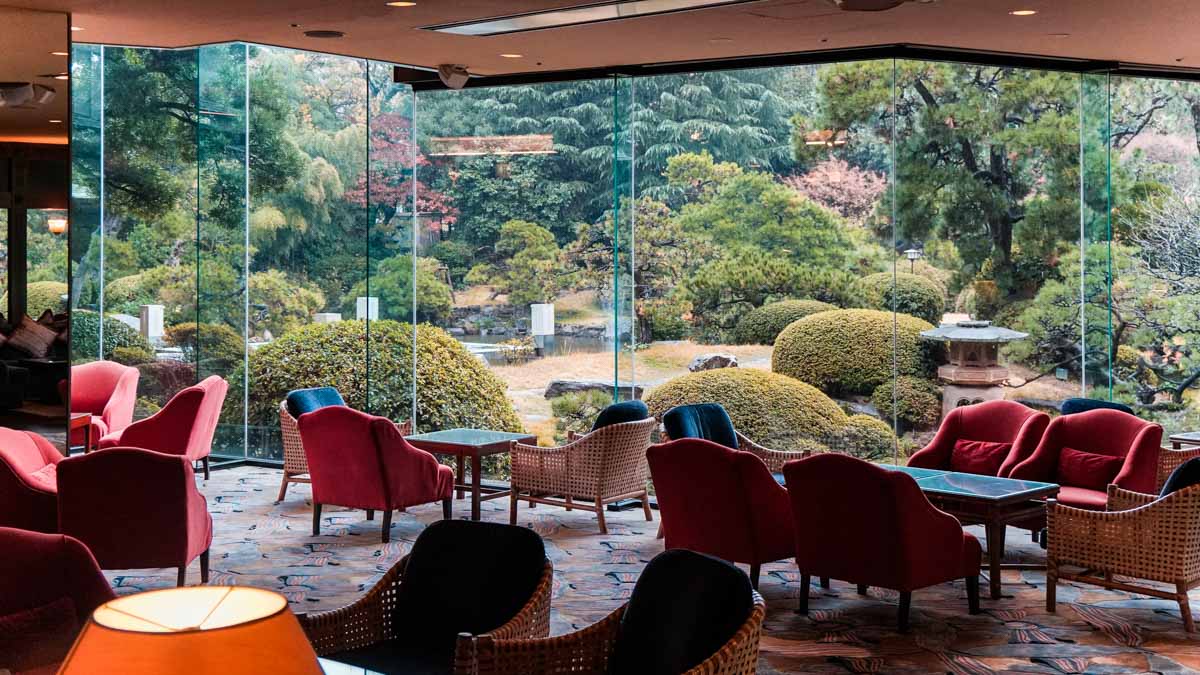
ART HOTEL Kokura New Tagawa is built next to a 120-year-old Japanese garden.
This hotel is also a favourite among locals for weddings and banquets, thanks to its historic architecture and Japanese gardens built during the Meiji Era.
Cost: From ~S$57/night Address: 3-46 Furusemba-machi, 3 Furusenbamachi, Kokurakita-ku, Kitakyūshū-shi, Fukuoka-ken 802-0082, Japan
Day 3: Kitakyushu – Yufuin – Beppu
Tanga ichiba market (旦過市場) at kokura.
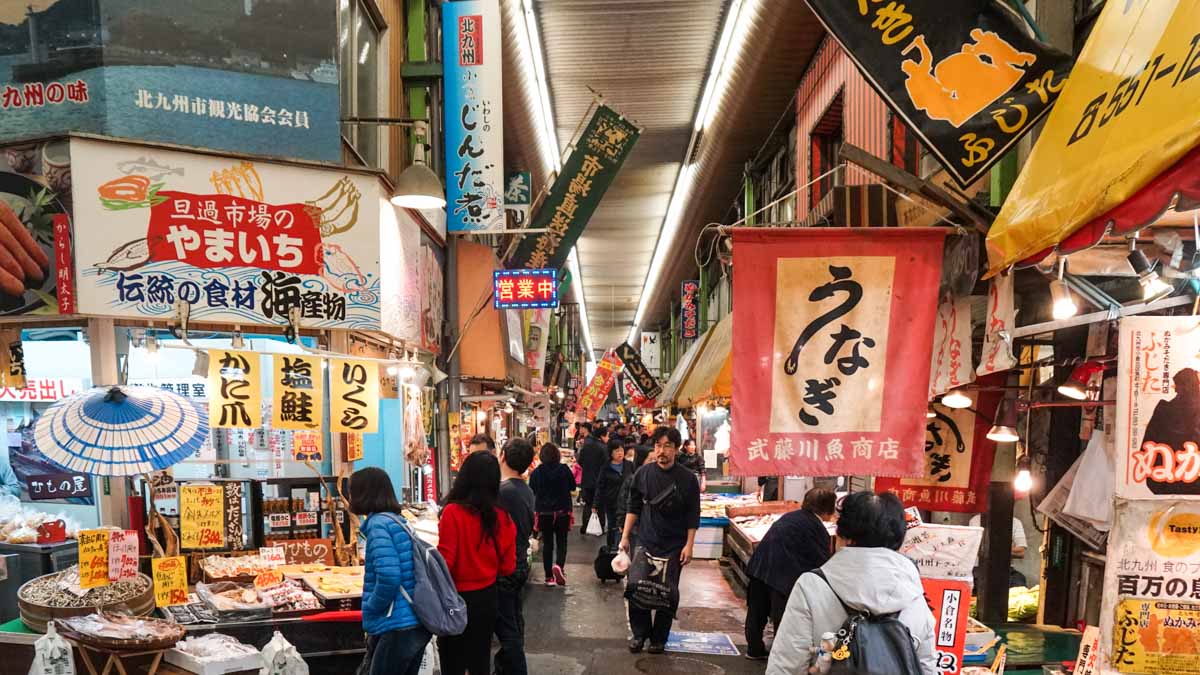
Most Kitakyushu residents do their daily grocery shopping at Tanga Ichiba Market , but this narrow little street is also loved by visitors scouring for affordable local delights.
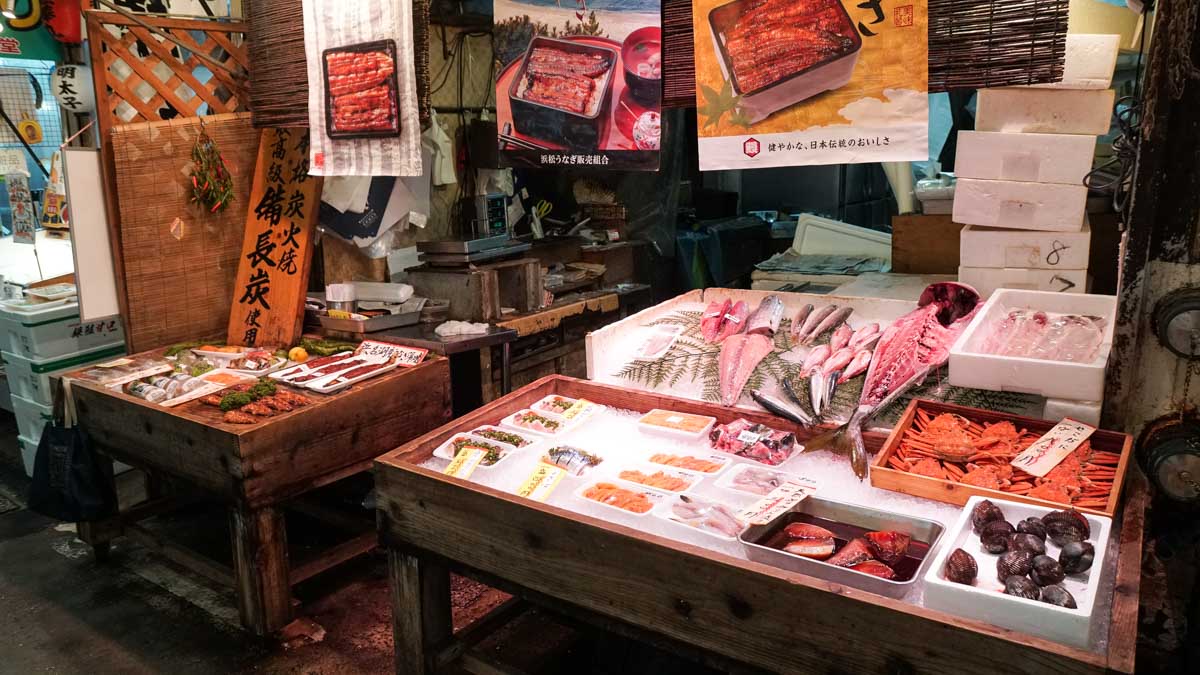
Expect to find Kitakyushu specialities such as karashi mentaiko (辛子明太子, spicy salted roe) and nukadaki (ぬか炊き, fish simmered in miso).
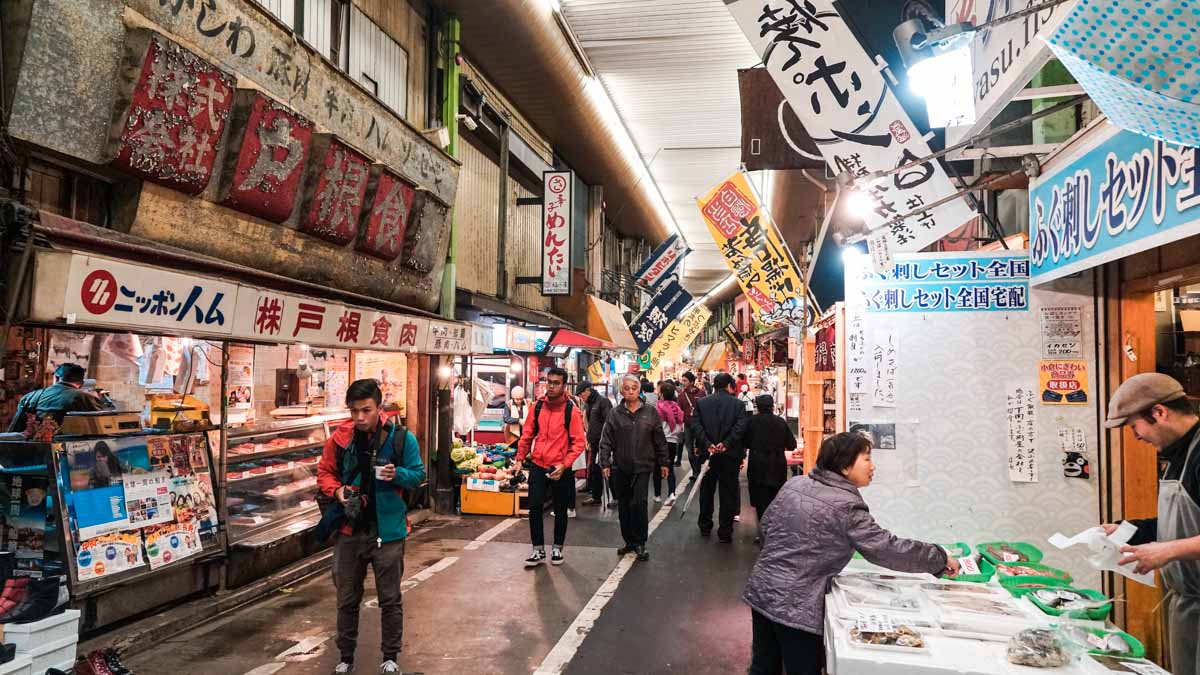
Opening hours: 9:30AM – 6PM Address: 4 -2-18 Uomachi, Kokurakita Ward, Kitakyushu, Fukuoka Prefecture 802-0006, Japan
Yufuin (由布院)
From Kitakyushu, we proceeded to the quaint town of Yufuin through the Ltd Exp Sonic 33 train via Oita. Yufuin is a popular hot spring resort surrounded by Mount Yufu . The main street is lined with cafes, boutiques and small museums.
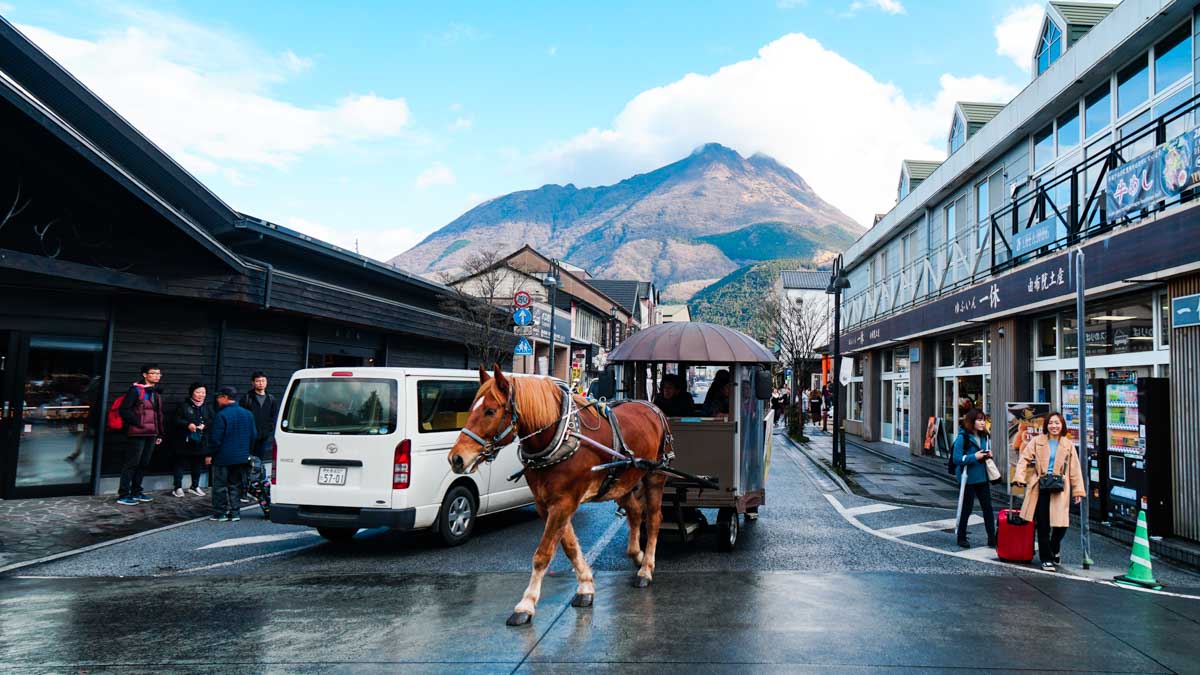
Explore Yufuin’s main street on a horse carriage .
Kinrinko Lake (金鱗湖)
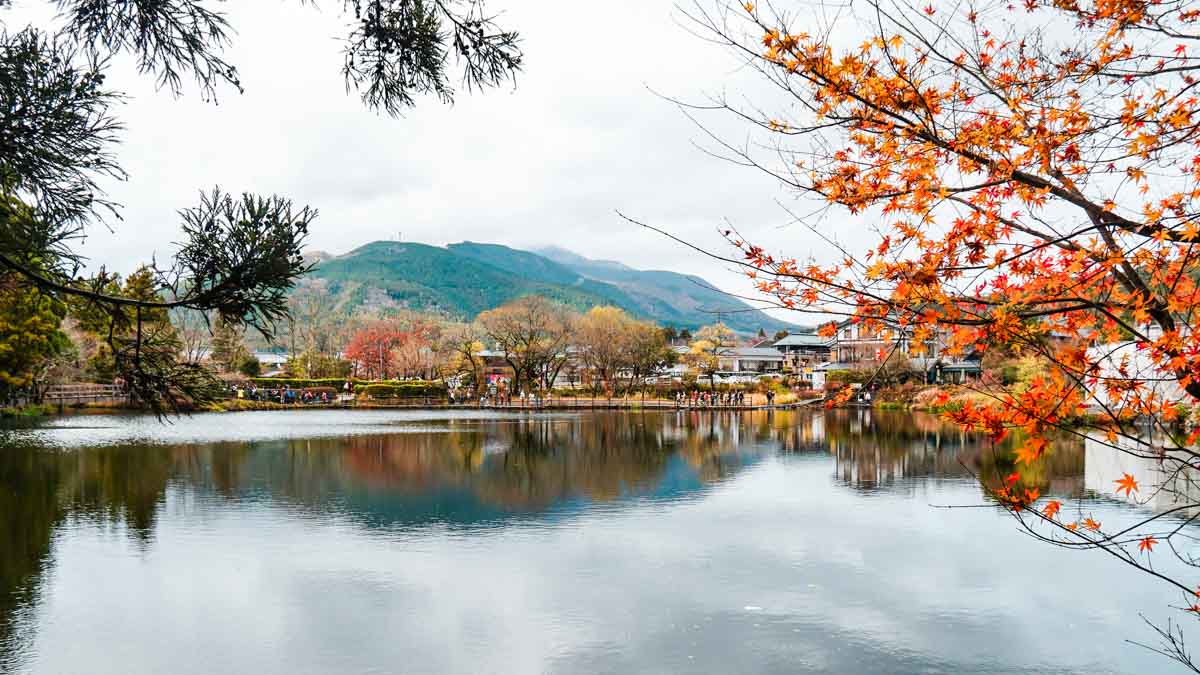
Kinrinko Lake has both hot and cold springs welling up from its bottom, resulting in many ripples on the surface of the lake at all times.
A short cab ride from the Yufuin station is Kinrinko Lake , also known as the “Golden Fish Scales Lake”. The lake is the most spectacular in the early mornings when mist clouds over the surface of the lake due to the hot spring and regular spring water from the bottom of the lake mixing. The maple trees were beautiful in orange and red when we visited in autumn.
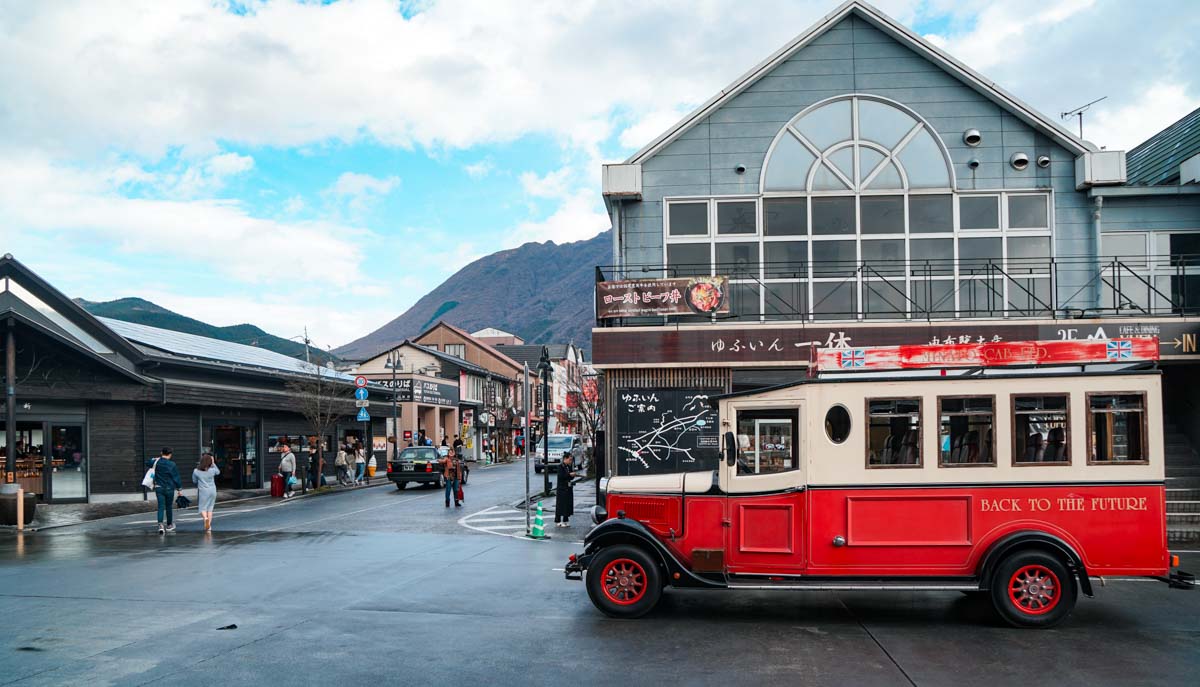
The sightseeing bus brings passengers to the Flora House, Kozenin Temple, and Unaguhime-jinjya Shrine of Yufuin town.
Yufuin may be a small town in comparison to bigger hot spring resort towns such as Beppu, but if you’re thinking of exploring Yufuin by walking, it could take you up to a day.
There are alternative ways to explore Yufuin, like renting bicycles, on a horse carriage, or on a sightseeing bus. Do check for the availability of those transport choices at the tourist information centre (YUFUiNFO) located next to the train station upon arrival!
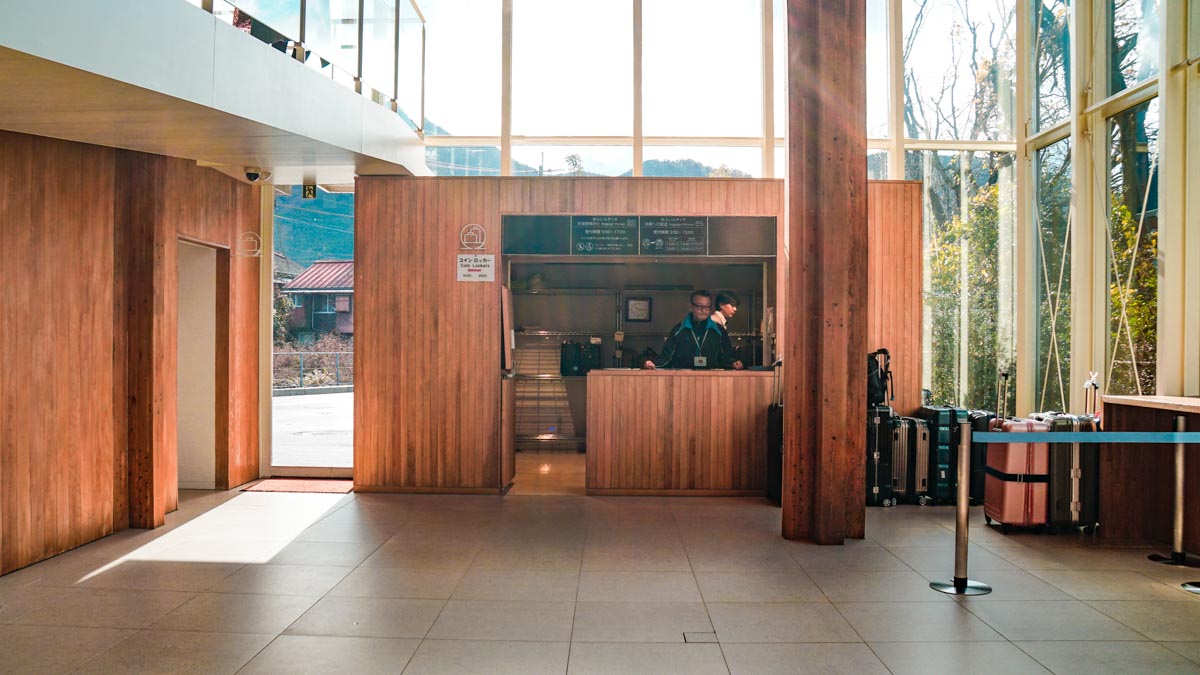
The YUFUiNFO Centre is located just next to the train station.
*Pro-tip: You can deposit your baggage at the YUFUiNFO Centre from ¥300 between 9AM – 5PM.
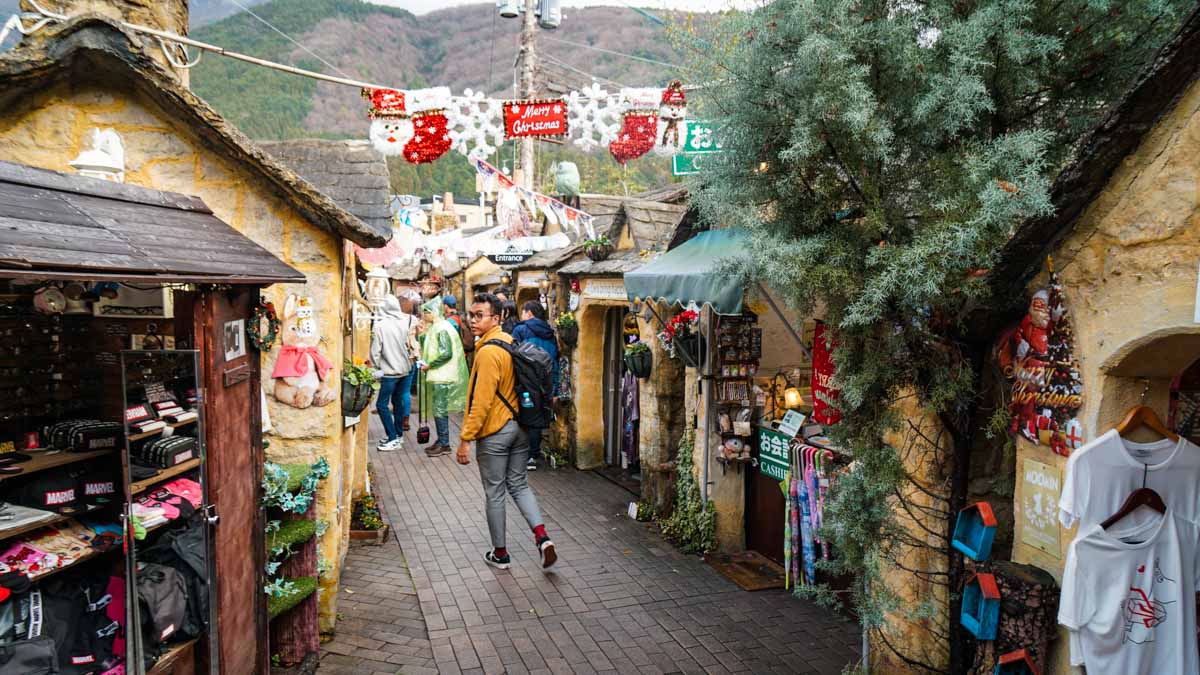
Yufuin Floral Village .
One of the most photographed places in Yufuin is the Yufuin Floral Village that’s inspired by south-central England’s Cotswolds.
Opening hours: 9:30AM – 5:30PM Address: 1503-3 Kawakami Yufuincho , Yufu 879-5102, Oita Prefecture
Onwards to Beppu (別府市)
There’s no better place to experience hot springs and onsens than in Beppu, the “home of hot springs”.
Check-in to Beppu Kamenoi Hotel
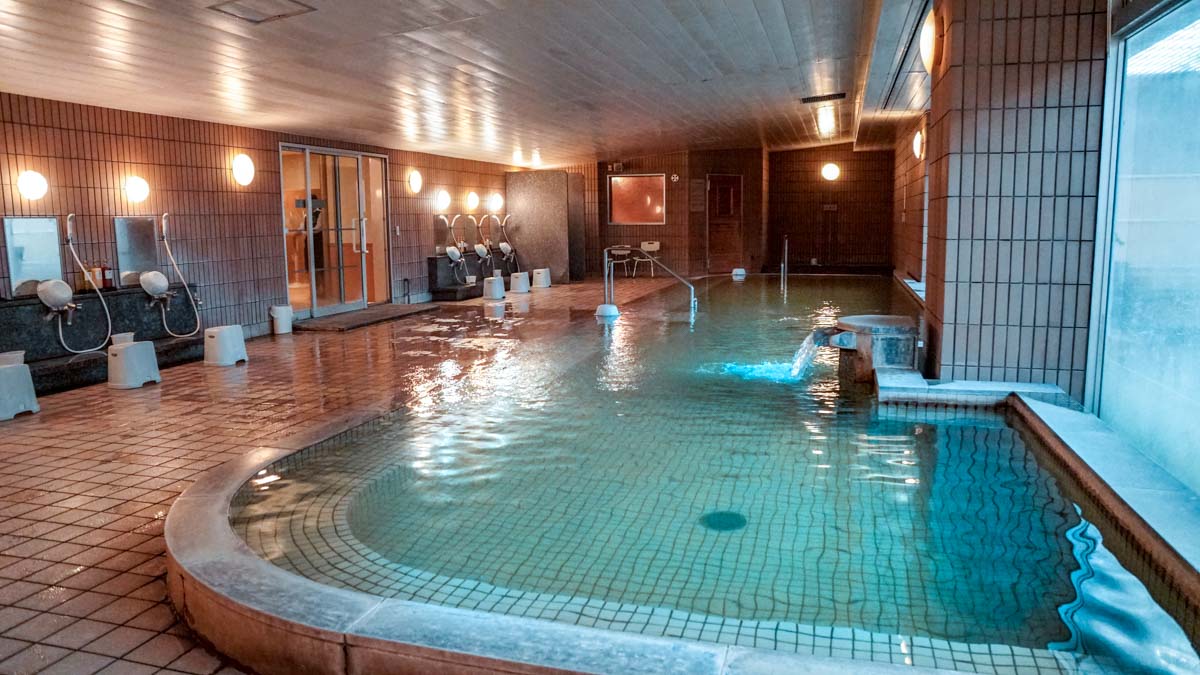
Almost every hotel in Beppu has onsen facilities, and for this Kyushu itinerary, we stayed at Beppu Kamenoi Hotel that’s within walking distance from Beppu train station.
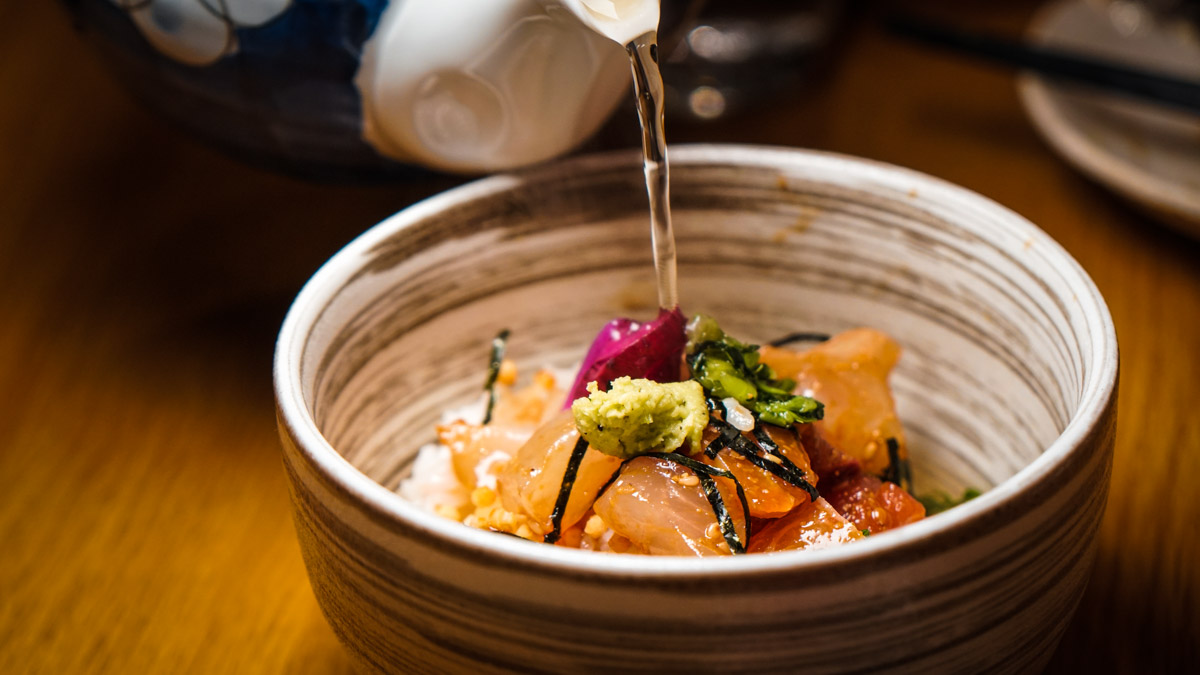
There’s also an in-house restaurant that serves up delicious Toriten (Oita-style fried chicken) and Ochakuze (hot green tea over rice, seaweed, vegetables and tofu).
Cost: From ~S$57/night Address: 5-17 Chūōmachi, Beppu-shi, Ōita-ken 874-0936, Japan
Day 4: Beppu – Kagoshima (via Kokura & Kumamoto)
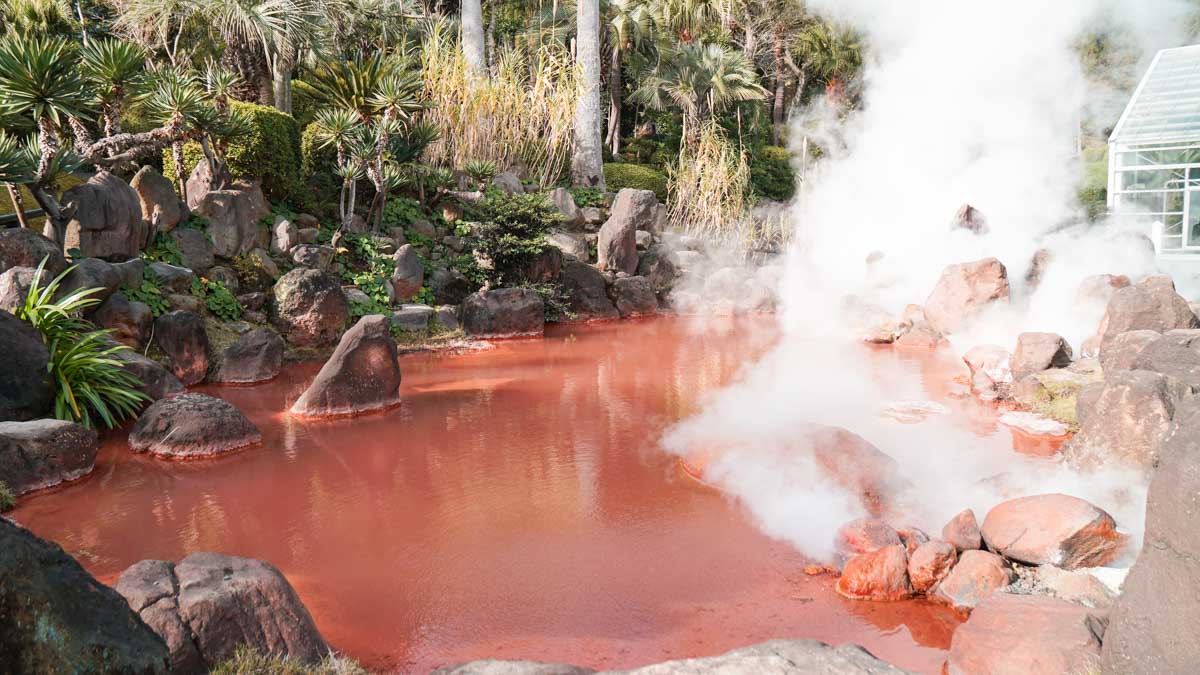
Blood Pond Hell.
The most famous attraction in Beppu is undeniably the “ Hells of Beppu ” — natural hot springs found around the Kanawa and Shibaseki districts.
There are eight hot springs in all, but they’re not in the same place. We recommend just getting a ticket to the Umi Jigoku compound which contains three of the eight hot springs, including the red “Blood Pond Hell (赤池)” and cobalt blue “Sea Hell (海地獄)”, which are the most visually impressive of the lot.
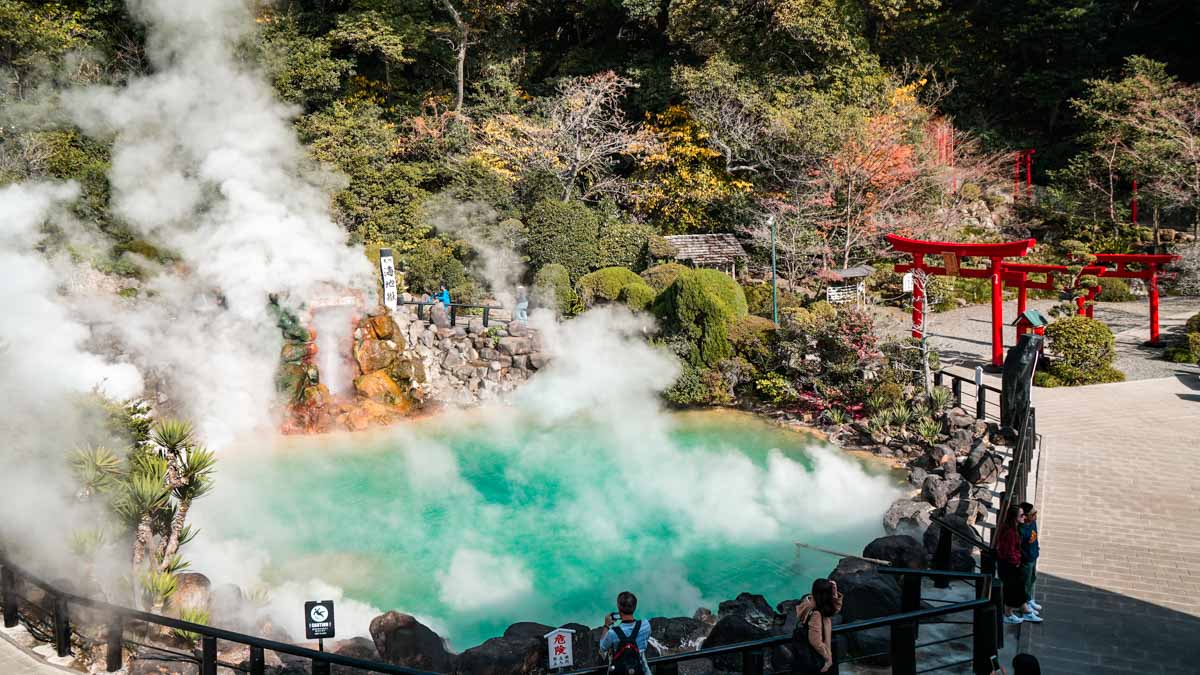
These hot springs are disappointingly thankfully only for viewing and not dipping as they range from 78–98°C. Besides taking out-of-the-world pictures, another way to feel more involved is to buy the hell-steamed custard pudding.
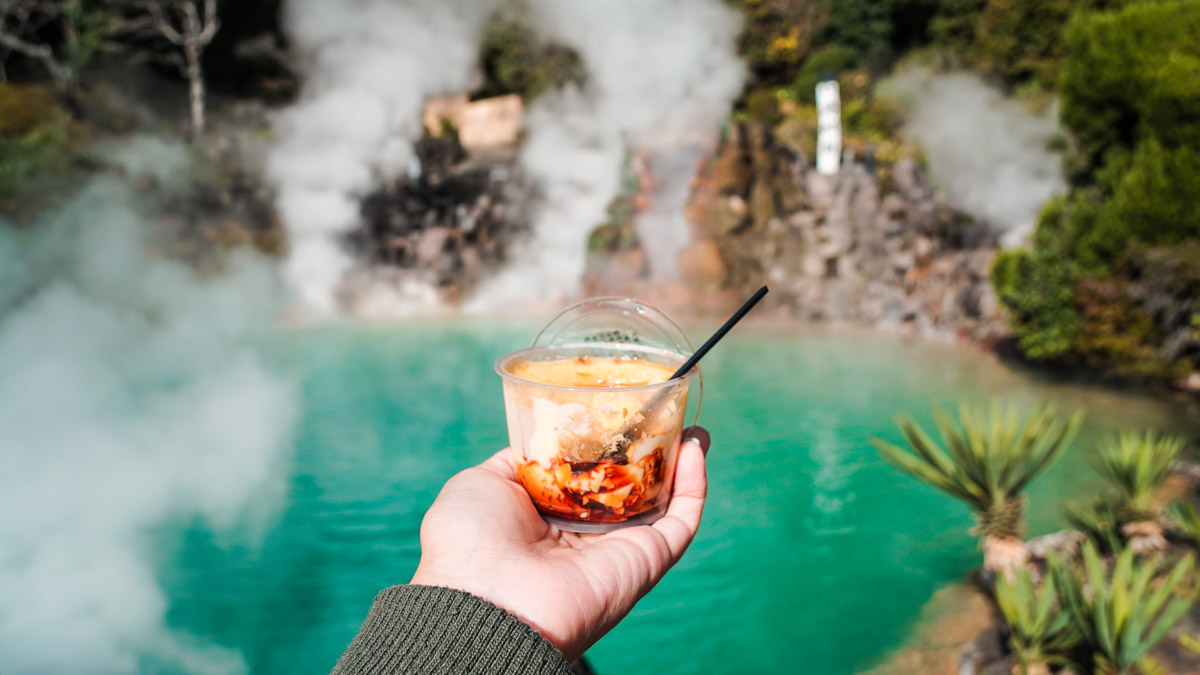
Custard pudding steamed by the hot spring!
So please, when in Beppu, go to hells .
Entrance fee: ~S$20/adult Opening hours: 8AM – 5PM Address: 559-1 Kannawa, Beppu, Ōita Prefecture 874-0000, Japan
Beppu Sand Bath
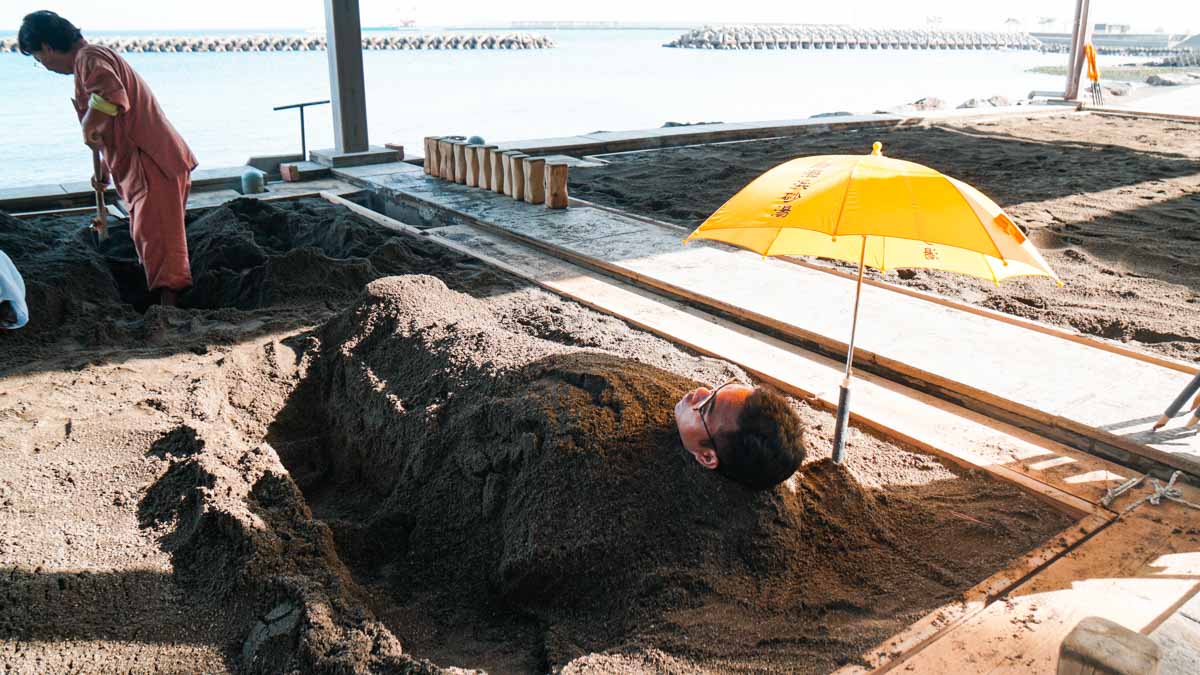
Being buried is a scary yet oddly therapeutic experience. Before this turns morbid, I’m really just referring to the sand bath experience in Beppu. The naturally heated volcanic sand supposedly alleviates body aches and improves blood circulation.
If you’re claustrophobic, the anxiety you get beneath the sand is real, but soon you’ll find yourself relaxing under the weight of the sand instead.
Entrance fee: ¥1,030 Opening hours: 9AM – 5PM Address: 9 Shoningahamacho, Beppu, Ōita Prefecture 874-0023, Japan
*Pro-tip: Bring your own towel and save ¥350 from buying new towels at the sand bath.
Scenic train rides to Kagoshima (via Kumamoto)
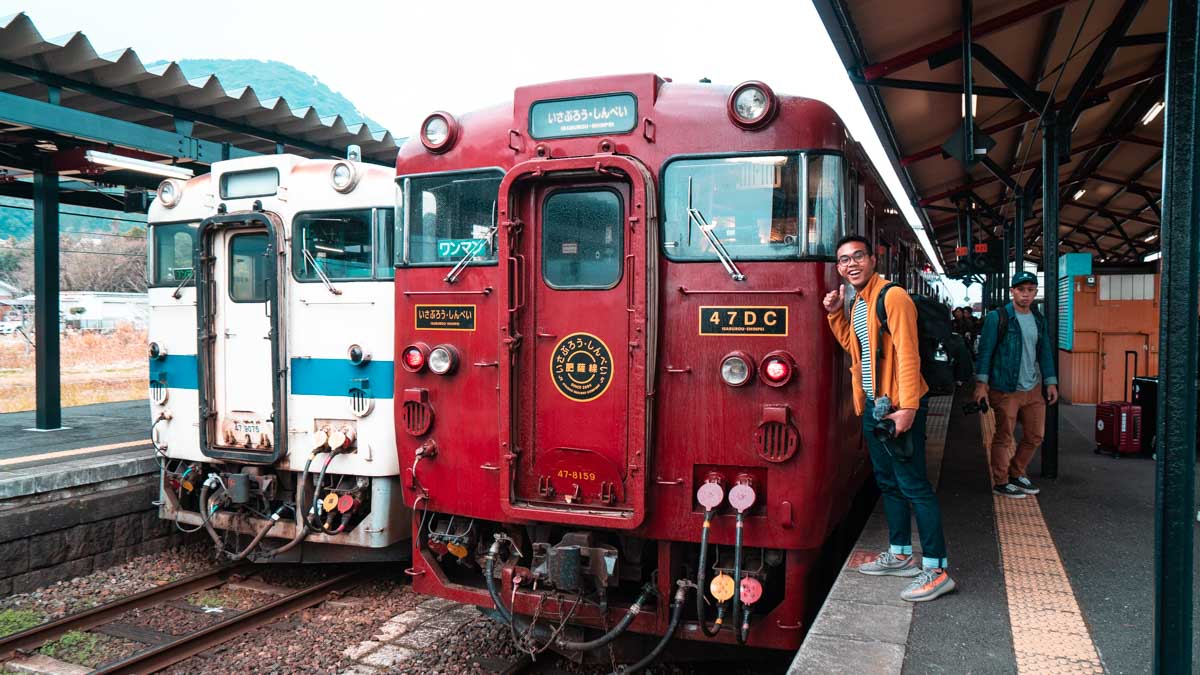
After filling our tum-tums at Mekiki-no Ginji , we hopped onto an express train towards Kokura where we made another transfer towards Kagoshima (鹿児島) at Kumamoto.
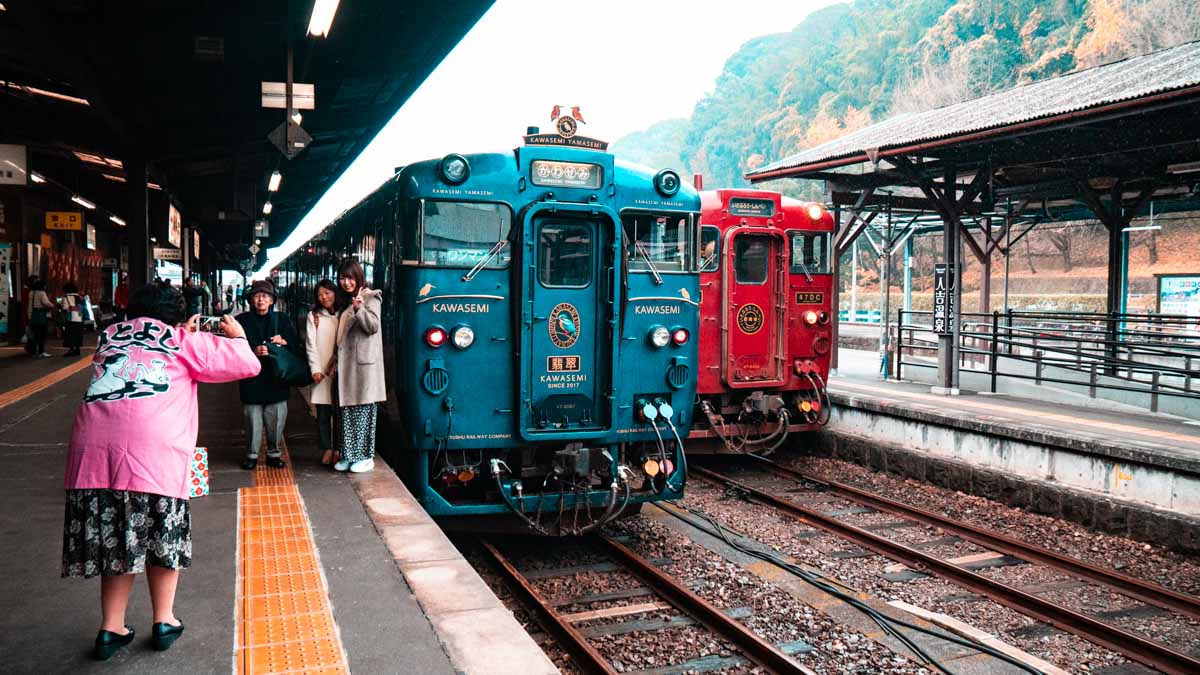
For the southwards route, we took three nostalgic scenic trains with our Kyushu itinerary: 1. Kawasemi (Kumamoto to Hitoyoshi) 2. Isaburo Shinpei (Hitoyoshi to Yoshimatsu) 3. Hayato no Kaze (Yoshimatsu to Kagoshima-chuo)
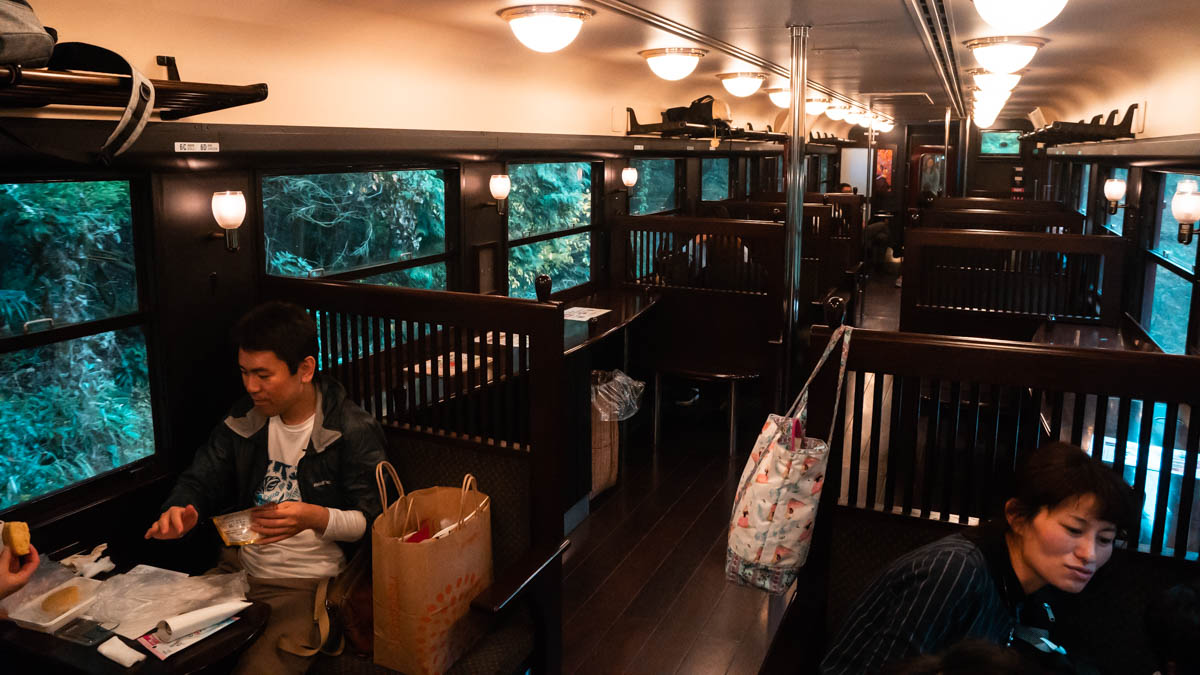
All three trains require prior seat reservation with the JR Pass, and they’re very limited so make your reservations early! The train masters will make stops at a couple of smaller stations in between for passengers to get off for photo opportunities. One such stop is the Masaki Station (真幸駅) which was built in 1911.
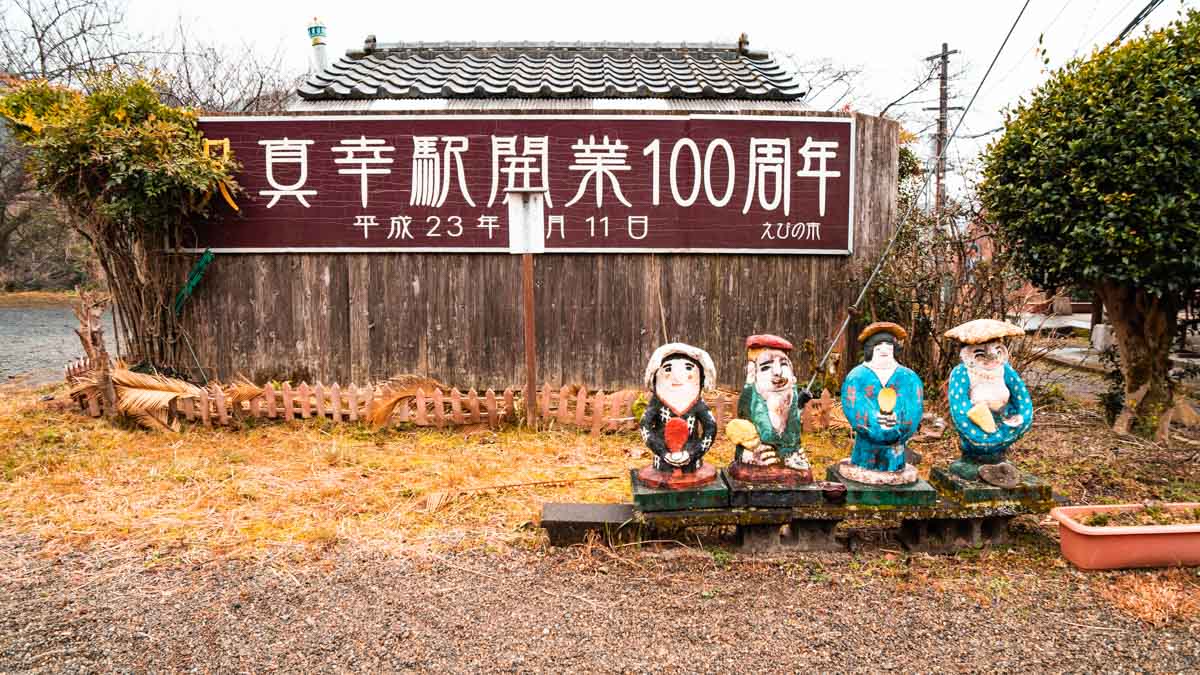
Masaki Station (真幸駅) is the oldest railway station on the Hisatsu Line, opened in 1911.
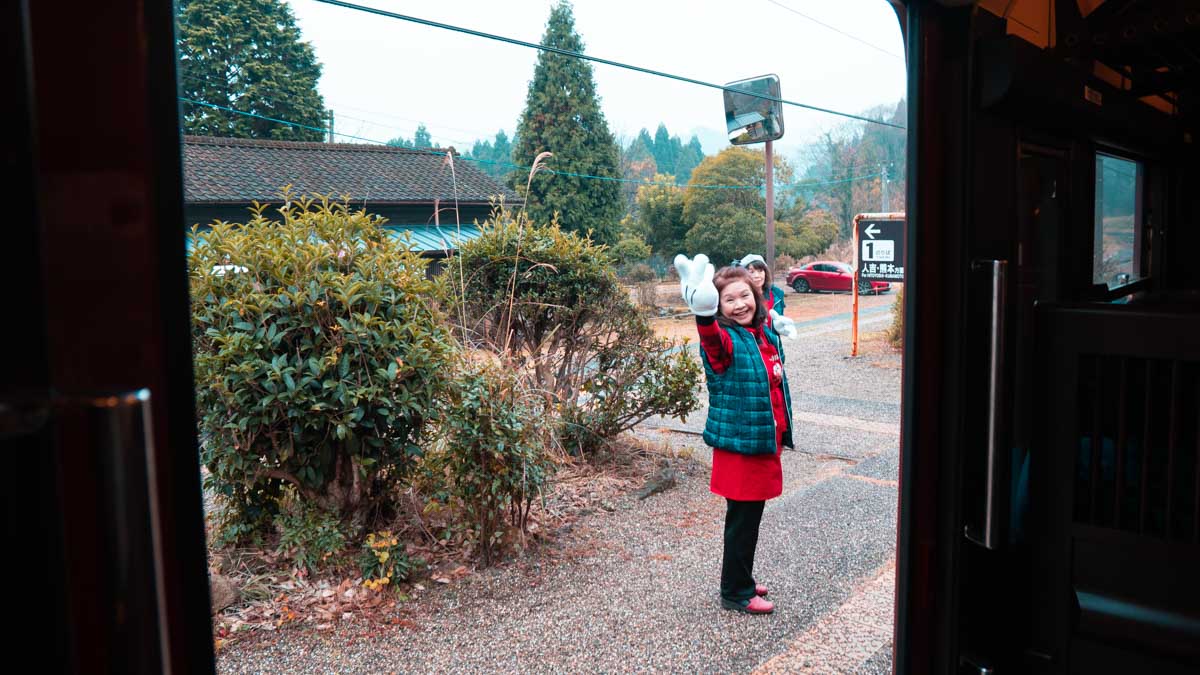
Locals doing the “tewofu-rail” wave to the passengers on the train as the train departs the station.
Check-in to HOTEL MYSTAYS Kagoshima Tenmonkan
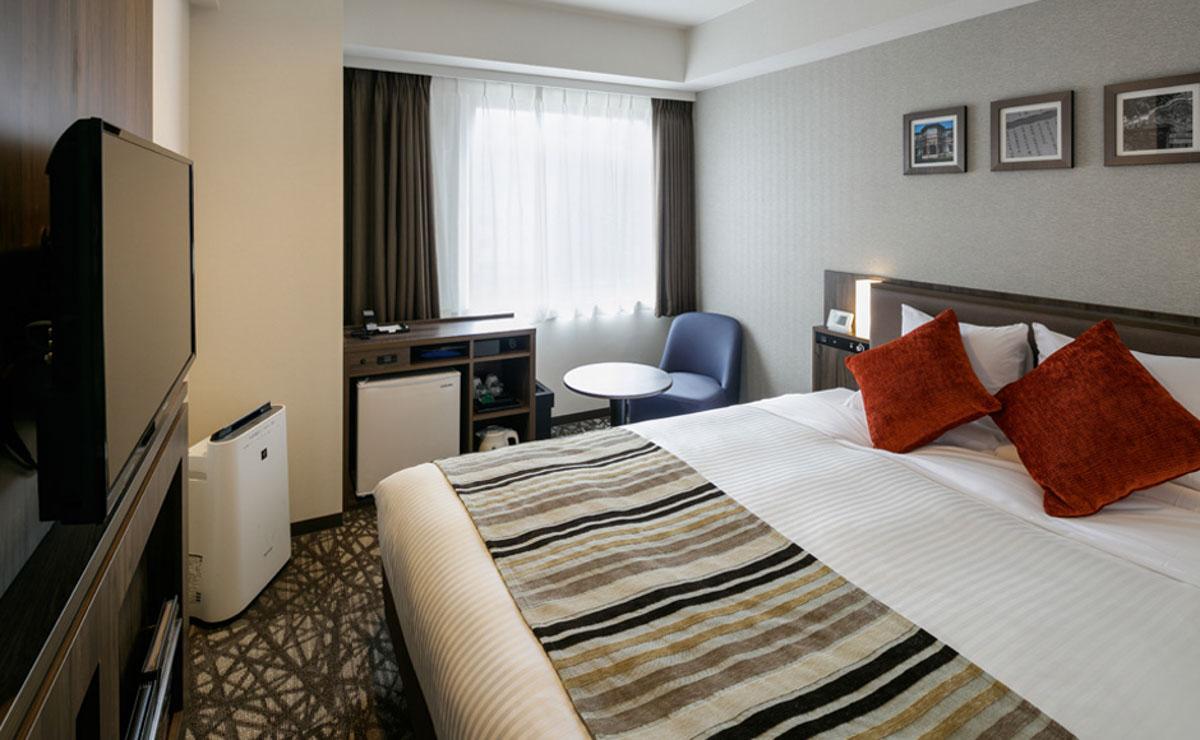
Photo credit: HOTEL MYSTAYS
The train rides took up the whole day, and once we reached Kagoshima, we checked into our accommodation HOTEL MYSTAYS Kagoshima Tenmonkan for the night. Situated in the bustling Tenmonkan area within Kagoshima, we had quick access to many eateries, drugstores and souvenir shops around the hotel. Convenient!
If you’re not too sure where to start for your gastronomic adventure around HOTEL MYSTAYS Kagoshima Tenmonkan, let us recommend to you S hirokuma shave ice dessert — the birthplace of shave ice desserts in Japan, located a mere 5-minute walk away from the hotel.
Another must-eat is the Kagoshima Kurobuta (black pork), one of the best-known black pork in the world, and in HOTEL MYSTAYS Kagoshima Tenmonkan, kurobuta shabu shabu is available at the hotel’s morning buffet spread.
Cost: From ~S$44/night Address: 2-7 Yamanokuchi-cho, Kagoshima-shi, Kagoshima, 892-0844 Japan
Day 5: Kagoshima
Sengan-en garden (仙巌園).
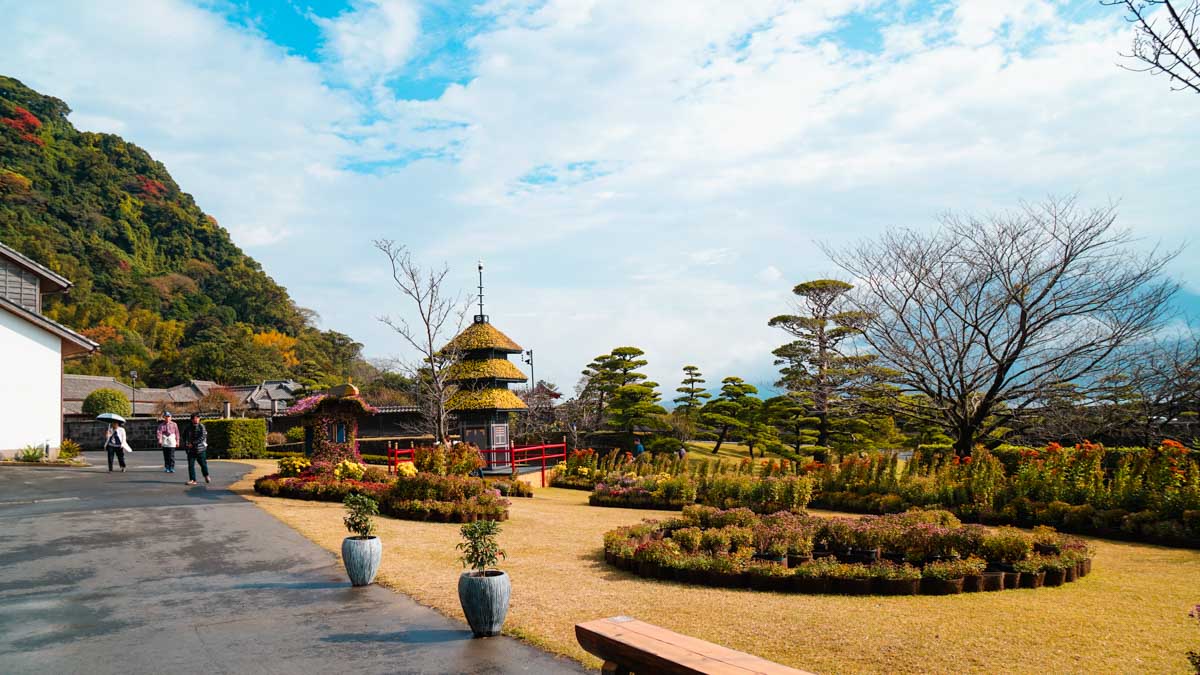
Sengan-en is a Japanese-style landscape garden built in 1658 by the powerful and influential Shimadzu Clan that ruled the Kagoshima area during the Edo Period.
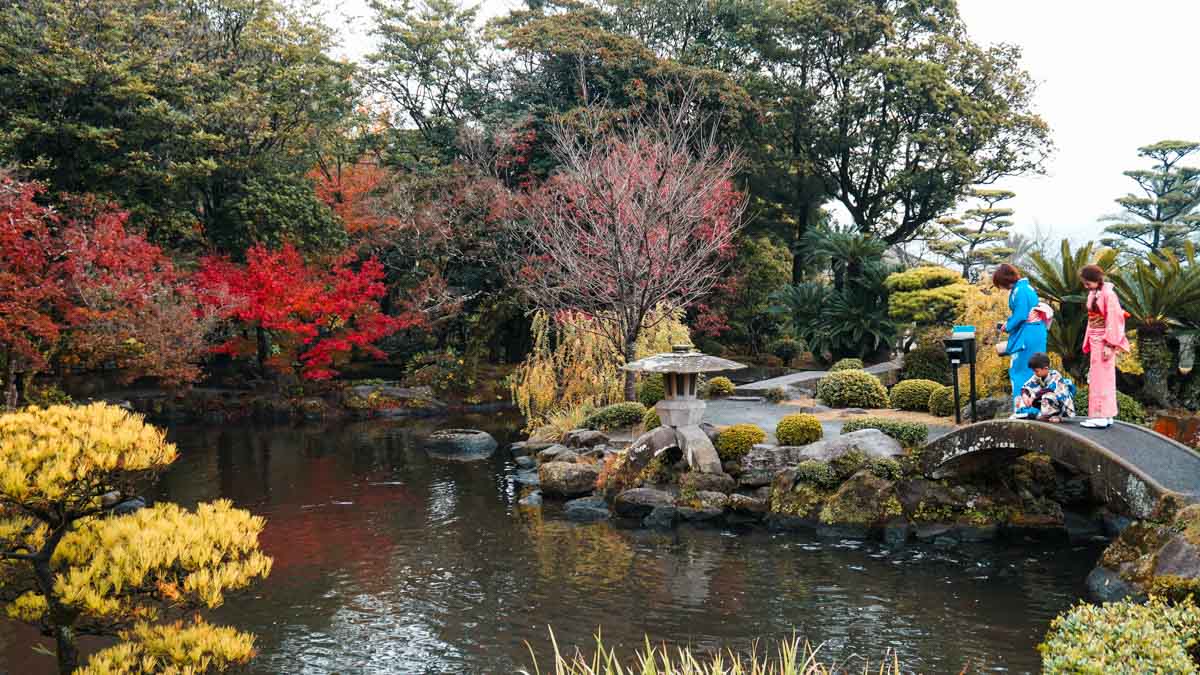
The Shimadzus are still highly respected by the Japanese today for bringing Western science and technology to Japan.
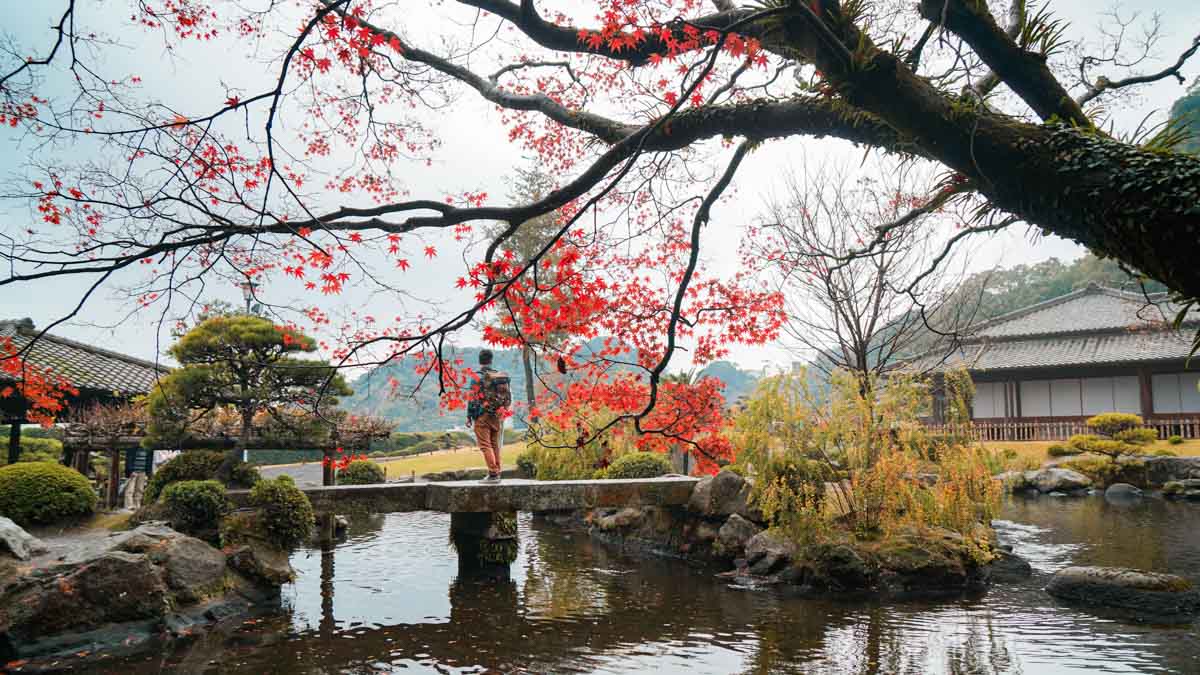
The autumn foliage was in pretty shades of red, yellow, orange and brown when we visited. On a clear day, you can even see the majestic Mt. Sakurajima volcano across the bay!
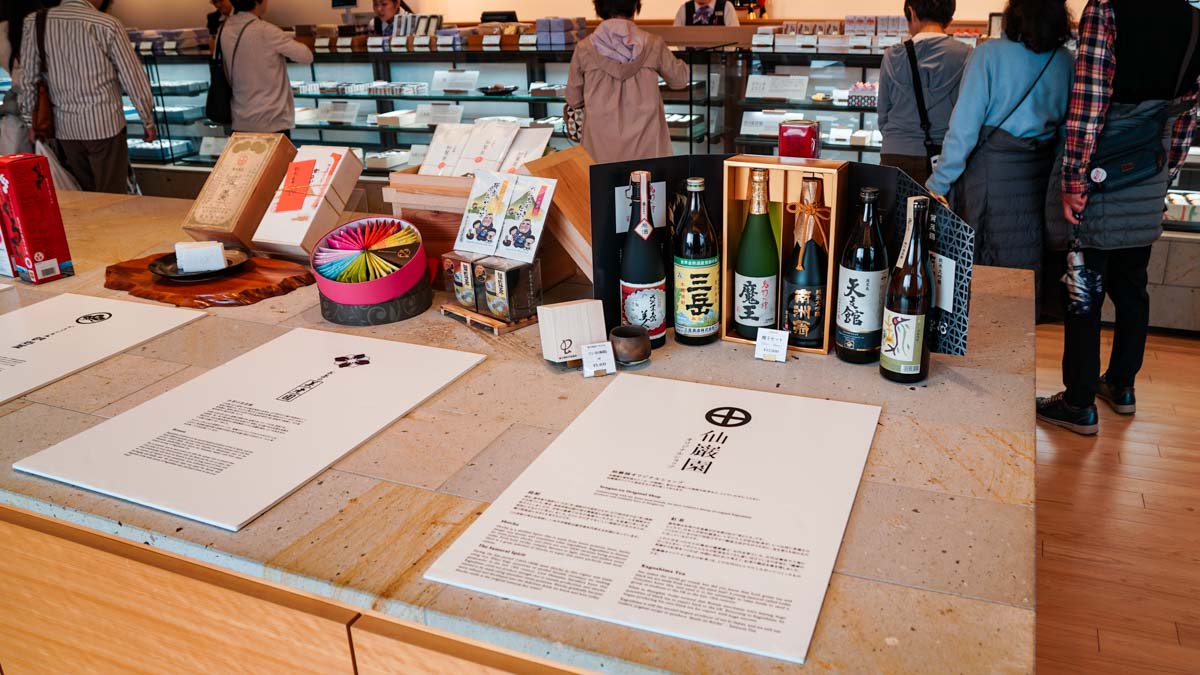
The gift shop in Sengan-en sells an assortment of Shochu, a liquor made from locally-grown sweet potatoes.
Sengan-en’s gift shop also sells exclusive Kagoshima-produced snacks and food products from hard liquor Shochu to fruity gummies made from locally-sourced ingredients.
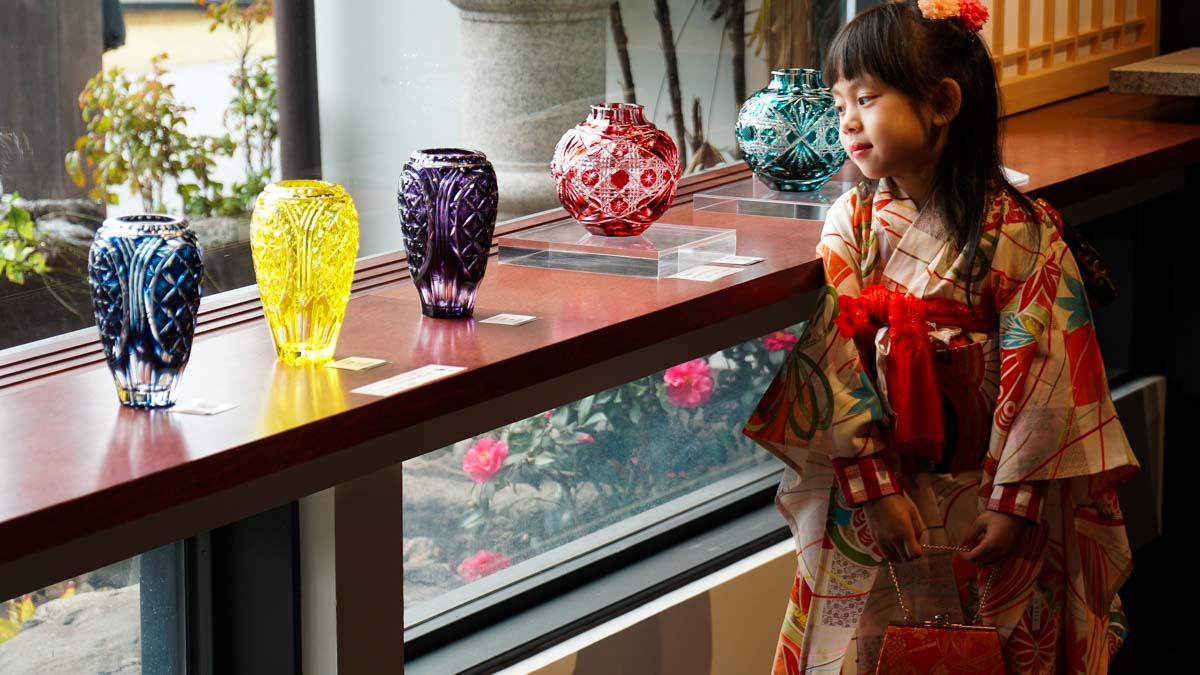
Satsuma Kiriko crystal glass gallery .
There’s also a glassware gallery and shop that showcases the Satsuma Kiriko cut glass that was first created in Kagoshima during the Edo period.
Entrance fee: ¥1,600 (entry to garden, museum and house) Opening hours: 9AM – 5PM Address: 9700-1 Yoshino-cho, Kagoshima City, Kagoshima 892-0871
Lunch at Sengan-en Matcha Cafe
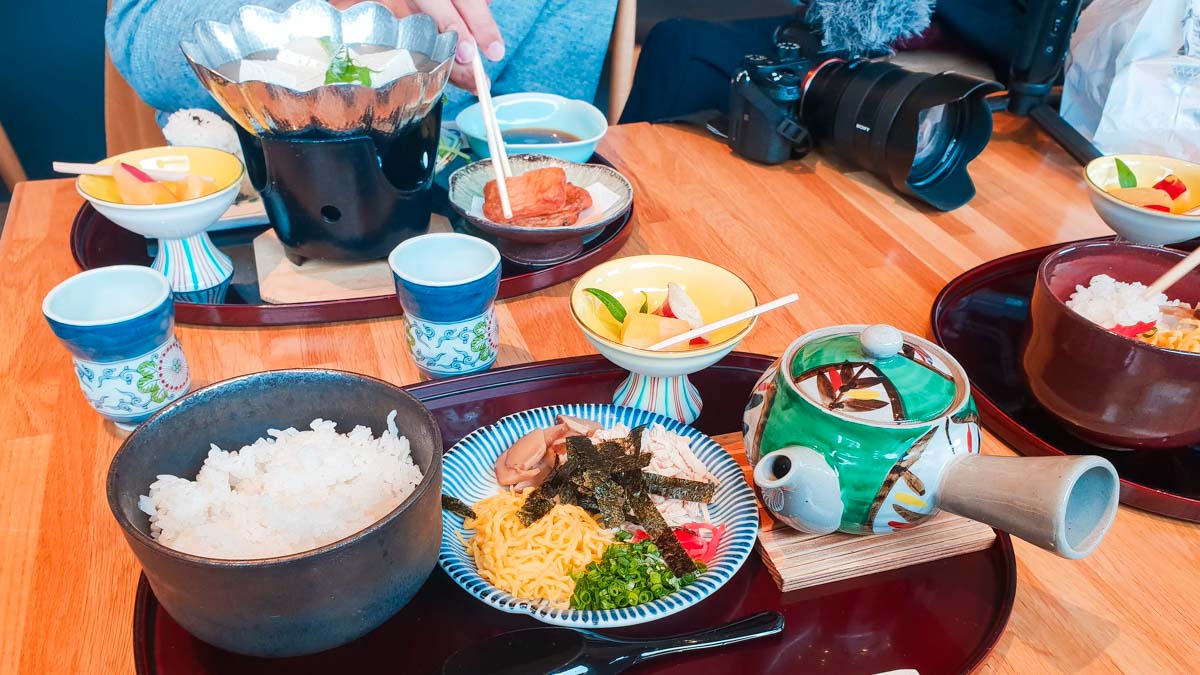
Sengan-en’s Matcha Cafe sells pretty decent lunch!
Within Sengan-en is a Muji-esque cafe serving all things matcha from parfaits to affogato. From 11AM – 3PM the cafe serves two lunch sets (¥1,300) — Keihan (chicken rice), and Yudofu (tofu soup). Each is limited to 15 sets per day, so get there early for a taste!
Opening hours: 9AM – 5PM
Dinner at Shabu Zen (しゃぶ禅)
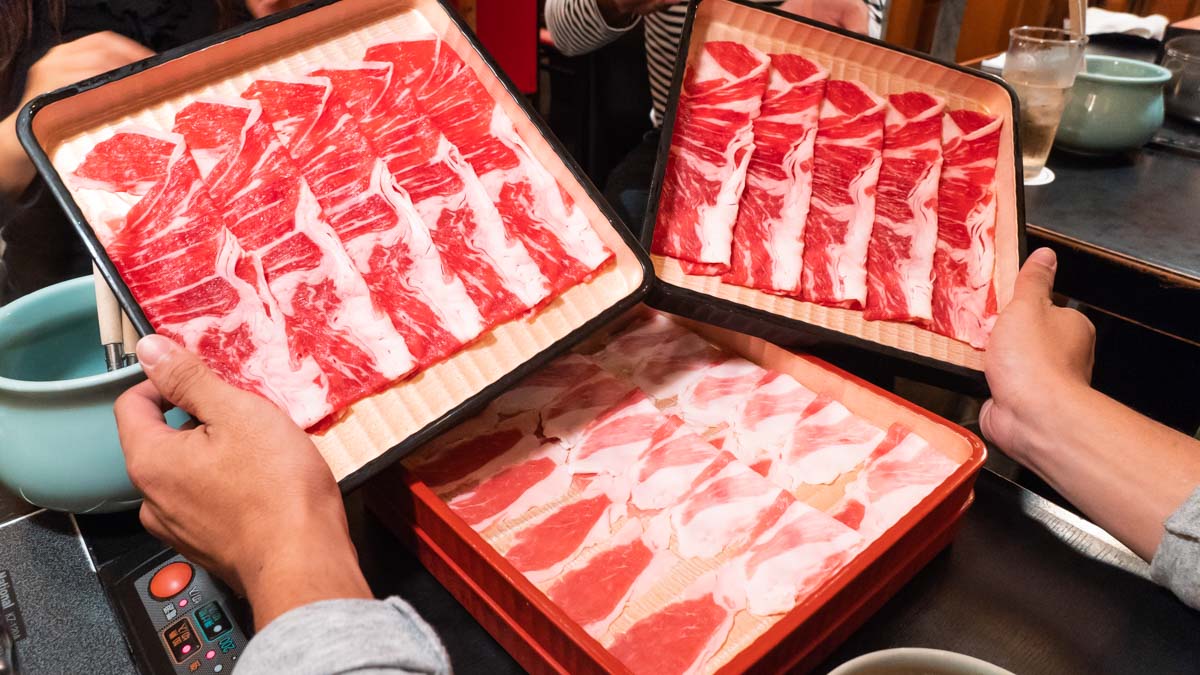
Besides seafood, another must-try in Kagoshima is their local black pork (Kagoshima Kurobuta), best-eaten shabu-shabu style. We had our share of shabu goodness at Shabu Zen , offering both à la carte and buffet options. The all-you-can-eat shabu-shabu starts from ¥3,500/pax.
Opening hours: 5PM – 11PM Address: CUBE Building 2F 5-12 Higashi Sengoku-cho, Kagoshima-shi, Kagoshima-ken
Day 6: Kagoshima – Fukuoka
On our last day in Kyushu, we travelled northwards back to Fukuoka. The shinkansen will take you back from Kagoshima-chuo to Hakata in 1.5 hours.
Ohori Park (大濠公園)
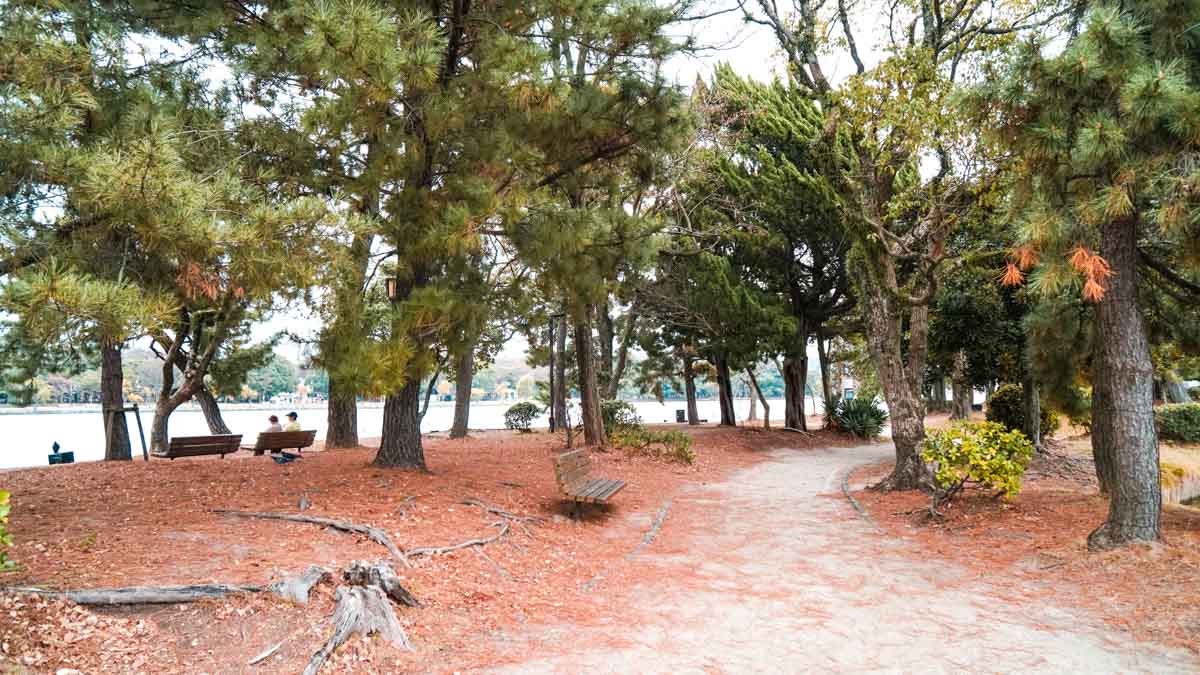
Fun fact: Ohori in Japanese means moat, and the large pond in the middle of Ohori Park used to be part of the moat system of the nearby Fukuoka Castle!
Now, you can just take a leisurely stroll while walking on the stone bridges connecting the pond to the mainland.
Entrance fee: Free Address: 1-8 Ōhorikōen, Chūō-ku, Fukuoka-shi, Fukuoka-ken 810-0051, Japan
Read also: 8-Day Hokkaido Spring Itinerary
The Ruins of Fukuoka Castle (福岡城跡)
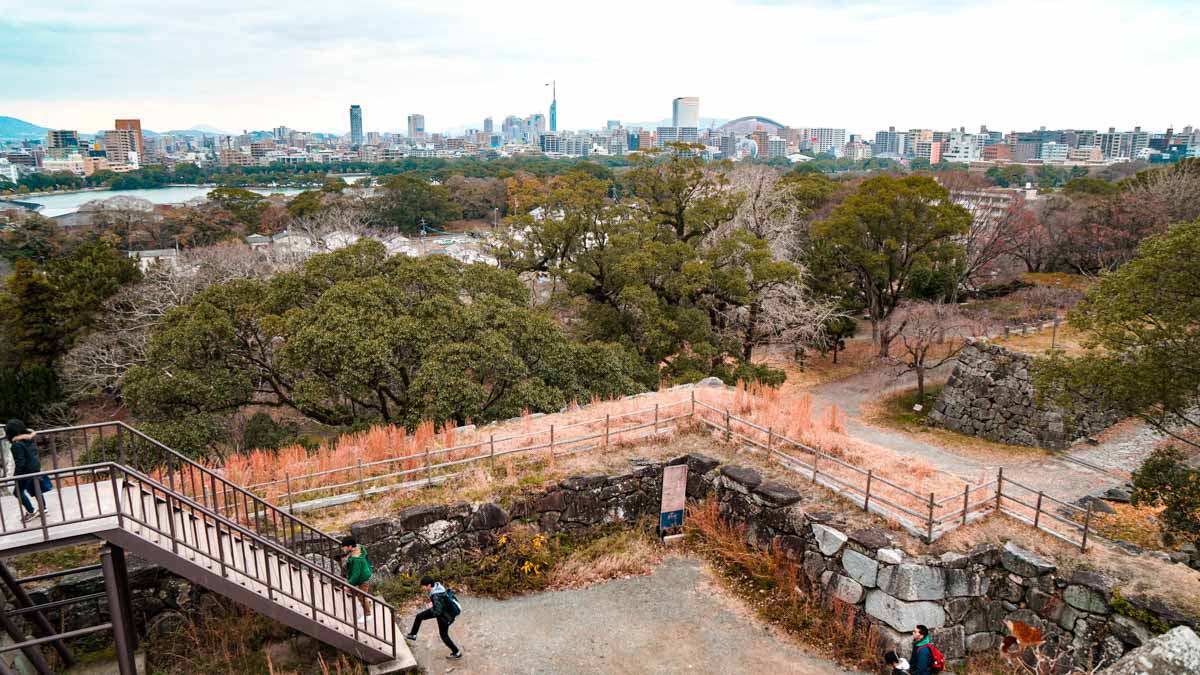
Although only ruins remain, the Fukuoka Castle makes a good lookout point to the city.
Walking distance from Ohori Park, what’s left of the once-great Fukuoka Castle is only a few ruined walls, though it’s nonetheless a great lookout point for a panoramic view of Fukuoka city.
Lunch at Tori Mabushi (とりまぶし)
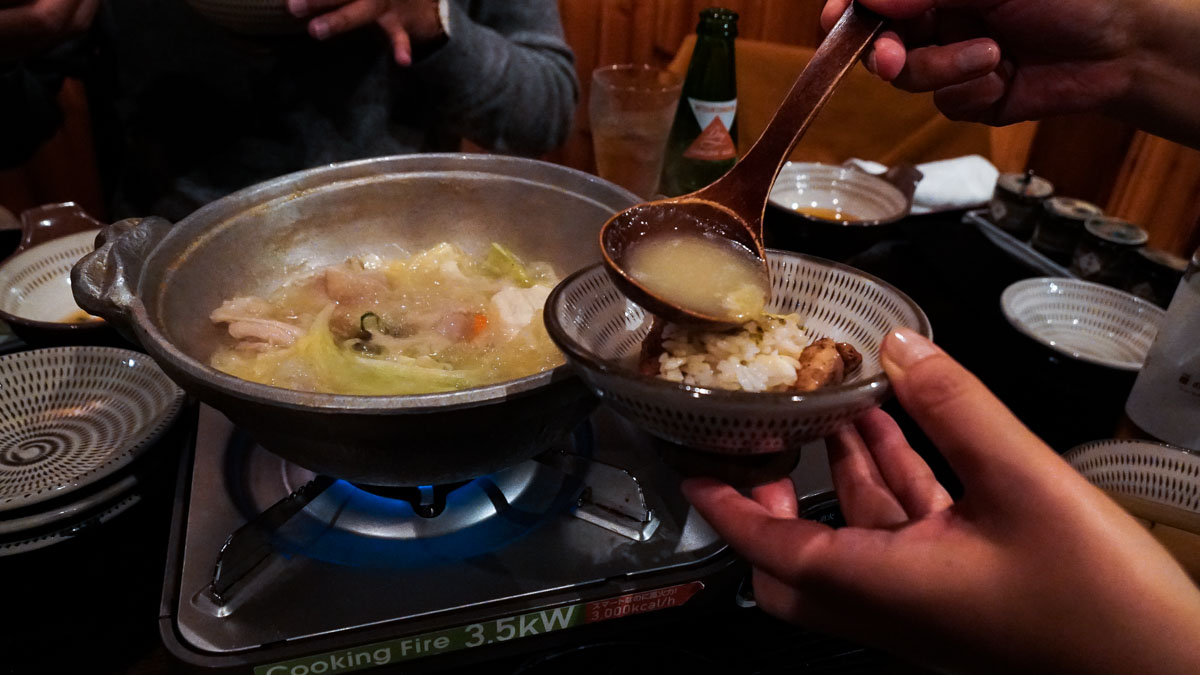
The most challenging part of this dinner is successfully reserving a table beforehand because this restaurant is hugely popular among locals as well. But add this to your Kyushu itinerary and try your luck anyway (Tel: 092-260-7273)!
The second most challenging part is learning the proper way of eating Tori Mabushi, a Fukuoka grilled chicken with chicken broth.
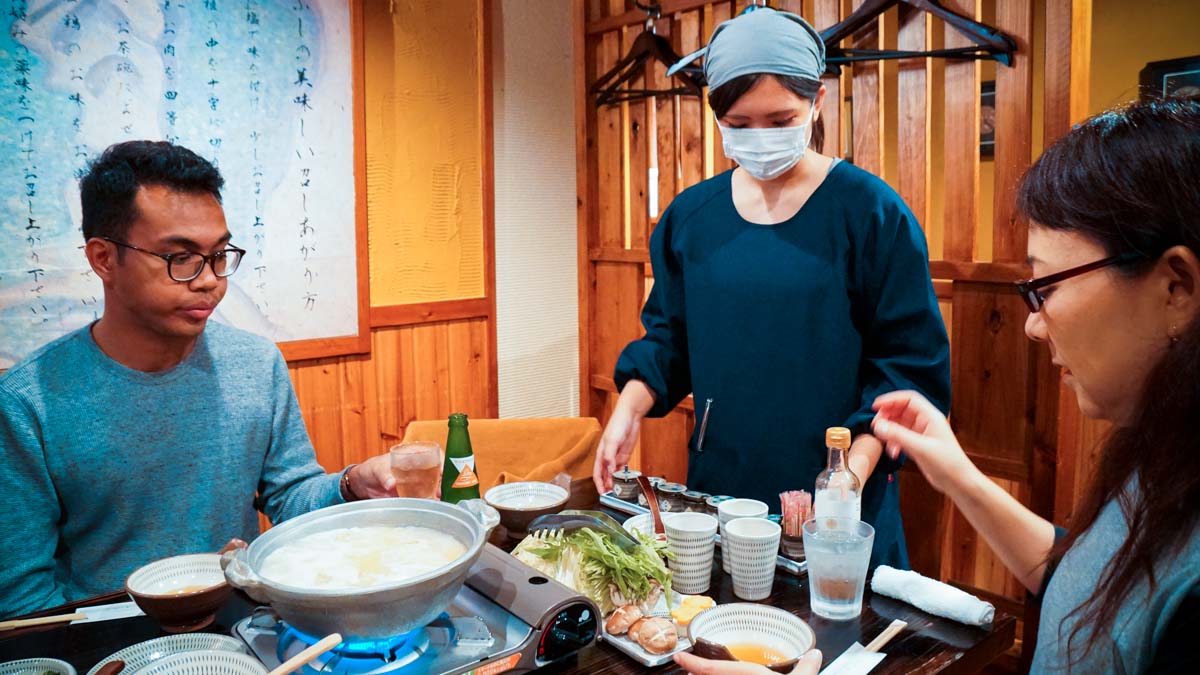
The restaurant staff will prepare the condiments and explain the “proper” way of enjoying a tori mabushi meal.
Here are the steps to eating tori mabushi (which the staff will gladly show you to properly enjoy the dish):
- Eat 1/3 of the bowl of grilled chicken and rice as it is served.
- Eat the next 1/3 with added condiments such as kombu (dried kelp) and yuzukoshō (yuzu pepper).
- Finish the last 1/3 by mixing chicken broth into the rice.
All that effort was not for nought though — if there’s only one restaurant worth a repeat visit among the plethora of eateries in Fukuoka, it’s Tori Mabushi .
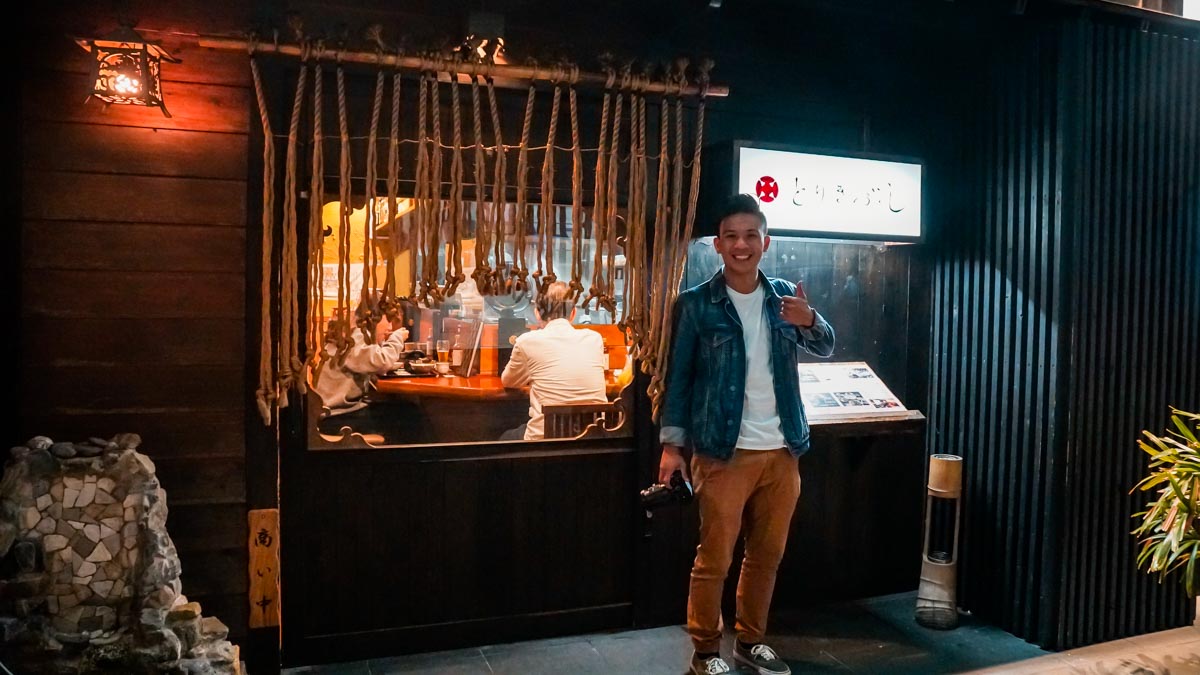
Cost: From ~¥1,800/adult Opening hours: 10:30AM – 10PM Address: Fukuoka Prefecture Fukuoka City 5-3-18 Nakasu, Hakata-ku Tm-16 Building 1F
Tōchō-ji ( 東長寺 )
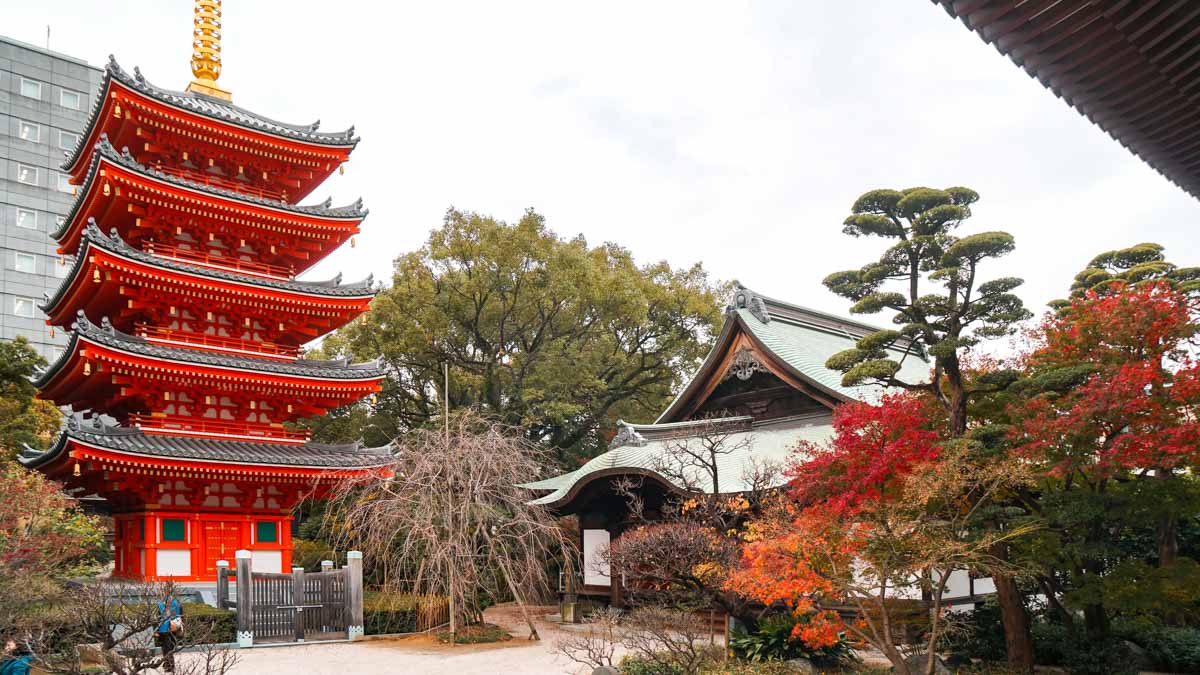
Housing the largest wooden seated Buddha statue in Japan is the Tochoji Temple. You may also recognise the red pagoda next to the main hall of the temple. Conveniently situated a few minutes walk from Gion subway station, Tochoji Temple is not only for devout Buddhists but anyone.
Entrance fee: Free Opening hours: 9AM – 5PM Address: 2-4, Gokusho-machi, Hakata-ku, Fukuoka
Dinner at a Yatai
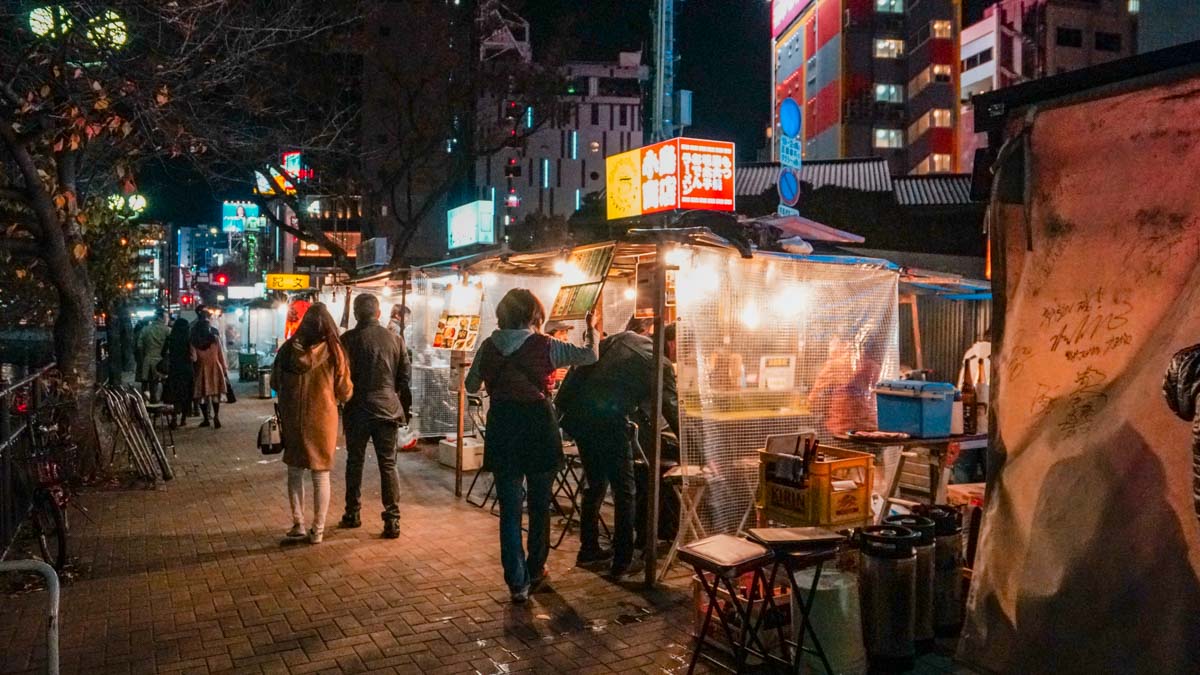
Yatai stalls along Nakasu district of Fukuoka .
One has not been to Fukuoka if they’ve not eaten at a yatai in Fukuoka. A dying trade, yatai are essentially roadside food stalls selling local delights like ramen , sukiyaki and oden . While roadside stalls are still a common sight in many Asian countries, they’re practically unheard of in Japan and can only be found in Fukuoka.
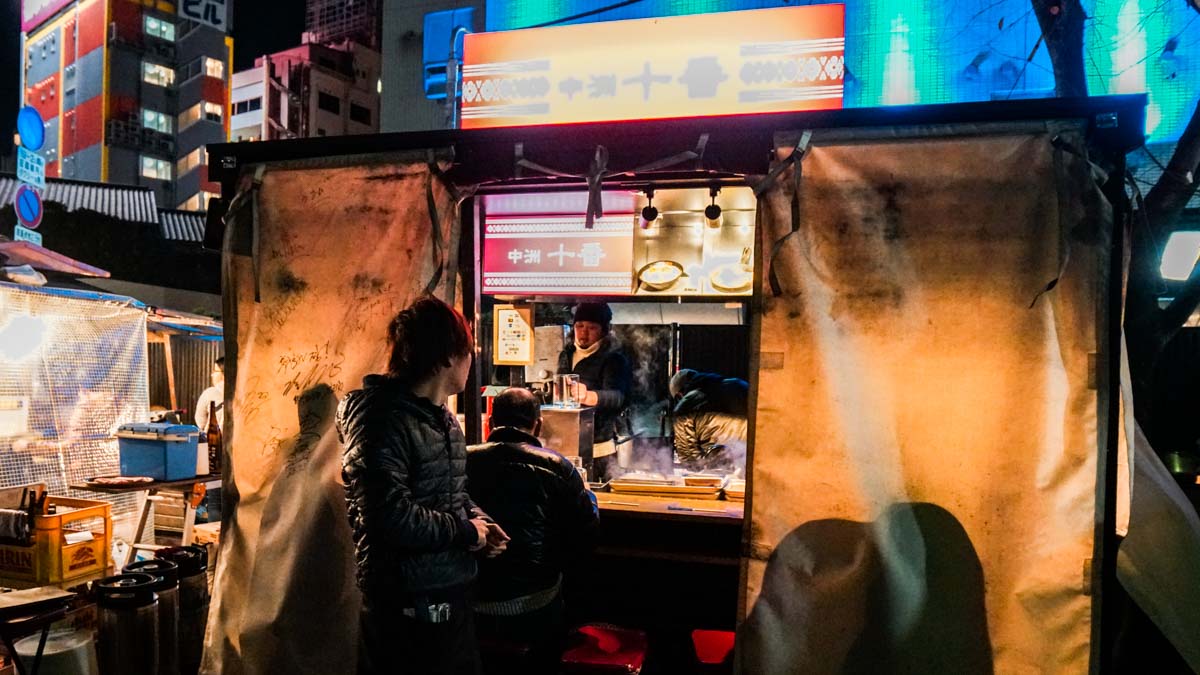
We had our dinner with other locals and curious foreigners alike, taking in the tastes and experiences of a soon-to-be-gone part of Fukuoka culture and tradition.
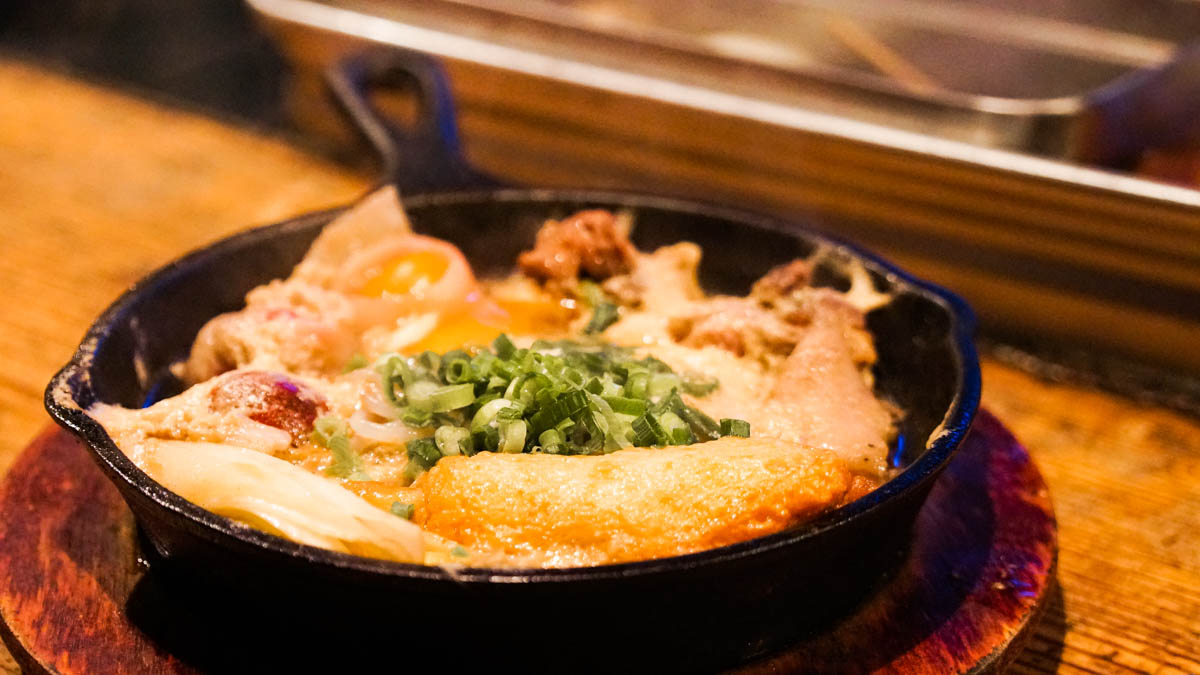
Honestly, the sukiyaki is nothing special, but it’s the experience of eating piping hot food by the streets with a dozen other hungry diners huddled under a small tent that made it interesting for us.
Opening hours: 6PM till late How to get there: Yatai stalls can be found in Tenjin, Nakasu, and Nagahama areas of Fukuoka
Accommodation in Kyushu
Cities in Kyushu are easily an hour or two apart so we based ourselves in four hotels with this Kyushu itinerary. With these no-frills accommodation options in Kyushu’s major cities, we were able to travel around and explore Kyushu without much hassle.
What we loved about all four hotels was their relatively central location that’s always within walking distance of a train station, with ample shops nearby to purchase any essentials we need/forgot to bring. Here are the hotels we stayed at in our Kyushu itinerary:
Fukuoka — HOTEL MYSTAYS Fukuoka Tenjin
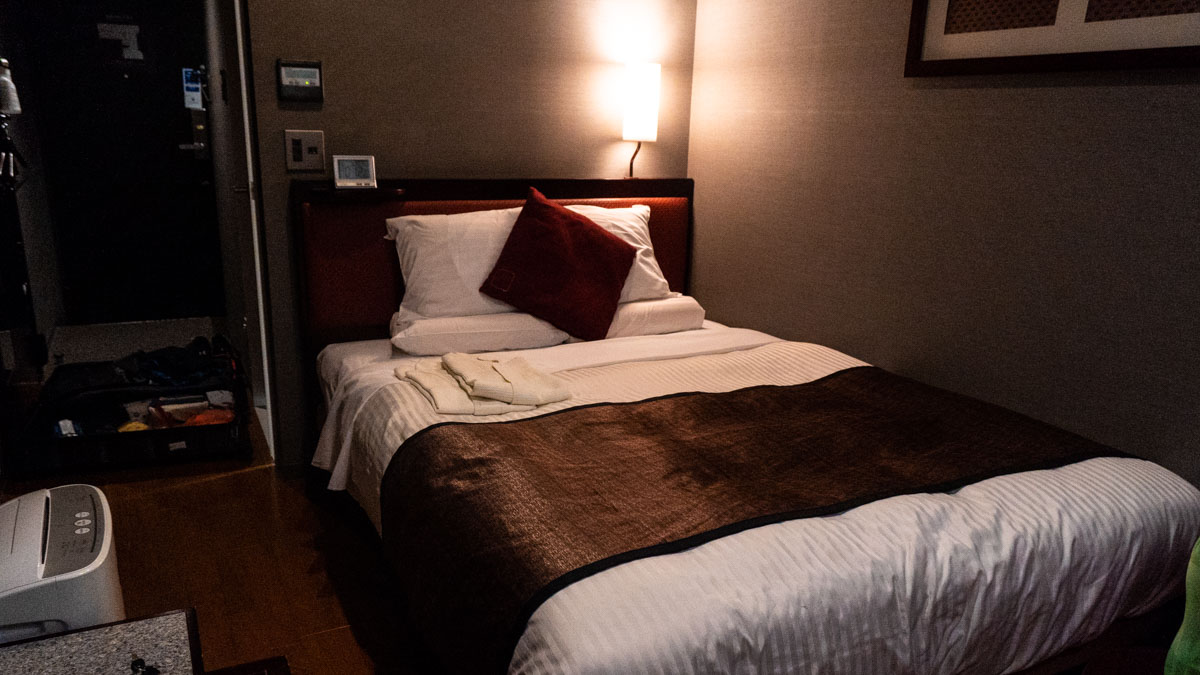
Located in a prime location yet not directly at the heart of Tenjin, HOTEL MYSTAYS Fukuoka Tenjin is close to convenience stores and Tenjin station but still provides a quiet environment. Rooms are adequately furnished for their cosy size, and if you need additional amenities like toiletries or laundry bags, you can help yourself in the lobby.
Cost: From ~S$67/night How to get there: Walk 5mins from Tenjin subway station (Kuko Line)
Kitakyushu — ART HOTEL Kokura New Tagawa
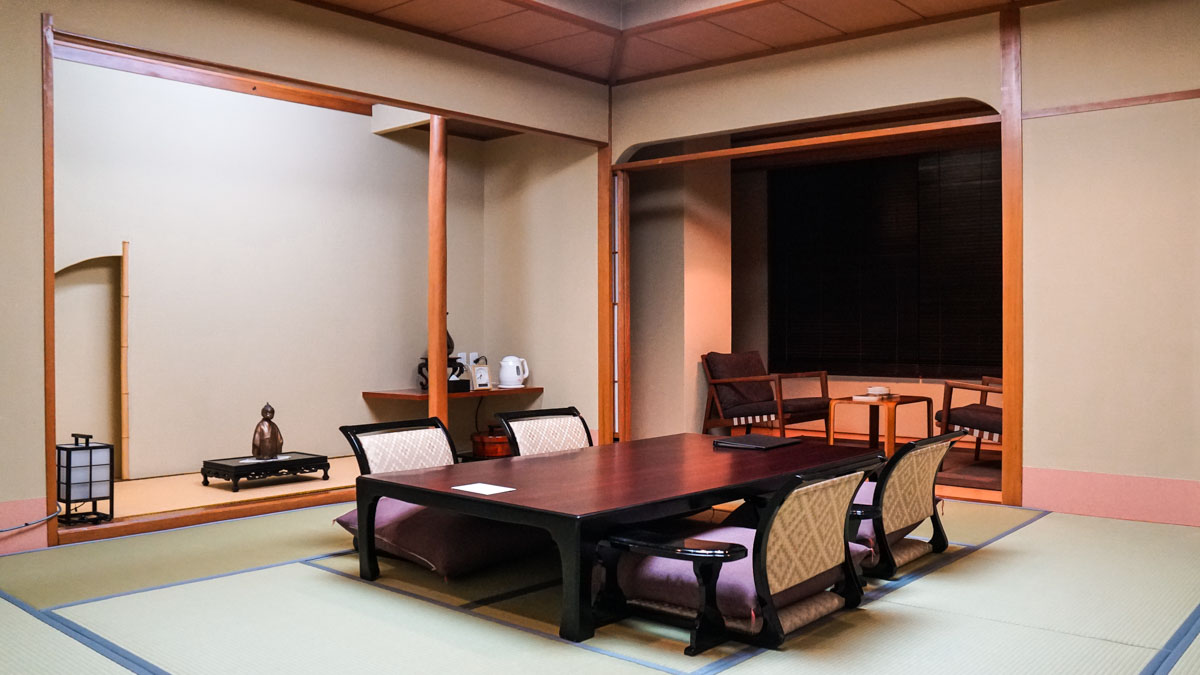
Japanese-themed room at ART HOTEL Kokura New Tagawa.
ART HOTEL Kokura New Tagawa is considerably no-frills in terms of amenities, but it makes up for it with its spaciousness and aesthetics. In fact, this hotel is straight-up classy with a tinge of luxury.
There are themed rooms in either Japanese or Western furnishing and also has a century-old Japanese garden within its compound that’s a popular setting for Japanese weddings.
Cost: From ~S$57/night How to get there: Walk 12mins from Kokura Station
Beppu — Beppu Kamenoi Hotel
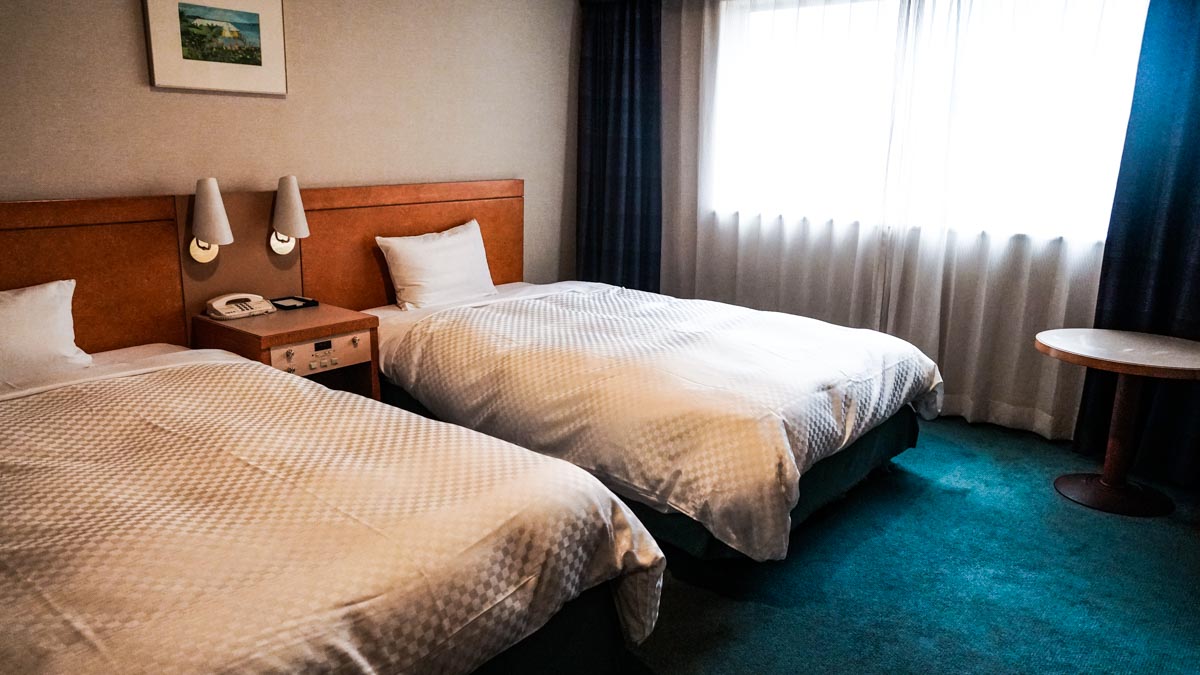
The most spacious hotel of the lot, Beppu Kamenoi Hotel is only a stone’s throw away from Beppu station with its own in-house onsen and a level with an arcade and candy store that they call a “kids’ zone”. For its convenient location and spaciousness at these rates, we’d say this one is the most value for money of the four.
Cost: From ~S$57/night How to get there: Walk 6mins from Beppu station
Kagoshima — HOTEL MYSTAYS Kagoshima Tenmonkan

This hotel’s close proximity to the Tenmonkan area is a huge plus as that also means an abundance of restaurants and bars around!
My favourite part of the hotel is the 24-hour convenience store next to the hotel lobby so I’ll never go hungry during my stay, not even in the wee hours of the morning. There is also coin laundry located on the 7F of the hotel.
Cost: From ~S$44/night How to get there: Walk 15 mins from Kagoshima-chuo station, or 1 min from Takamibaba City tram station.
Anything else we should add to this Kyushu itinerary? Let us know in the comment section below!
Follow us on Instagram , YouTube , Facebook , and Telegram for more travel inspiration!
View this post on Instagram A post shared by The Travel Intern (@thetravelintern)
RELATED ARTICLES MORE FROM AUTHOR
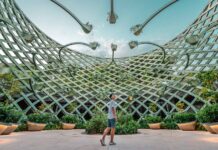
31 New Deals and Attractions in Singapore this April 2024
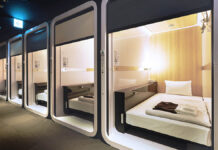
Top 11 Stunning Yet Budget-Friendly Tokyo Capsule Hotels (from ~S$40/night)
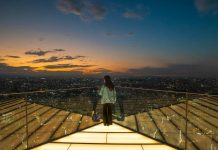
Tokyo Vs Osaka: Why Are These Two Popular Japanese Cities so Different — Cultures Explained
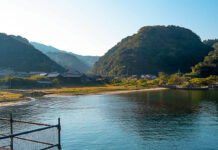
Hiroshima and San’in Guide — Going Beyond Tokyo/Osaka to Find Japan’s Best Hidden Gems

Tokyo Disneyland and DisneySea Guide (2024) — Maximise your Tokyo Disney Day with these 12 Tips and Tricks
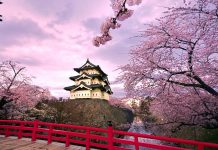
Ultimate 2024 Cherry Blossom Japan Guide — Everything You Need to Know
15 comments.
hello, thanks for sharing your itinerary.
may i know how did you managed to take the 3 rides? what timings were it? For the southwards route, we took three nostalgic scenic trains: 1. Kawasemi (Kumamoto to Hitoyoshi) 2. Isaburo Shinpei (Hitoyoshi to Yoshimatsu) 3. Hayato no Kaze (Yoshimatsu to Kagoshima-chuo)
Hi Tiffany, we made seat reservations for the trains at the JR service centre the same time we went to collect our JR passes. You may refer to the timetable here: https://www.jrkyushu.co.jp/english/pdf/timetable_20190316_20200229.pdf Hope this helps! 🙂
Hi Edelyn, Thanks for sharing your itinerary.
Which month were u in Kyushu ? The scenery are very nice.
I am planning to go on 12 – 19 Dec. Is the autumn fall still available ?
Best regards, Michelle
Hi Michelle, we were there in late Nov to the first week of Dec last year. You might be able to see some autumn colours on 12th Dec, but we’d recommend travelling in November if you want to see the autumn colours in full 🙂
Great to read your sharing. Would be great if you can share the transportation from one city to another, eg . Any day pass, JR etc..should we buy. I have absolutely no idea about Kyushu but love to visit it in September. Thanks
Hi Sheung Ko! Great question you’ve brought up! To answer your question, it really depends on which areas of Kyushu you’re intending to visit. Basically, there are 3 different JR passes for Kyushu based on areas. – North-Kyushu Pass: Shimonoseki, Mojikō, Kokura, Hakata, Yufuin, Beppu, Oita, Kumamoto, Aso, Saga, Nagasaki, Huis Ten Bosch and Sasebo, besides (limited to the portion between Hakata and Kumamoto, and cannot be used for the area between Hakata and Kokura). – South-Kyushu Pass: Kumamoto, Misumi, Hitoyoshi, Kirishima-onsen, Kirishima-jingū, Kagoshima, Ibusuki, Nishi-Ōyama, Miyazaki, Obi, Nangō, Nobeoka (limited to the portion between Kumamoto and Kagoshima-chuo) – Whole Kyushu Pass: Whole of Kyushu except the area between Hakata and Kokura. Do also get yourself a reloadable prepaid IC card (Suica, Pasmo or Icoca) for subway and bus transportations in the city. Get your preferred pass type from Klook Hope this helps! 🙂
Hi Edelyn, would like to clarify with you regarding All Kyushu Pass (you mentioned in your reply to Sheung Ko that it doesn’t cover area btwn Hakata and Kokura) but in your Day 2 itinerary, “…we headed to Kitakyushu (北九州), 16 minutes away via the Shinkansen Nozomi 44. This route (Hakata to Kokura) is covered by the All Kyushu JR Pass”. Looking forward to hearing from you. Thanks in advance
Hi Celine! Thanks for pointing out and so sorry for the confusion! To clarify, JR Kyushu passes do not cover rides on the Shinkansen Nozomi trains; separate tickets for the shinkansen ride has to be purchased. You can take other trains that run between Hakata and Kokura such as the Limited Express Sonic that’s covered in the JR Pass. The article has been corrected. Thank you. -Edelyn
Hi Edelyn, thanks a lot for your prompt reply. Loved ur itinerary and recommendations
Is it better to drive or travel by train. Thanks
Hi Veronica, we’re unable to advise on driving as we only travelled by train around Kyushu. But here are some pros and cons of travelling via train to help you in your decision-making. Pros: Wonderful scenic views on sightseeing trains. The train and rail systems in Kyushu are well-connected. Cons: Reservation of seats is a must and can only be done at a JR pass counter, which can be complicated. Slower travelling speed as compared to driving.
Hope this helps! -Edelyn
Would you recomend going to Kyushu in February?
We have 2 Weeks time and planned to rent a car.
Hi Colin! Any time’s a good time to visit Kyushu, although it will be cold in Feb at around 10degC in the day and 2degC at night, so do pack thicker clothes. Wow, 2 weeks! You’ll be able to cover so much more of Kyushu than what we have in this itinerary, haha! Do visit Nagasaki (which we missed out for our trip), and check out the Nagasaki Lantern Festival happening late Jan to early Feb if you have the chance. You might be able to see plum blossoms too! If you need more road trip info for Kyushu, WelcomeKyushu is a pretty good website! 🙂
may i know if apr to may is good month to travel as per your itinerary?
Hi Nana! Yes, April to May is a good time to travel Kyushu, although it will be slightly warmer as it’s spring/summer. Do take note that the Japan Golden week will fall between Apr 29 – May 5, so festivities aside, streets may get crowded as there will also be a lot of local Japanese tourists travelling too. 🙂
LEAVE A REPLY Cancel reply
Save my name, email, and website in this browser for the next time I comment.

11 Unique Things to Do in South Australia — Quirky Wineries,...

7 Boutique Hotels in Singapore For an “Out of the Country”...

How to Pay in China Without WeChat or Alipay — New...

11 Things to do in Clark, Philippines — A Quiet Adventure...

20 Things to Eat-See-Do in Sabah’s Capital Besides Climbing Mount Kinabalu

- Terms Of Use
- Privacy Policy
- Media & Industry
- Meetings & Events
- Select Language 简体中文 繁體中文(香港) 繁體中文(臺灣) India (English) Bahasa Indonesia 한국어 ภาษาไทย Tiếng Việt Singapore (English) Philippines (English) Malaysia (English) Australia/New Zealand (English) Français Deutsch Italiano Español United Kingdom (English) Nordic countries(English) Canada (English) Canada (Français) United States (English) Mexico (español) Português العربية Japan(日本語) Global (English)
- India (English)
- Bahasa Indonesia
- Singapore (English)
- Philippines (English)
- Malaysia (English)
- Australia/New Zealand (English)
- United Kingdom (English)
- Nordic countries(English)
- Canada (English)
- Canada (Français)
- United States (English)
- Mexico (español)
- Global (English)
- Fujiyoshida
- Shimonoseki
- Ishigaki Island
- Miyako Island
- Kerama Island
- Tokyo Island
- Koka & Shigaraki
- Hida Takayama
- Ginza, Nihonbashi
- Beppu & Yufuin (Onsen)
- Ginzan Onsen
- Nagasaki Islands

- Kumano Kodo
- Shikoku Karst
- Amami Oshima
- Hachimantai
- Omihachiman
- Aizuwakamatsu

- Diving in Japan
- Skiing in Japan
- Seasonal Flowers in Japan
- Sustainable Outdoors
- Off the Beaten Track in Japan
- Scenic Spots
- World Heritage
- Home Stays & Farm Stays

- Japanese Gardens
- Japanese Crafts
- Temple Stays
- Heritage Stays
- Festivals and Events
- Theater in Japan
- Japanese Tea Ceremony
- Cultural Experiences in Japan
- Culture in Japan

- Local Cuisine Eastern Japan
- Local Cuisine Western Japan
- Local Street Food
- Japan's Local Ekiben
- Japanese Whisky
- Vegetarian and Vegan Guide
- Sushi in Japan Guide
- Japanese Sake Breweries

- Art Museums
- Architecture
- Performing Arts
- Art Festivals
- Japanese Anime and Comics
- Japanese Ceramics
- Local Crafts

- Scenic Night Views
- Natural Wonders
- Theme Parks
- Samurai & Ninja
- Iconic Architecture

- Wellness Travel in Japan
- Japanese Ryokan Guide
- A Guide to Stargazing in Japan
- Relaxation in Japan
- Forest Bathing (Shinrin-yoku)

- Experiences in Japan
- Enjoy my Japan
- National Parks
- Japan's Local Treasures
- Japan Heritage
- Snow Like No Other
- Wonder Around Japan

- Visa Information
- Getting to Japan
- Airport Access
- COVID-19: Practical Information for Traveling to Japan
- Anime Tourism
- Countryside Stays
- Accessible Tourism
- Hokkaido Great Outdoors
- Scenic World Heritage in Tohoku
- Shikoku’s Nature and Traditions
- Southern Kyushu by Rail

- Traveling by Rail
- How to Travel by Train and Bus
- JR Rail Passes
- Scenic Railways
- Renting a Car
- Sustainable Travel in Japan
- Travel Brochures
- Useful Apps
- Online Reservation Sites
- Eco-friendly Accommodation
- Luxury Accommodations
- Traveling With a Disability
- Hands-free Travel
- How to Book a Certified Tour Guide
- Volunteer Guides
- Tourist Information Center

- Japanese Manners
- Spring in Japan
- Summer in Japan
- Autumn in Japan
- Winter in Japan
- Cherry Blossom Forecast
- Autumn Leaves Forecast

- Japan Visitor Hotline
- Travel Insurance in Japan
- Japan Safe Travel Information
- Accessibility in Japan
- Vegetarian Guide
- Muslim Travelers
- Safety Tips

- JAPAN Monthly Web Magazine
- Arts & Cultures
- Nature & Outdoor
- Festivals & Events
- Insider Blog
- Things to do
- Local Guides
- Food & drink
- Traditional
- Hokuriku Shinetsu

My Favorites
${v.desc | trunc(25)}
Planning a Trip to Japan?
Share your travel photos with us by hashtagging your images with #visitjapanjp
FUKUOKA Kitakyushu Kyushu's northernmost city is a place for learning, entertainment, and relaxation
- NEAR KITAKYUSHU
- Destinations
Kyushu's northernmost city is a place for learning, entertainment, and relaxation
As the closest city to Japan's main island of Honshu, Kitakyushu is the gateway between the two islands and is packed with sightseeing spots.
- Kokura Castle: The symbol of Kitakyushu City, Kokura Castle has an elegant five-story keep and was built in 1602
- The Moji Port Retro Area: Home to a number of 19th-century historic buildings
- Night views: The entire city can be seen from up high from the viewpoint of Mt. Sarakura
How to Get There
JR Kokura is Kitakyushu's main station and is on both local and bullet train lines.
By bullet train, Kokura is about 15 minutes from Hakata Station in Fukuoka City. From Kokura Station, local trains and buses connect to the rest of the city.
Kitakyushu is serviced internationally by air, and the airline StarFlyer is headquartered at the city's Kitakyushu Airport.
Kitakyushu City
Kokura castle.

The Moji Port retro area
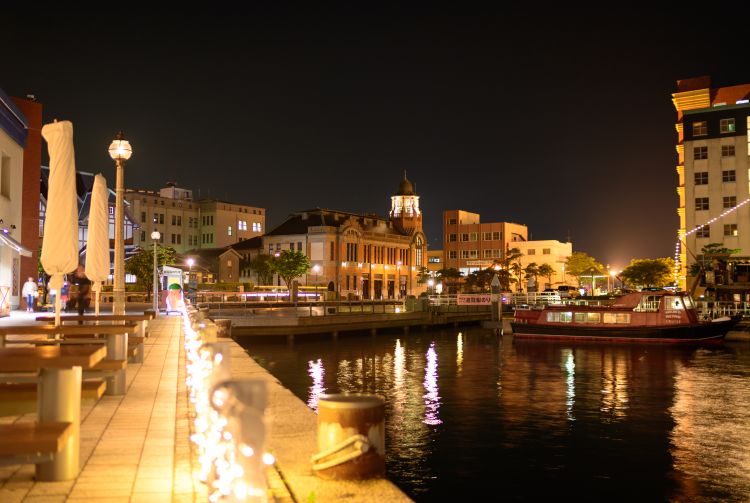
Mojiko Retro Observation Room
The port flourished, with a number of financial institutions and merchant companies settling in the area and constructing western-style buildings.
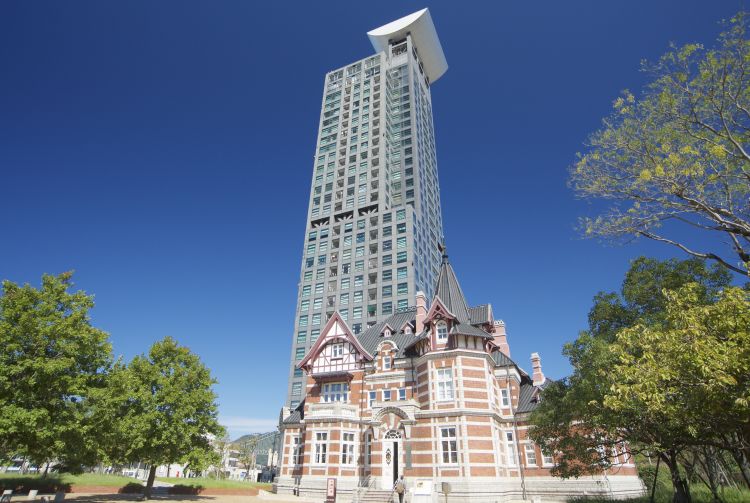
Must-see museums
Natural wonders.
The largest of these, Hohei-den, is the most majestic. The mountain is particularly beautiful in late autumn, as the colors of the forest change from green to red.
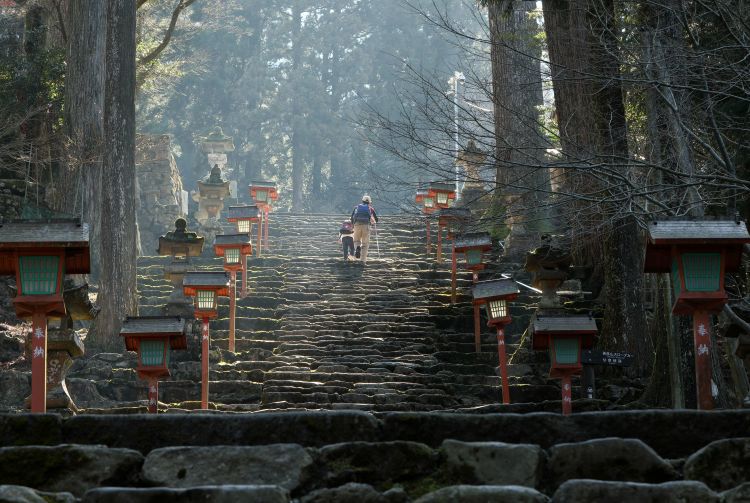
Encased by innumerable wisteria

Nighttime views
* The information on this page may be subject to change due to COVID-19.
Recommended for You
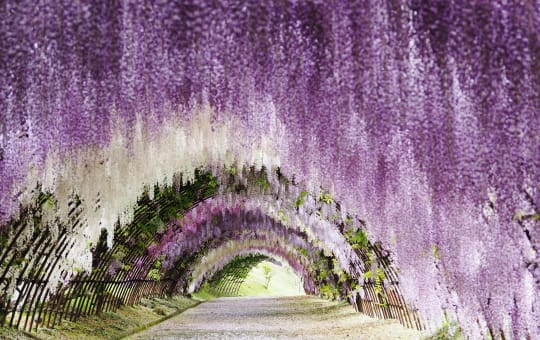
Did this information help you?
out of found this information helpful.
Thank you for your feedback.
Related links.

Please Choose Your Language
Browse the JNTO site in one of multiple languages
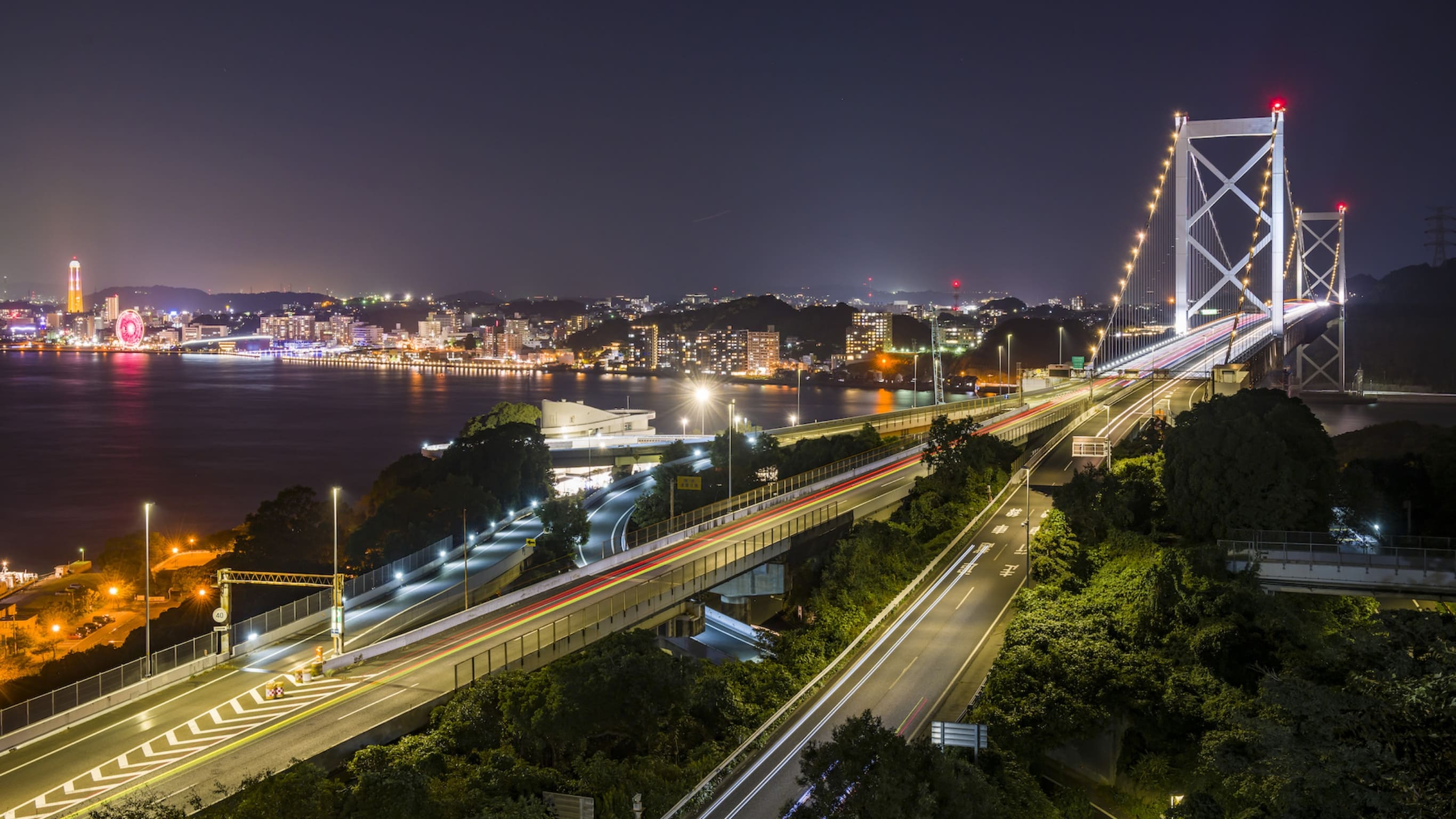
VISIT Kitakyushu
About Kitakyushu
Kitakyushu City is located at the northernmost tip of Kyushu, facing the Kanmon Straits. Enjoy its rich history and spectacular views of the sea, mountains, and flowers.
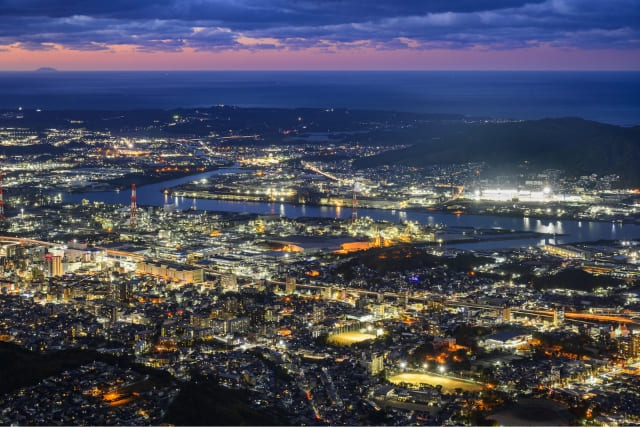
In 2022, Kitakyushu was recognized as the best of “Japan’s New Three Most Spectacular Night Views” !
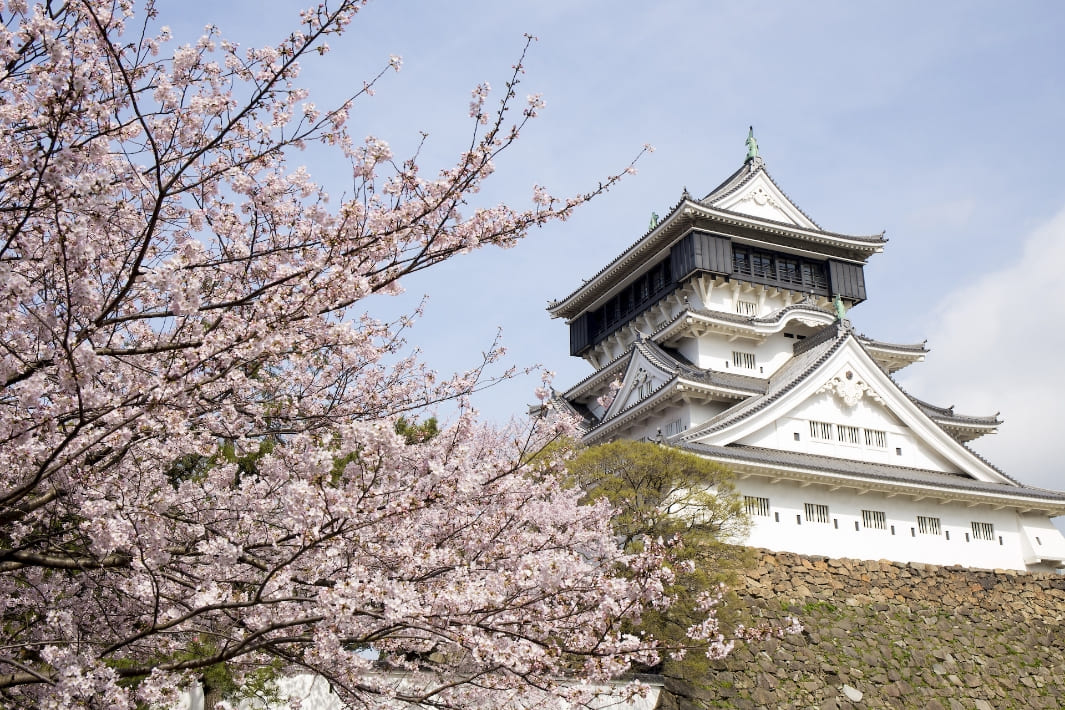
Articles & Links
- Japan Travel: One Day in Kitakyushu
- Japan Travel: Night Views of Kitakyushu
- japan-guide.com: 4-day trip traversing Kyushu
- JNTO Japan’s Local Treasures: Teruzushi - A Fukuoka Sushi Sensation
- VISIT FUKUOKA (Fukuoka Prefecture Tourism Association)

- Know about Kitakyushu
- Model course list
- Shops / Shopping streets
- Event information
- Tourist information office
- Useful information
- Volunteer guides
- Privacy policy
5 Days Itinerary in Kyushu – Fukuoka, Mojiko, Yufuin, Nagasaki, Kumamoto
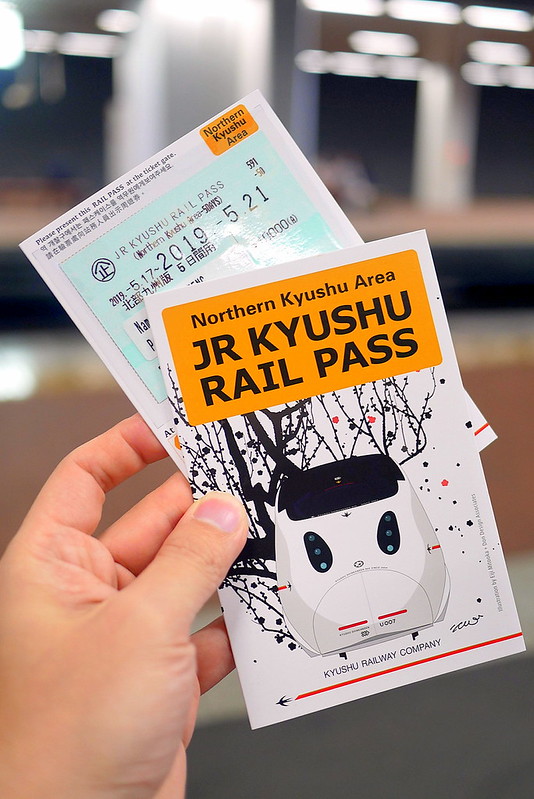
We spent a night at a super nice family ryokan in Yufuin and the remaining 4 nights in Tokyu Stay Hakata . The hotel is near to Hakata Station (about 8 minutes walk) which is a great location to base your Fukuoka stay out of. Just opened in end year 2018, the hotel is fairly new, and the cleanliness of all areas is impeccable. I love how they provide free coffee, ice cubes and toiletries – all free to grab at lobby area. There is a washer dryer in the room too, which is useful for us because we did all our laundry before flying back home.
However, the hotel is very near to a train track, remember to ask for rooms that is facing another side of the train track so that you will not be bothered by the noise.

Most of the nigiri here costs only 200 yen each – think uni, toro, ebi and many more. Besides nigiri and chirashi don, there were fugu sashimi, deep fried pufferfish and fugu saké! We had fun deciding and choosing what to have for lunch, and joined the crowd for a lunch with a view by the pier.
Getting Here: Take the ferry (¥400 one way) from Kanmon Kisen to Shimonoseki ferry terminal (about 5 minutes). Exit the Shimonoseki ferry terminal and walk along the water to your left. You will see the Karato Market in about 5 minutes.

Ichiran Main Store Address: 5 Chome-3-2 Nakasu, Hakata Ward, Fukuoka, 810-0801, Japan Hours: 24 hours daily Phone: +81 92-262-0433

There are three ways to enjoy your mabushi. First involves eating the rice and meat as it is. After you’ve had a few bites, you can then mix the yakumi into your bowl for the second stage. It is a must to try the yuzu sansho which you can see all over Yufuin (must buy!). When you’re down to the last few bites, you pour the dashi into your bowl to polish off the rest. The crispy and charred rice bits are the best, and the soup soften them.
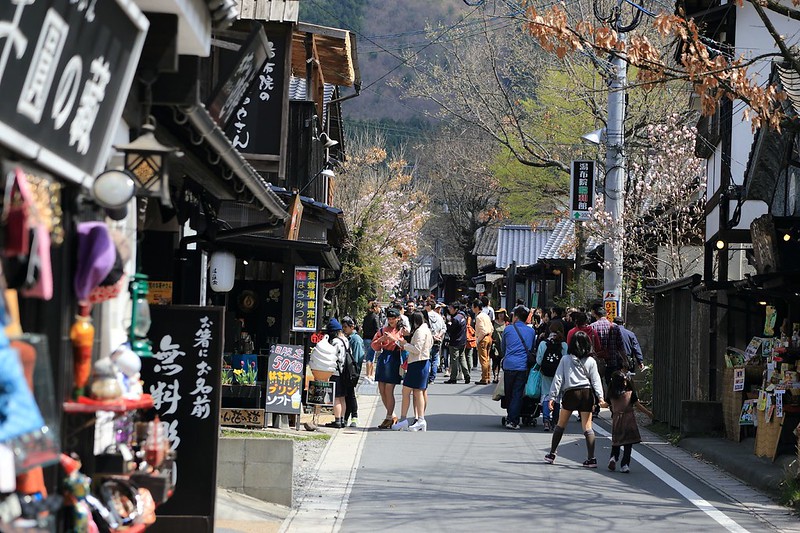
Sanso Tanaka Address: 286-1 Yufuincho Kawaminami, Yufu, Oita 879-5103, Japan Phone: +81 977-85-4500 Getting Here: 7 minutes by foot from Yufuin station

The most distinctive feature of the ramen here is the microfoam bubbles of rendered pork fat that add richness and sweetness to the soup without weighing it down. Really good!

At the center of the canal there is a fountain with water shows every 30 minutes from 10:00 until 22:00.

Nikuichi Address: 1 Chome-2-18 Hakataekiminami, Hakata Ward, Fukuoka, 812-0016, Japan Hours: 5pm–1am daily Phone: +81 92-472-1129 Getting Here: 7 minutes walk from Hakata station
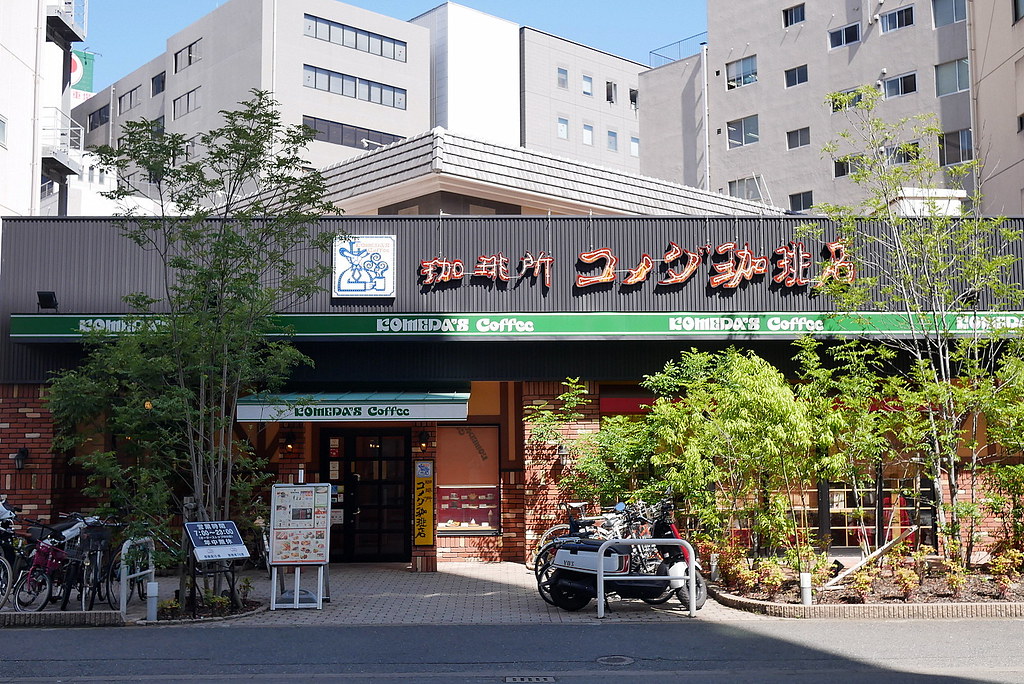
By ropeway The ropeway ride takes five minutes and costs 720 yen (one way) or 1230 yen (round trip). A discount coupon is available online. Operation hours are from 9:00 to 22:00. There are occasional periods when the ropeway is not running due to maintenance. Gondolas depart every 15-20 minutes. The ropeway’s lower station can be reached in less than ten minutes from Nagasaki Station by frequently operating Nagasaki Bus, by taxi, or in a five minute walk from the Takaramachi tram stop.
By car or taxi Parking is available at the summit of Mount Inasa (100 yen). The car ride from Nagasaki Station takes roughly 15 minutes, while a taxi ride costs around 2000 yen one way.

元祖 もつ鍋 楽天地 博多 駅 新幹線口店 Address: 2 Chome-2-27 Hakataekihigashi, Hakata Ward, Fukuoka, 812-0013, Japan Hours: 5pm–12am daily Phone: +81 92-441-7744
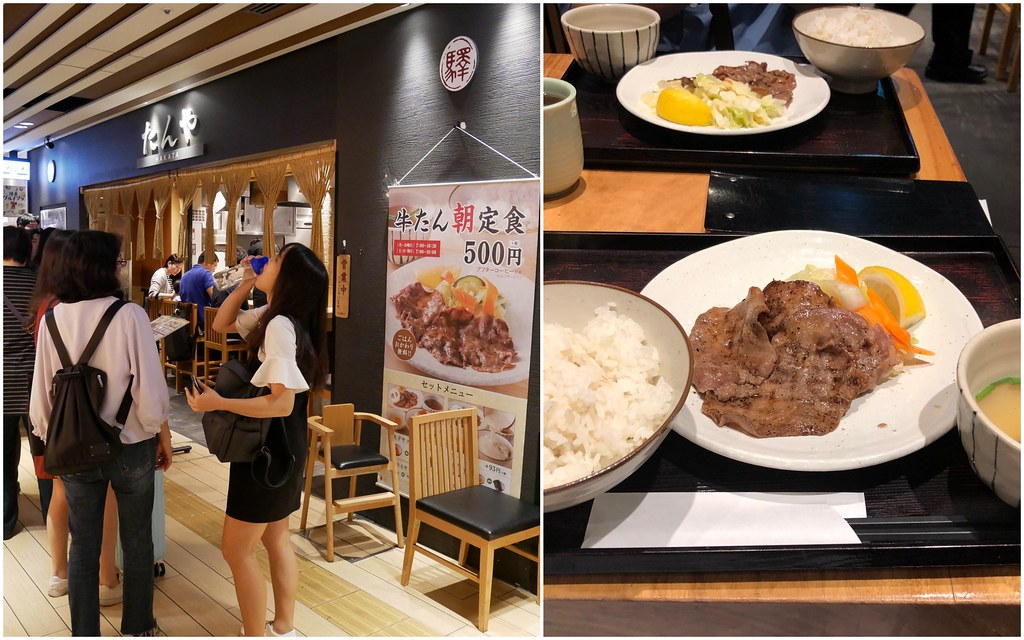
The quality of the meat is so good – mild sweet taste and bursting with juices. The batter is very light and crispy, and from the look of it, it seems like they make their own panco (breadcrumbs) due to the random shapes and lengths.

La Maison de la Nature Goh Address : 2-26 Nishi-nakasu, Chuo-ku, Fukuoka [ MAP ] Tel : 092-724-0955 Open : 18:00~24:00 Close : Sun. http://gohfukuoka.com/index-e.html
Such a great ending to our trip in Kyushu! We took the early morning flight back to KL on the very next day.
- Latest Posts
KampungBoy and CityGal are obsessed about food but not weight!!! We search for delicious "Kampung" Food as well as "City" Food which will satisfy your tastebuds... Hope you will enjoy it! Have a nice day...
- Protected: One Day at TOKYO SKYTREE
- Different Kinds of Hand Surgery and When They Are Necessary
- Top Tips for Feeling and Looking Your Best After a Long Flight
You may also like
Explore the central japan region with the takayama-hokuriku area tourist pass, 6d5n itinerary in shirakawa-go, takayama, kanazawa, toyama, gifu and fukui part ii, 6d5n itinerary in shirakawa-go, takayama, kanazawa, toyama, gifu and fukui part i, leave a reply cancel reply.
You must be logged in to post a comment.
More Stories
Eat me @ bangsar, kl.
One of my favourite instagrammer is Manuela from @passionforbaking. She shares her gorgeous recipe and a very swoon-worthy kitchen. I often think to myself,…

Photos from Kitakyushu
Blogs from kitakyushu, latest blog posts from kitakyushu.

These are the furthest places you can travel to from Toronto by car
Latest Videos
Road trip season is just around the corner, and while there are countless destinations in Toronto's backyard worth exploring this summer , they might not satisfy those looking to really put some mileage on their odometers.
blogTO has covered travel curiosities like the longest flight out of Toronto , and even the shortest flight you can take from the city. But those who prefer to travel closer to the ground will be surprised to learn just how far from the 416 you can venture on a set of wheels without ever lifting off on a plane.
Tropical and even Arctic destinations can be reached by car from Toronto if you're willing to put in the hours and brave treacherous road conditions.
So, how far can you actually drive from Toronto? It turns out you can travel quite a surprising distance, with the maximum direct voyage spanning 7,250 kilometres across eight countries, ending in one of the most remote regions on the planet amid the rainforests of Panama.
The absolute longest direct trip from Toronto you can take without resorting to an airplane or car ferry entails 90 hours — almost four days — of nonstop driving through southern Ontario, the American heartland and several Central American countries via the Pan-American Highway that covers most (but not all) of the west coast of the Americas.
The Pan-American Highway's northern end reaches its southern terminus at the small Panamanian village of Yaviza, at the edge of a region known as the Darién Gap.
This remote, mountainous, and densely rainforested area forms a dividing line between Central and South America. No roads, not even primitive dirt paths, cross this gap — meaning it is the furthest south one can drive from anywhere on the North and Central American landmass.
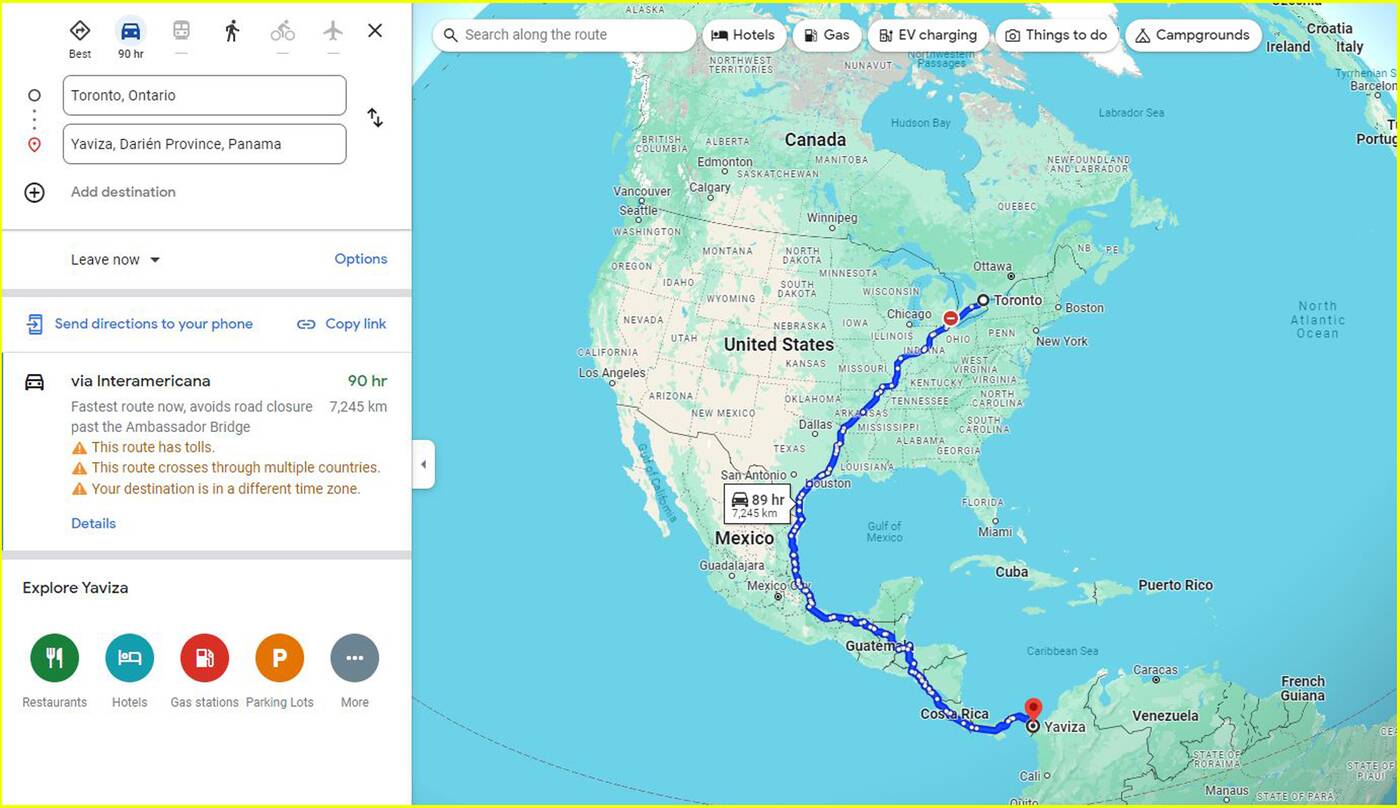
Google Maps
Don't expect much in the way of tourist accommodations if you visit, though. If adventure tourism isn't your thing, this might not be the trip for you.
But what if you do love adventure and you're just not a warm-weather type?
Fear not, as there is another very long road trip you can take, if inclined, that will cross through some equally rugged — but much colder — landscapes, leading you all the way to the Arctic Ocean.
The drive from Toronto to Prudhoe Bay, Alaska, spans an unbelievable 7,200 kilometres, including a final stretch along the Dalton Highway, one of the northernmost paved roads on the planet.
At 75-76 hours drive time, you'd be on the road for more than three full days to get to this destination above the Arctic Circle. Accommodations in Prudhoe Bay are spartan, but visitors still often make the trek from larger Alaskan cities to see the tundra landscapes and midnight sun during warmer summer months.
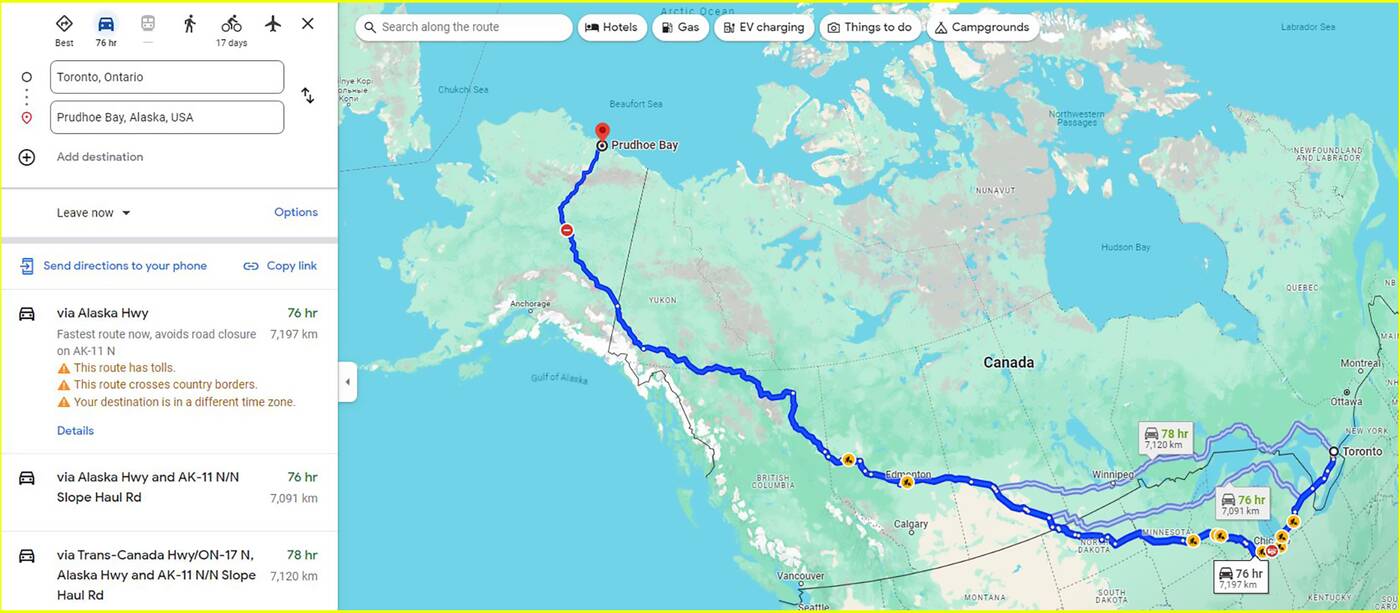
I wouldn't suggest either of these trips for the casual driver, as they will take you through long stretches of remote areas that, without adequate preparation and supplies, could turn into a really bad time.
With that in mind, happy trekking!
Francesco Veronesi /Wikimedia Commons| FloridaStock /Shutterstock
Join the conversation Load comments
Latest in Travel
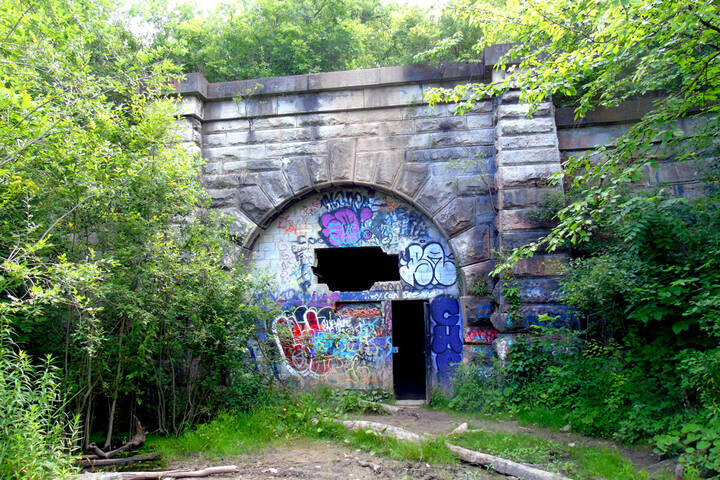
This spooky abandoned tunnel in Ontario is an epic photoshoot destination
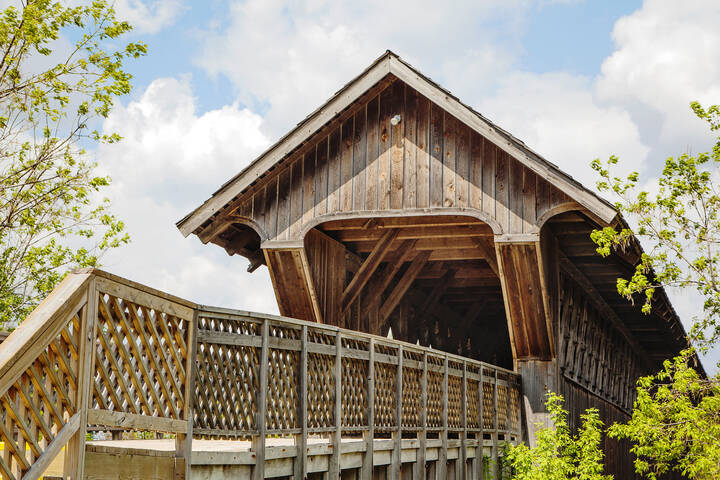
Romantic bridge is one of only two covered bridges in Ontario
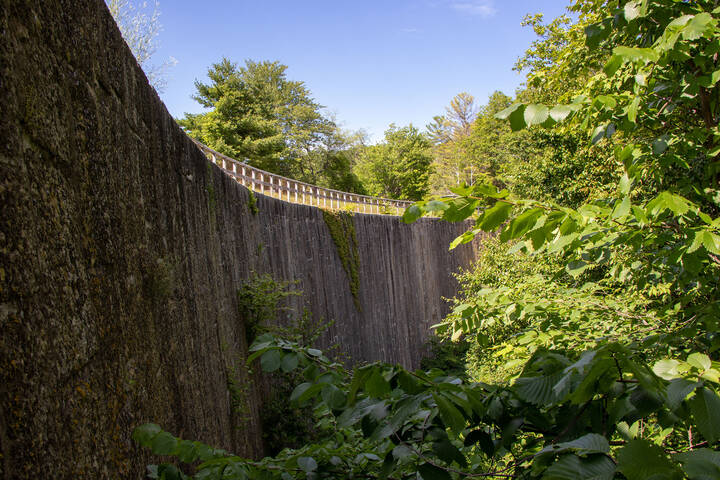
Historic site in Ontario has a 'whispering' dam that's almost 200 years old
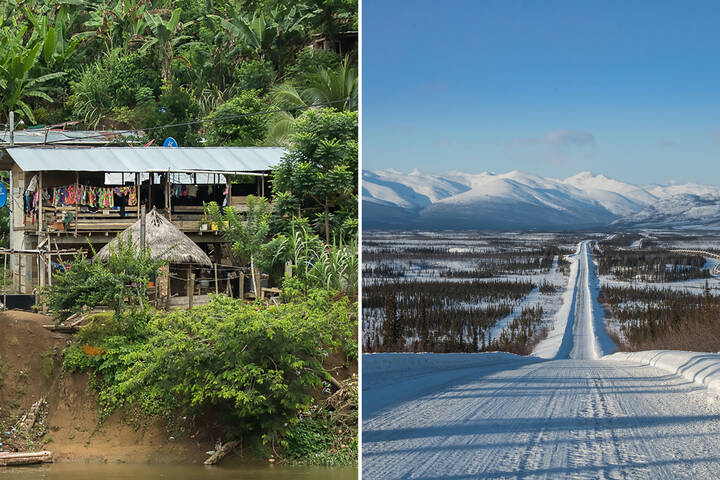
Canadians aren't happy with Air Canada for introducing another fee at check-in
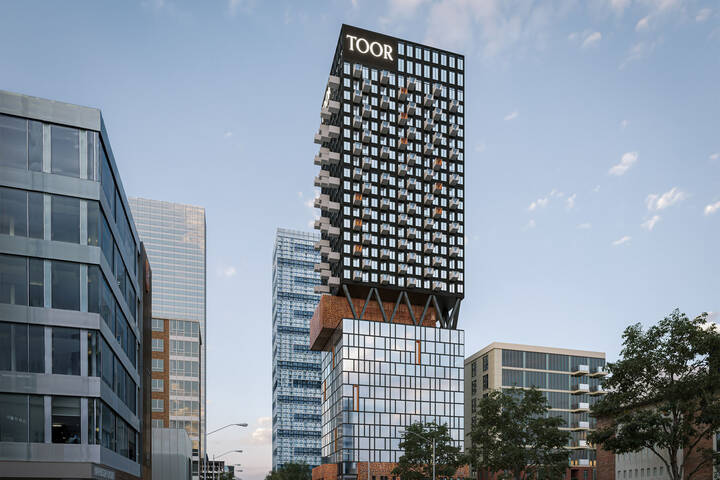
TOOR Hotel opening in Toronto this summer
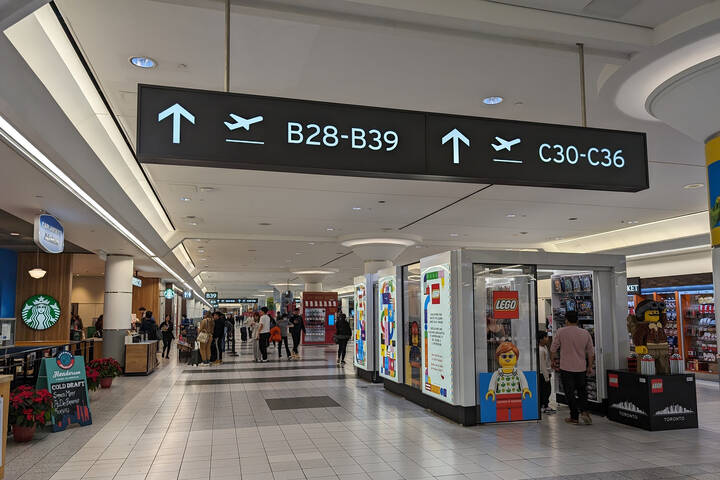
Shortest flight out of Toronto is so pointless that Google actually suggests a train
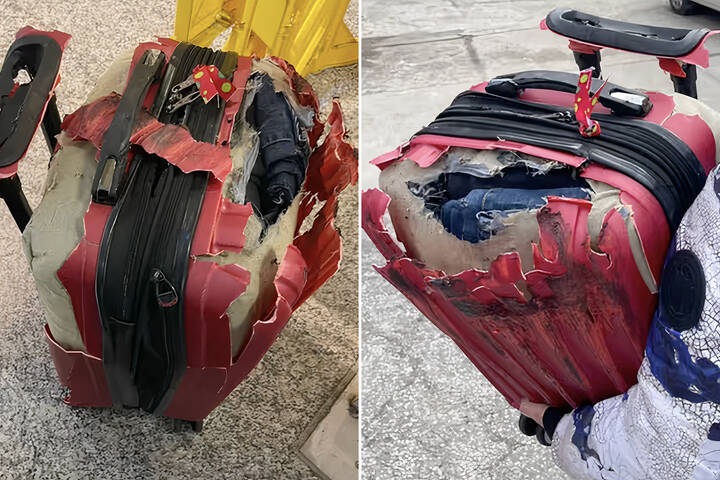
Woman alleges Air Canada completely 'chewed' her suitcase
A millennial Lyft driver who used the gig to explore all 50 states explains his strategies for maximizing earnings and tips
- Kreskin J. Torres, a Lyft driver, has traveled across all 50 states, documenting his dining experiences.
- Torres is working on a book, an app called Rideshare Foodies, and is organizing a national potluck.
- He said gig driving is just temporary and has helped him achieve his larger goals.

Kreskin J. Torres, 35, has eaten his way through all 50 states — including Alaska and Hawaii. His ticket to doing so? Driving for Uber and Lyft .
The Army veteran and Baltimore native has documented his dining on his blog Rideshare Foodie . After seven years, he's learned the most profitable times of day to drive, the best locations to find riders in each city and the optimal strategies for maximizing tips .
"You just got to work smarter, not harder," Torres said. "From my experience, I've been in every state, so I know how every city works now."
At the same time, he's been able to pursue his foodie passions. Torres is now working on a book called "Taste of the States," his recommendations app called Rideshare Foodies, and planning a series of events to honor dishes from various states and their history.
While driving for ride-hailing services like Uber and Lyft can be a flexible way to earn money for people like Torres who have more than one hustle, it can also be a recipe for burnout. Among the dozens of drivers Business Insider has spoken with over the past few months, many are already dreaming of what's next — starting a business or finding new modes of employment .
And that's Torres' main career advice for those considering it. After all, he's not planning to do the job forever, as he hopes to transition away, though it helped him jump-start new paths for his future.
"Do not make this the end all be all," Torres said, noting how Uber and Lyft have threatened to pull out of Minneapolis. "When it started, it was advertised as a gig, a side hustle."
Traveling the country as a gig driver
As a veteran, he said this job has been relatively stress-free and helpful for not feeling lonely, a similar sentiment he's heard from veterans with PTSD.
"I enjoy meeting and connecting with different people and getting to see different places," Torres said.
He decided to spend his next few years on the road using driving to fund his adventures and to meet locals who could point him to the best restaurants and experiences.
"The great thing is you get to learn about different cities and how everything operates," Torres said.
Related stories
He moved to San Antonio , though he works mainly around the more-profitable Austin area, and has explored the South and Southeast.
While he doesn't make much money from his blog, he said driving has allowed him to try everything from Navajo tacos in Arizona to biscuits in chocolate gravy in Arkansas to huckleberry swirls in Montana. Driving has led him to some of his favorite restaurants like I693 Red Zone Grill in Jackson, Mississippi; Strawberry's BBQ in Holcomb, Missouri; and Rice & Roll by Xing Xing in Wichita.
Learning the most profitable places and times to drive
Torres noticed he would get more profitable rides driving around suburbs, airports, and sports stadiums, locations coveted by drivers as they get more tips and sometimes elevated fares.
He learned New Year's will always be profitable , though rides slow down around February before picking up in mid-March. It's led him to be more methodical about the types of rides to take, as well as planning when to save more of his earnings and when to splurge a little on food and travel.
"After seven years, I'm a lot more experienced. It depends on the time of the season, so I usually can do a lot more business in college towns," Torres said. "I would visit a city, see what they're known for, a little history behind it."
Torres was making enough to comfortably travel the country, though he's always been careful since he said passengers are sometimes confused by his out-of-state license plate. He also faced a permanent deactivation from Uber last year over a dispute over the color of his car.
He doesn't have a wife or kids, nor does he have an apartment, as he mainly lives out of his car to save money. He acknowledges that growing competition on the road and lower earnings could put a greater dent in savings for people with families or permanent residences.
Torres has transitioned to driving full-time for Lyft , and he typically is online for 12 hours a day but only actively drives five to six hours in between waiting around airports.
He said he's increasingly put himself in his passengers' shoes to determine the best places and times to drive — he likely won't put in the effort to drive during rain, and he's more likely to do later trips around concert venues or bars.
To continue supporting his travels, he said he sometimes does airport rides at 3 or 4 a.m., as well as rides between 6:30 a.m. and 10 a.m. during the morning rush. He also said being online around noon is fruitful for corporate workers, while 3 p.m. is right when schools let out. He usually tries not to drive around evening rush hours but sometimes resumes later at night.
He also devotes more time to driving between Wednesday and Sunday, when rides are more frequent, whether for "whiskey Wednesdays" or Friday afternoon happy hours. This is also when he can best network with passengers and hear their stories, as he said he occasionally gets to drive famous people.
Torres said drivers should consider this a short-term opportunity while working toward long-term goals. As he eases off the app, he has his eyes set on more international travel in the coming months. He's also investing more time in his food app, a local recommendation tool that functions like a Facebook group in which people ask questions about, for example, the best bartender in the area or where to go for particular dishes. It has launched on Android and set to be released on Apple by the summer.
"The most positivity that you can get out of it, do whatever you can and get the most out of it," Torres said. "The next few months will probably be my last time doing this because I'm focusing on other things, so I always had a plan for the things I was going to do."
Are you a ride-hailing driver who's struggling to pay bills or has had recent success? Have you recently pivoted to a new career from driving? Reach out to [email protected] .
Watch: How 'Grand Theft Auto' actually works, according to a former car thief
- Main content
- Share full article
Advertisement
Supported by
Automatic Refunds and No More Hidden Fees: D.O.T. Sets New Rules for Airlines
The Transportation Department issued new requirements on refunds when flights are canceled or delayed and on revealing “junk” fees before booking. Here’s what passengers can expect.

By Christine Chung
The Transportation Department on Wednesday announced new rules taking aim at two of the most difficult and annoying issues in air travel: obtaining refunds and encountering surprise fees late in the booking process.
“Passengers deserve to know upfront what costs they are facing and should get their money back when an airline owes them — without having to ask,” said U.S. Transportation Secretary Pete Buttigieg in a statement, adding that the changes would not only save passengers “time and money,” but also prevent headaches.
The department’s new rules, Mr. Buttigieg said, will hold airlines to clear and consistent standards when they cancel, delay or substantially change flights, and require automatic refunds to be issued within weeks. They will also require them to reveal all fees before a ticket is purchased.
Airlines for America , a trade group representing the country’s largest air carriers, said in a statement that its airlines “abide by and frequently exceed” D.O.T. consumer protection regulations.
Passenger advocates welcomed the new steps.
Tomasz Pawliszyn, the chief executive of AirHelp, a Berlin-based company that assists passengers with airline claims, called it a “massive step forward and huge improvement in consumer rights and protection” that brings the United States closer to global standards in passenger rights.
Here’s what we know about the D.O.T.’s new rules, which will begin to go into effect in October.
There’s now one definition for a “significant” delay.
Until now, airlines have been allowed to set their own definition for a “significant” delay and compensation has varied by carrier . Now, according to the D.O.T., there will be one standard: when departure or arrival is delayed by three hours for domestic flights and six hours for international flights.
Passengers will get prompt refunds for cancellations or significant changes for flights and delayed bags, for any reason.
When things go wrong, getting compensation from an airline has often required establishing a cumbersome paper trail or spending untold hours on the phone. Under the new rules, refunds will be automatic, without passengers having to request them. Refunds will be made in full, excepting the value of any transportation already used. Airlines and ticket agents must provide refunds in the original form of payment, whether by cash, credit card or airline miles. Refunds are due within seven days for credit card purchases and within 20 days for other payments.
Passengers with other flight disruptions, such as being downgraded to a lower service class, are also entitled to refunds.
The list of significant changes for which passengers can get their money back also includes: departure or arrival from an airport different from the one booked; connections at different airports or flights on planes that are less accessible to a person with a disability; an increase in the number of scheduled connections. Also, passengers who pay for services like Wi-Fi or seat selection that are then unavailable will be refunded any fees.
Airlines must give travel vouchers or credits to ticketed passengers unable to fly because of government restrictions or a doctor’s orders.
The vouchers or credits will be transferable and can be used for at least five years after the date they were issued.
Fees for checked baggage and modifying a reservation must be disclosed upfront.
Airlines and ticket agents are now required to display any extra fees for things like checking bags or seat selection clearly and individually before a ticket purchase. They will also need to outline the airline’s policies on baggage, cancellations and changing flights before a customer purchases a ticket.
The rules, which apply to all flights on domestic airlines and flights to and from the United States operated by foreign airlines, have varying start dates.
For example, automatic refunds must be instituted by the airlines within six months. But carriers have a year before they’re required to issue travel vouchers and credits for passengers advised by a medical professional not to fly.
Follow New York Times Travel on Instagram and sign up for our weekly Travel Dispatch newsletter to get expert tips on traveling smarter and inspiration for your next vacation. Dreaming up a future getaway or just armchair traveling? Check out our 52 Places to Go in 2024 .
Christine Chung is a Times reporter covering airlines and consumer travel. More about Christine Chung
Open Up Your World
Considering a trip, or just some armchair traveling here are some ideas..
52 Places: Why do we travel? For food, culture, adventure, natural beauty? Our 2024 list has all those elements, and more .
Mumbai: Spend 36 hours in this fast-changing Indian city by exploring ancient caves, catching a concert in a former textile mill and feasting on mangoes.
Kyoto: The Japanese city’s dry gardens offer spots for quiet contemplation in an increasingly overtouristed destination.
Iceland: The country markets itself as a destination to see the northern lights. But they can be elusive, as one writer recently found .
Texas: Canoeing the Rio Grande near Big Bend National Park can be magical. But as the river dries, it’s getting harder to find where a boat will actually float .

IMAGES
VIDEO
COMMENTS
Read on how we planned on Kitakyushu itinerary to Mojiko, Kokura, and Shimonoseki within one day. A day trip from Fukuoka that full of mouthwatering food, historical monuments, and fun experience. Kitakyushu (北九州) is located in the northernmost city in Kyushu. It was formed by the merging of five independent cities, namely, Kokura, Moji ...
1-day itinerary. With only 1 day to squeeze in as much activities as you can, we strategically grouped the must-sees, Mojiko Retro and Kaikyo Plaza with surrounding point of interests to make sure you don't leave Kitakyushu without getting the most bang for your time. Combining the average time spent at each location and traveling time in ...
Kokura Station (小倉駅 Kokura-eki) in Kokura Kita ward is the main railway station in Kitakyushu, Japan. It is part of the JR Kyushu network and the Sanyo Shinkansen stops here. It is the second largest station in Kyushu with 120,000 users daily. In the late 1990s, the Kokura station area was expanded and remodelled.
Get your taiko on! Kitakyushu is the northernmost city on Japan's Kyushu Island. Kokura Castle is surrounded by Katsuyama Park, known for its spring cherry blossoms. Riverwalk Kitakyushu is a shopping mall by the Murasaki River. Northeast, Moji Port Retro Area has 1900s buildings, like the red-brick Moji Customs Building and striped Old ...
Capturing the Best of Kitakyushu. The Kitakyushu Monorail allows you to explore the city with ease. By Helen A. Langford-Matsui. October 13, 2023 Updated On October 12, 2023. Since days of old, Kitakyushu has been considered the gateway to Kyushu, the third-largest of Japan's five main islands. It makes sense, then, that your exploration ...
Kyushu is served by local and express trains connecting all major cities, including Kitakyushu, Kumamoto, and Beppu, with Kokura Station being the main train hub transit point between Kyushu and the main island of Honshu. The Limited Express Sonic train will take you to all major stations and is covered by the Japan Rail Pass.
Kitakyushu (北九州, Kitakyūshū, lit. "North Kyushu") is the northernmost city of Kyushu and has been an important hub for both land and marine traffic since olden times. It is the gateway between Honshu and Kyushu, as well as an important port for international trade. The city was formed in 1963 with the merger of five independent cities ...
The gateway to Kyushu, Kitakyushu lies on the northernmost coast and has long been a hub for international and domestic trade. Hit this city for beautiful coastal views, historic buildings and exceedingly fresh seafood. 9:20 am - Arrival in Kyushu. Get an early start by taking a 7:40am flight from Tokyo's Haneda Airport to Kitakyushu Airport.
Kitakyushu Travel Guide Photo by taka0043 on Pixabay // CC0 Introduction. Amalgamated from five different urban centres, Kitakyushu is known for being an industrial city. However, look closer and you'll find many reasons to give this place a day or two.
Exploring Kitakyushu: A Comprehensive Travel Guide Introduction. Welcome to Kitakyushu, a vibrant city located in the Fukuoka Prefecture on the northern tip of Kyushu Island, Japan. With its rich history, stunning natural beauty, and a wide range of cultural attractions, Kitakyushu is a must-visit destination for any traveler. Whether you are ...
Kitakyushu lights up at dusk, seen from Mt. Sarakura. Kitakyushu provides some of the best night views in all of Japan. Reach the top of Mt. Sarakura by cable car and slope car for the best of the best. This mountaintop oasis puts you in natural surroundings but with a view of Greater Kitakyushu. Arrive as the sun begins to set into the sea and ...
Kitakyushu is about 40 minutes north of my house by train and is the 2nd largest city in Kyushu with just under 1 million inhabitants. The Kitakyushu City actually used to be comprised of several different cities and towns that were merged together as one city in the 1960's, so it is quite big and sprawling.
The castle keep offers fantastic panoramic views of Kitakyushu and the surrounding mountains. Don't miss: Don't miss the chance to take a guided tour of the castle with a knowledgeable guide who will share stories and facts about the historical significance of Kokura Castle. Insider travel tips: If you visit Kokura Castle during cherry blossom season, make sure to check out the nearby ...
Kitakyushu, the second-largest city in the southern region of Kyushu, is named after its position at the northernmost point of the region. The city was created in 1963 through a merger of five cities; Kokura, Tobata, Yahata, Wakamatsu and Moji. The unique history, traditions, and natural beauty of each city blend together to give Kitakyushu its ...
Kokura Castle. Kitakyushu is Fukuoka Prefecture's northernmost city, and its Kokura Station is the next stop after Hakata (Fukuoka) on the Shinkansen bullet train line. To the uninitiated, Kitakyushu might look like just another modern urban landscape, with its shopping malls, department stores, and energetic nightlife.
Address: 4-2-18 Uomachi, Kokurakita Ward, Kitakyushu, Fukuoka Prefecture 802-0006, Japan. Yufuin (由布院) From Kitakyushu, we proceeded to the quaint town of Yufuin through the Ltd Exp Sonic 33 train via Oita. Yufuin is a popular hot spring resort surrounded by Mount Yufu. The main street is lined with cafes, boutiques and small museums.
See ways to experience (2) 7. TOTO Museum. 74. Speciality Museums. TOTO Ltd. was founded in 1917.When sewage systems did not yet exist in Japan,the company began manufacturing flush toilets and other sanitary ware to promote public health and cultural lifestyles. Further advancement in plumbing equipment techology,products and service were ...
To the south of Kitakyushu, on the border with Oita Prefecture, is Mt. Hiko. Mt. Hiko is one of Kyushu's enjoyable hikes and is located about an hour's drive from the cities of Fukuoka and Kitakyushu. Hikosan, as it is called in Japanese, was the center of training for the Shugendo mountain asceticism, and is famous for Hikosan Jingu Shrine.
Inquiries of sightseeing in Kitakyushu … Kitakyushu City Tourist Information TEL/093-541-4189. Kitakyushu information dissemination strengthening Committee. Secretariat: Kitakyushu Convention and Visitors Bureau TEL/093-541-4151 FAX/093-541-4139
Address: Japan, 〒801-0852 Fukuoka, Kitakyushu, Moji Ward, Minatomachi, 9−2 阿波ビル2階左 ... Kampungboycitygal.com is a Malaysian Food and Travel blog. The "dynamic duo" has been blogging since December 2005 and now the blog generates more than 4,000 unique visitors and 8,000 page views a day and most of their travel posts have ...
It was 0800 upon arrival in Fukuoka. A bus took us from the airport at 0930 to Kitakyushu. We arrived at about 1110 on 24/7 at Kokura Station, Kitakyushu.JR Kyushu's Kokura Station is the main rail hub of Kitakyushu, and the Sanyo Shinkansen stops there. Our hotel, Royal Righa Hotel is about 5 minutes walk from Kokura Station.
Kitakyushu Travel Blogs, Photos from TravelBlog.org. Background: In 1603, a Tokugawa shogunate (military dictatorship) ushered in a long period of isolation from foreign influence in order to secure its power.For 250 years this policy enabled Japan to enjoy stability and a flowering of its indigenous culture.
It turns out you can travel quite a surprising distance, with the maximum direct voyage spanning 7,250 kilometres across eight countries, ending in one of the most remote regions on the planet ...
Kreskin J. Torres, 35, has eaten his way through all 50 states — including Alaska and Hawaii. His ticket to doing so? Driving for Uber and Lyft. The Army veteran and Baltimore native has ...
Anthony Guglielmi, the spokesman for the Secret Service in Washington, declined in a statement to discuss specific "protective operations." But he said that federal law requires Secret Service ...
The Transportation Department issued new requirements on refunds when flights are canceled or delayed and on revealing "junk" fees before booking. Here's what passengers can expect.